26-29 November 2022
We are headed from Sicily back to Rome, but it is a long drive, so we made an overnight stop in Vibo Valentia, which Bonnie selected randomly on the map, and another stop in temple-laden Paestum. Bonnie planned well.
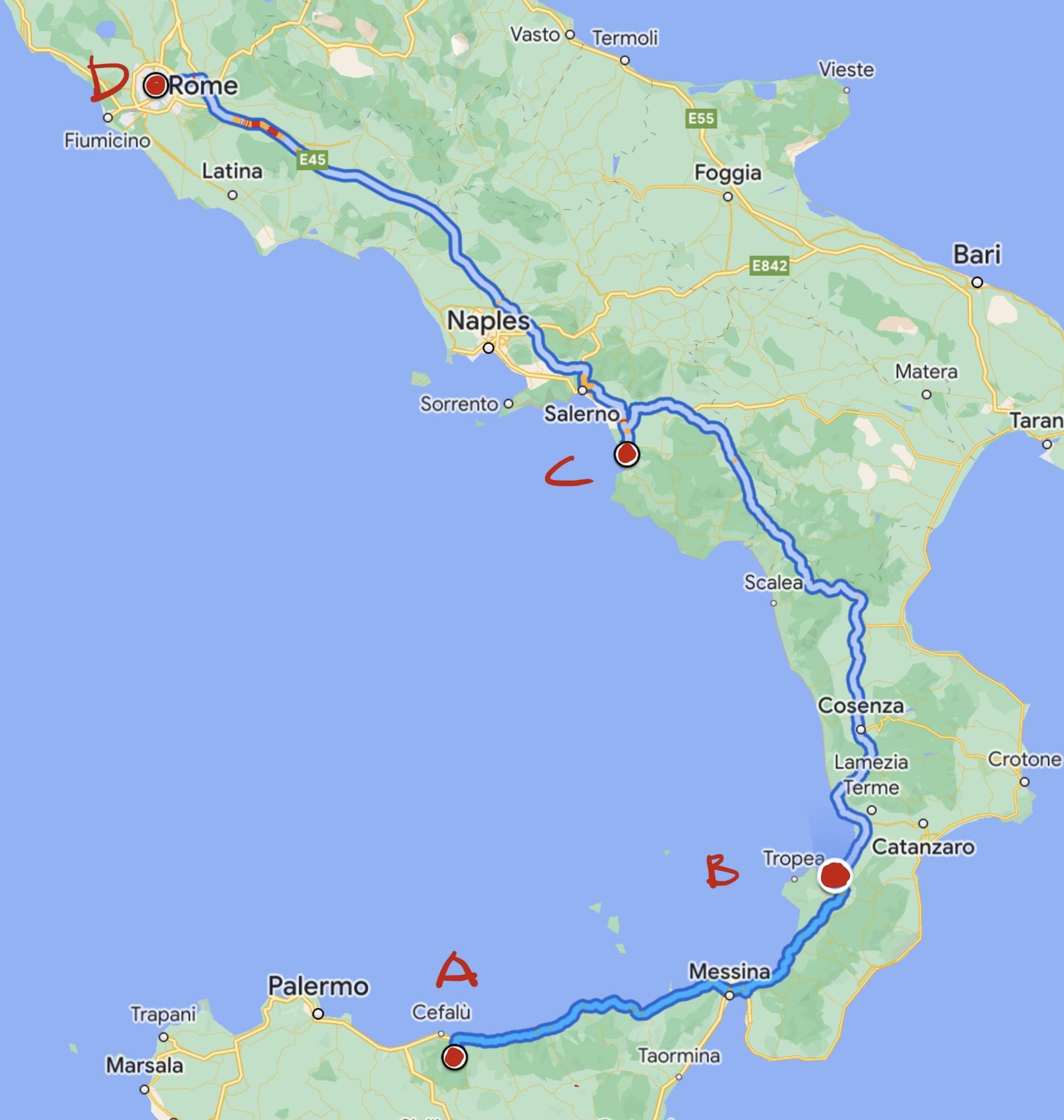
Each segment is about five hours including lunch other breaks. Approximately 860 km (560 mi) total.
Castelbuono to Vibo Valentia
Leaving Sicily for mainland Italy is bittersweet for us. Sicily is almost like another country, and we love it. The drive along the northern shore of Sicily to the ferry in Messina is one long stretch of tunnels through the mountains. In the quick gaps between tunnels you can see some of the islands out in the Tyrrhenian Sea. On another trip we want to explore them.
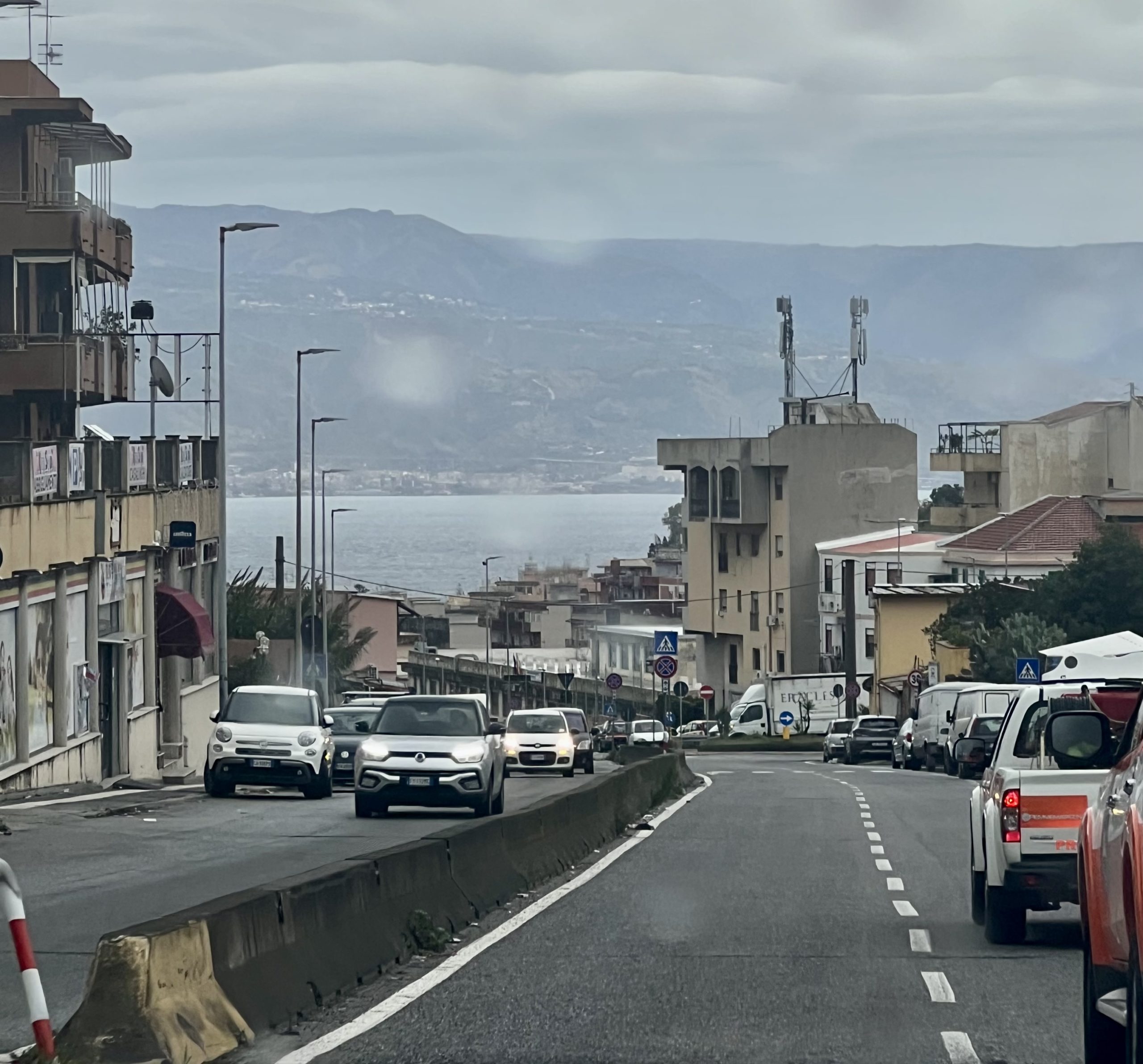
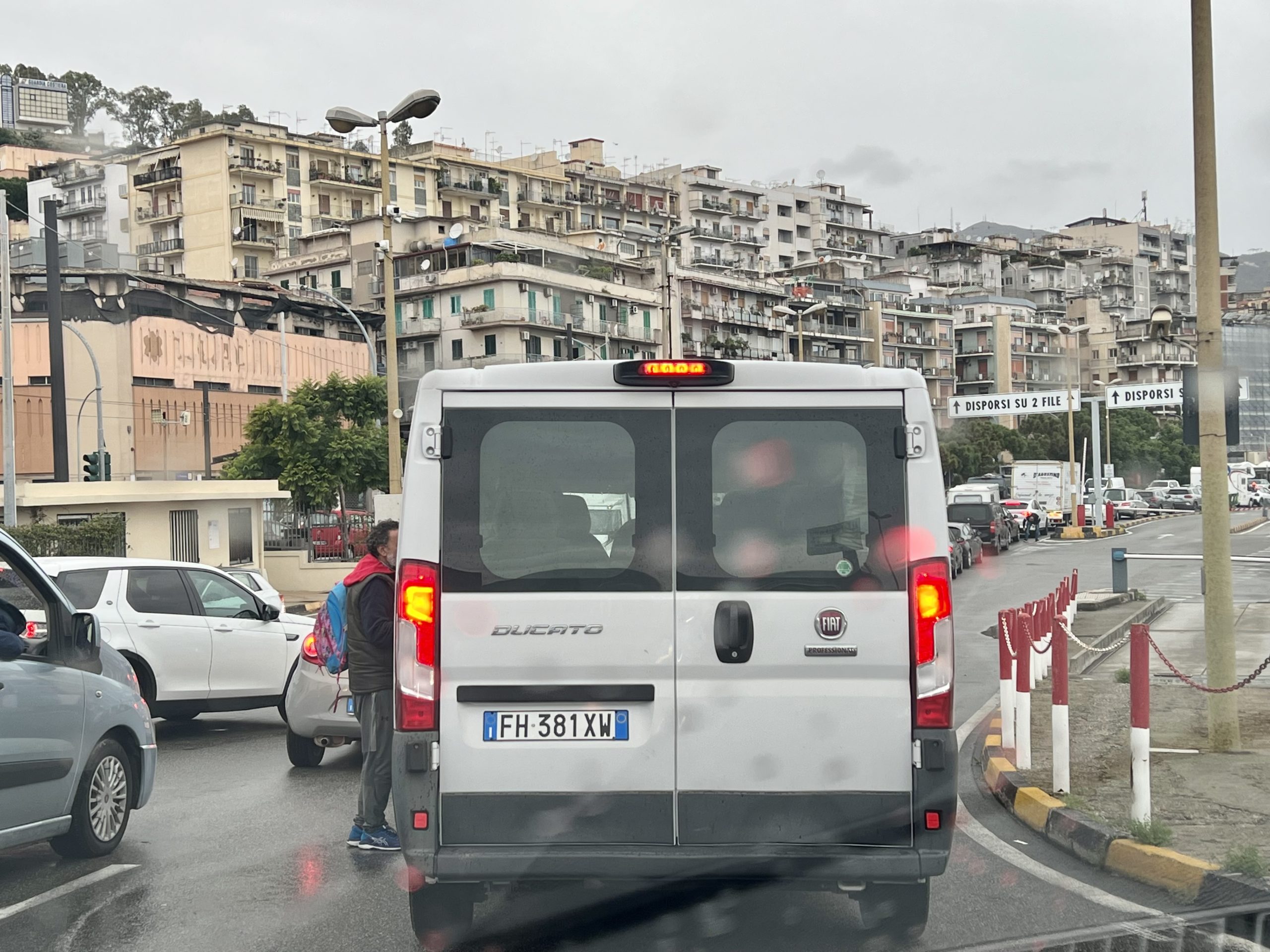
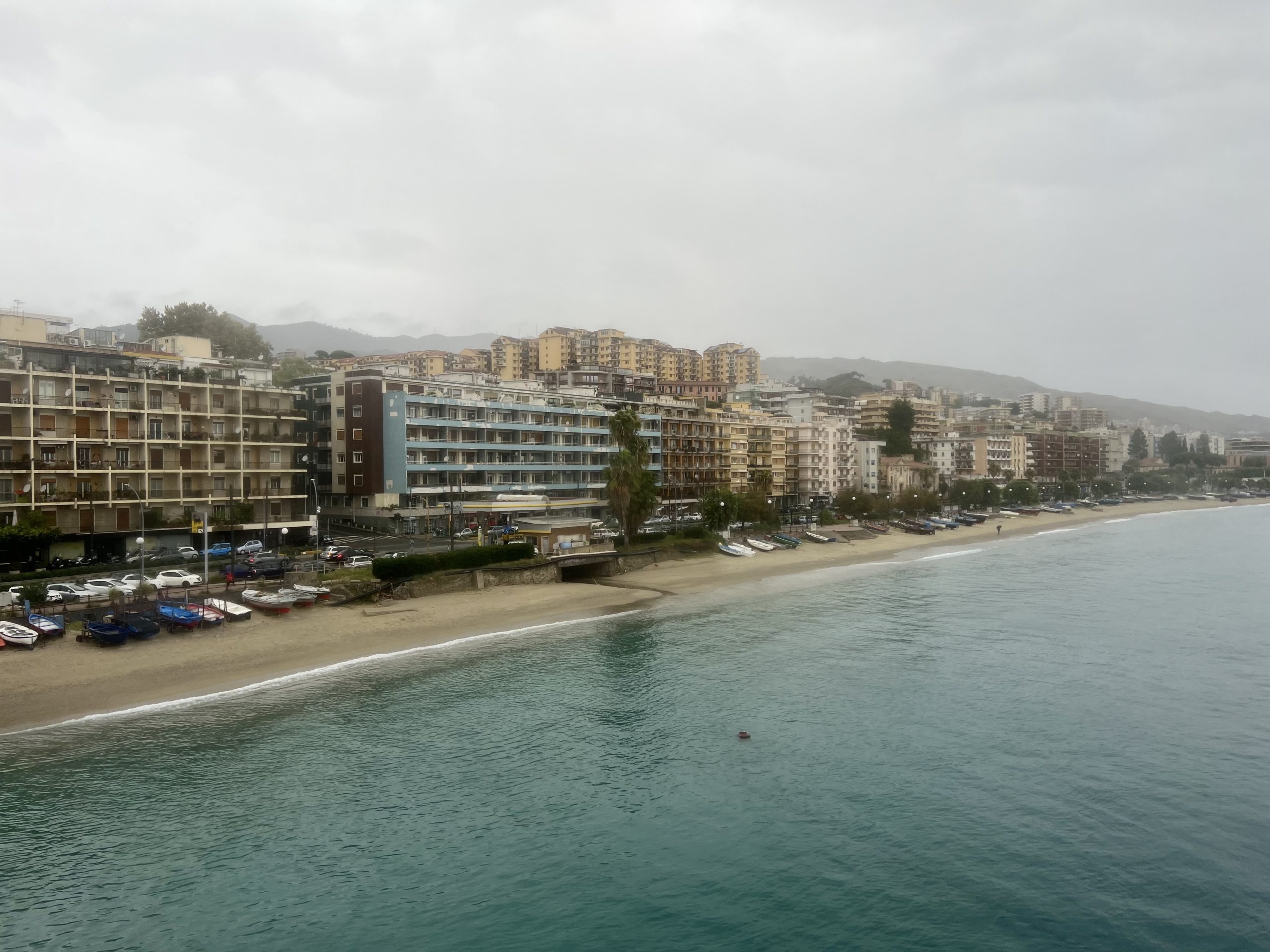
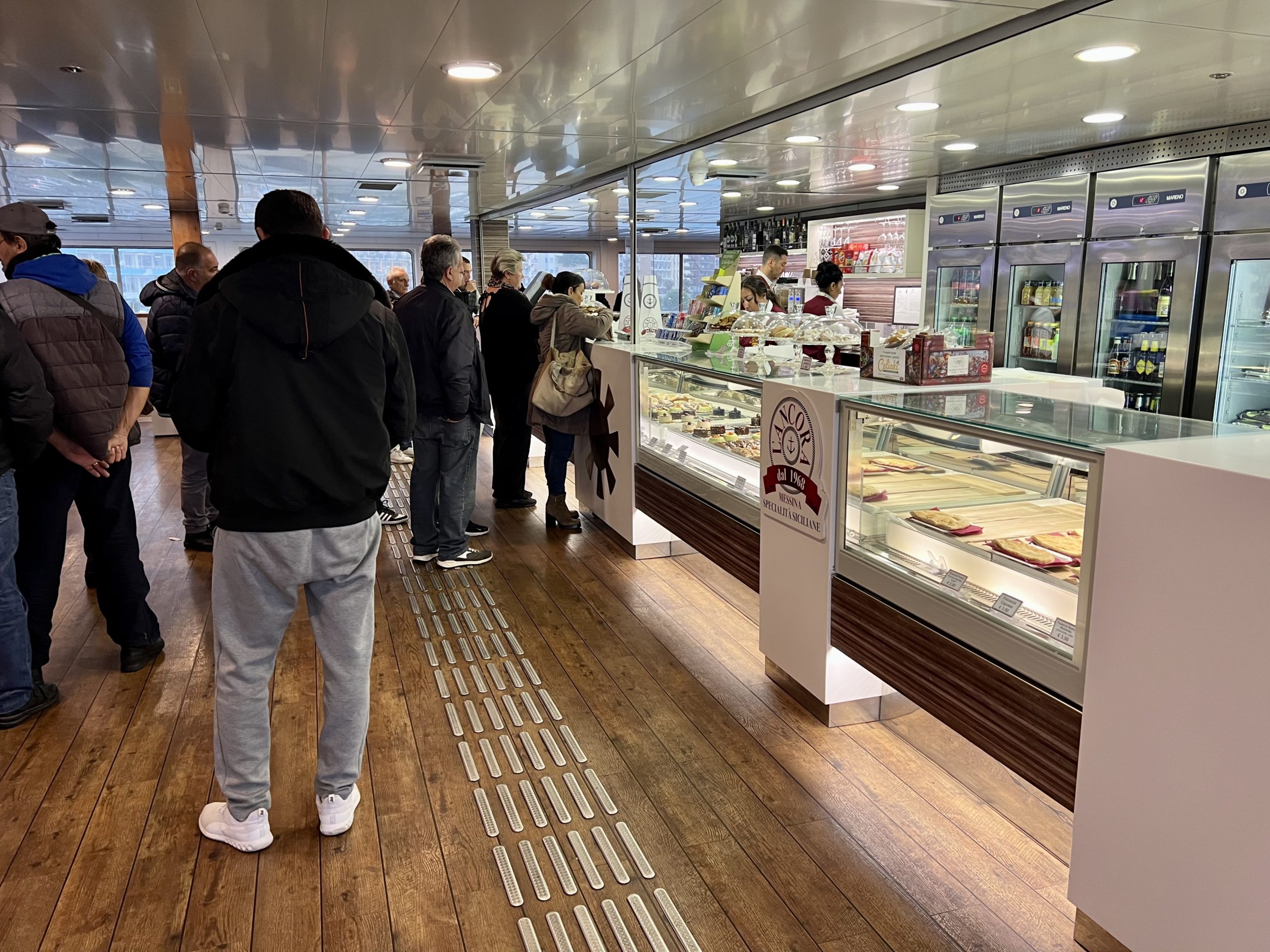
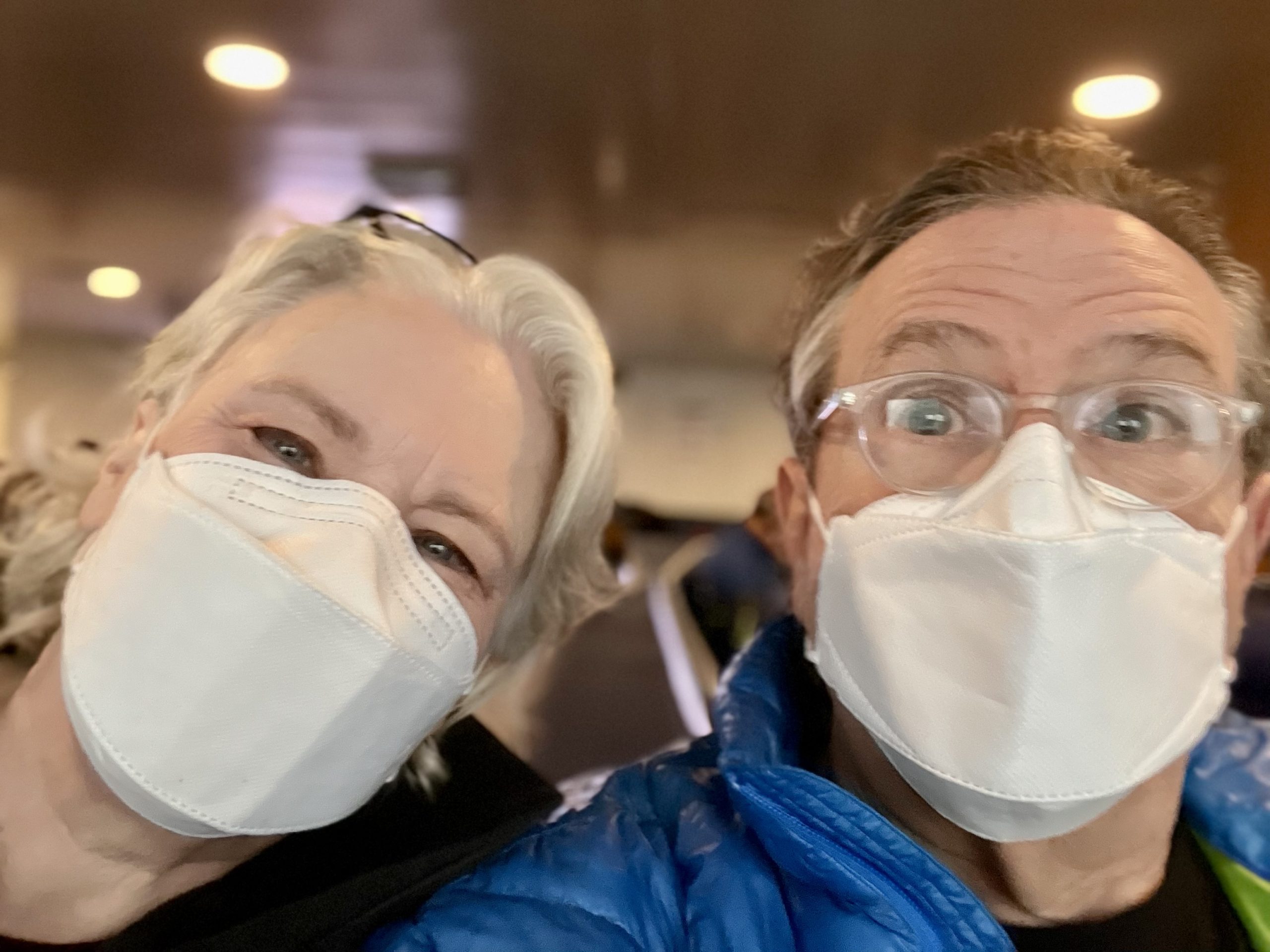
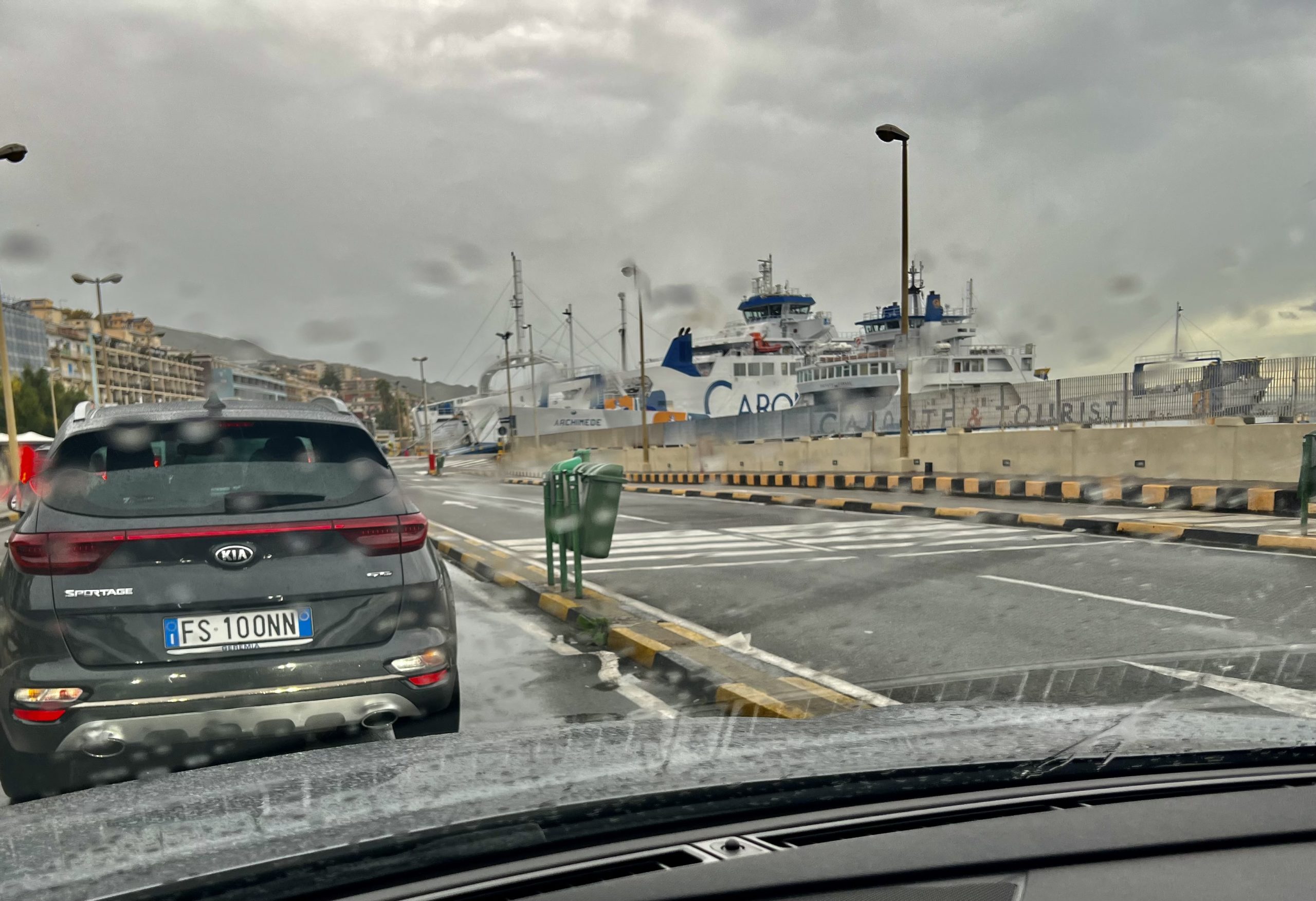
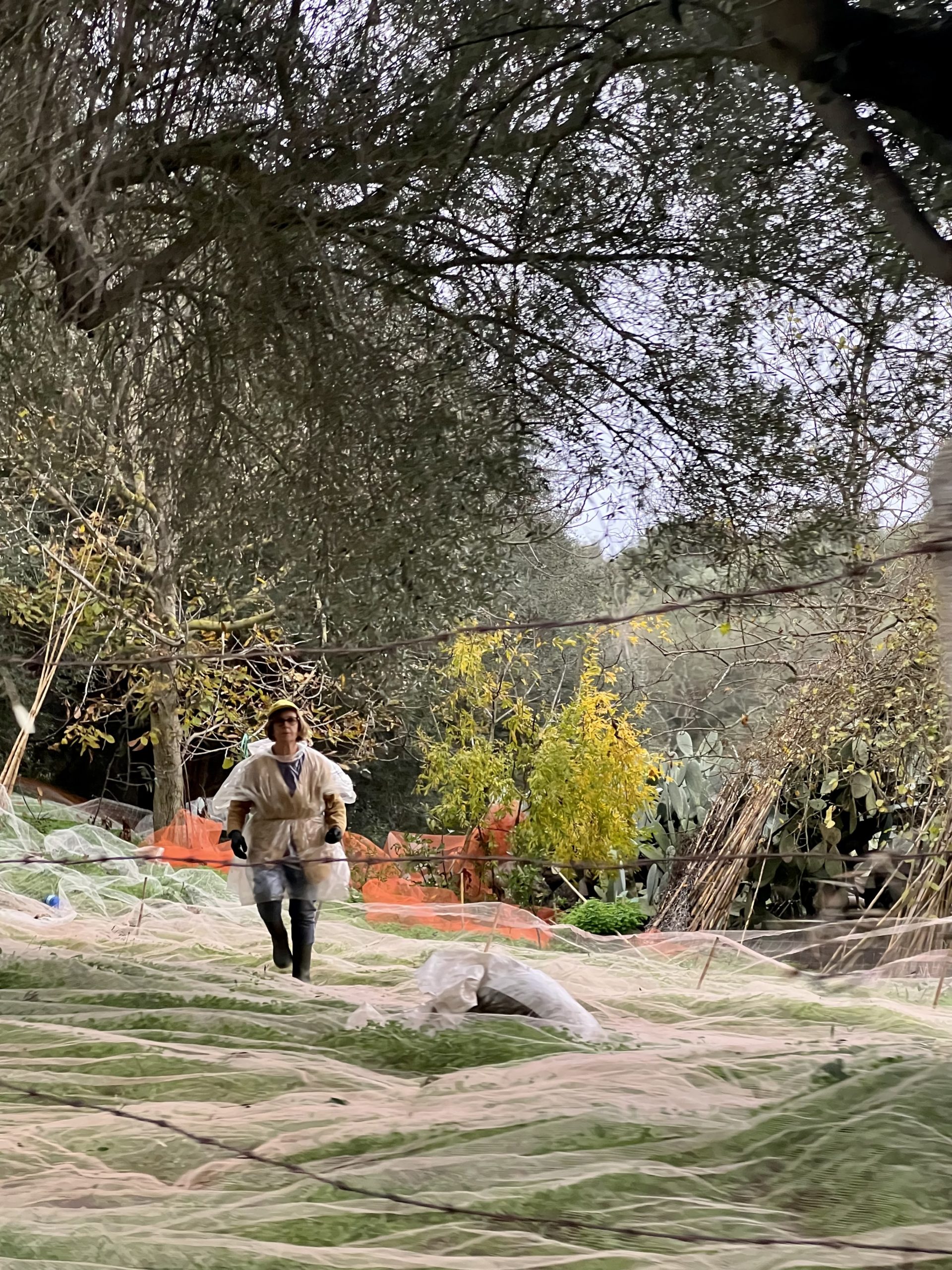
Lodging—Vibo Valentia
Vibo Valentia (pronounced Vivo Valensha) was a one-night stop on our way to Paestum. Beautiful family-run bed and breakfast with a stunning view. Gracious hosts with an incredible spread for breakfast, most of it prepared by the mom. Robert handed out our holiday buttons to the other guests—a Calabrese family of four.
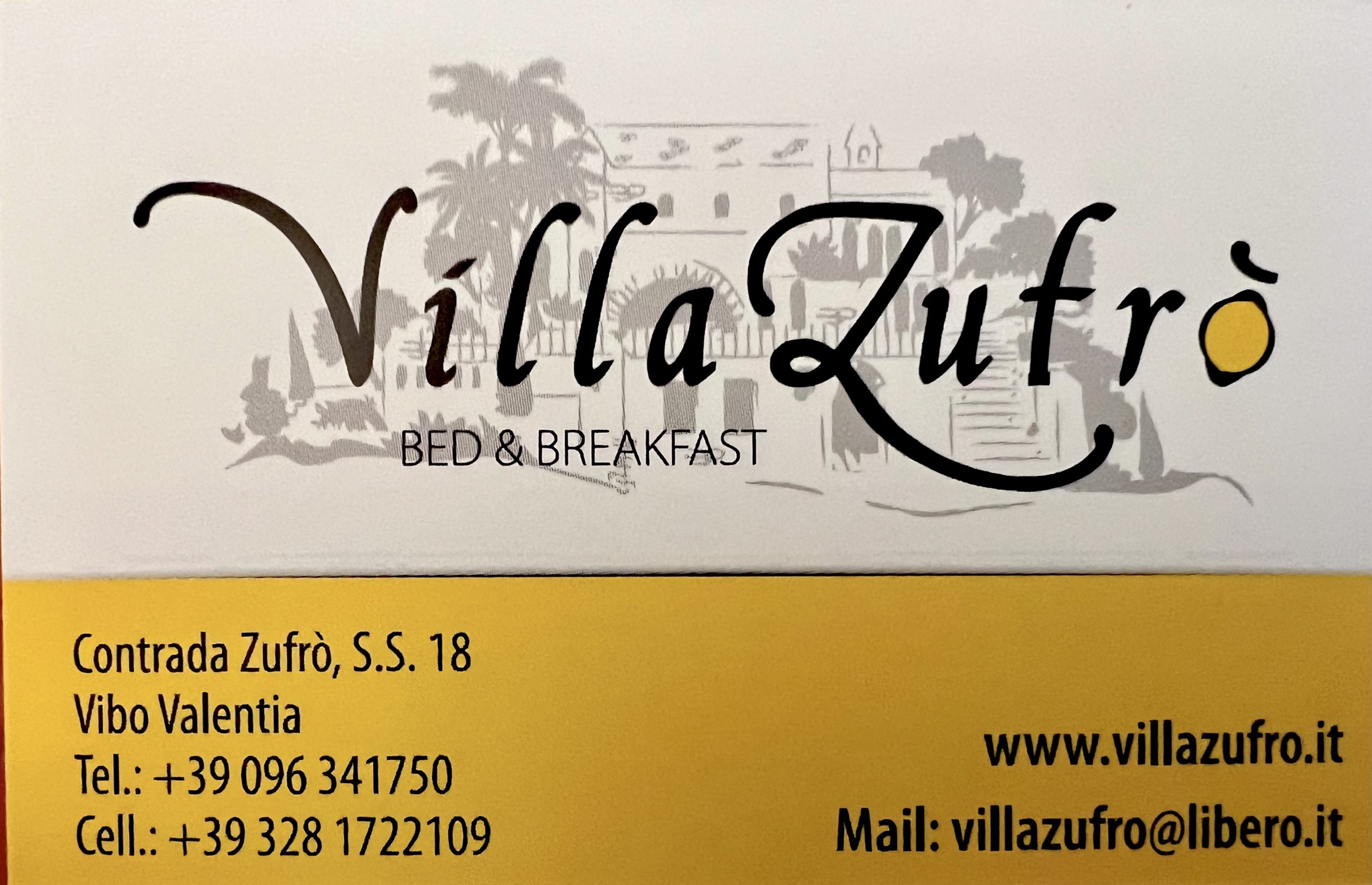
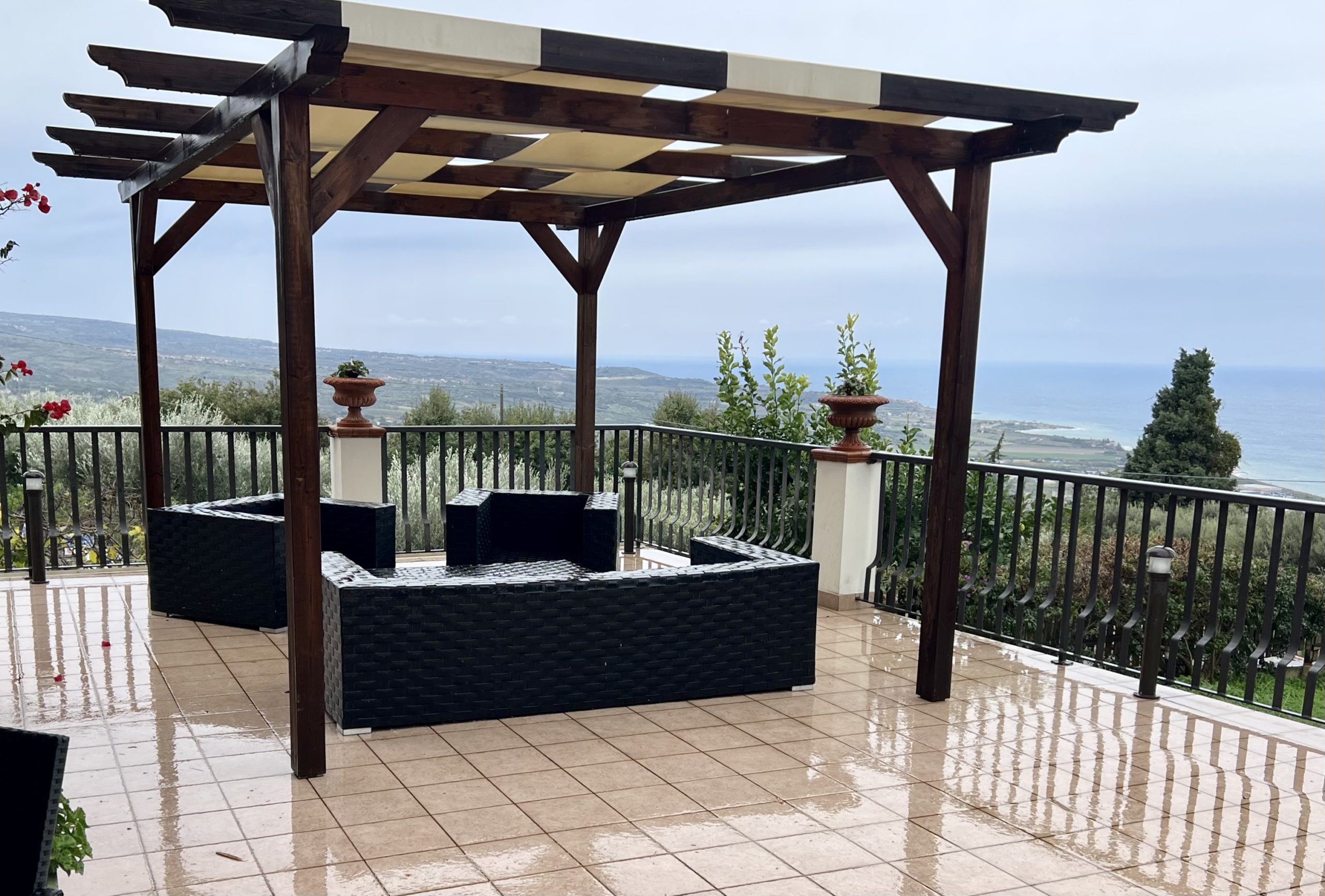
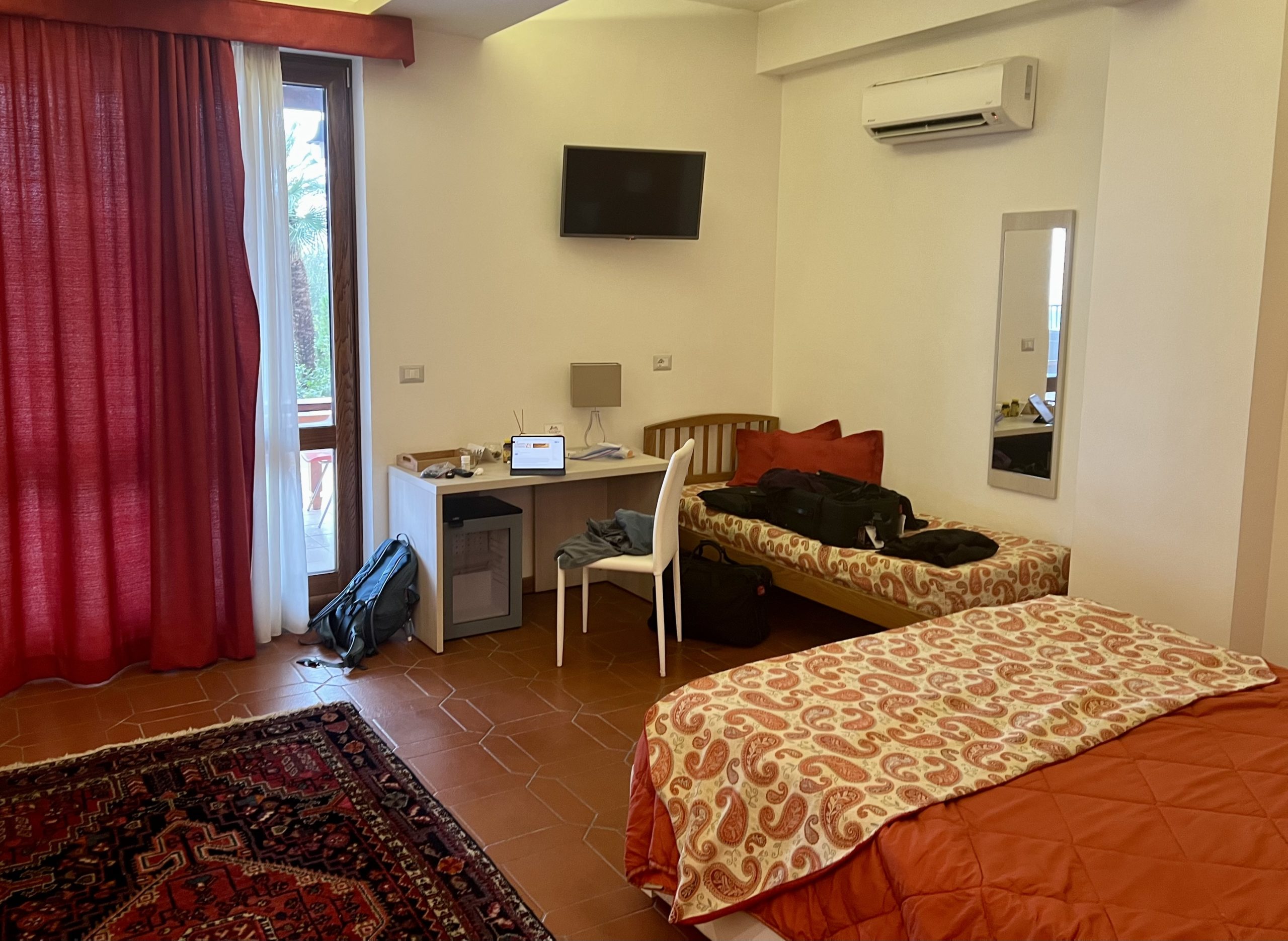
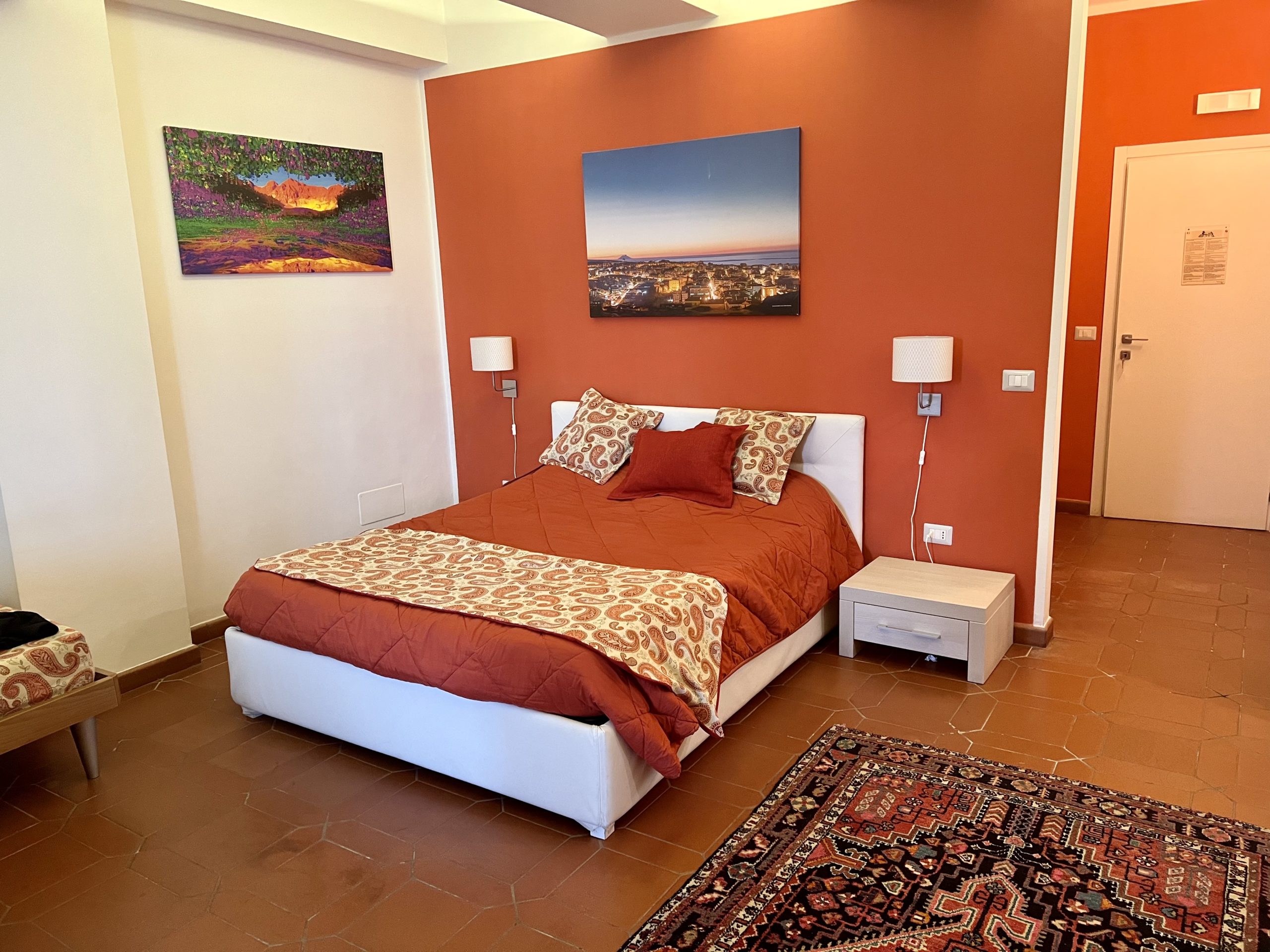
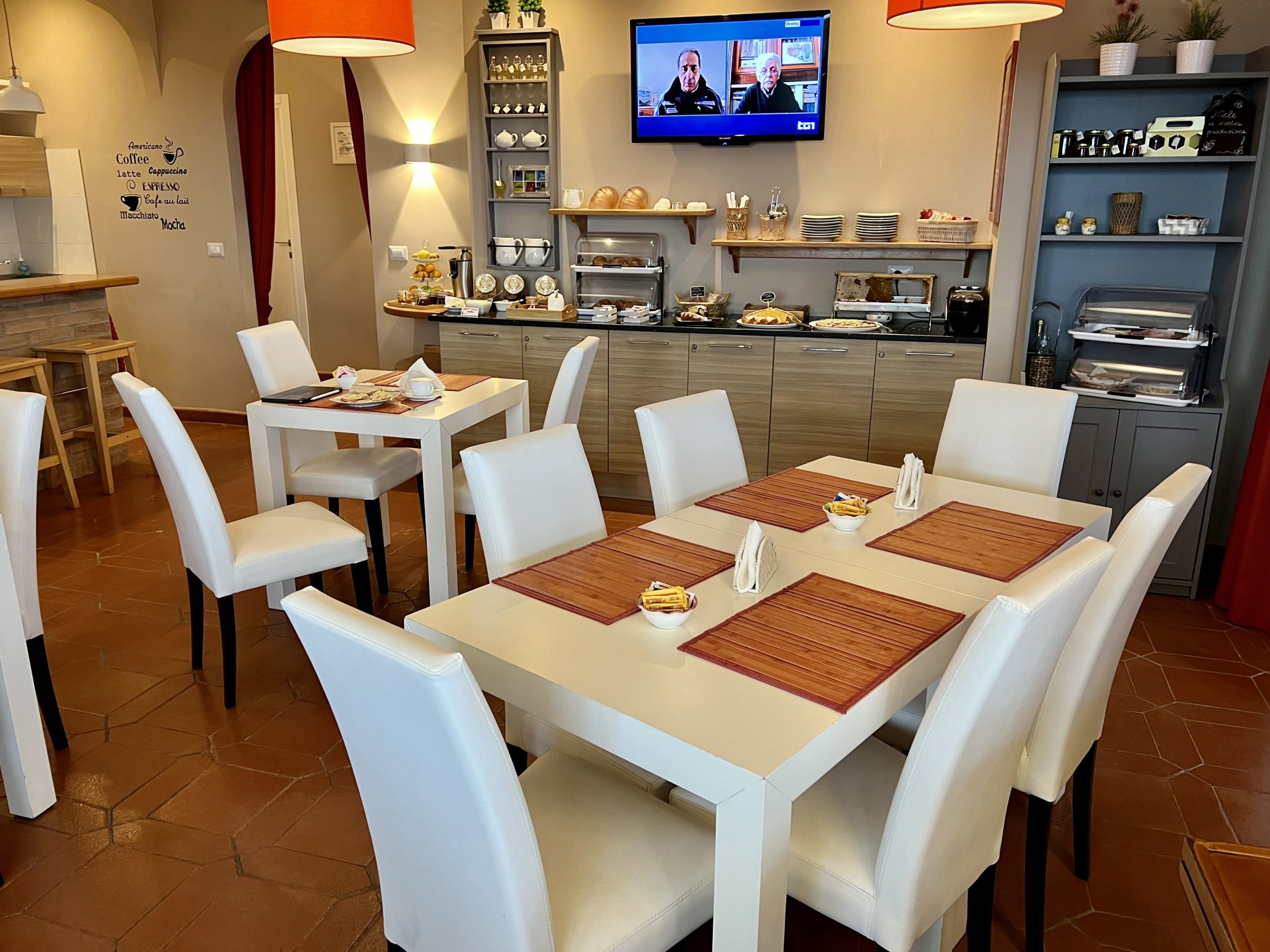
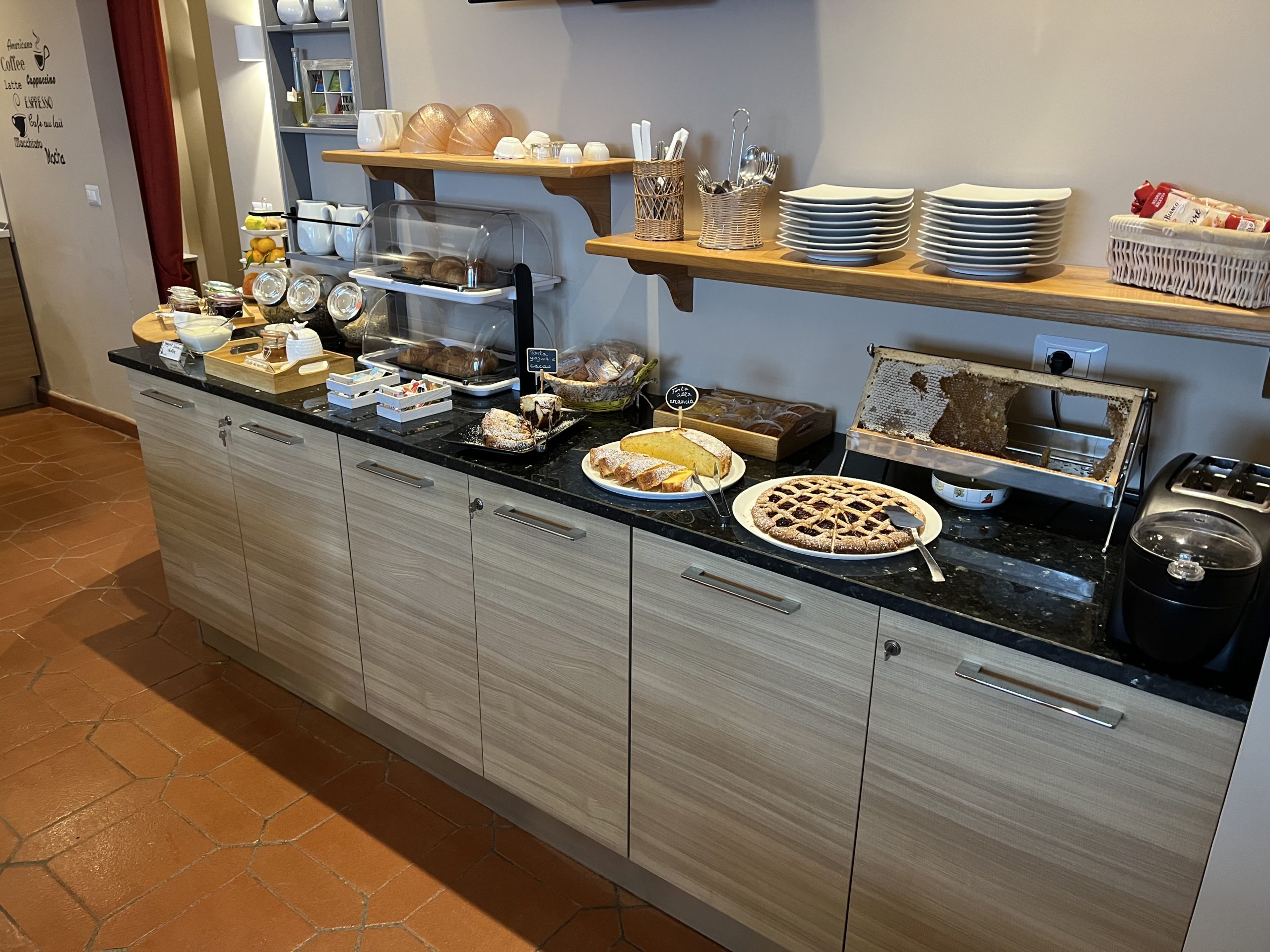
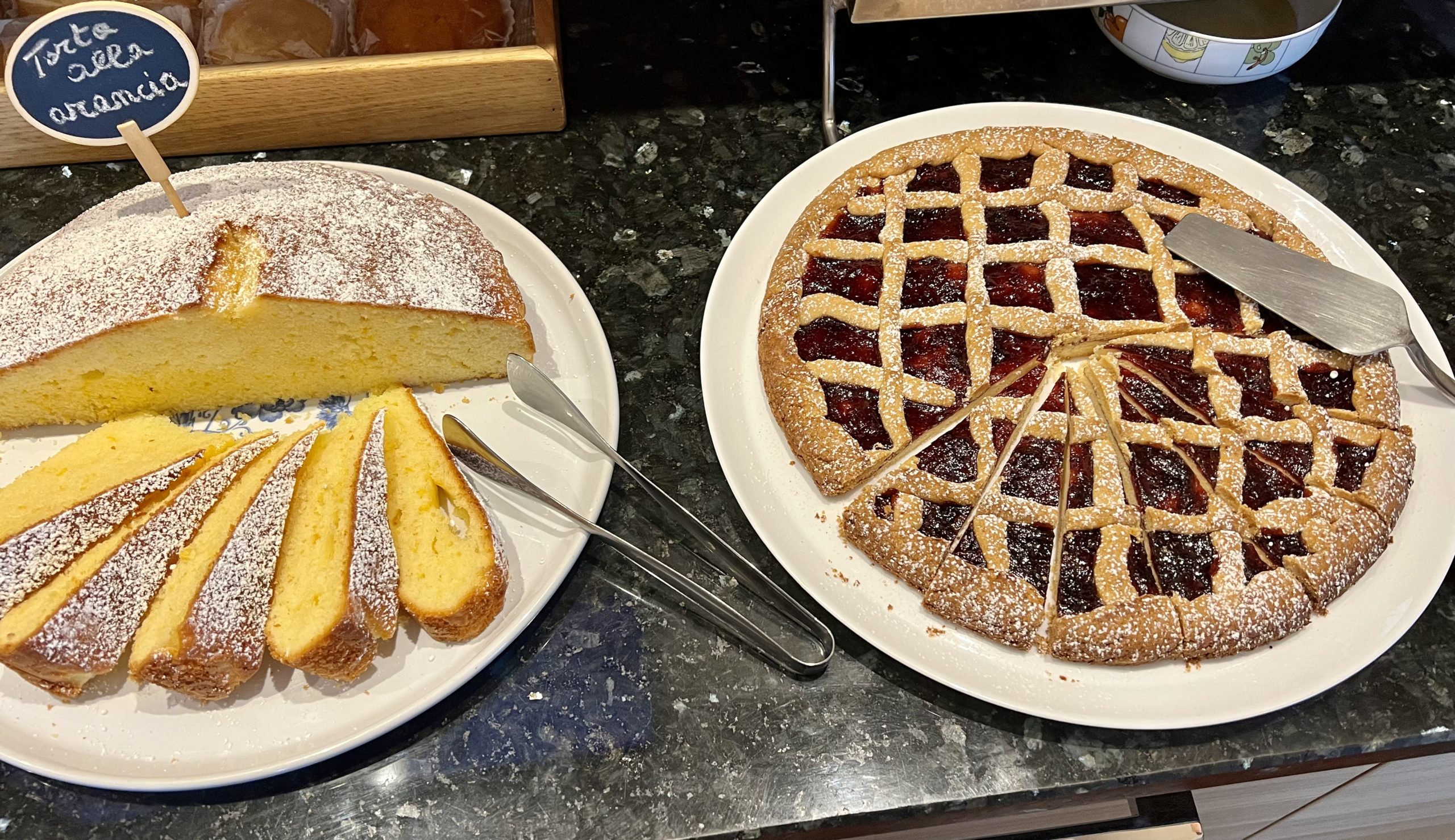
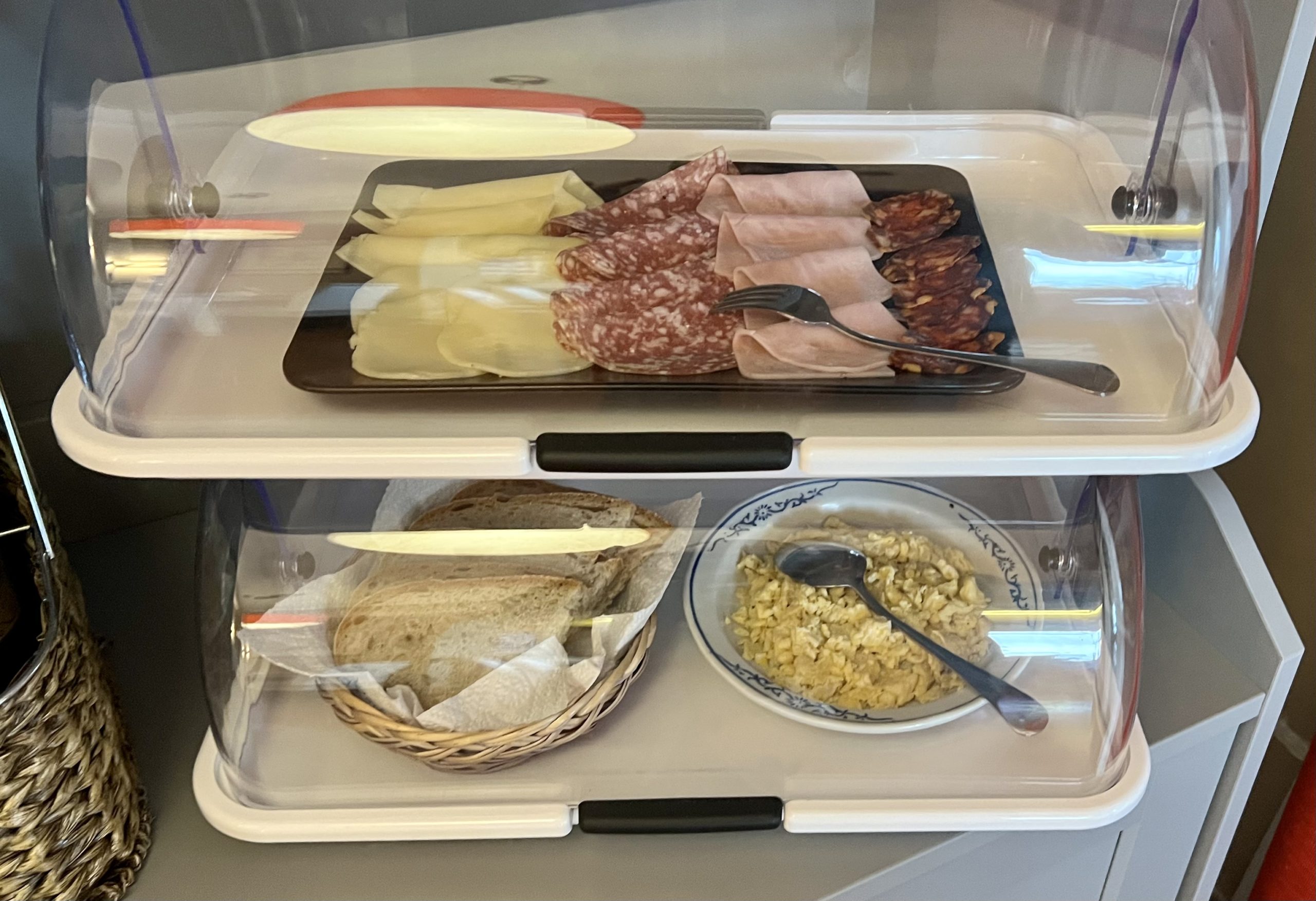
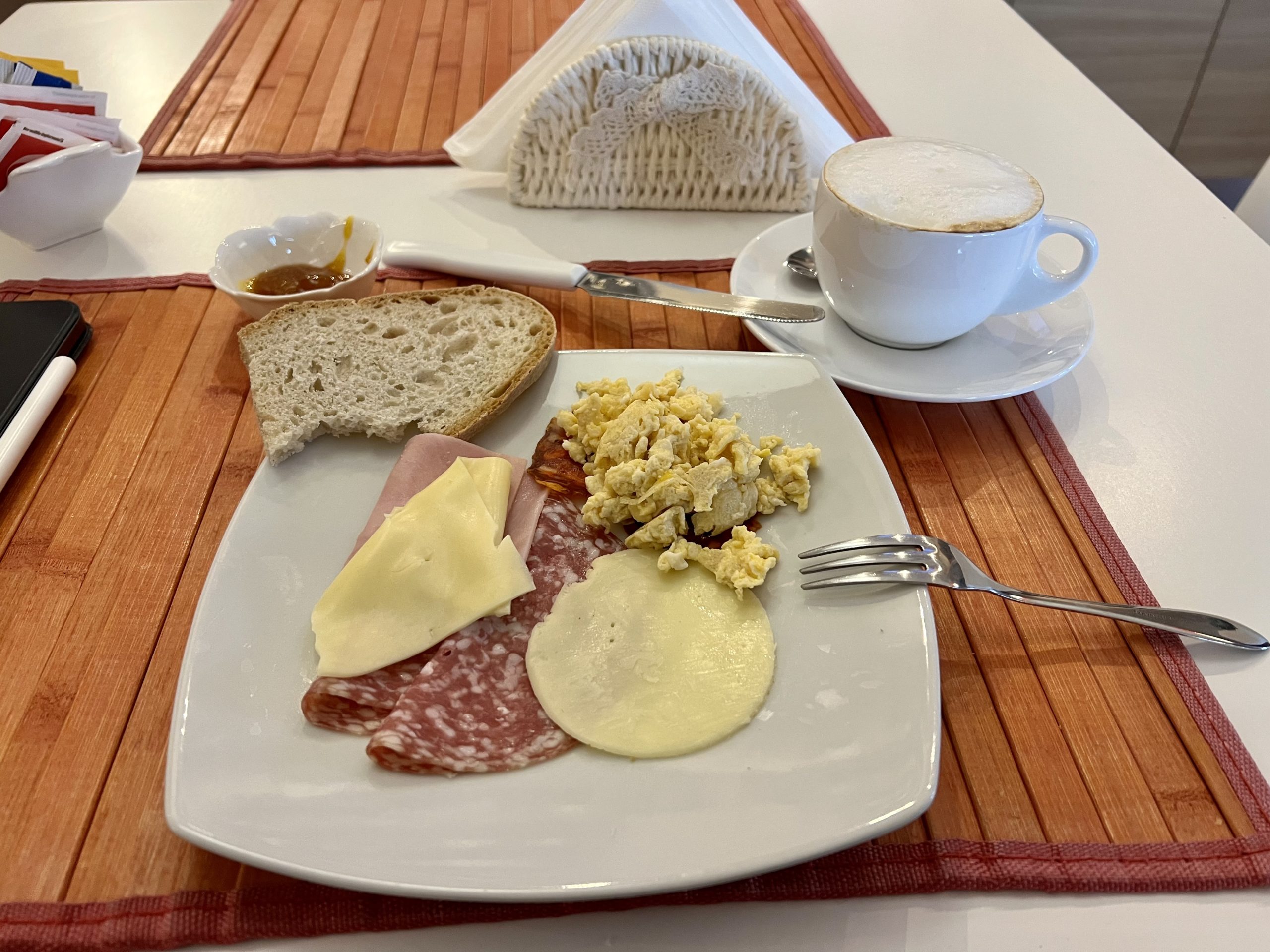
Cen—Vibo Valentia
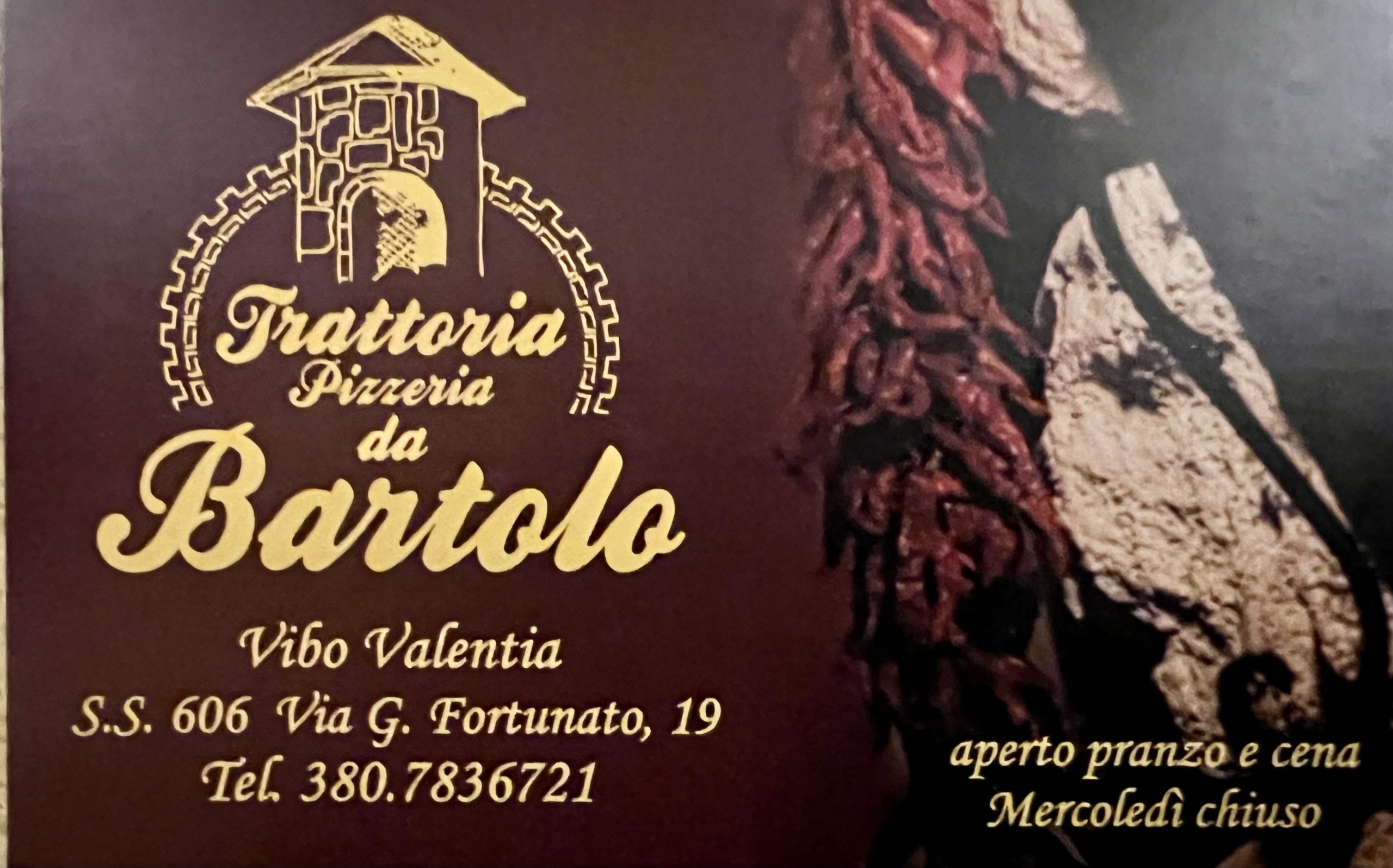
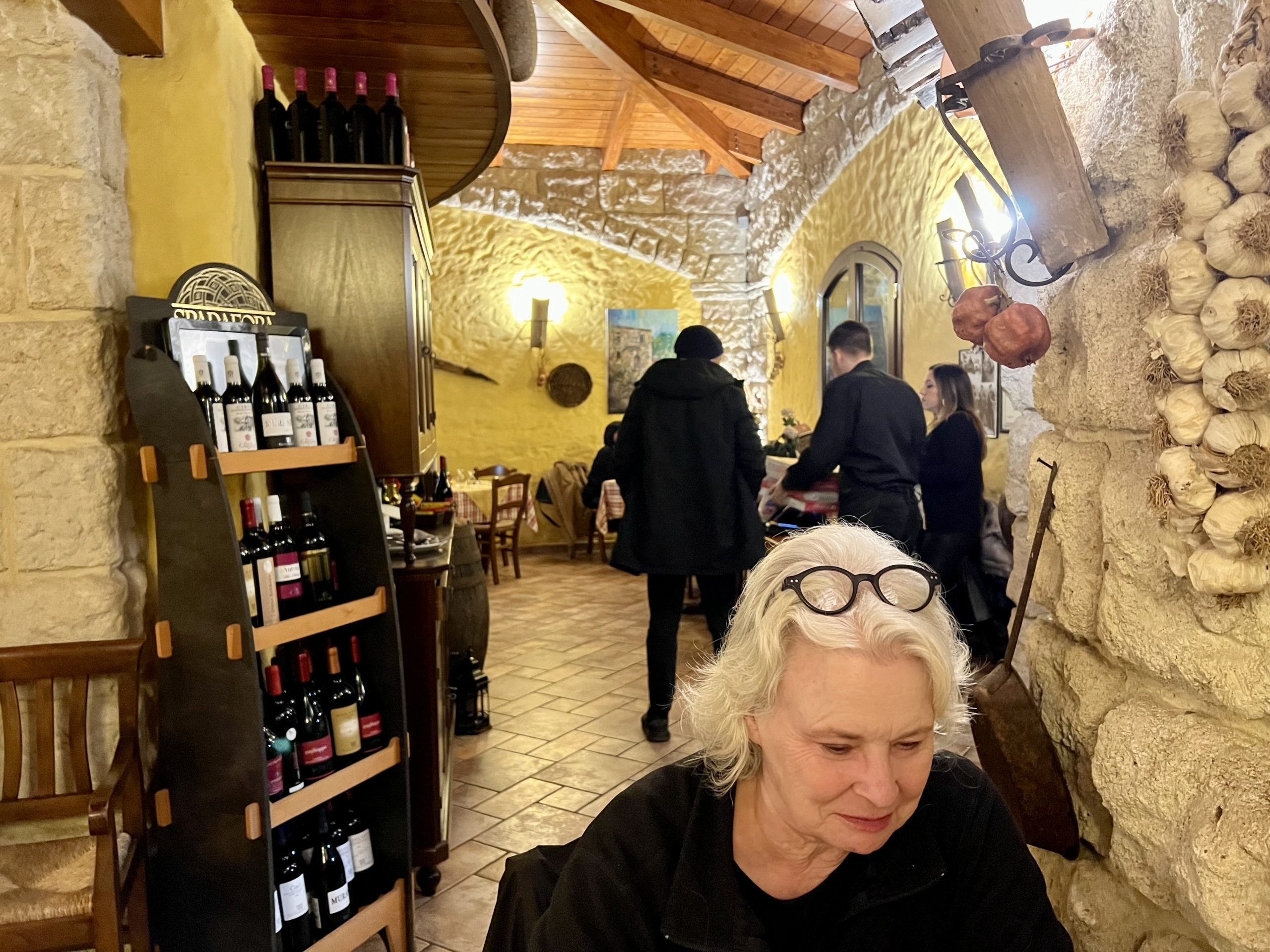

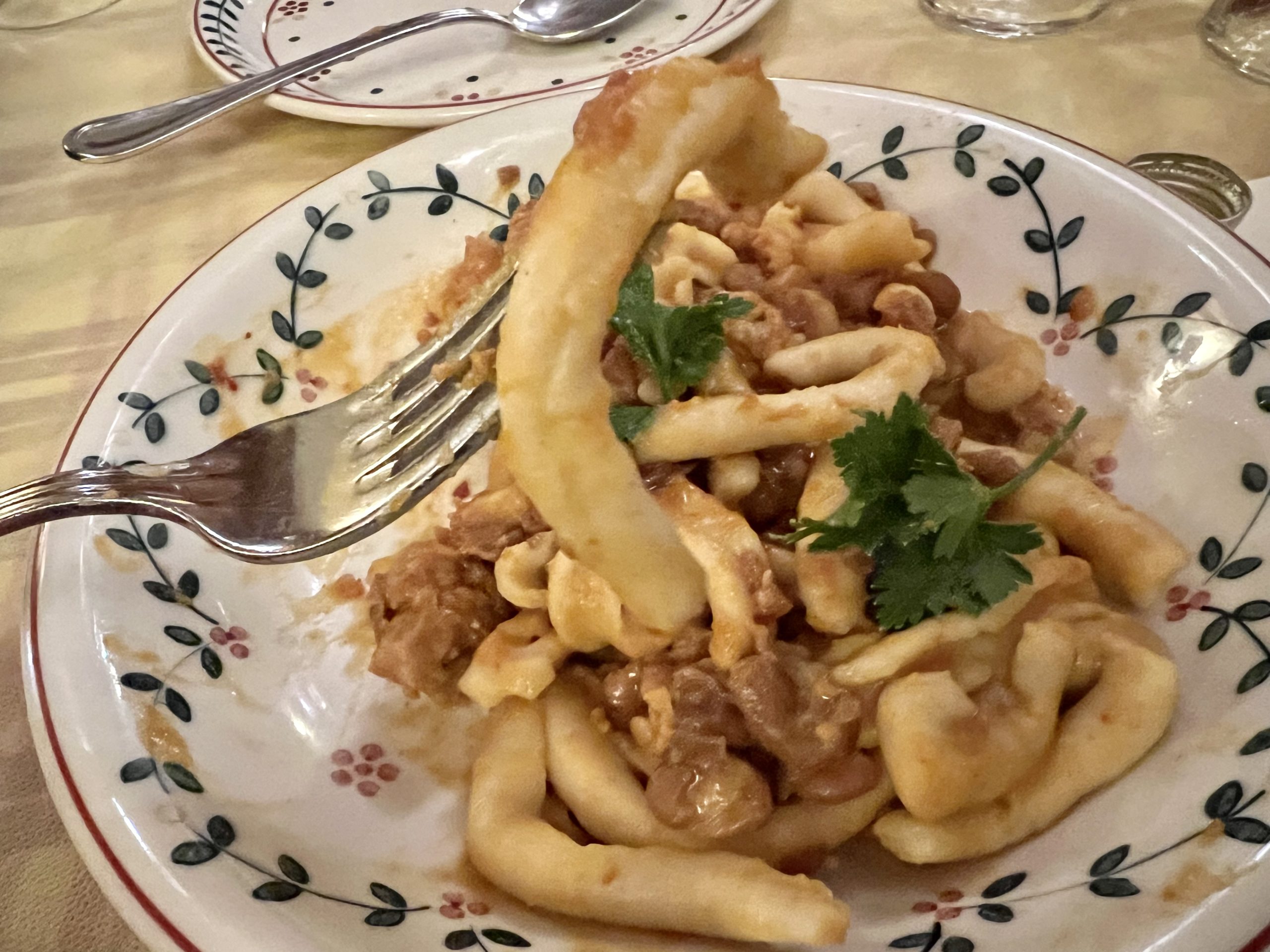
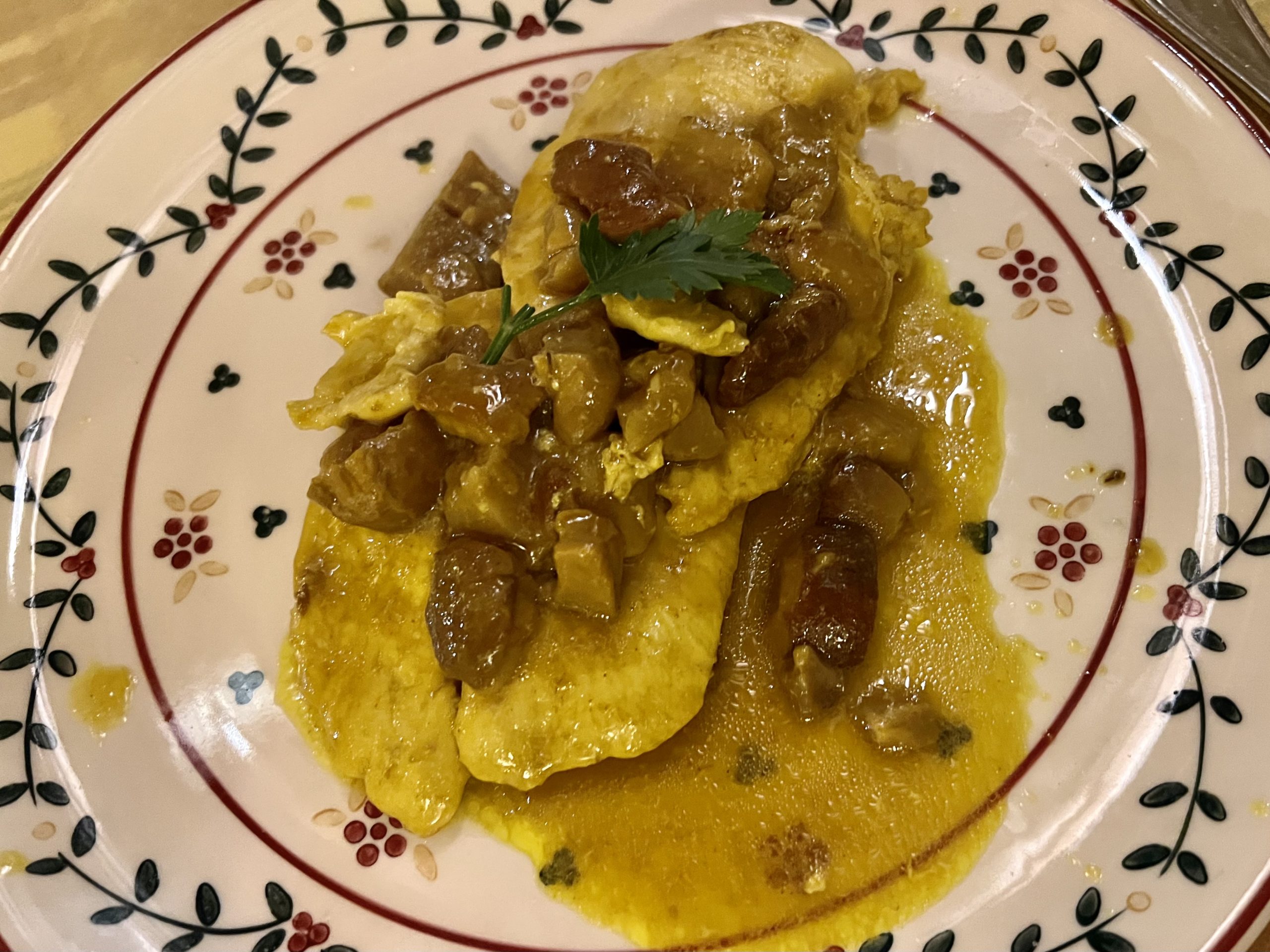
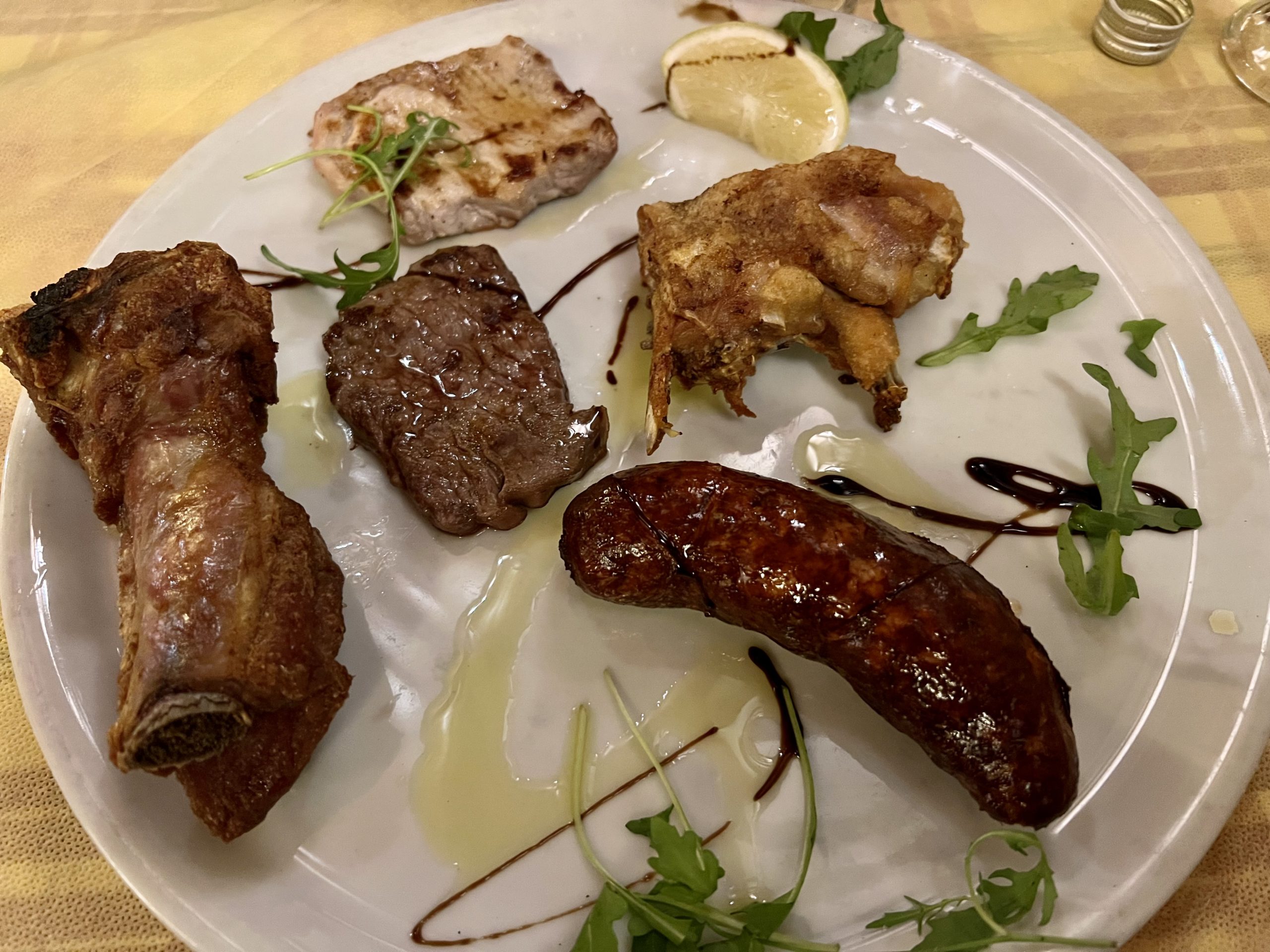


On the road to Paestum
Part of the Apennine Mountain chain in Calabria.
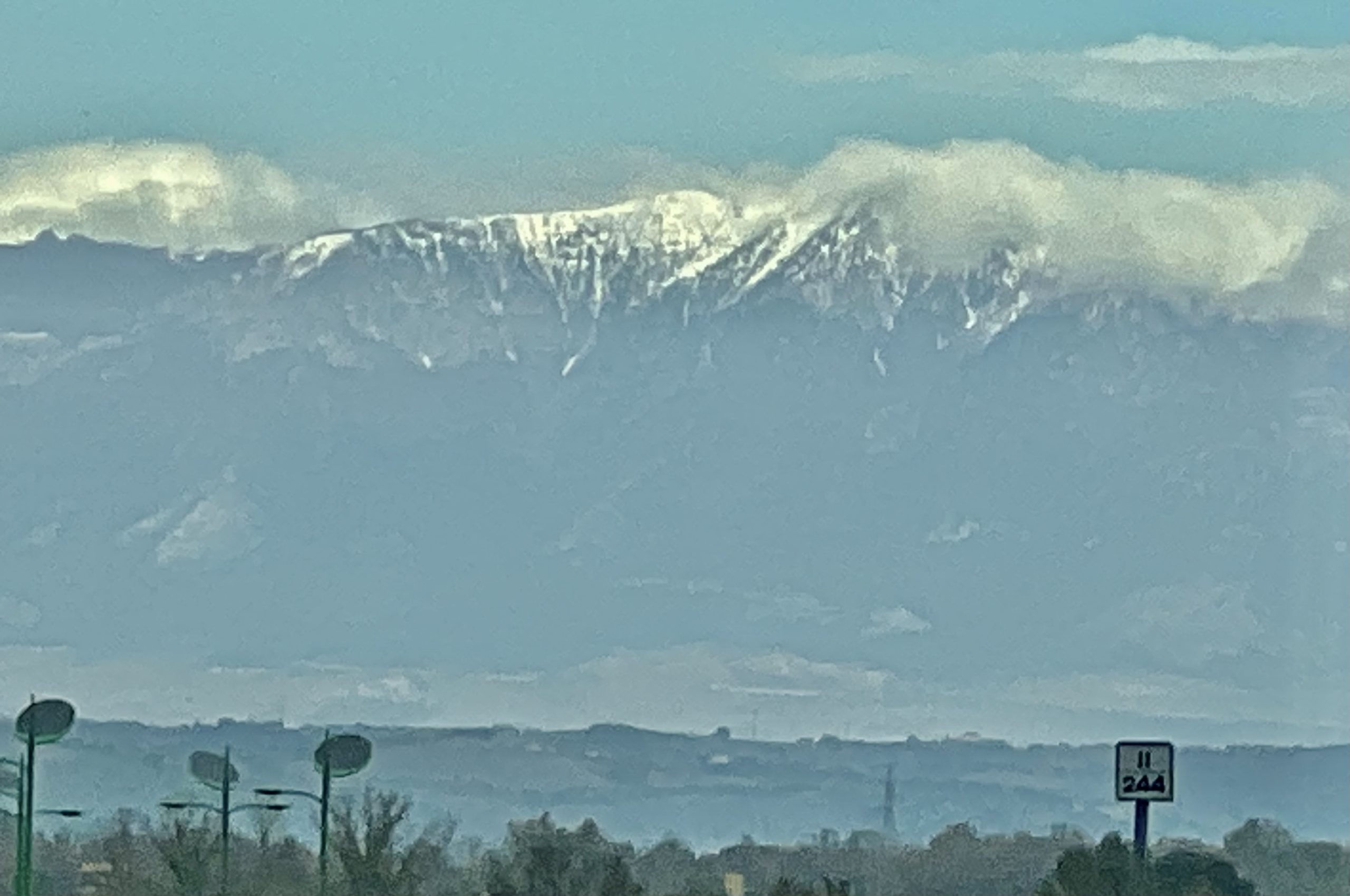
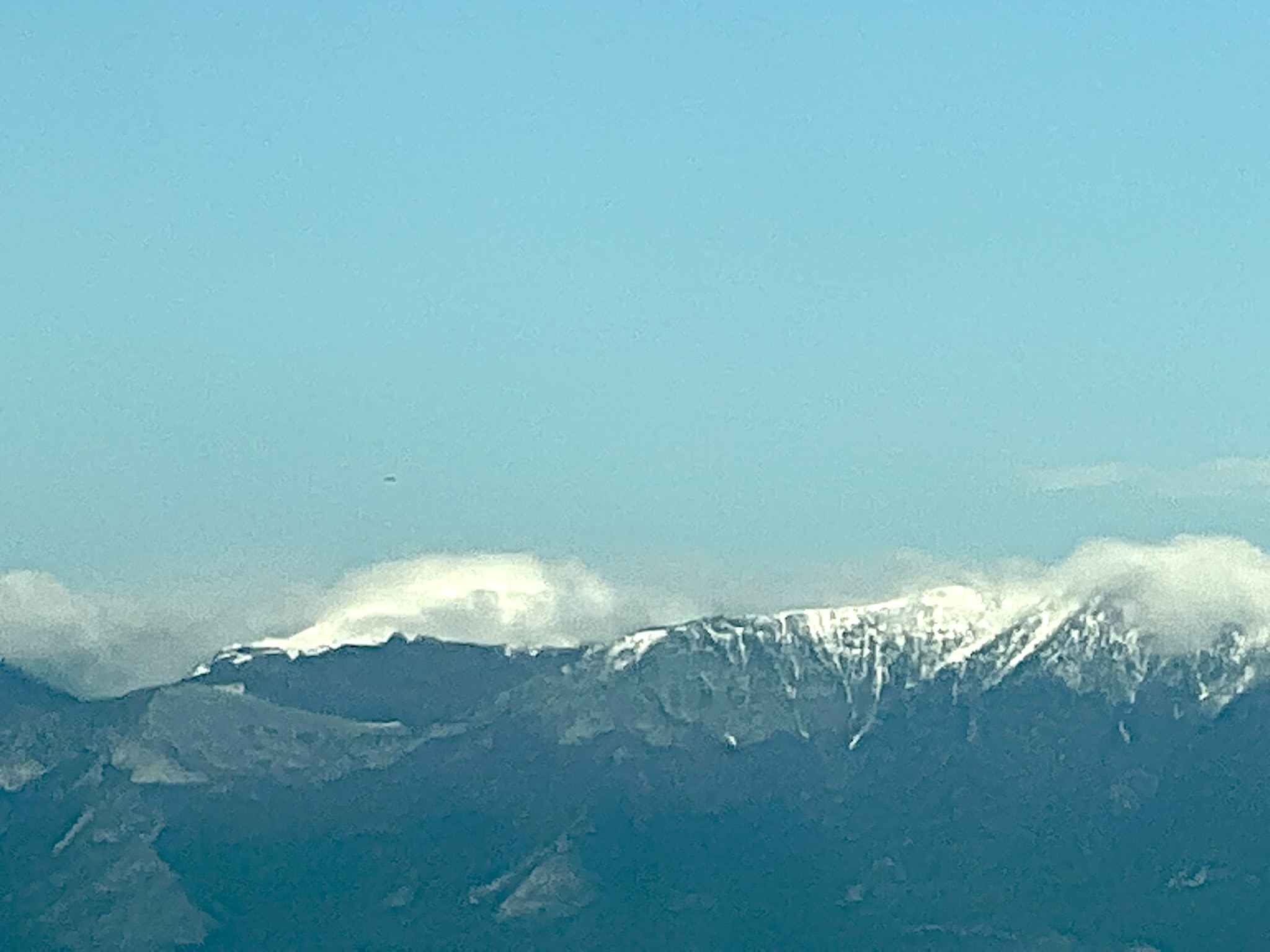

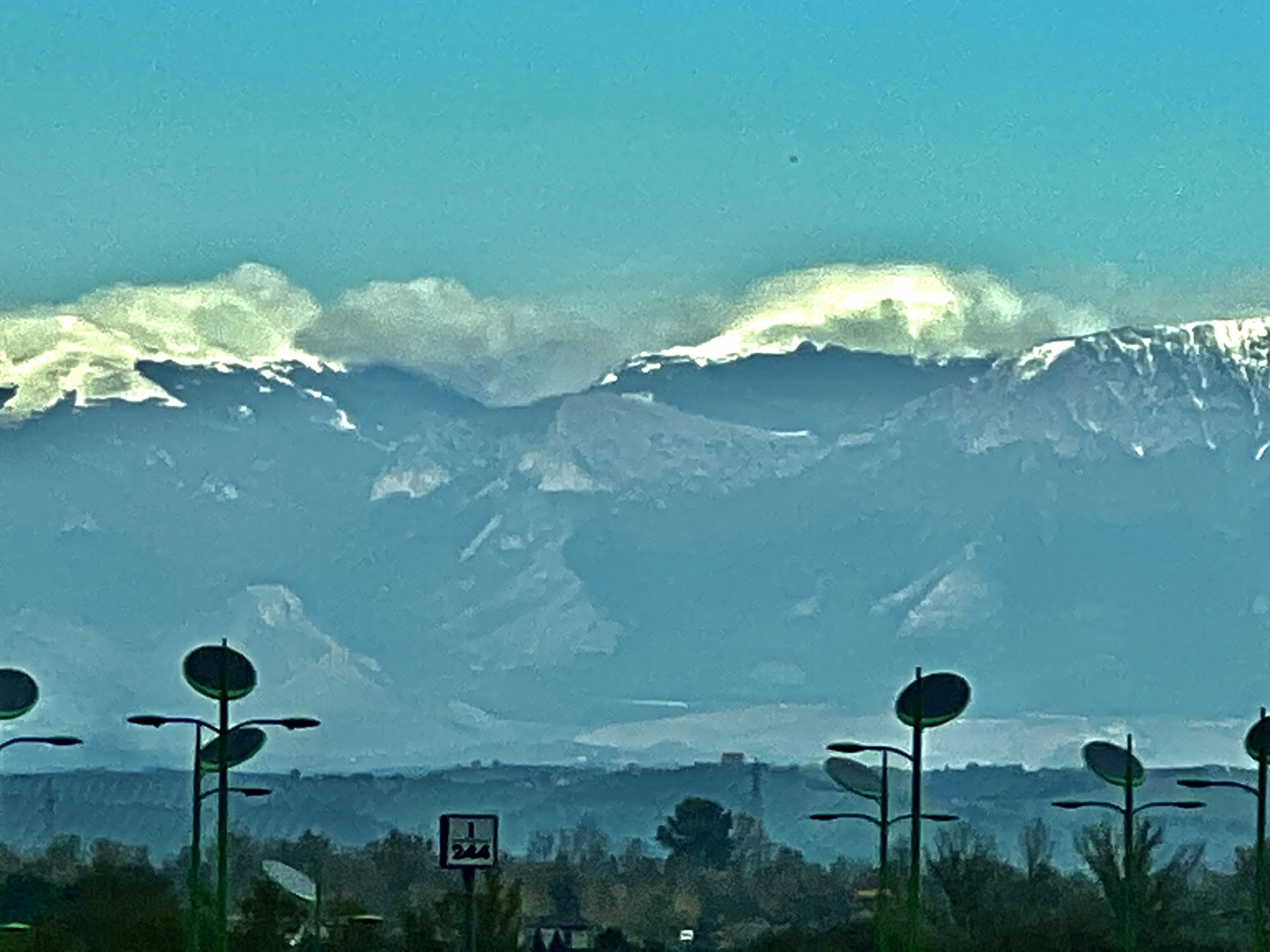

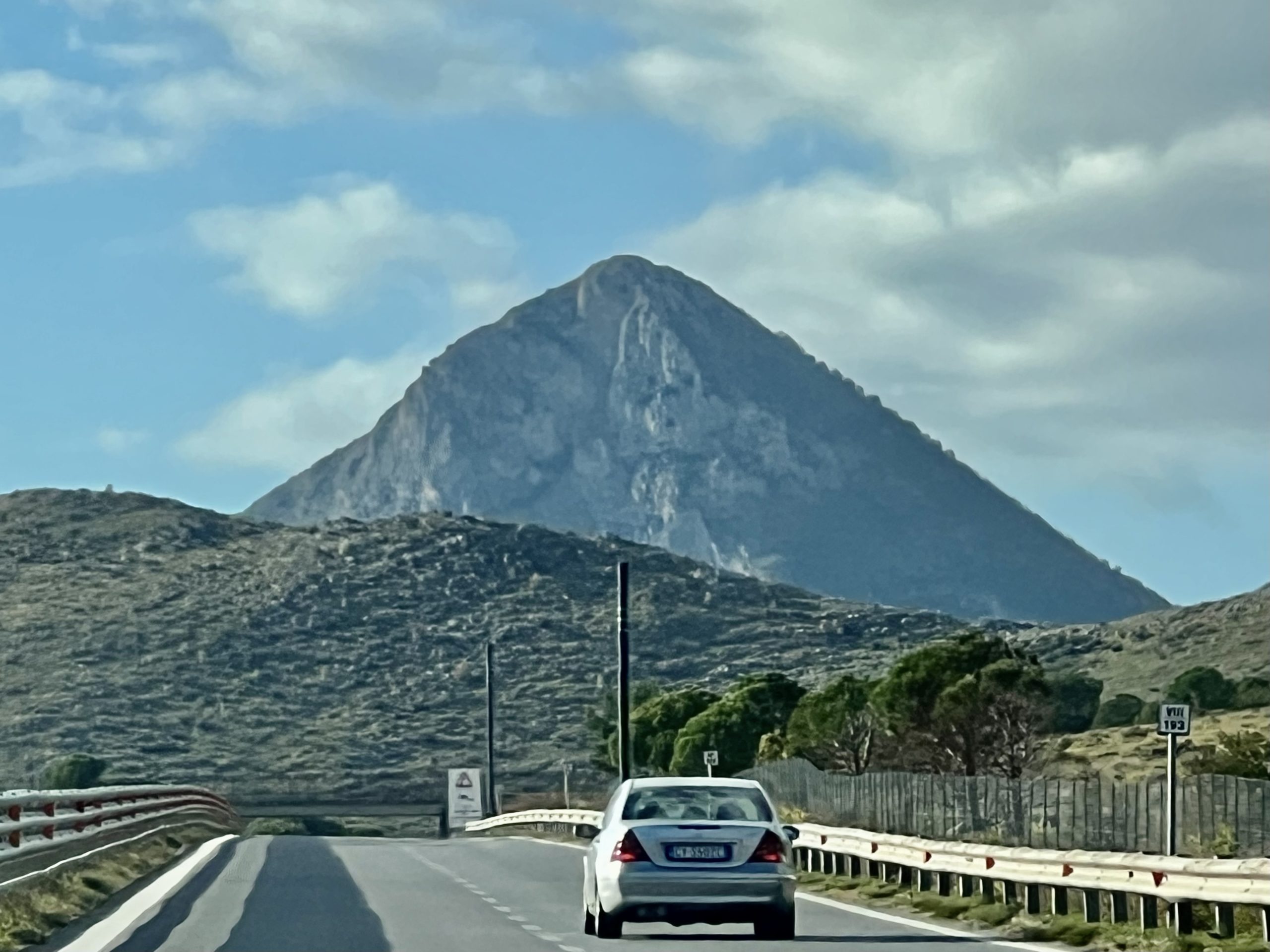
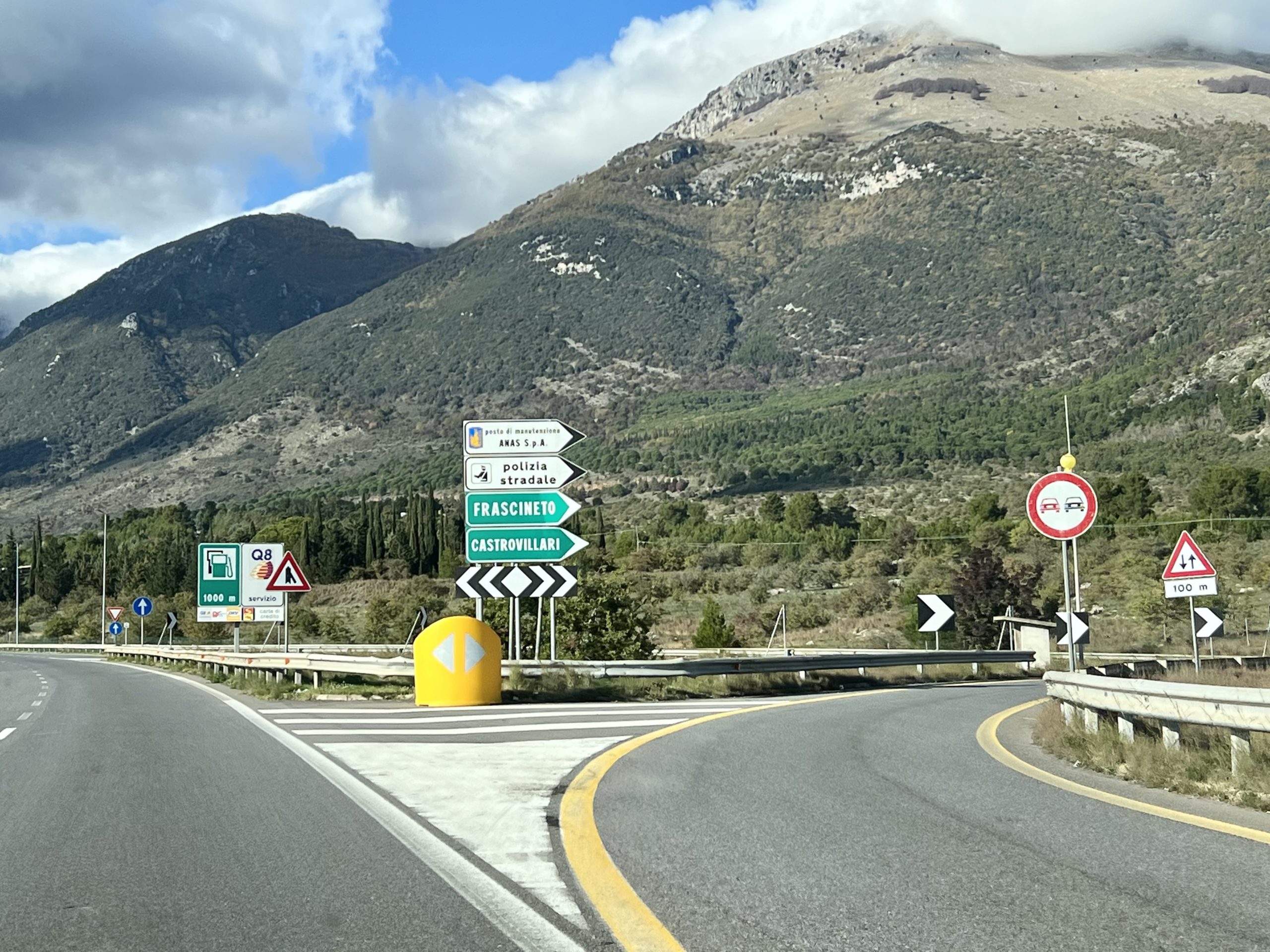
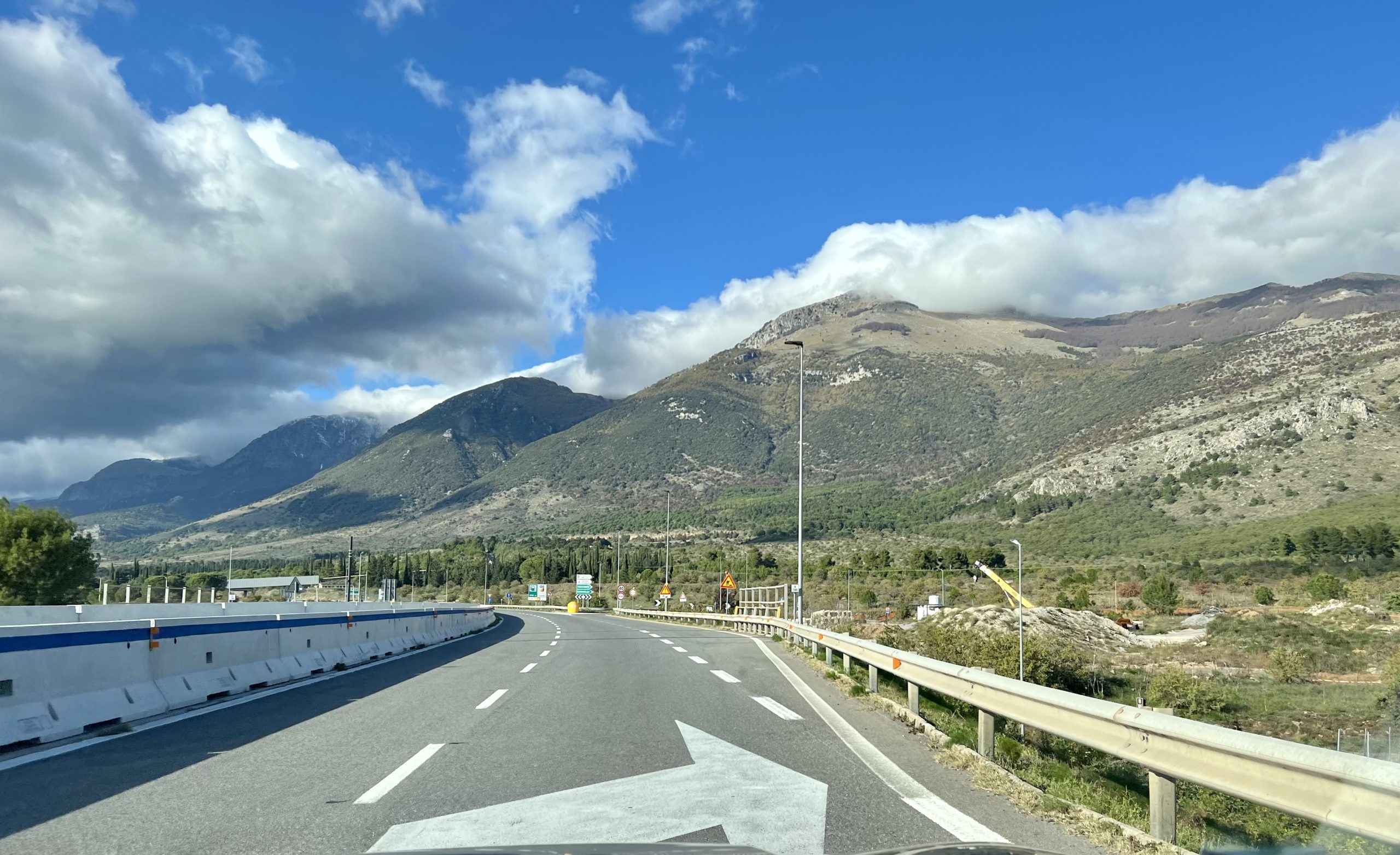


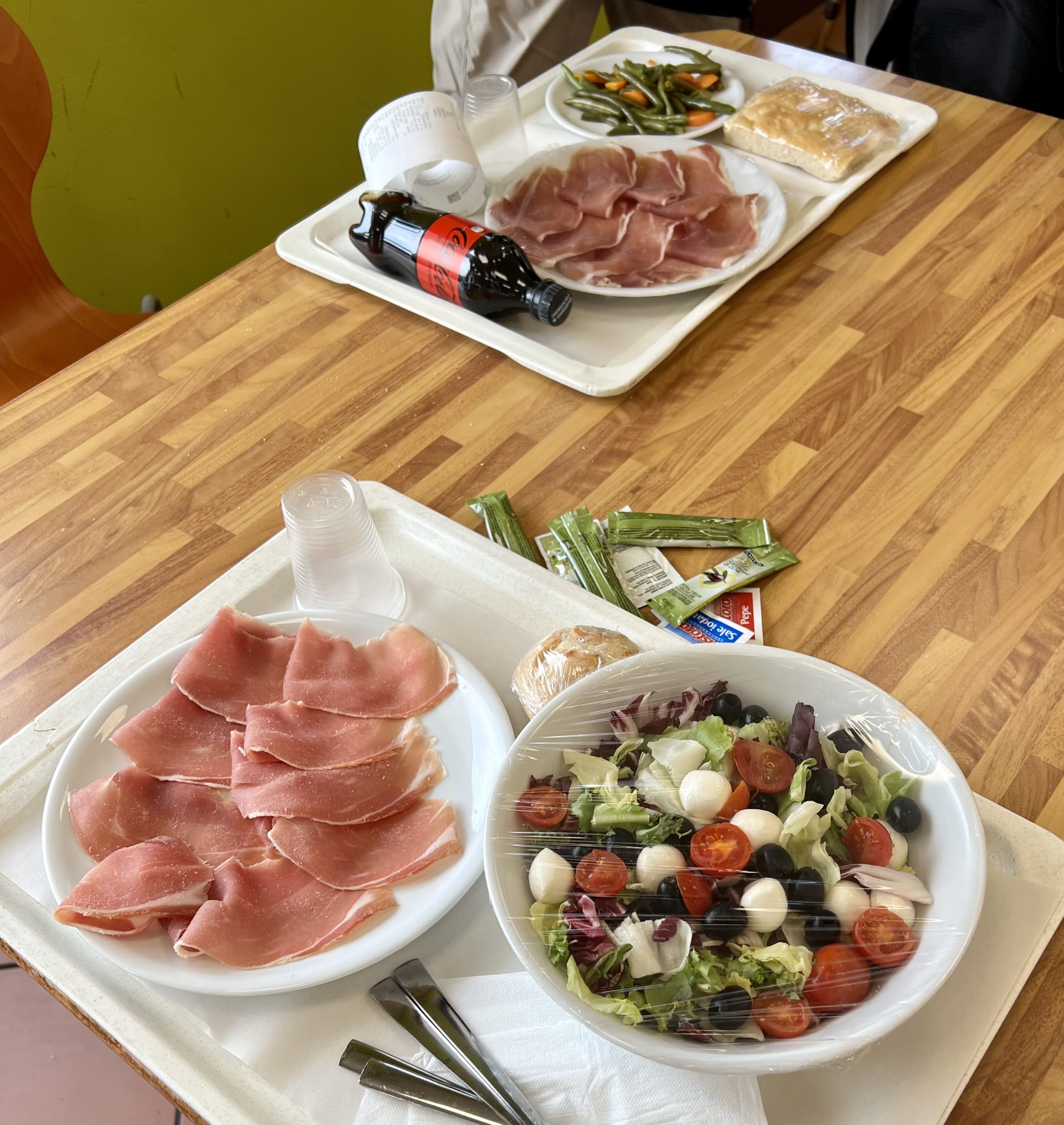
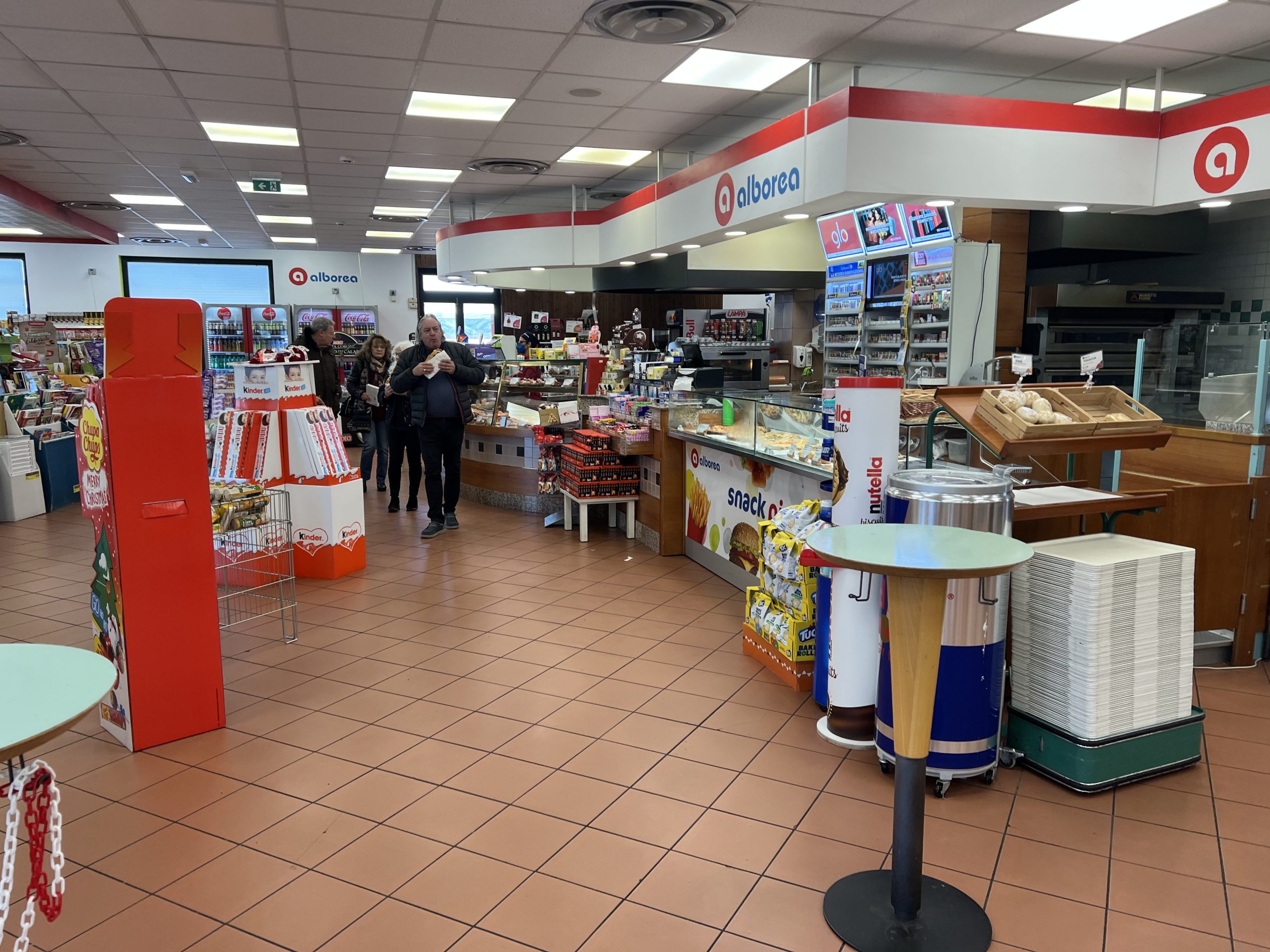
Lodging—Paestum
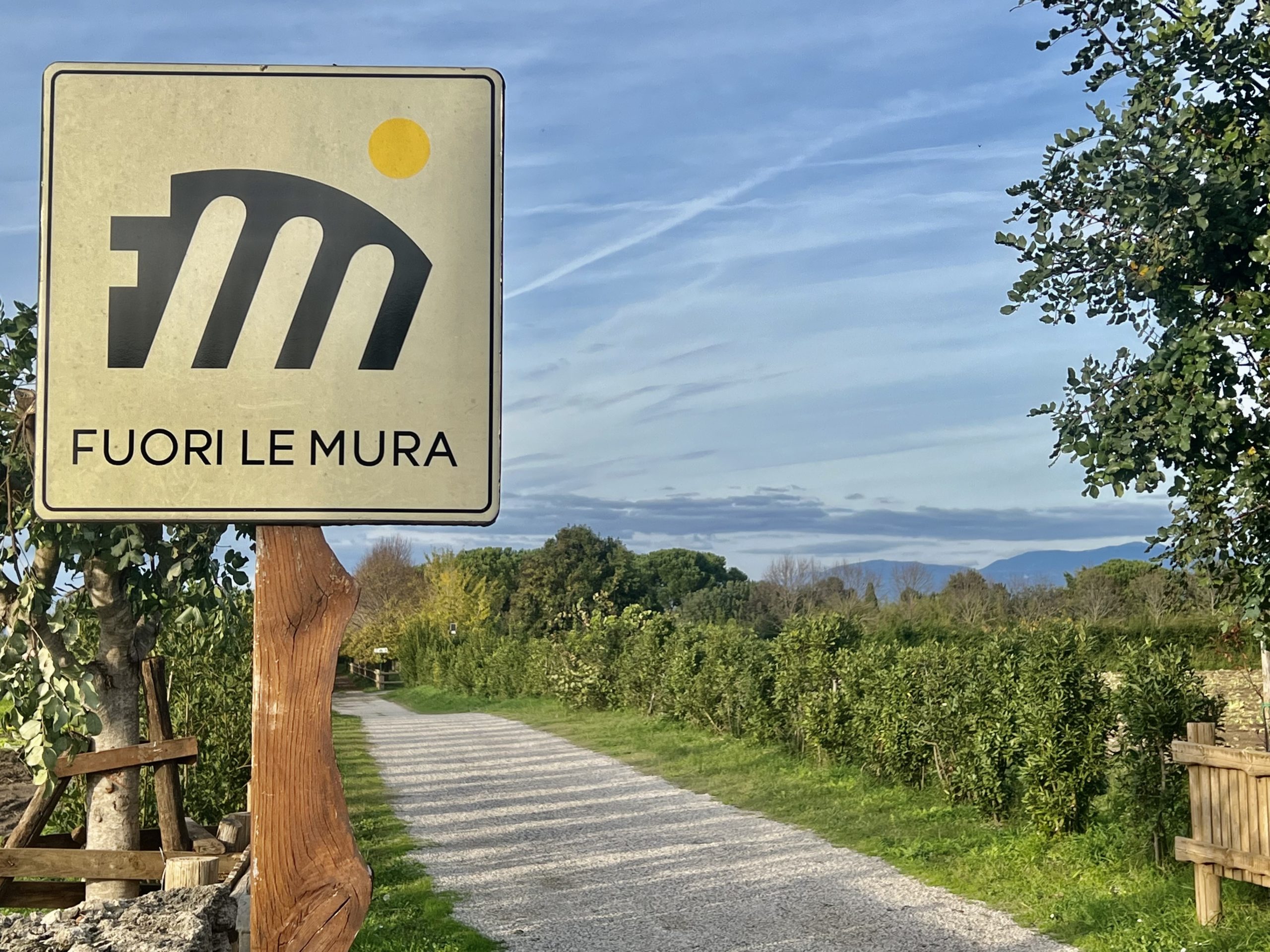
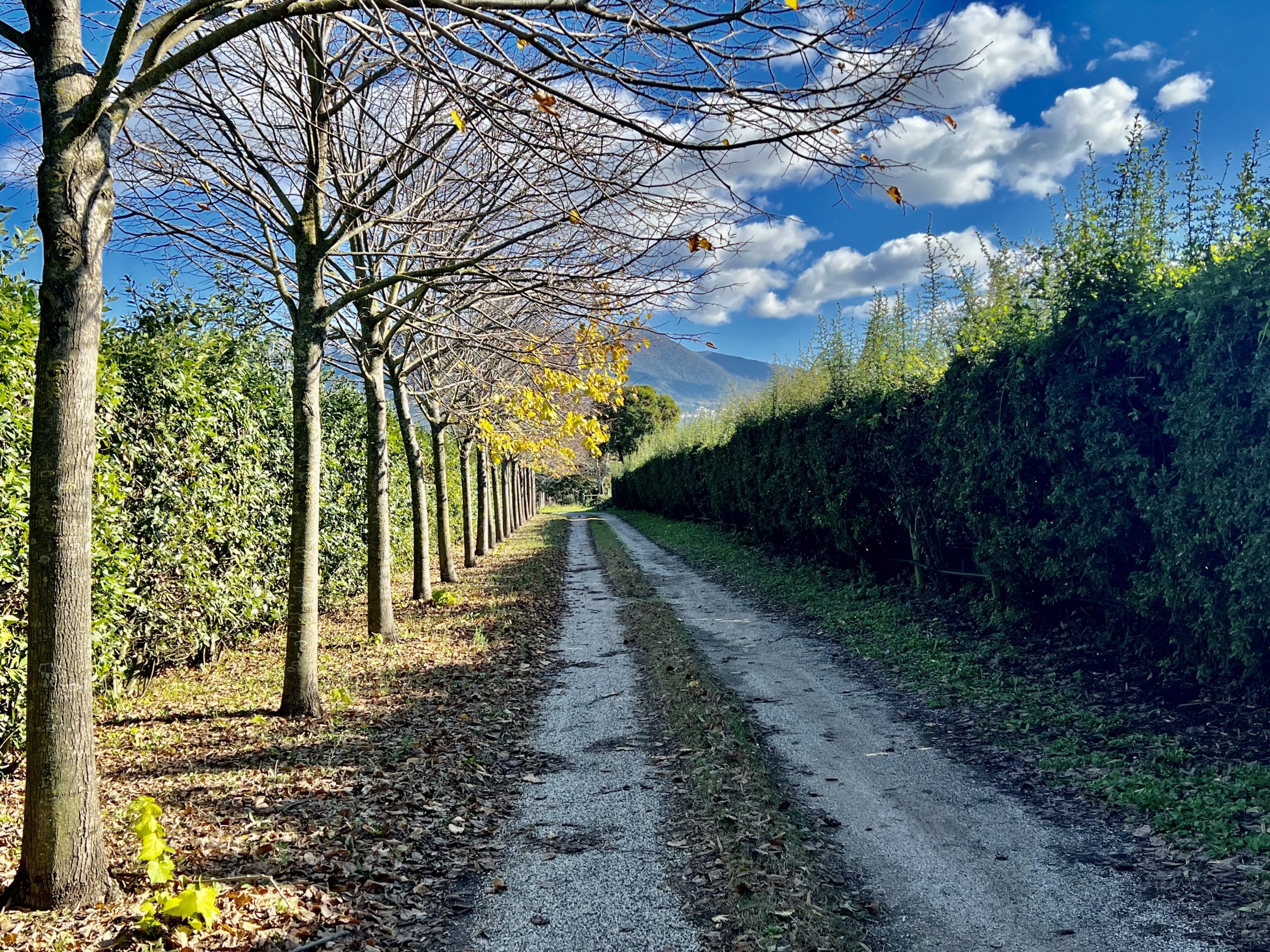
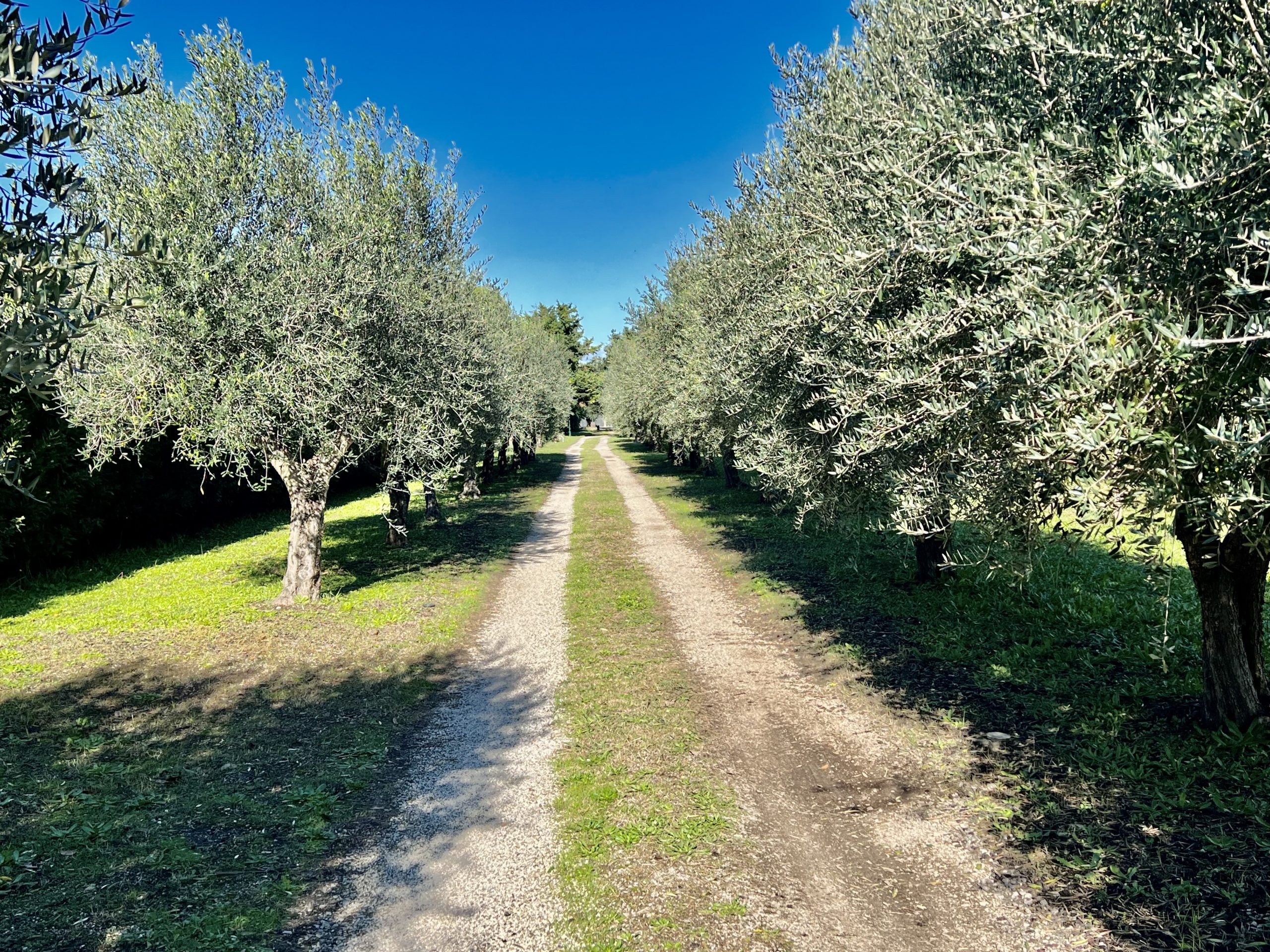
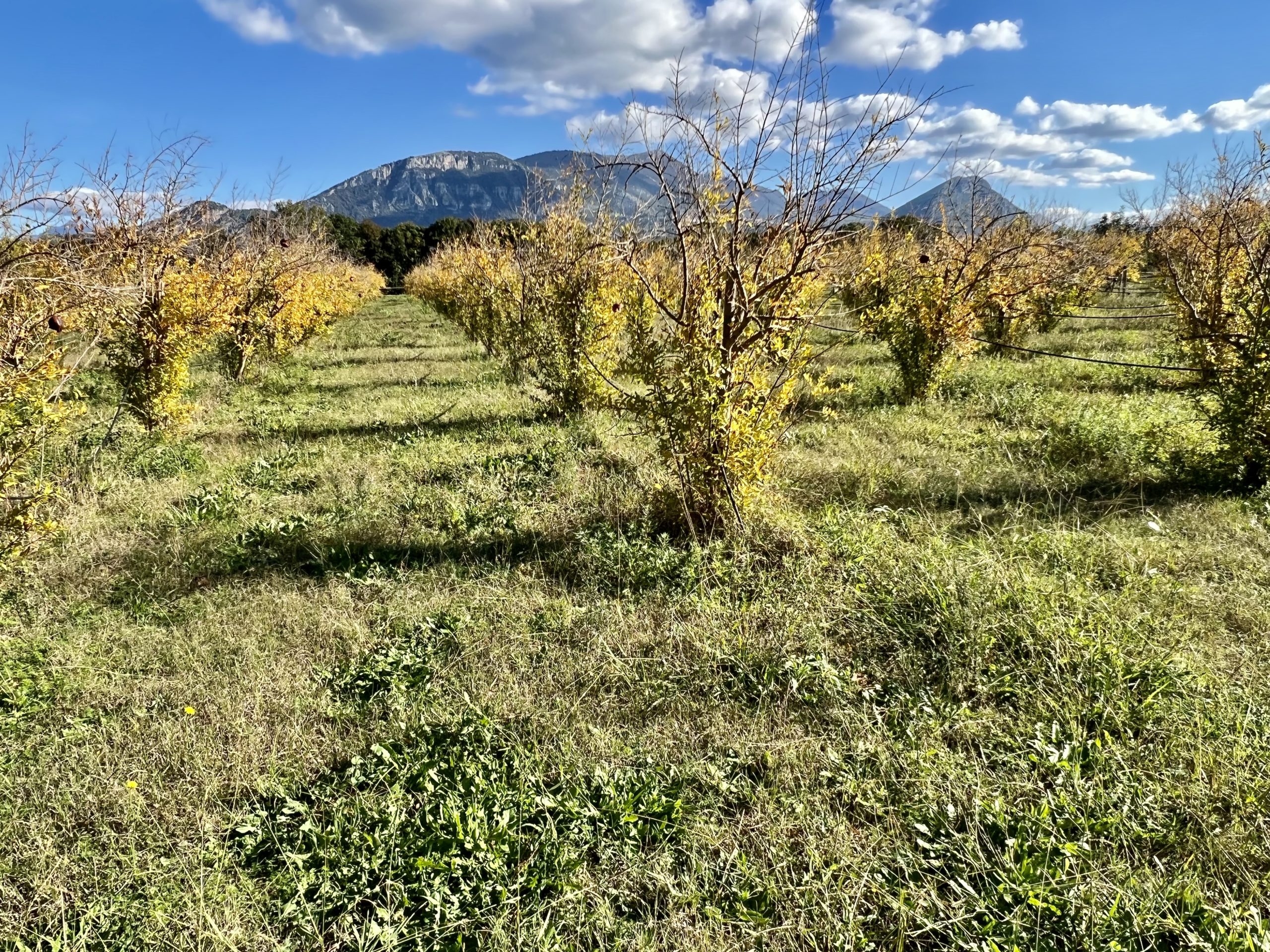
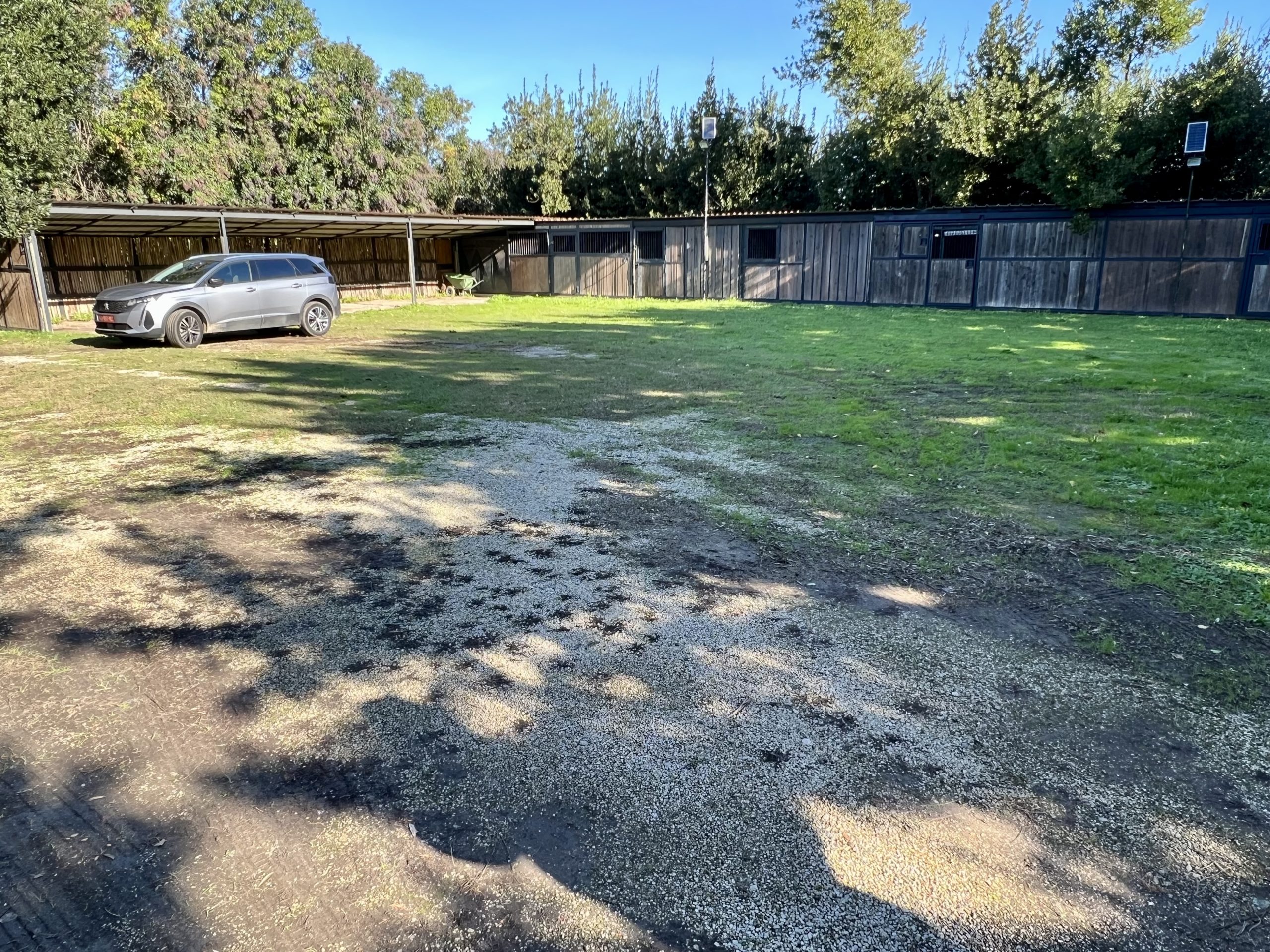
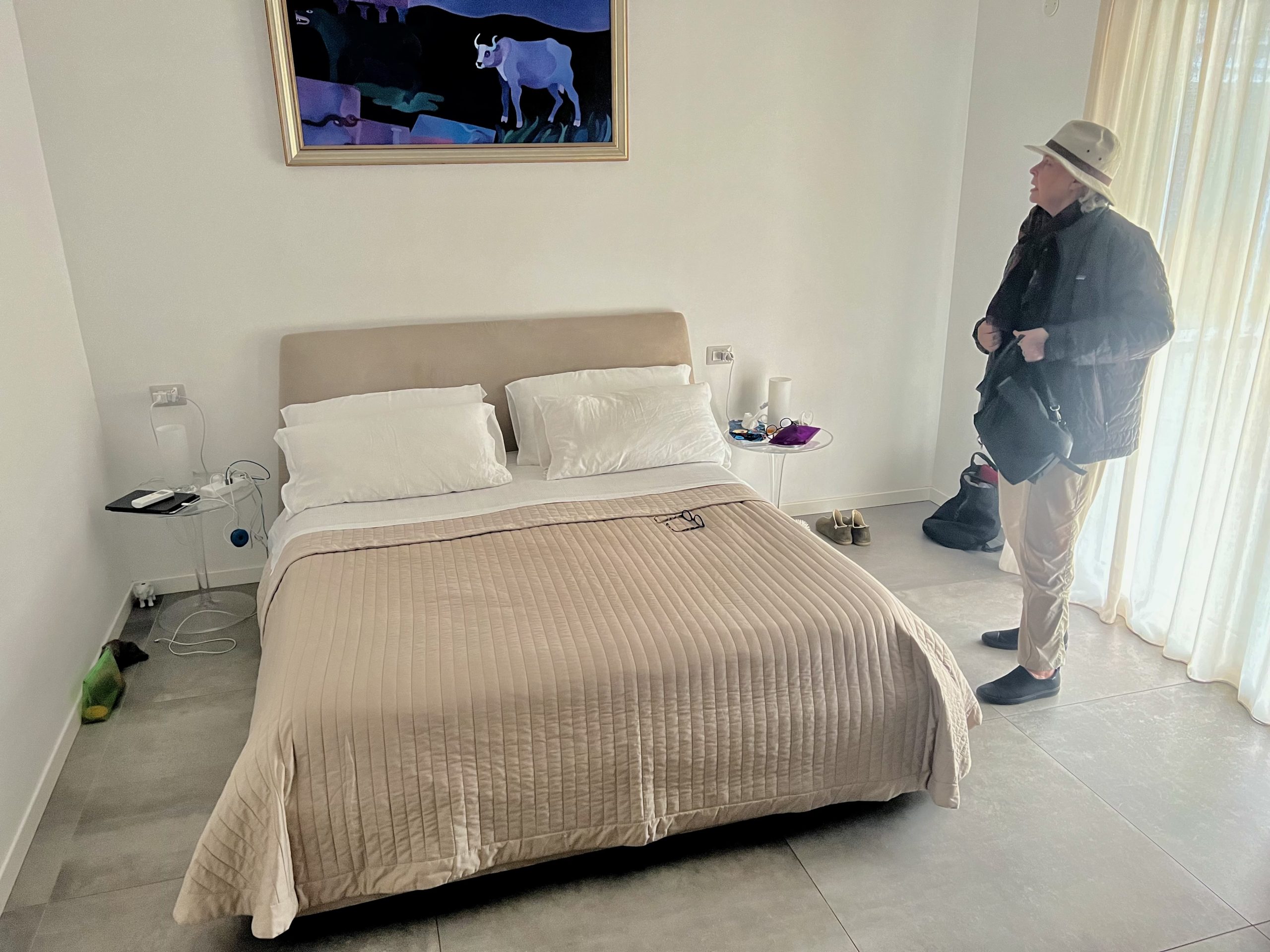
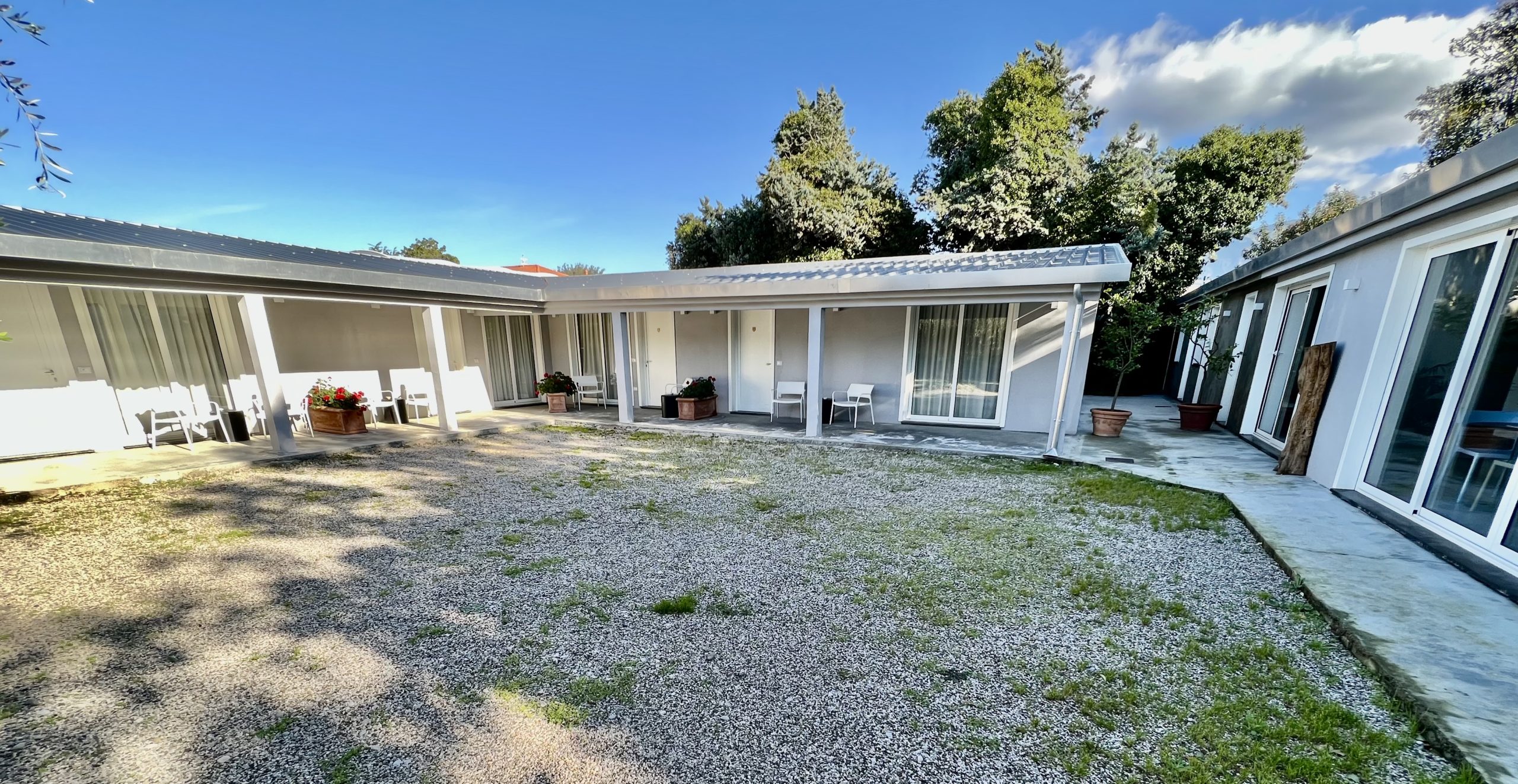
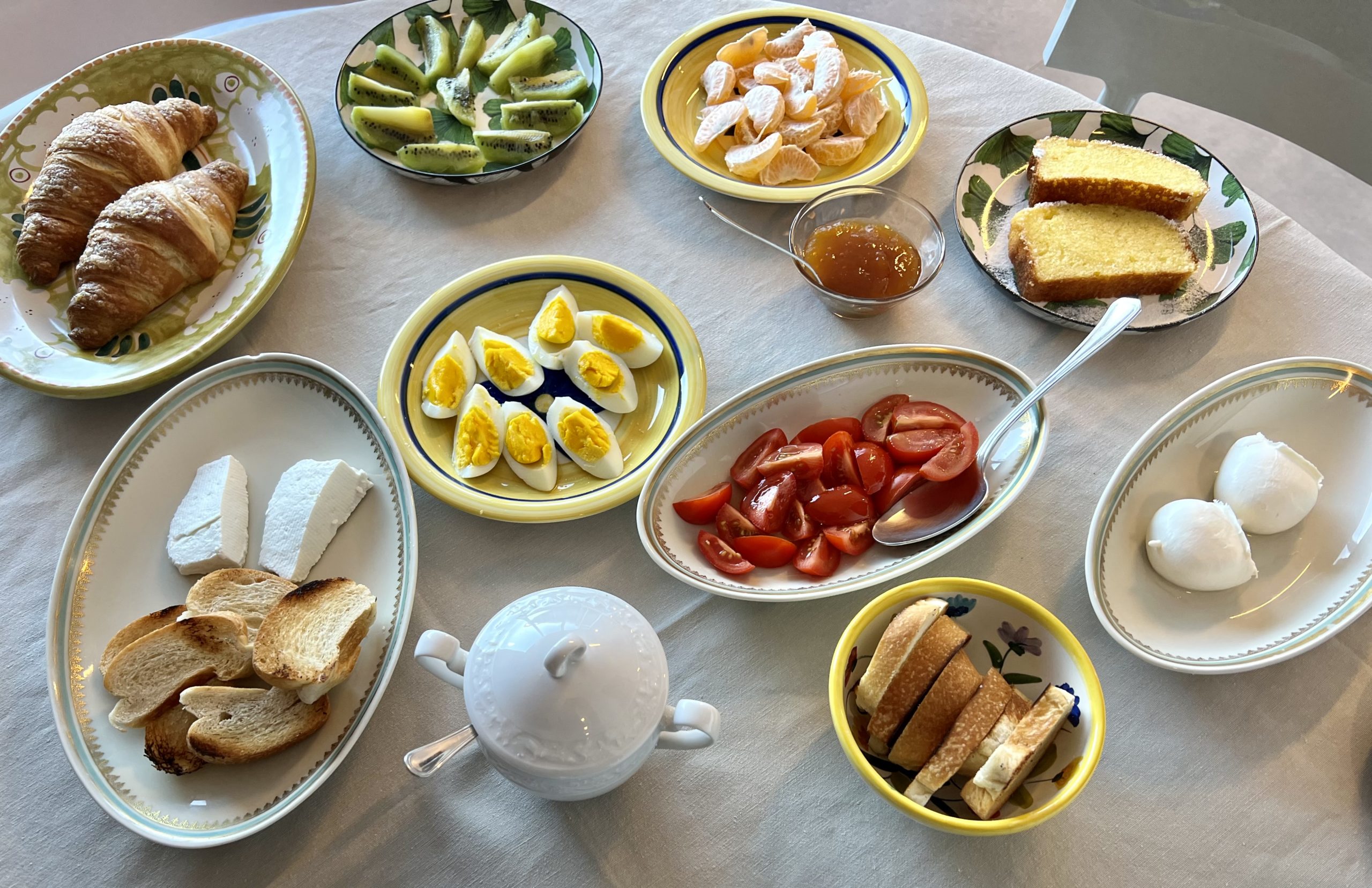

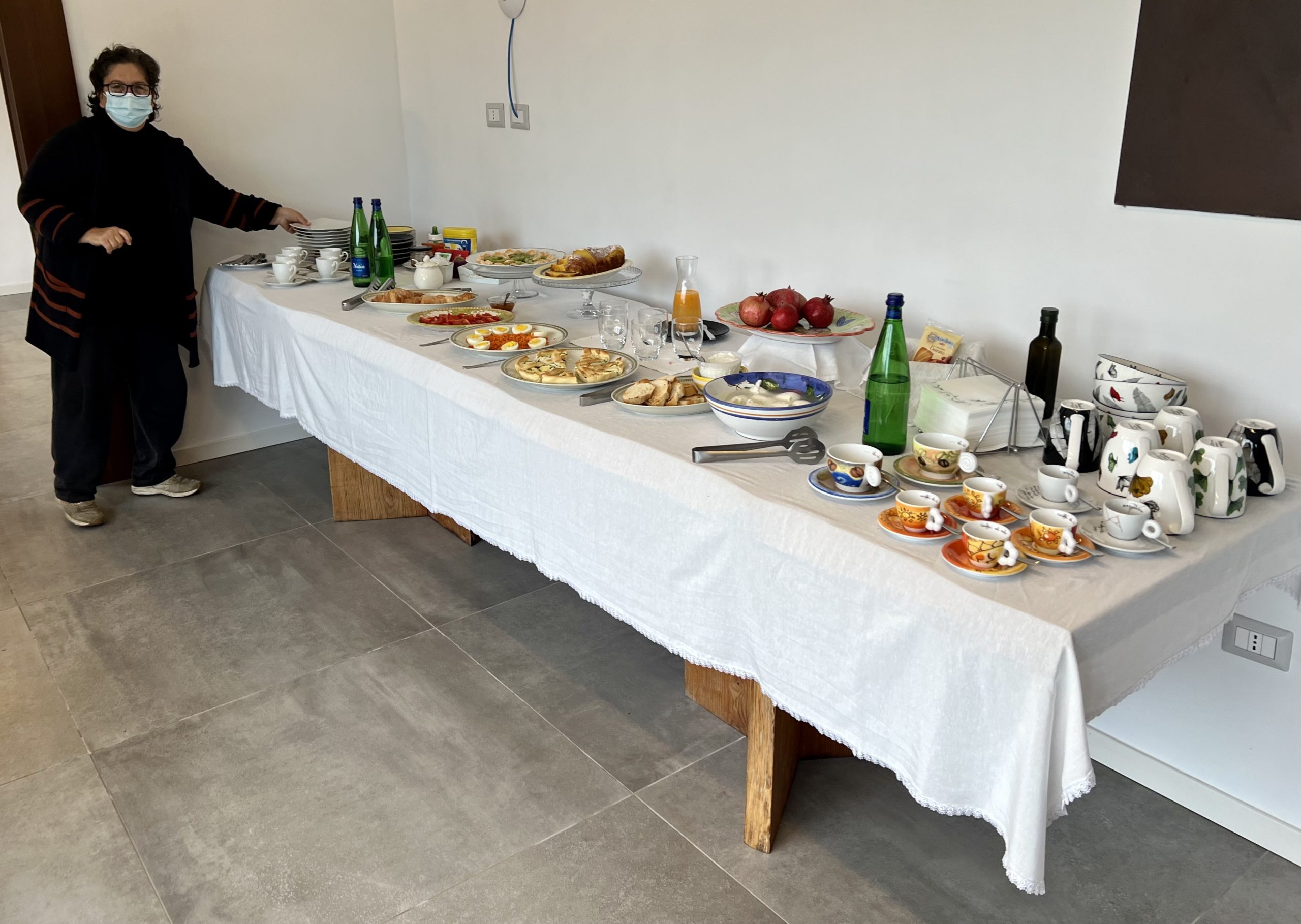
Paestum Velia
We had never been to Paestum much to our cousins’ surprise. Bonnie vaguely remembers someone—perhaps Kirk—mentioning it as an important place to see Greek temples. It is a spectacular site. But Paestum is not on the tourist radar as much as you might expect. A little out of the way. Although the number of restaurants and pedestrian zones suggests the site must get tourists in the summer. We were thankfully off peak tourist season and, after days of heavy rain, hit a beautiful day—bright, sunny, and crisp. We wandered through the grassy acres, only occasionally seeing someone else.
Paestum was established by the Greeks, and it was a major city in Magna Grecian (southern Italy). It has three Greek temples built in the Doric style between 550 and 450 BCE. And unlike in Agrigento, they are mostly intact. Much of the 4.75-kilometer wall that surrounded the city remains, as well as a multitude of foundations of other buildings, including residences. What blew us away is that you can actually walk into the temples and get a much better sense of the structure and the size and scale of the temples and their interior rooms. Of the 120-hectare ancient city, only 25 hectares have been excavated.
We noticed that the columns of the temples are shorter and broader than in Agrigento, and obviously curving out toward the bottom. This curvature—entasis—is an indication of early construction that we think was to give the columns greater structural strength. The columns are more closely spaced than we had seen before.
We took a leisurely two-hour walk around the site, stopping to read all the interpretive signs. After a lunch break, we headed to the museum to view some of the artifacts found in the excavations.
The Greeks established the city and named it Poseidonia in approximately 600 BCE. Other hypotheses of the founders exist, of course. It was later conquered by Lucanians whom the Greeks had used as mercenaries in defending the city. Romans took over in 273 BCE and renamed the city Paestum. Even the Saracens got into raiding the city. By the Middle Ages, the city was abandoned mostly because the river nearby silted up, creating malaria-producing marshlands. It wasn’t until the 18th century that Paestum was rediscovered on the heels of the rediscovery of Pompeii and Herculaneum. Piranesi helped increase awareness with his artworks. During this period of rediscovery, the second temple became the model of the Doric order for architects.
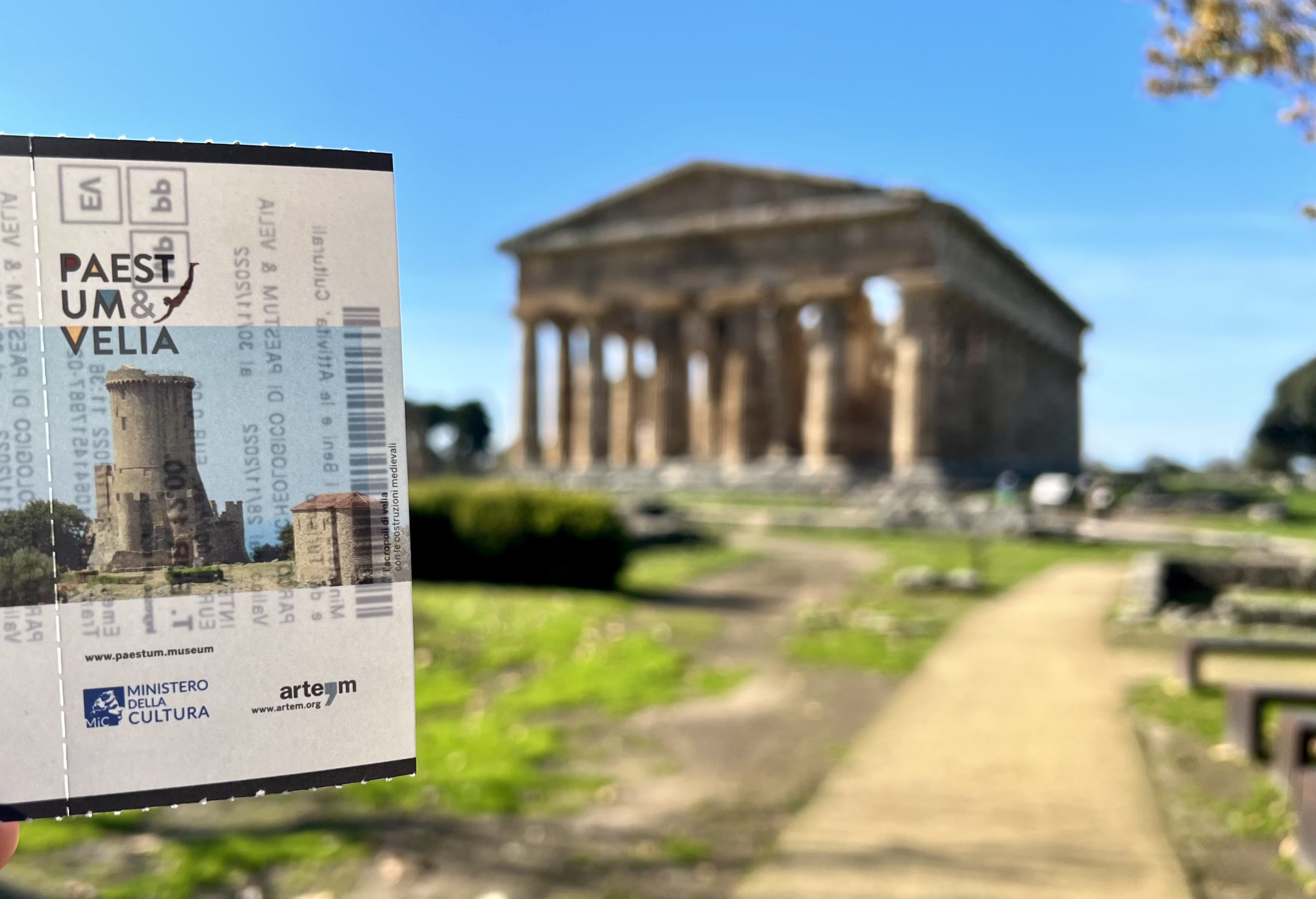
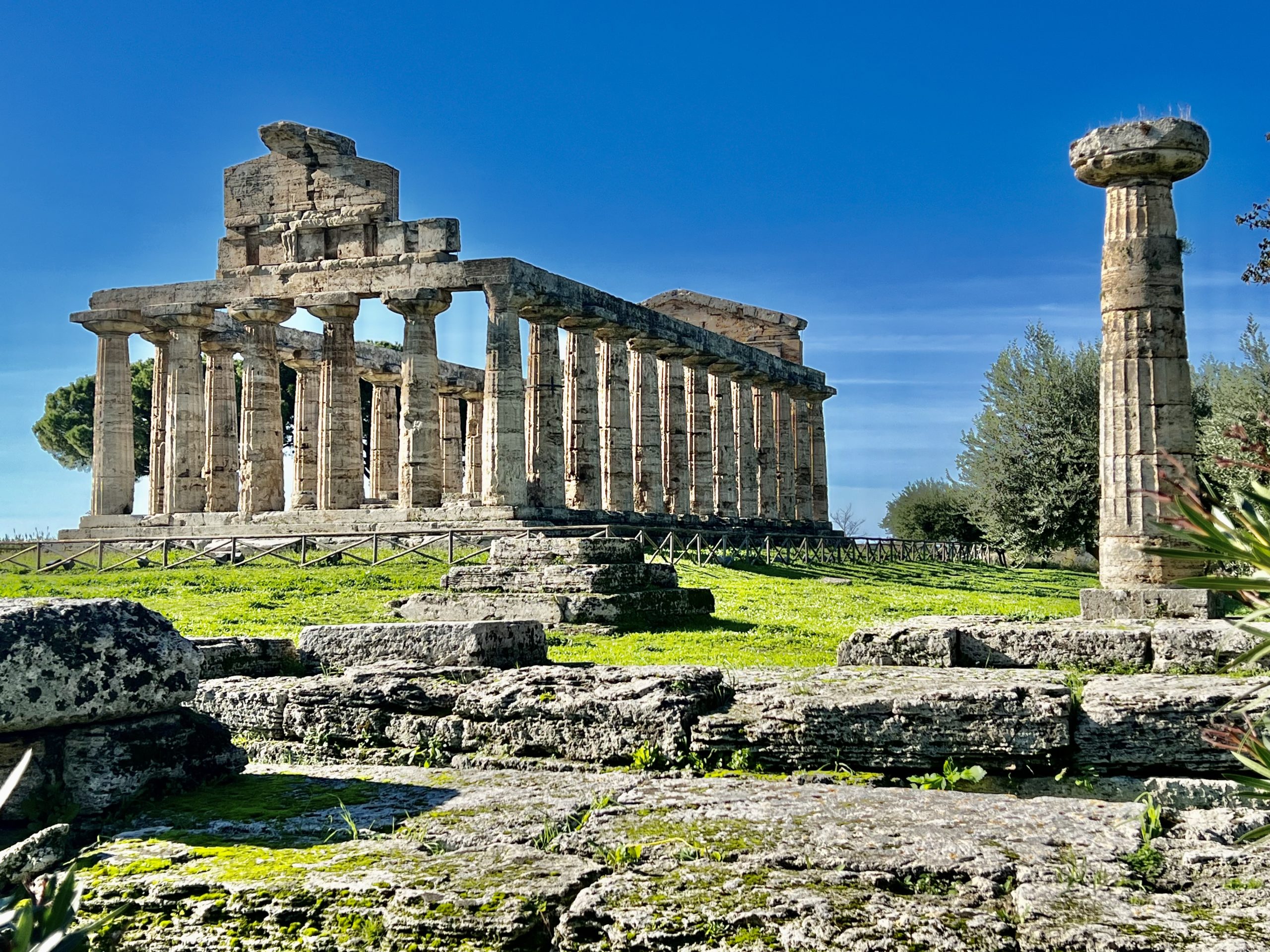
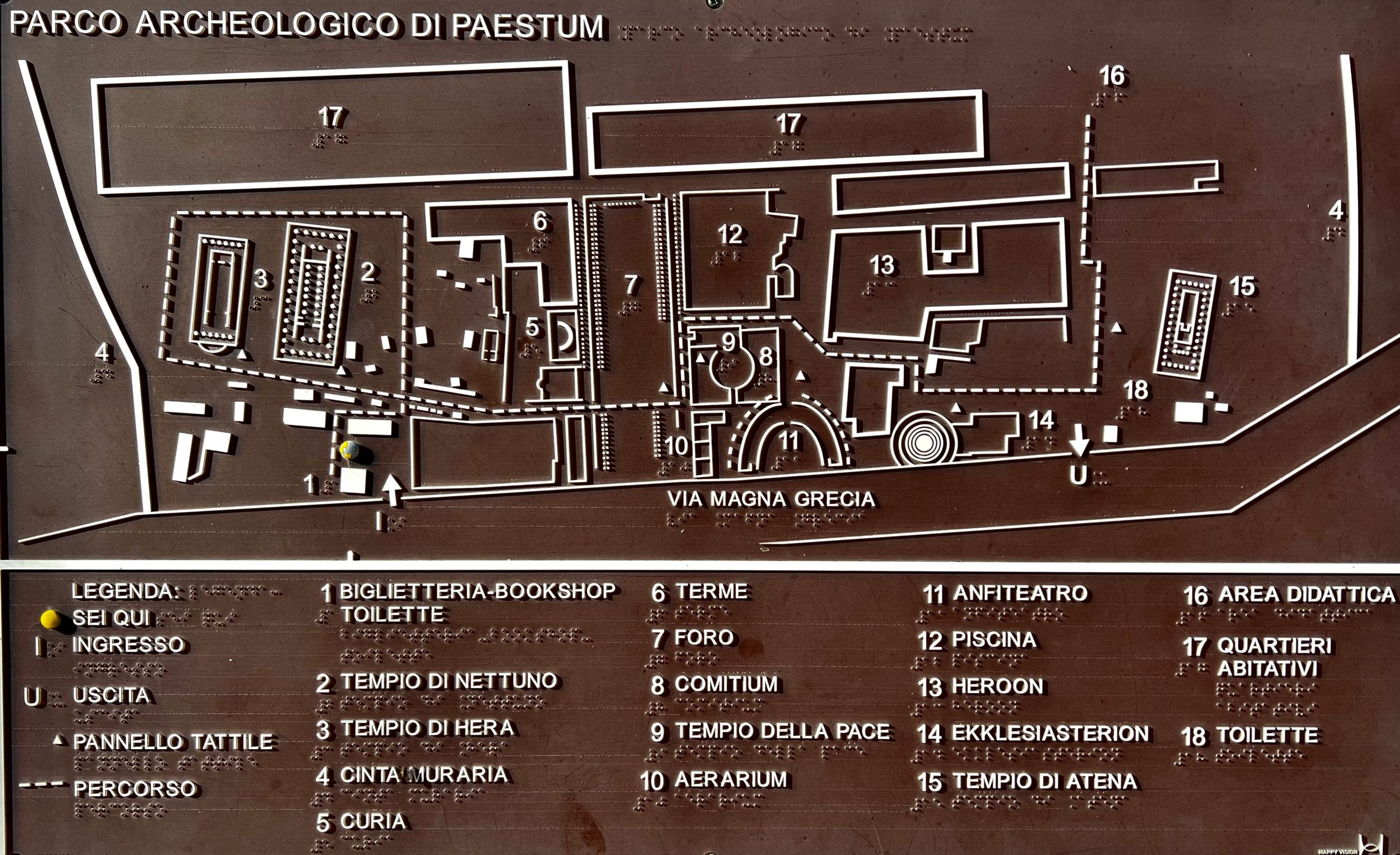
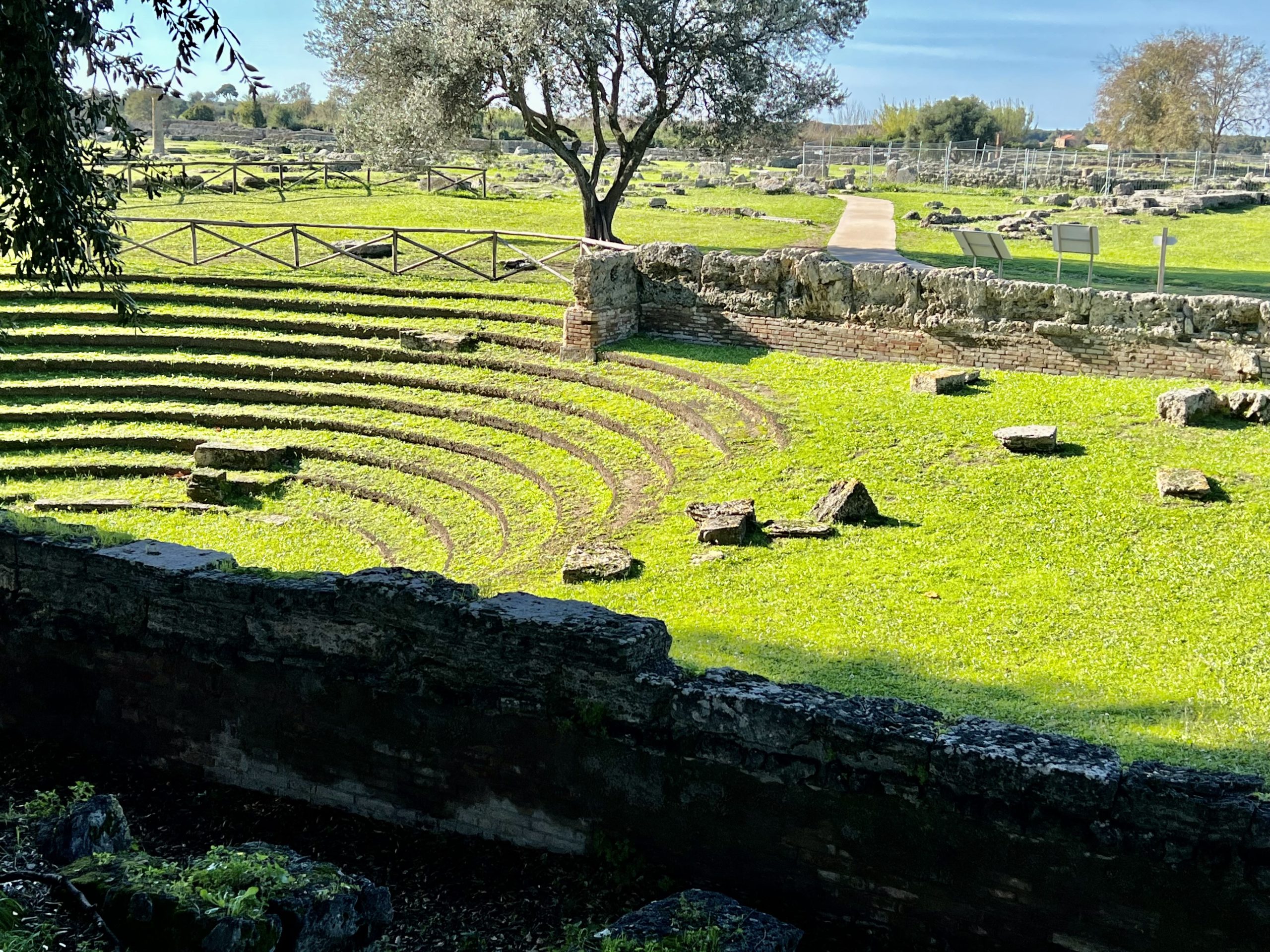
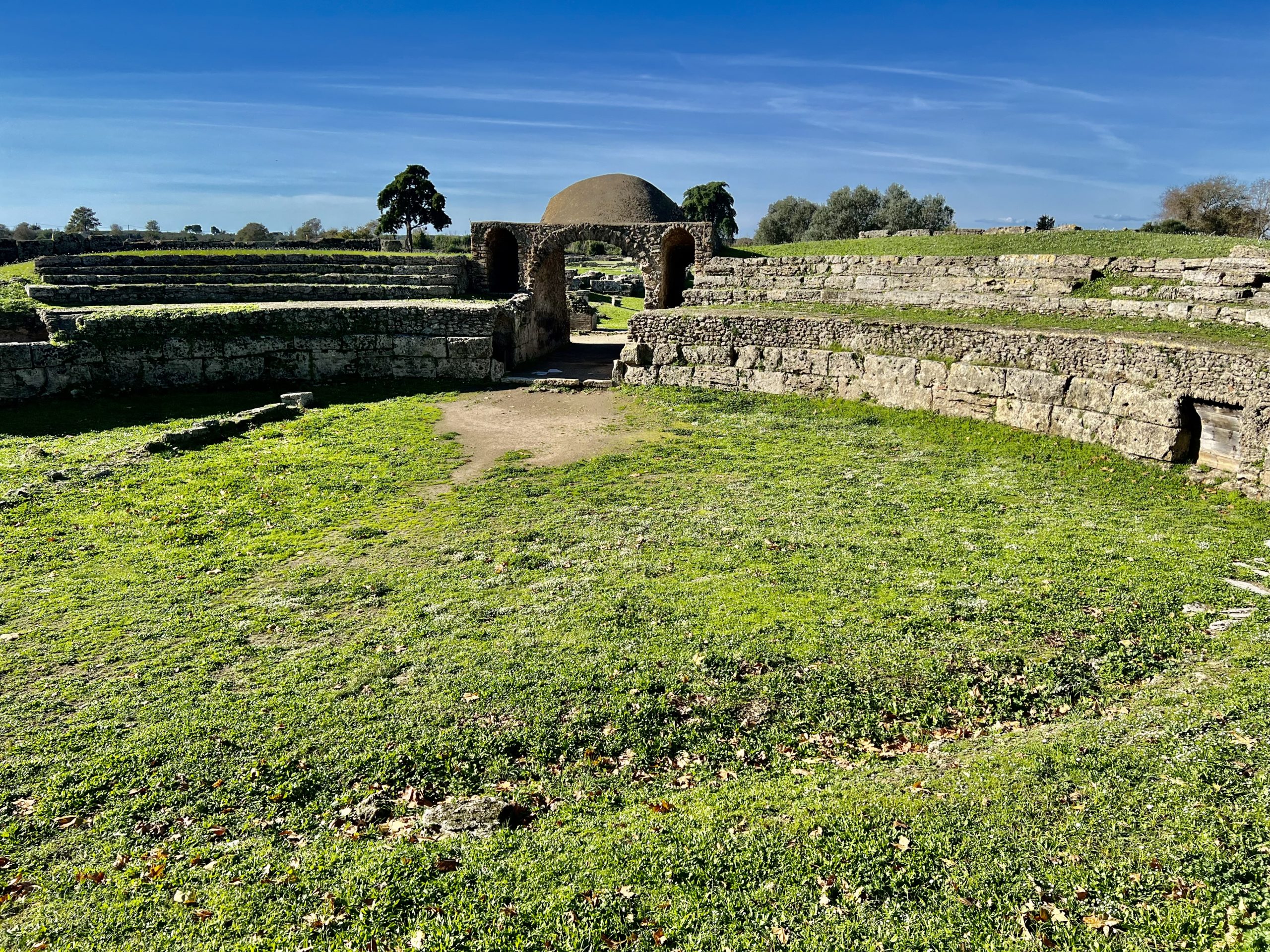
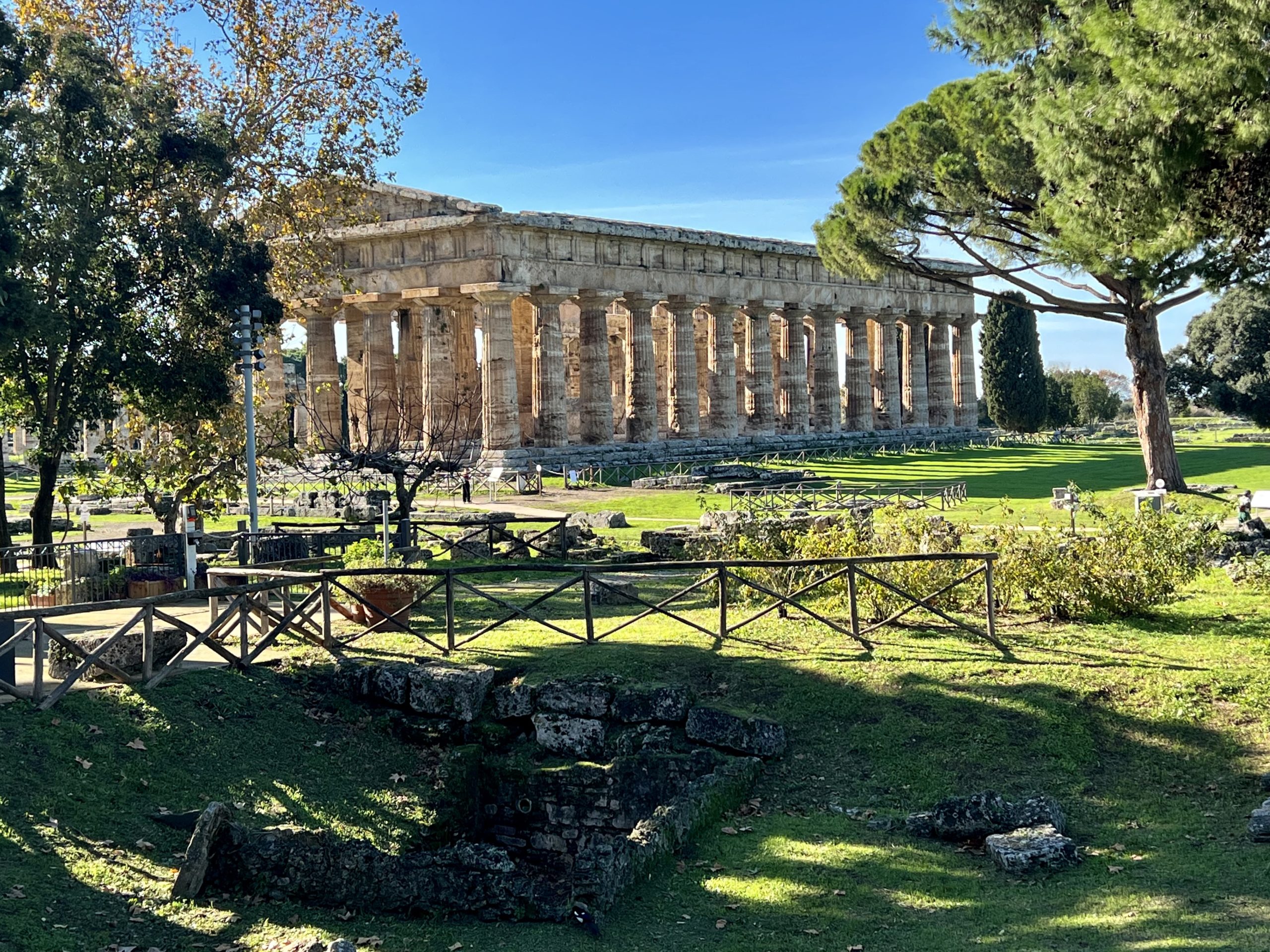
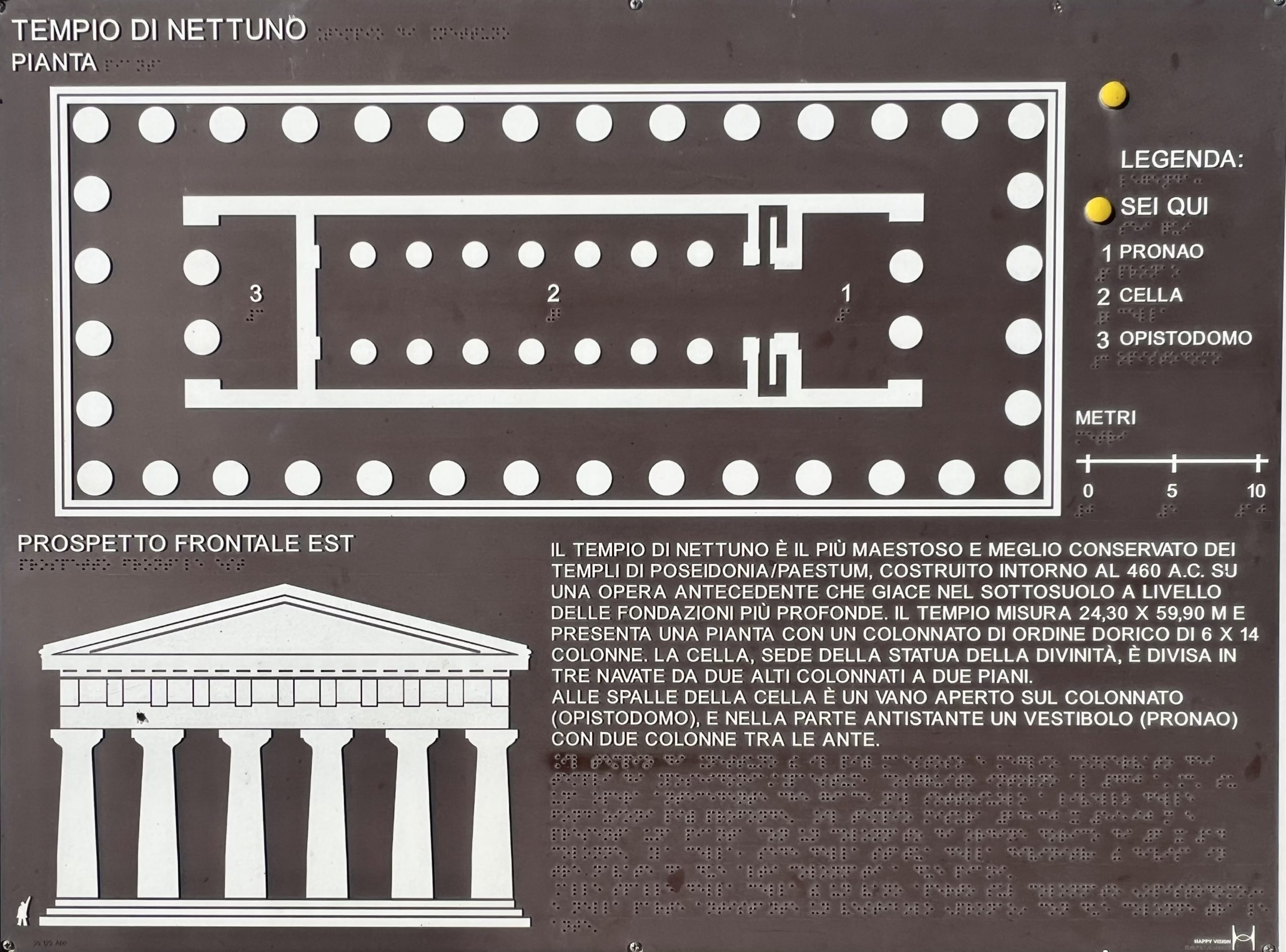
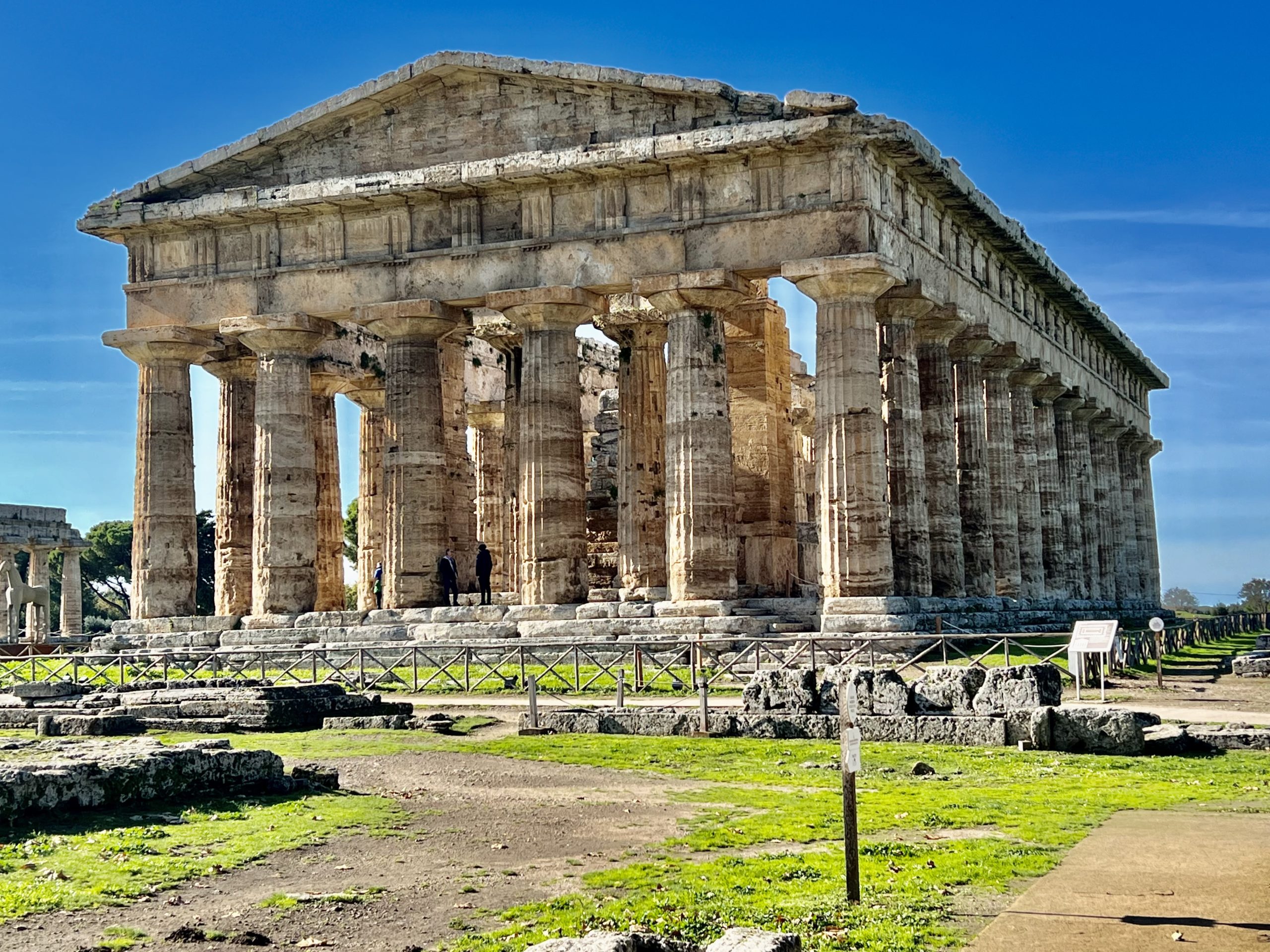
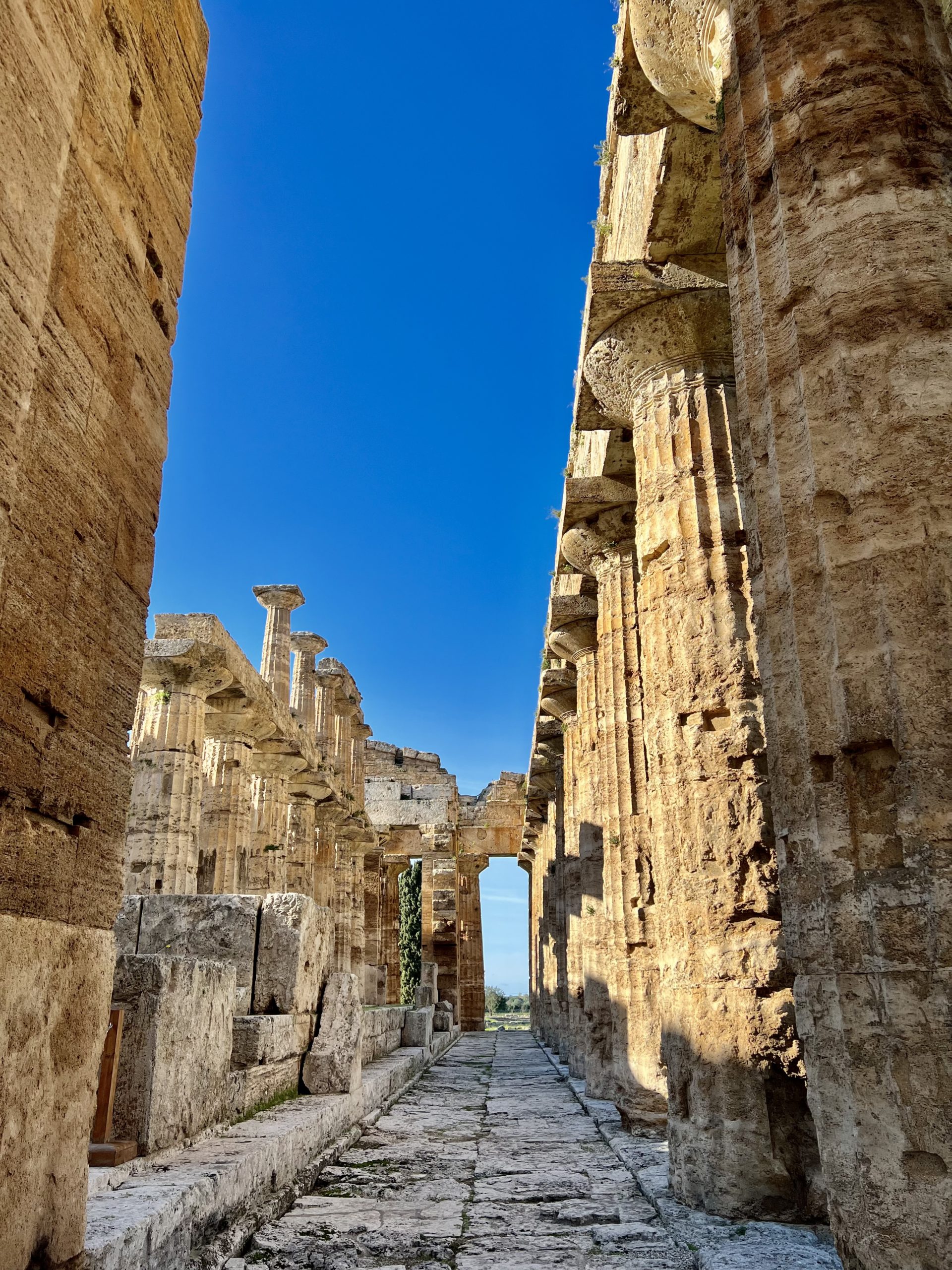
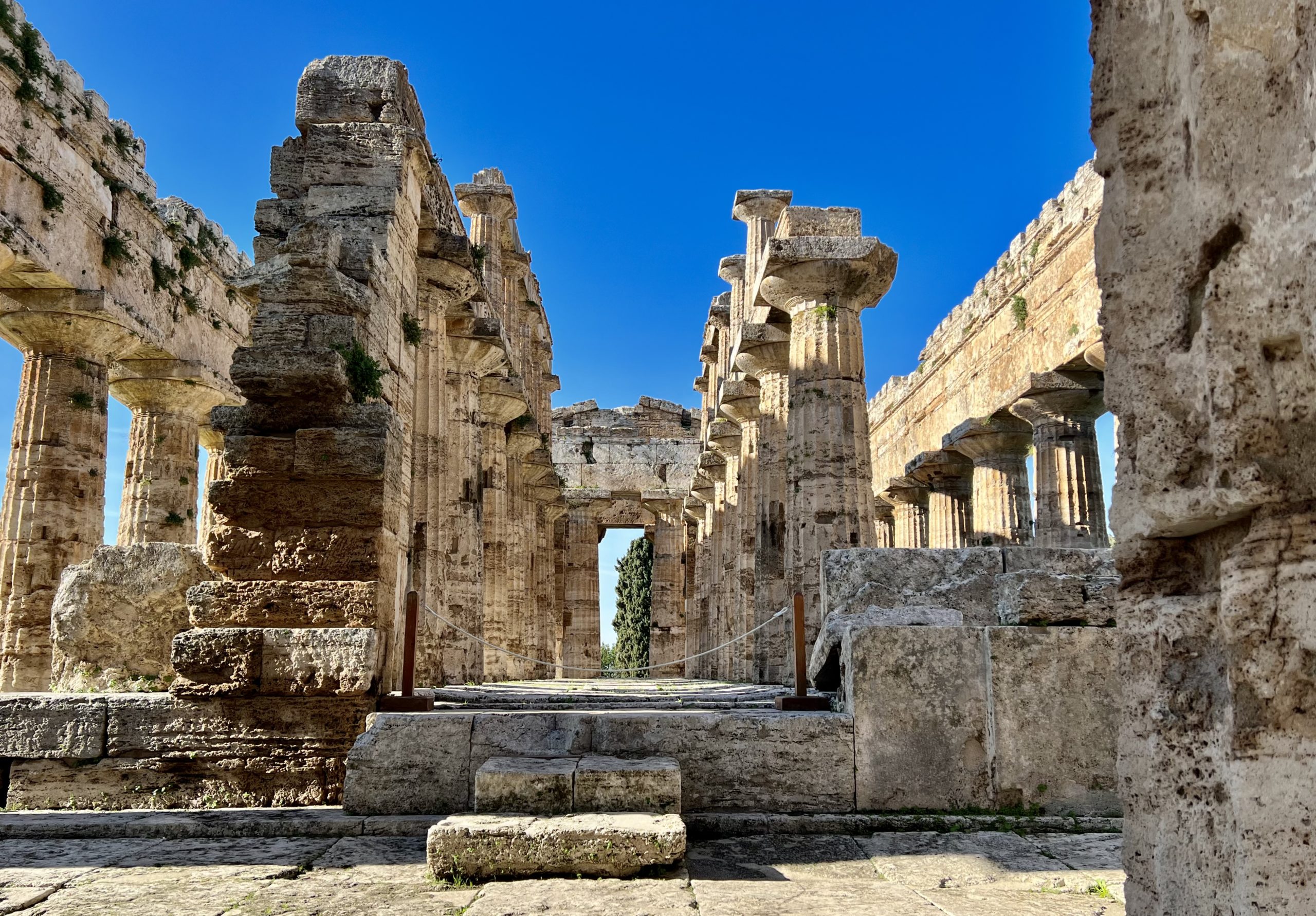
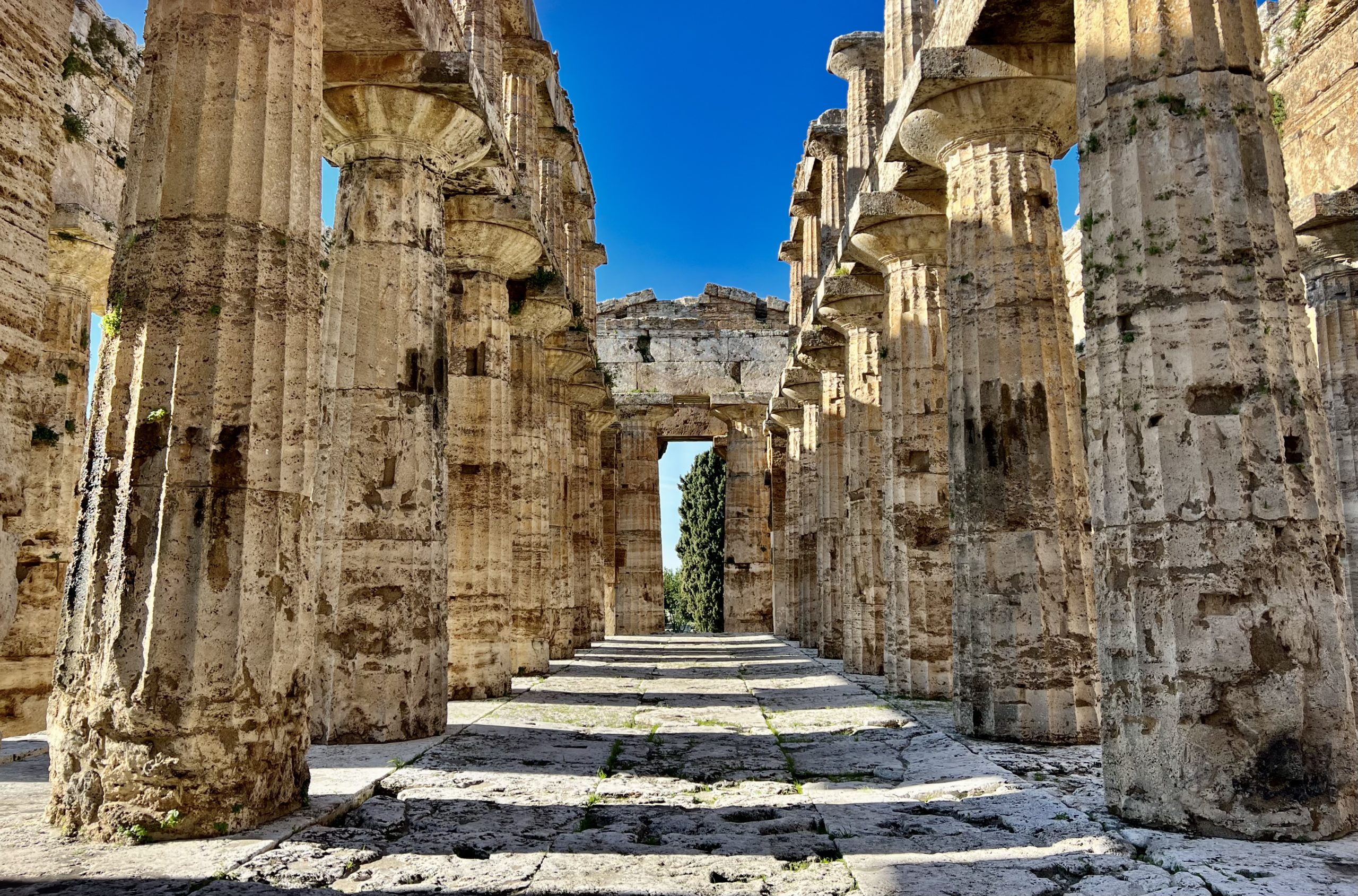
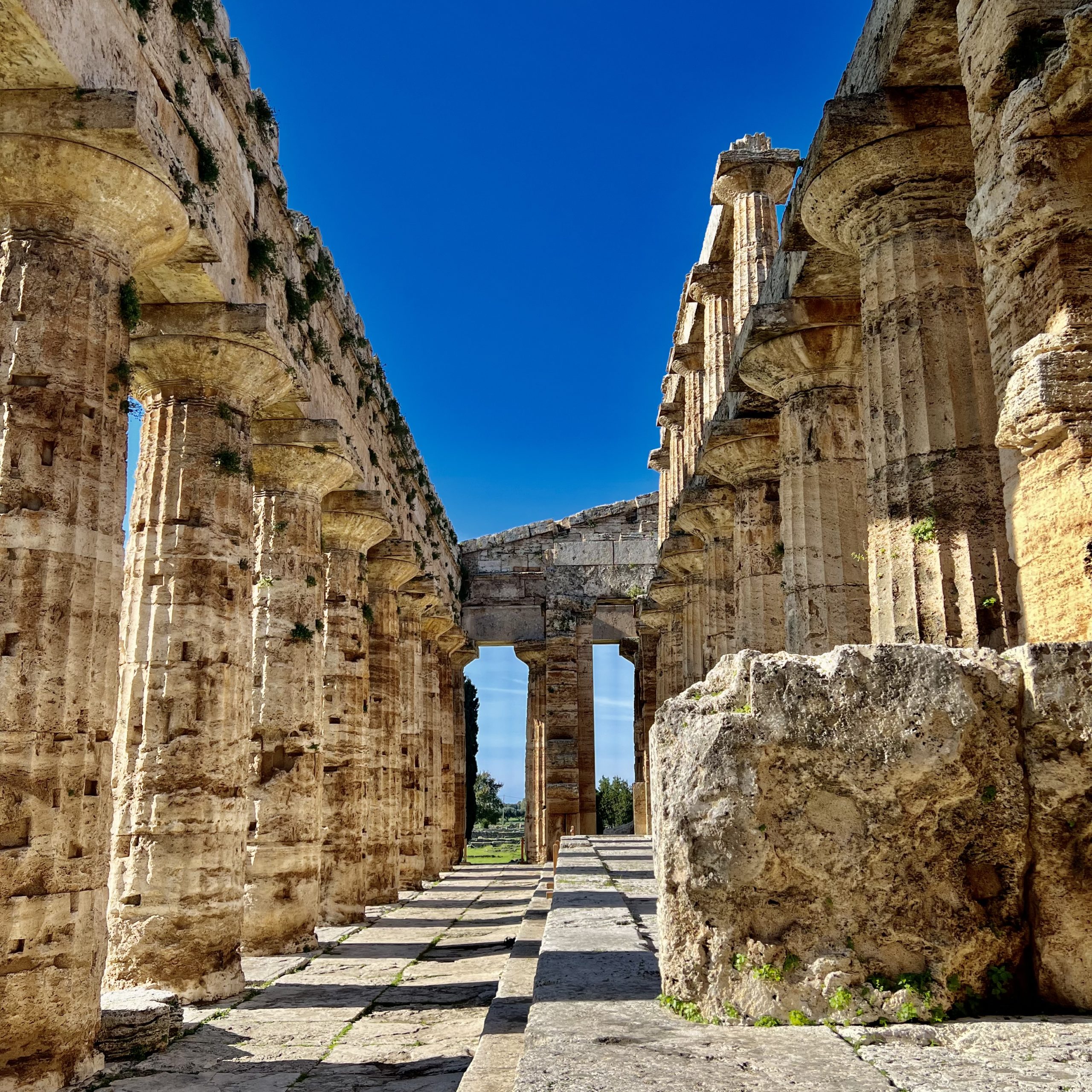
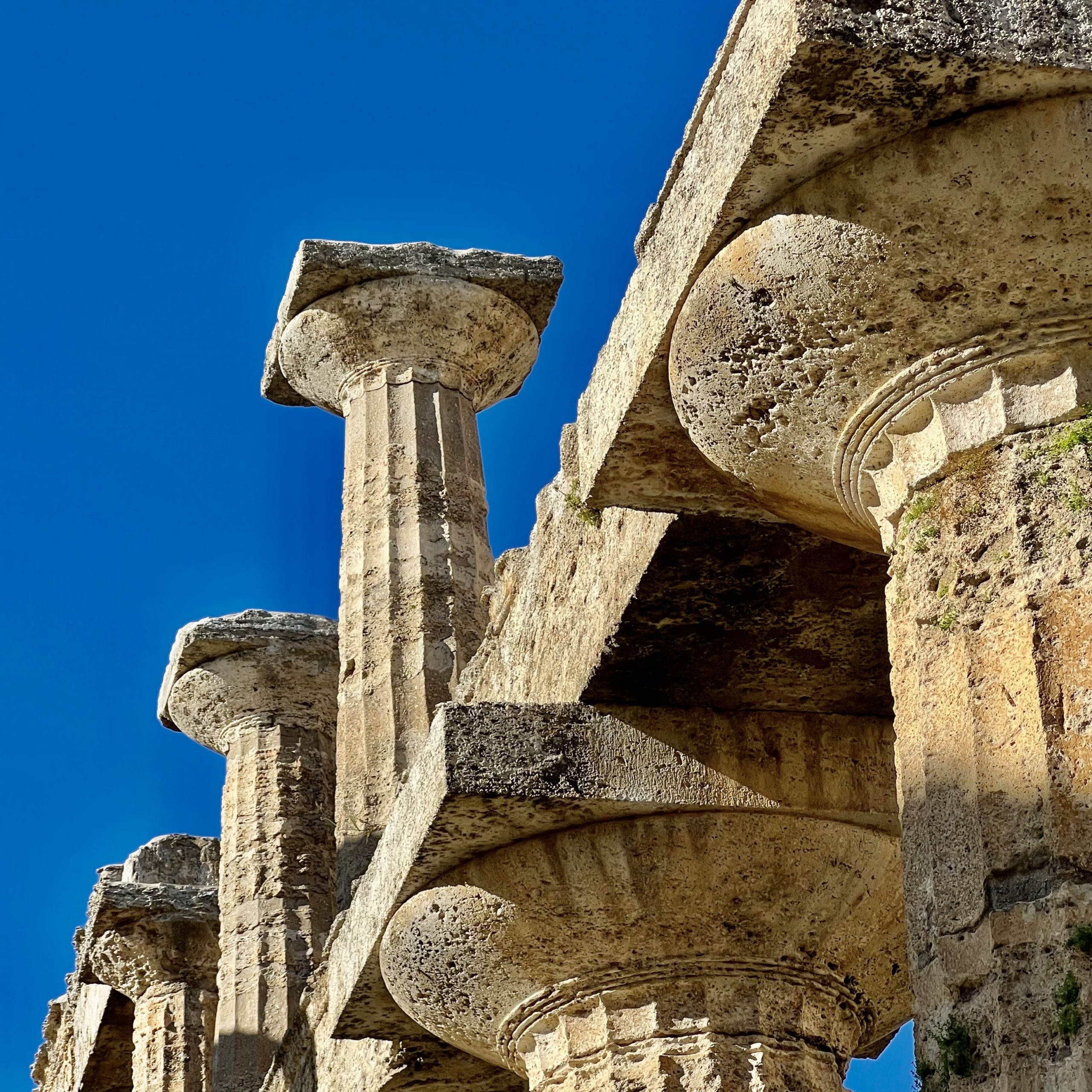

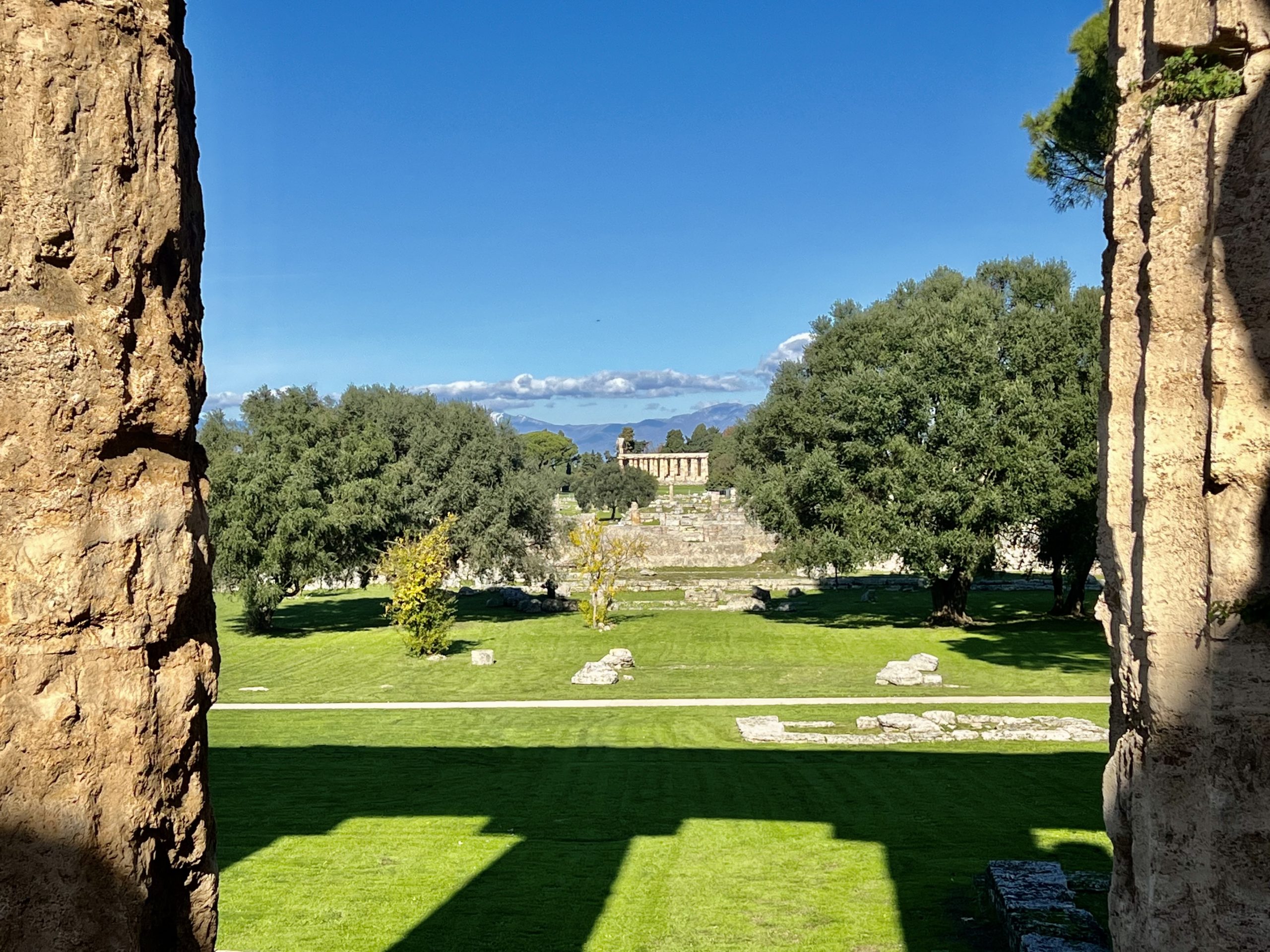
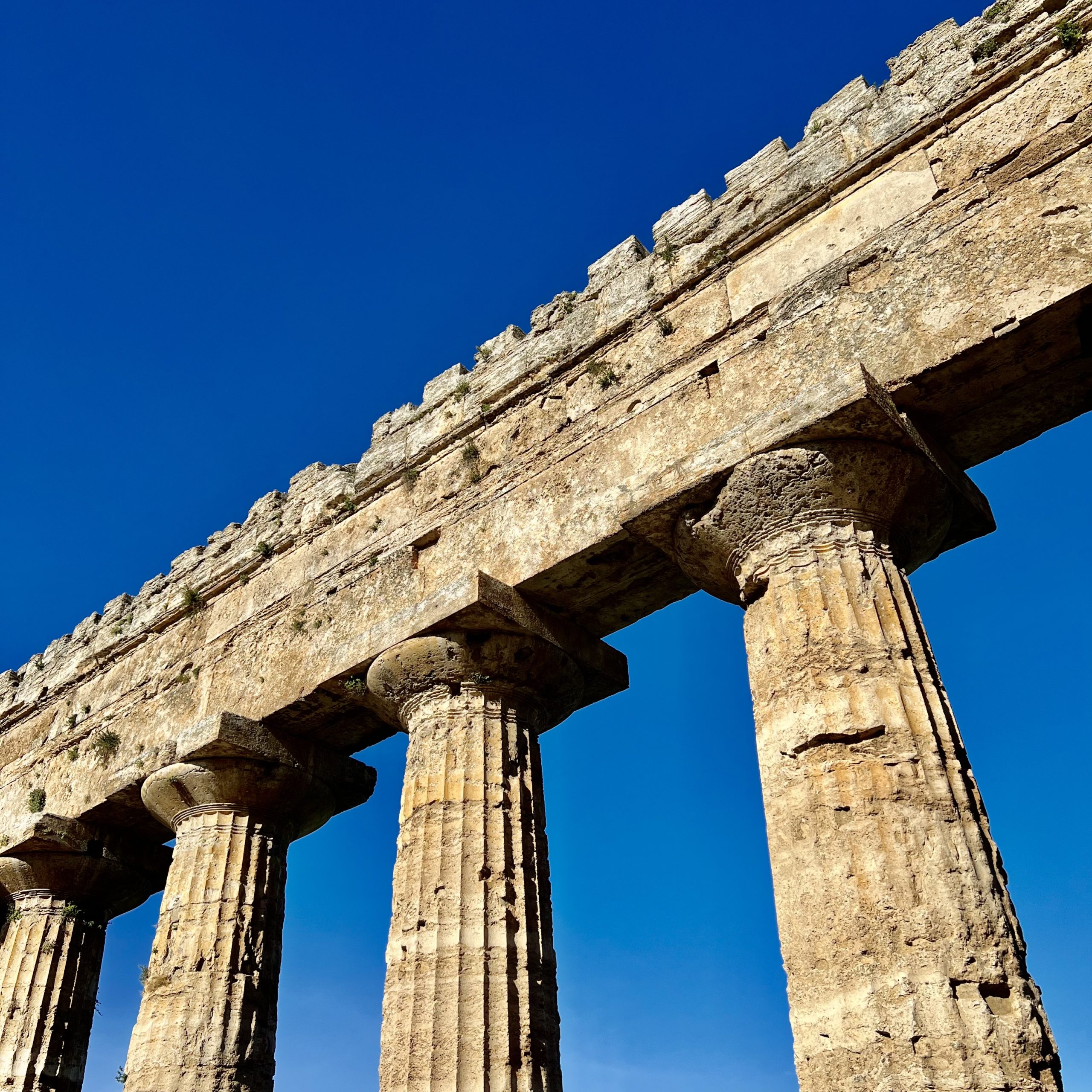
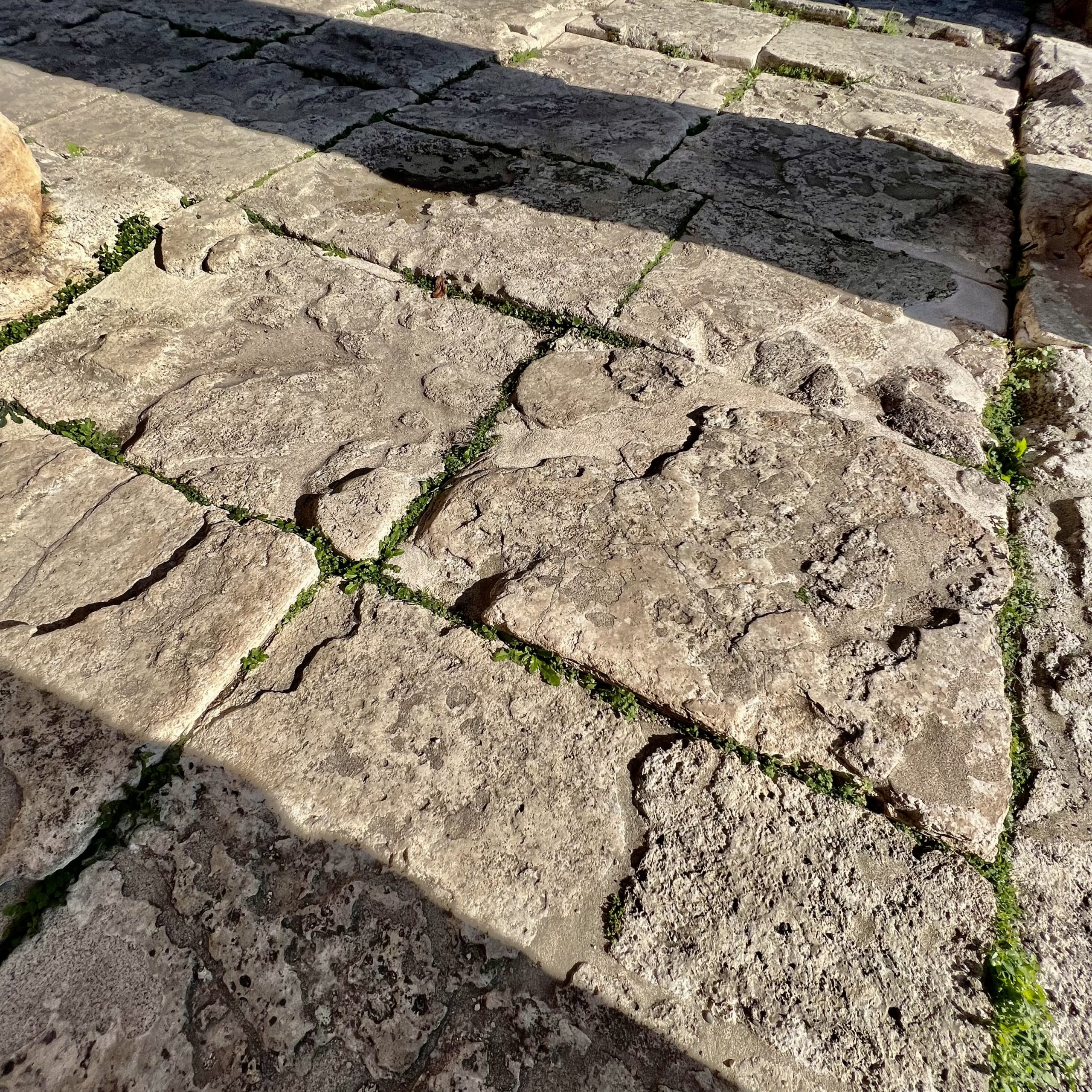
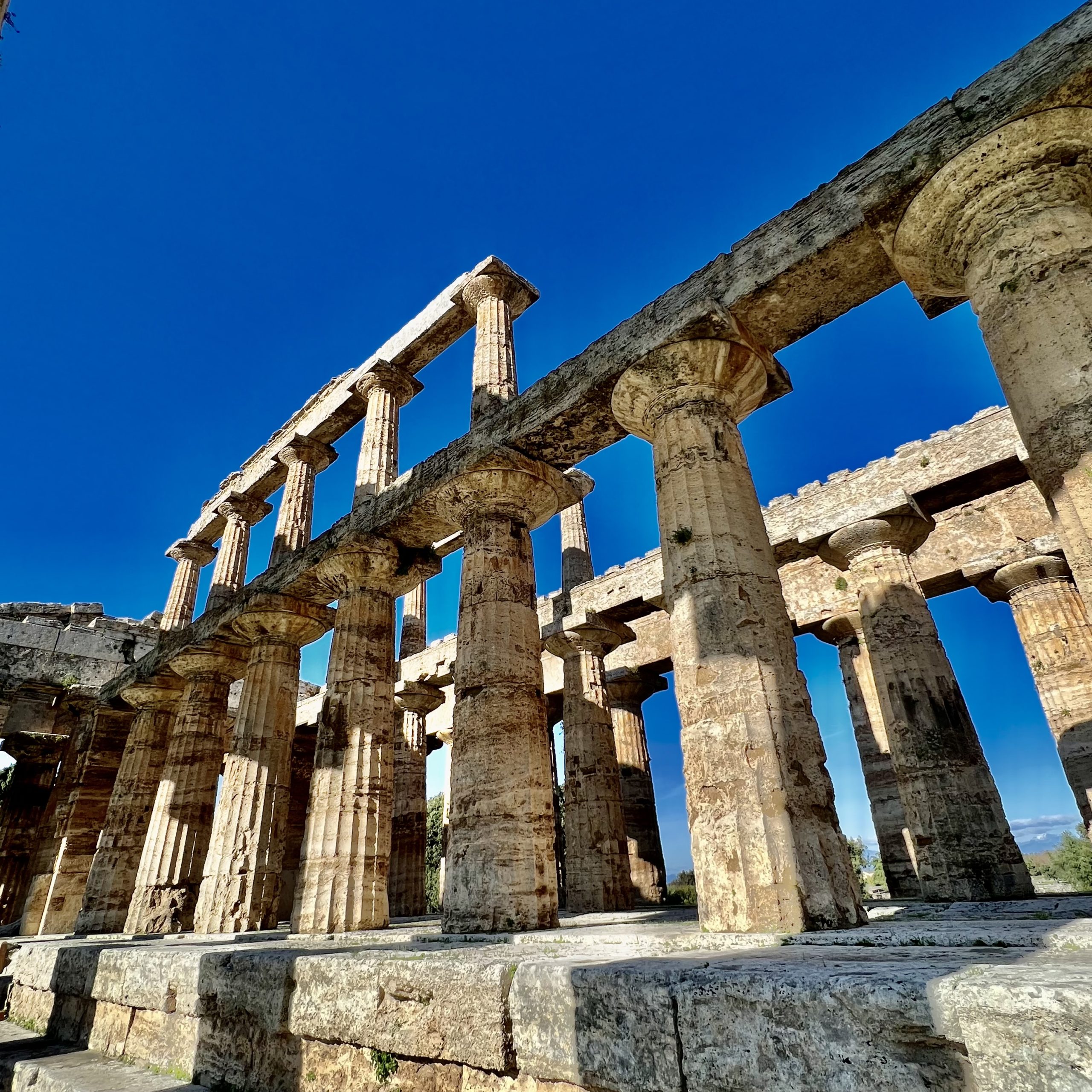
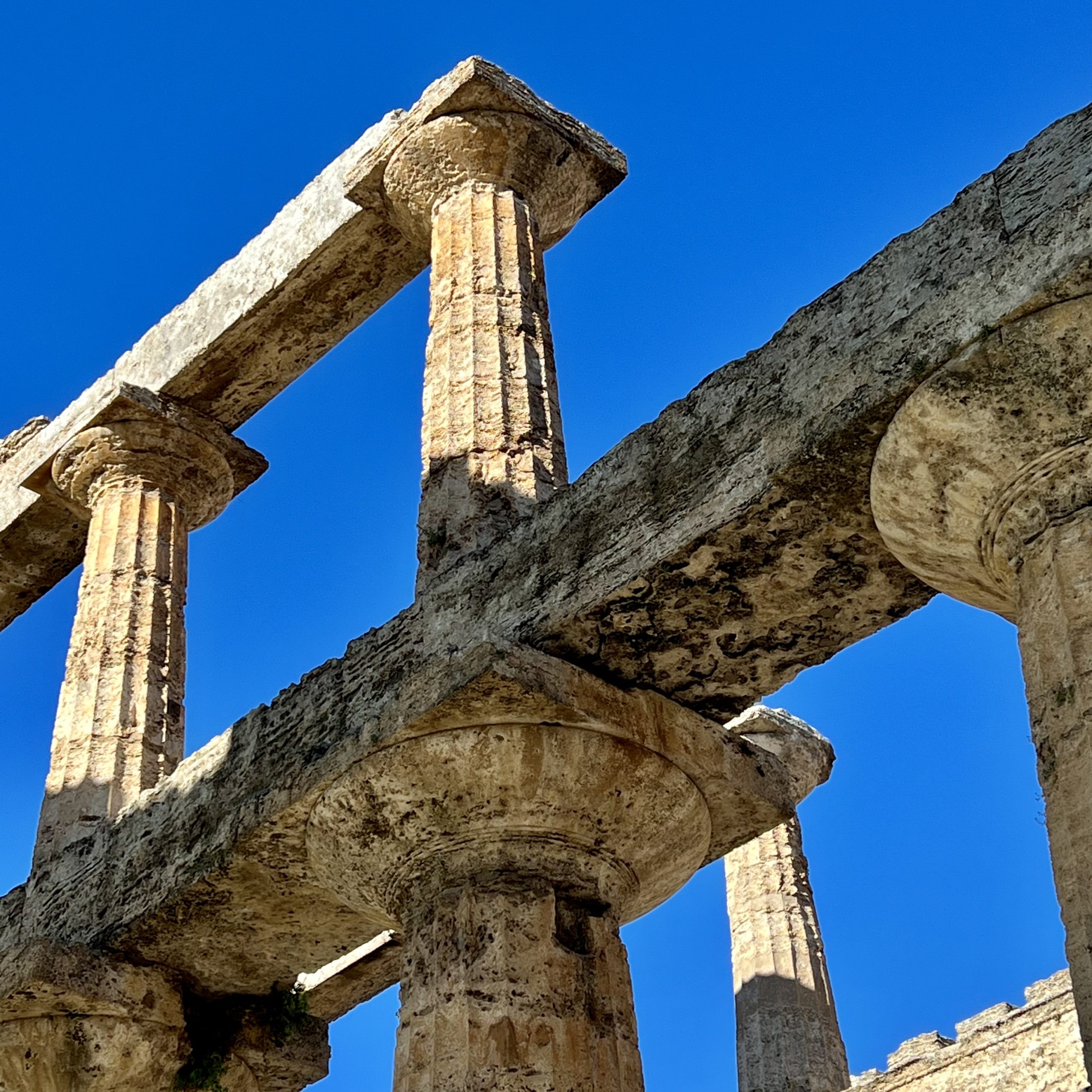
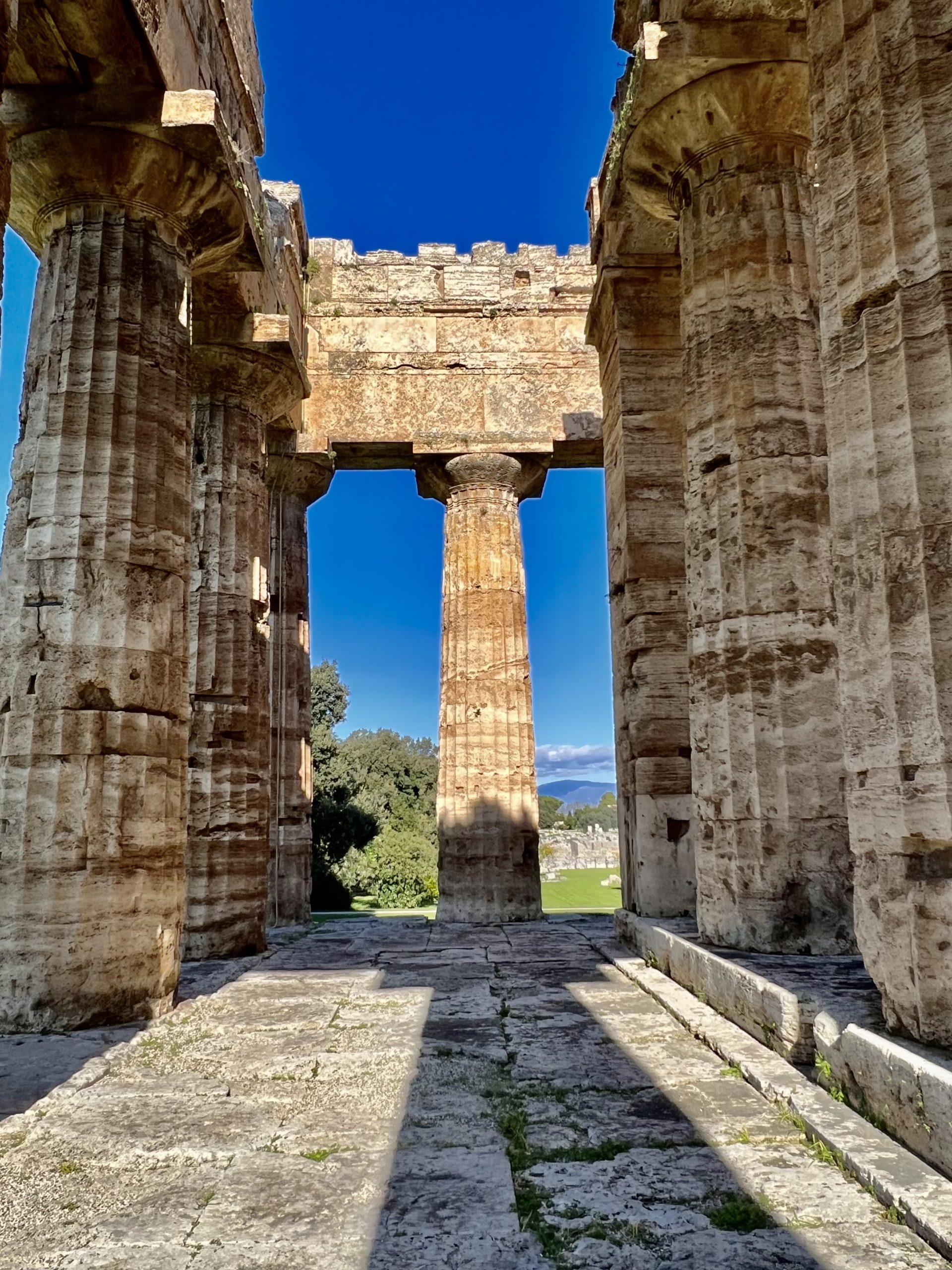

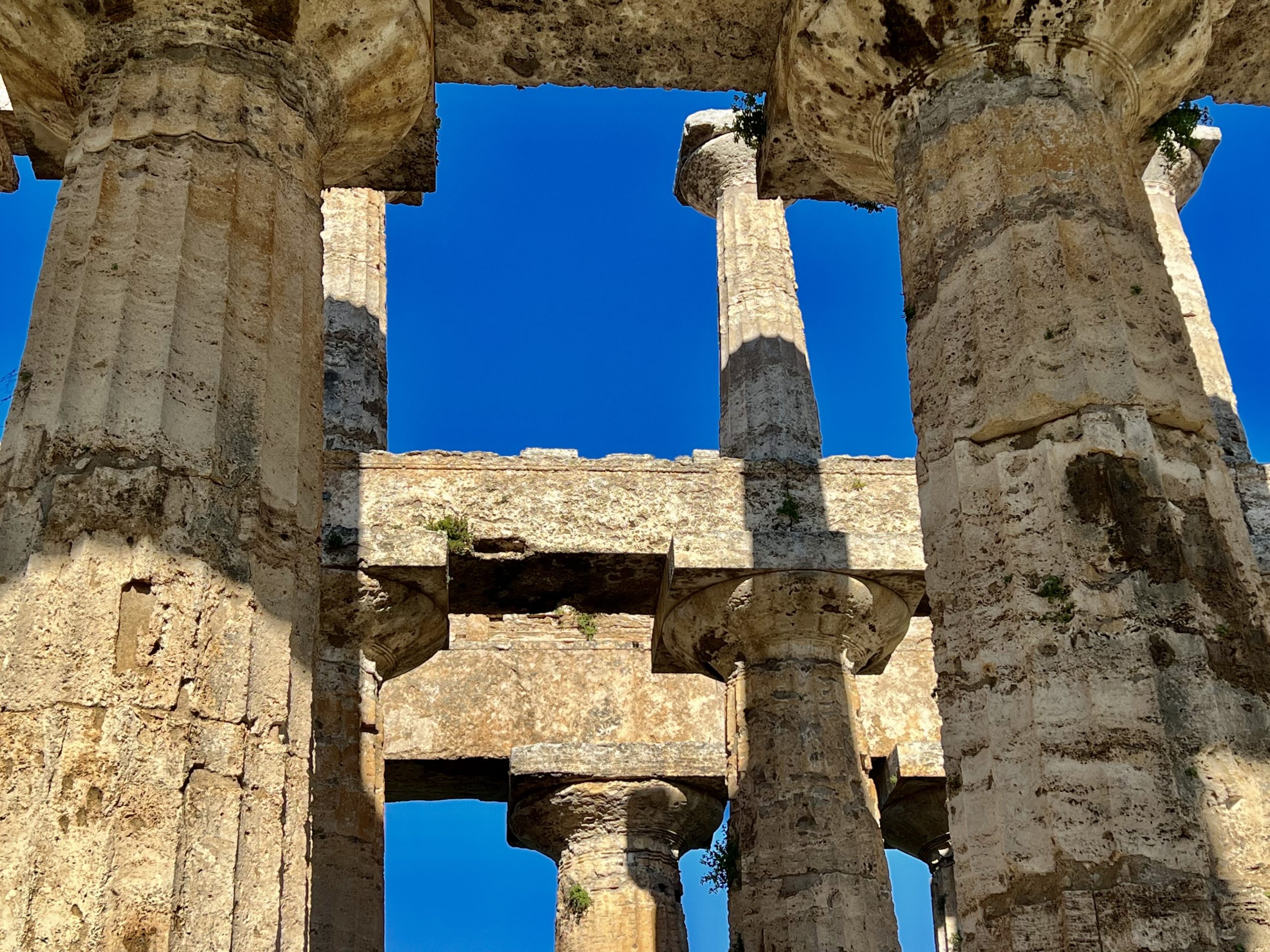
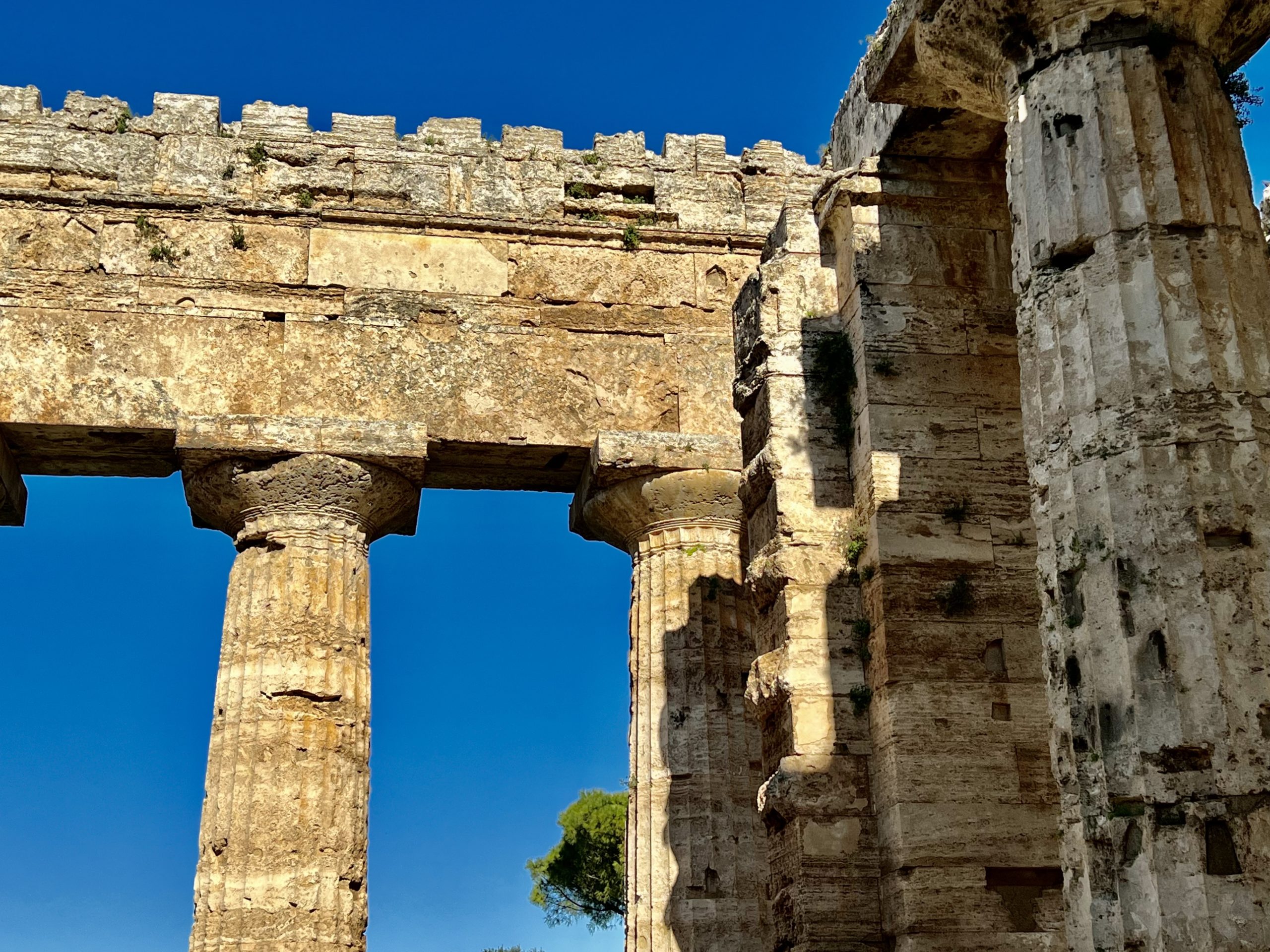

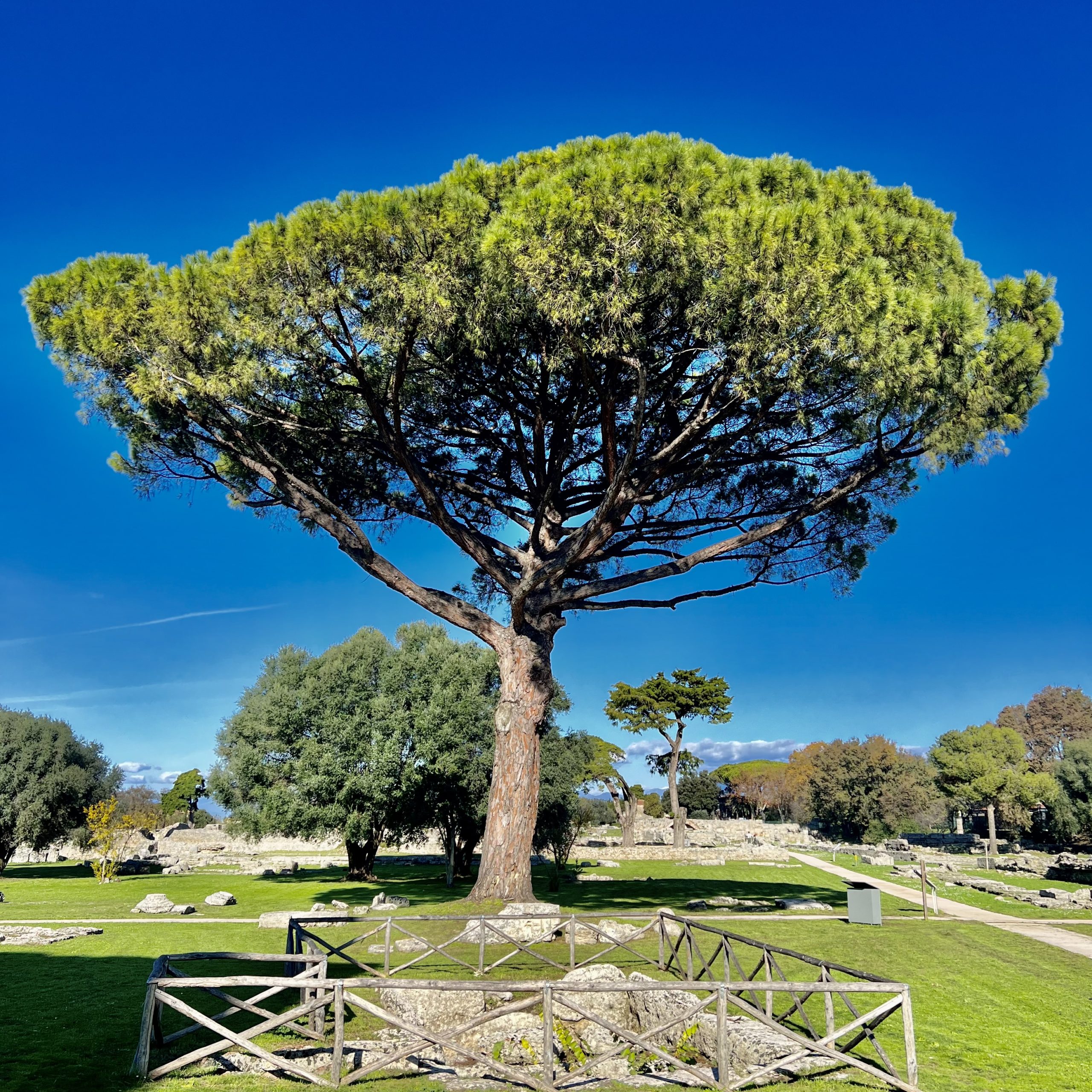
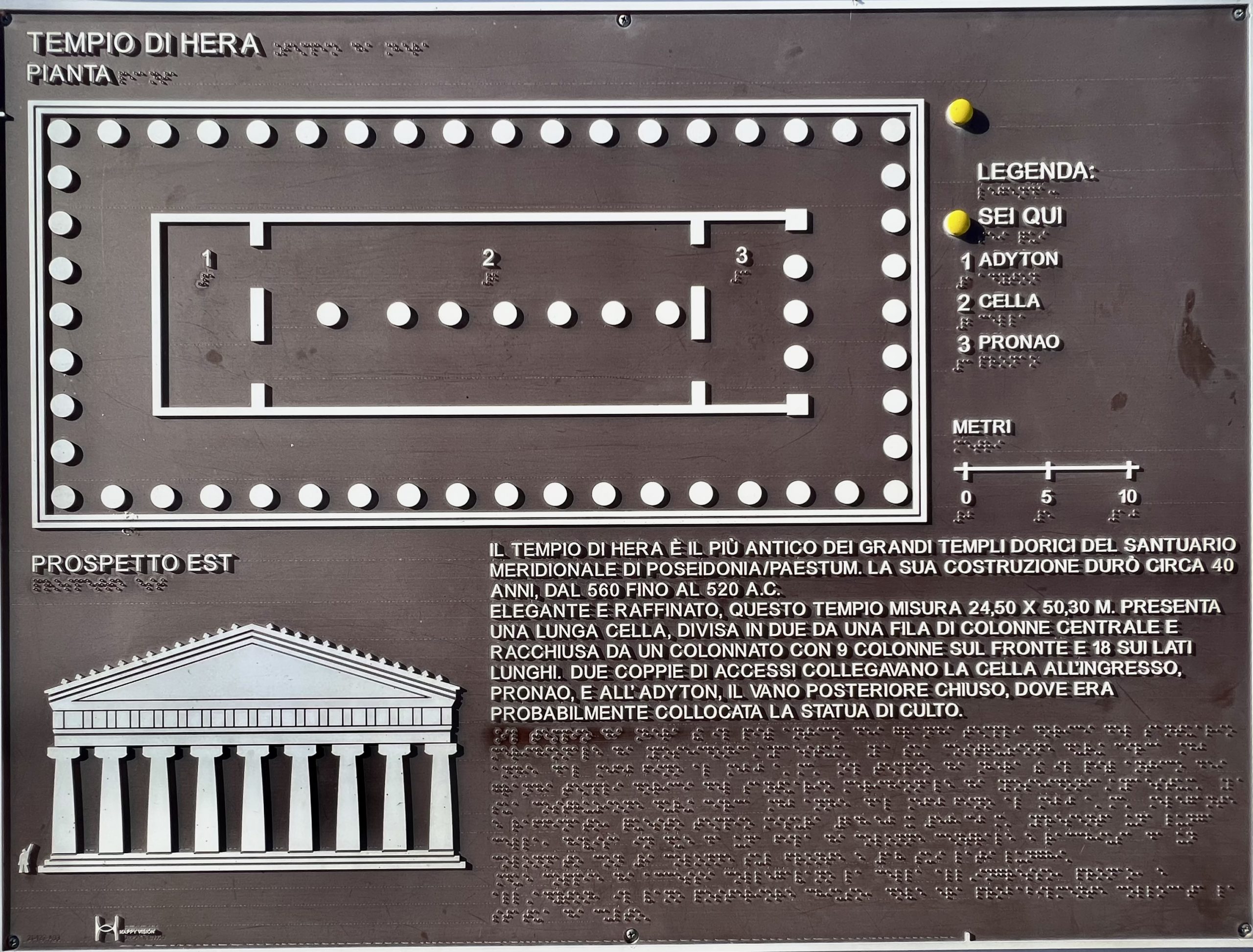

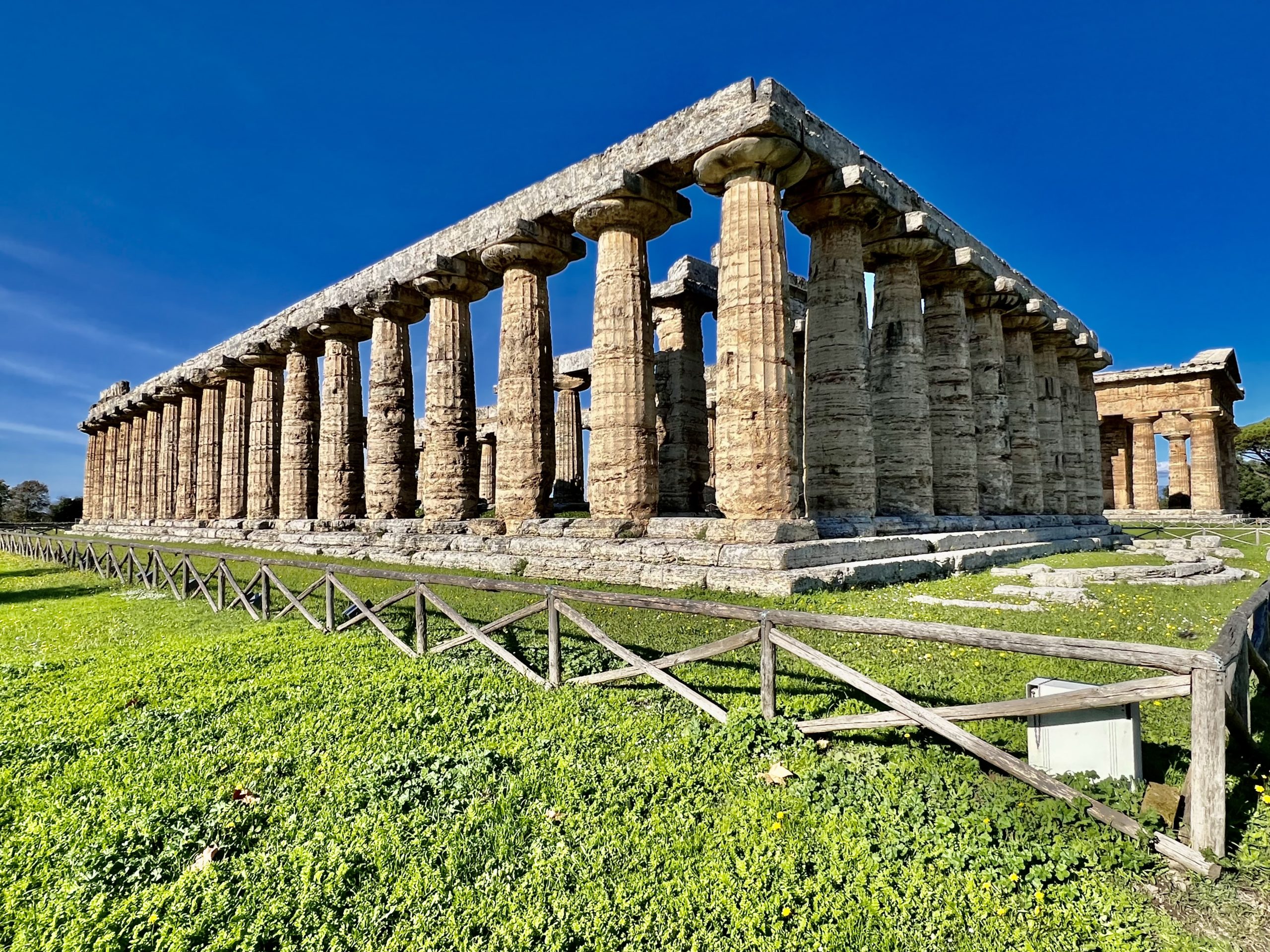
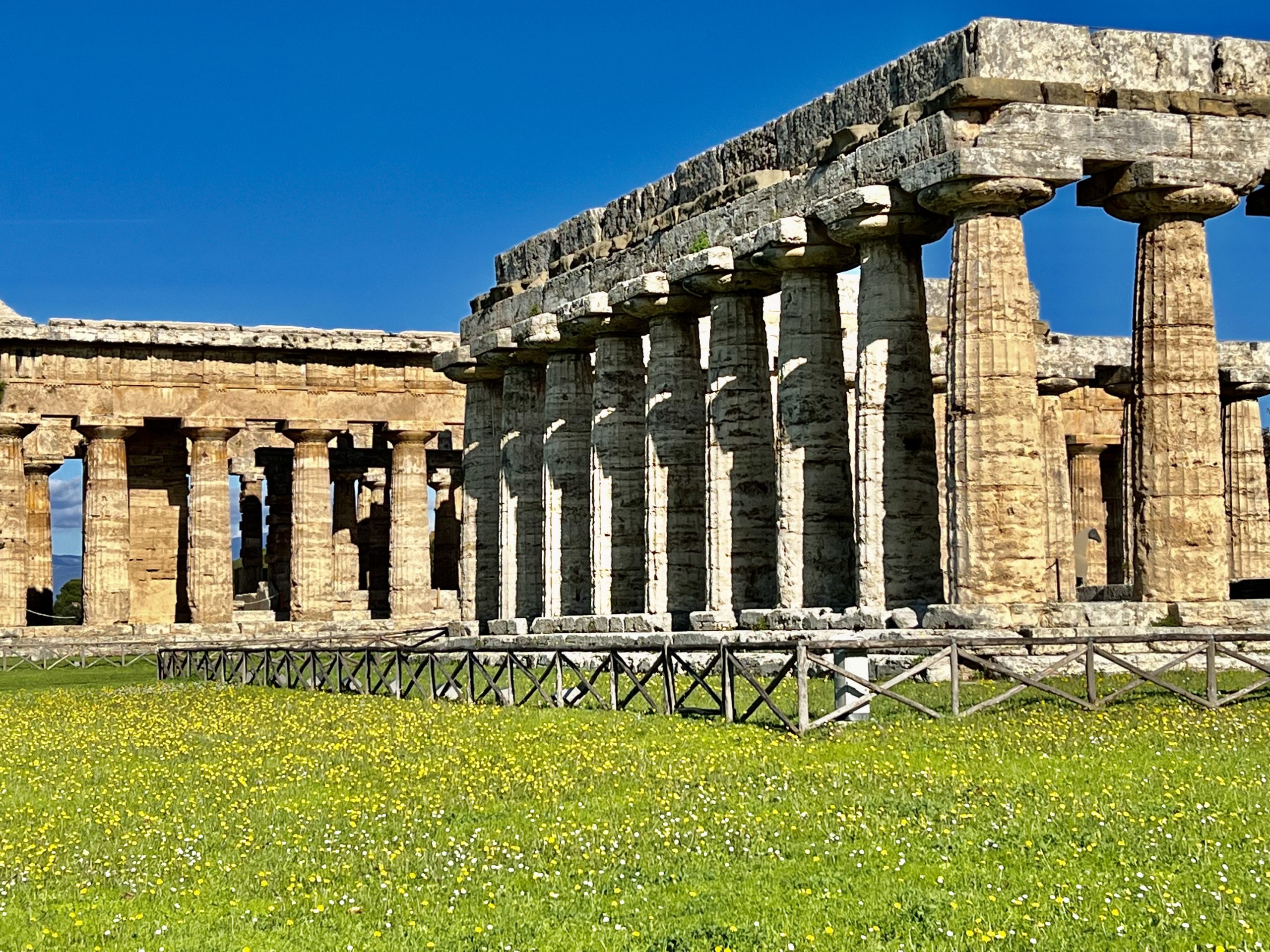
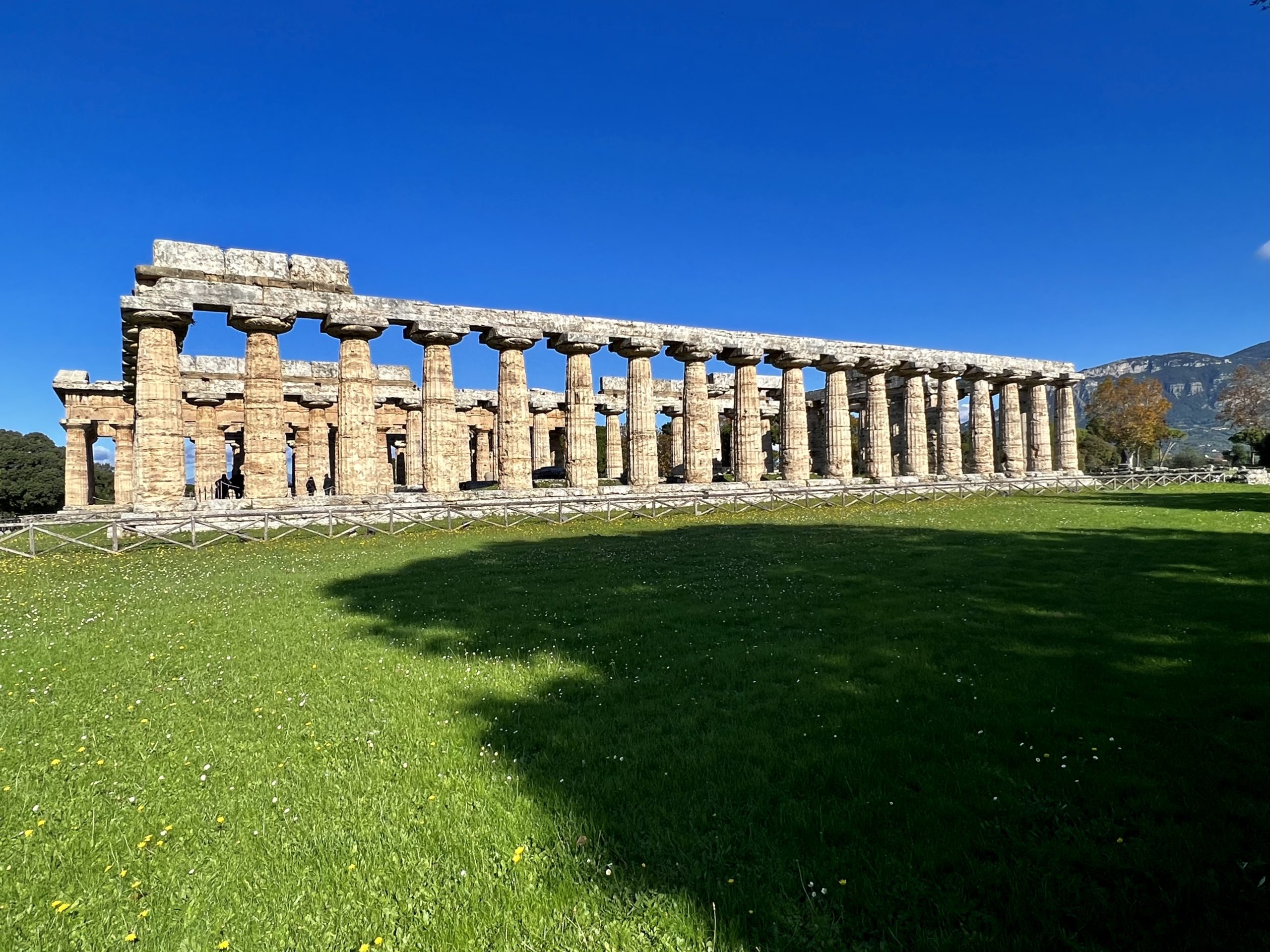
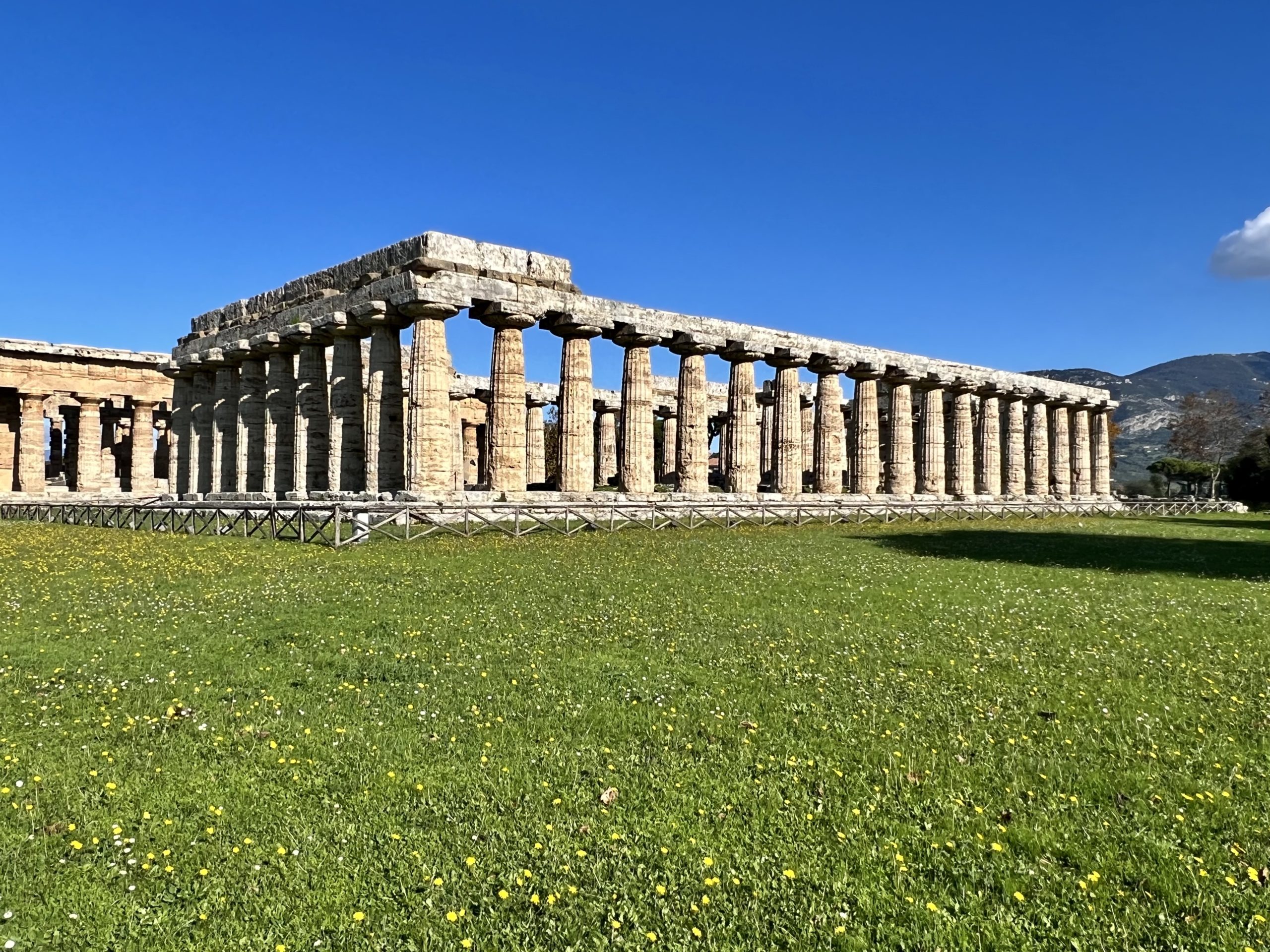
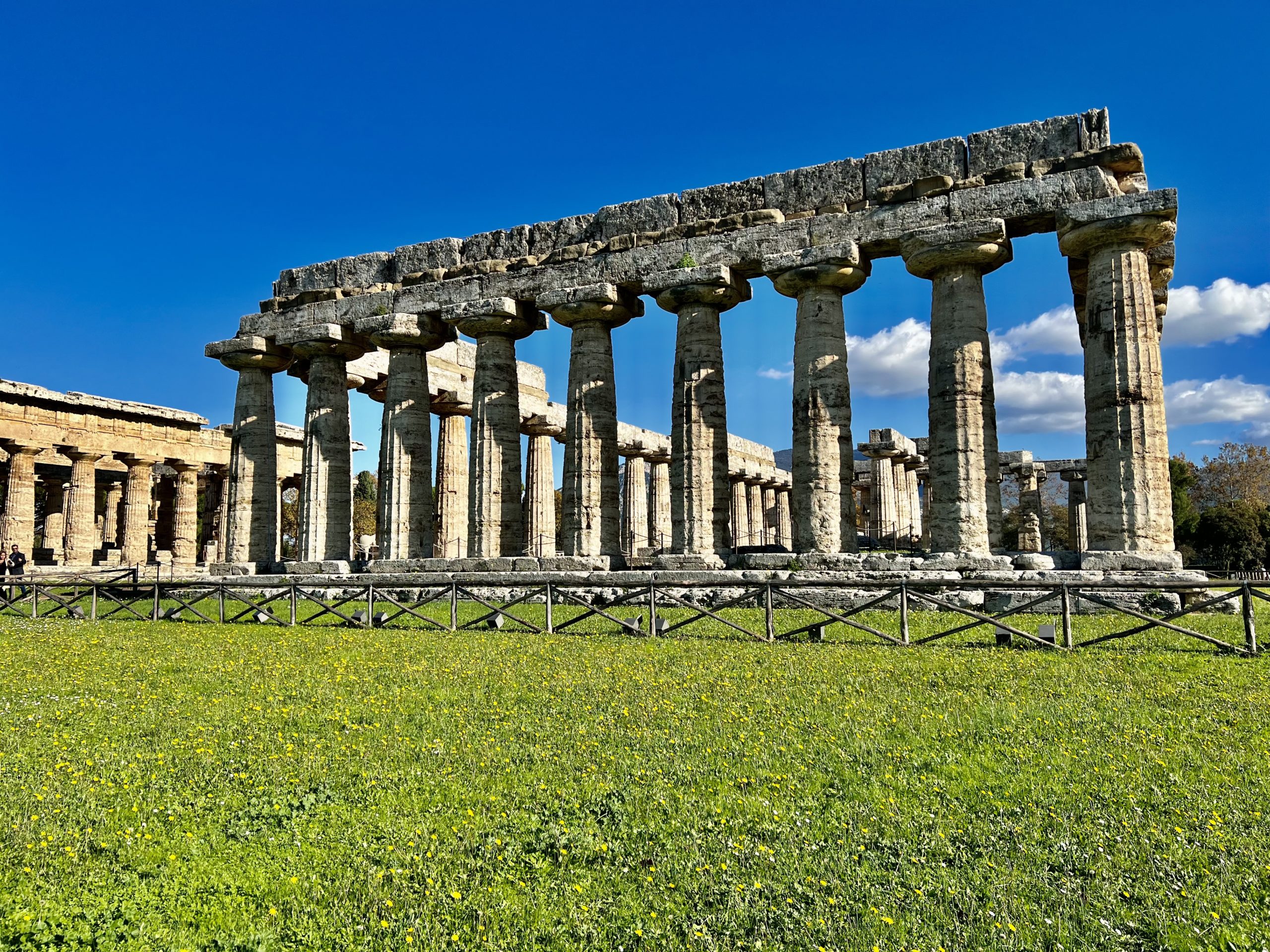
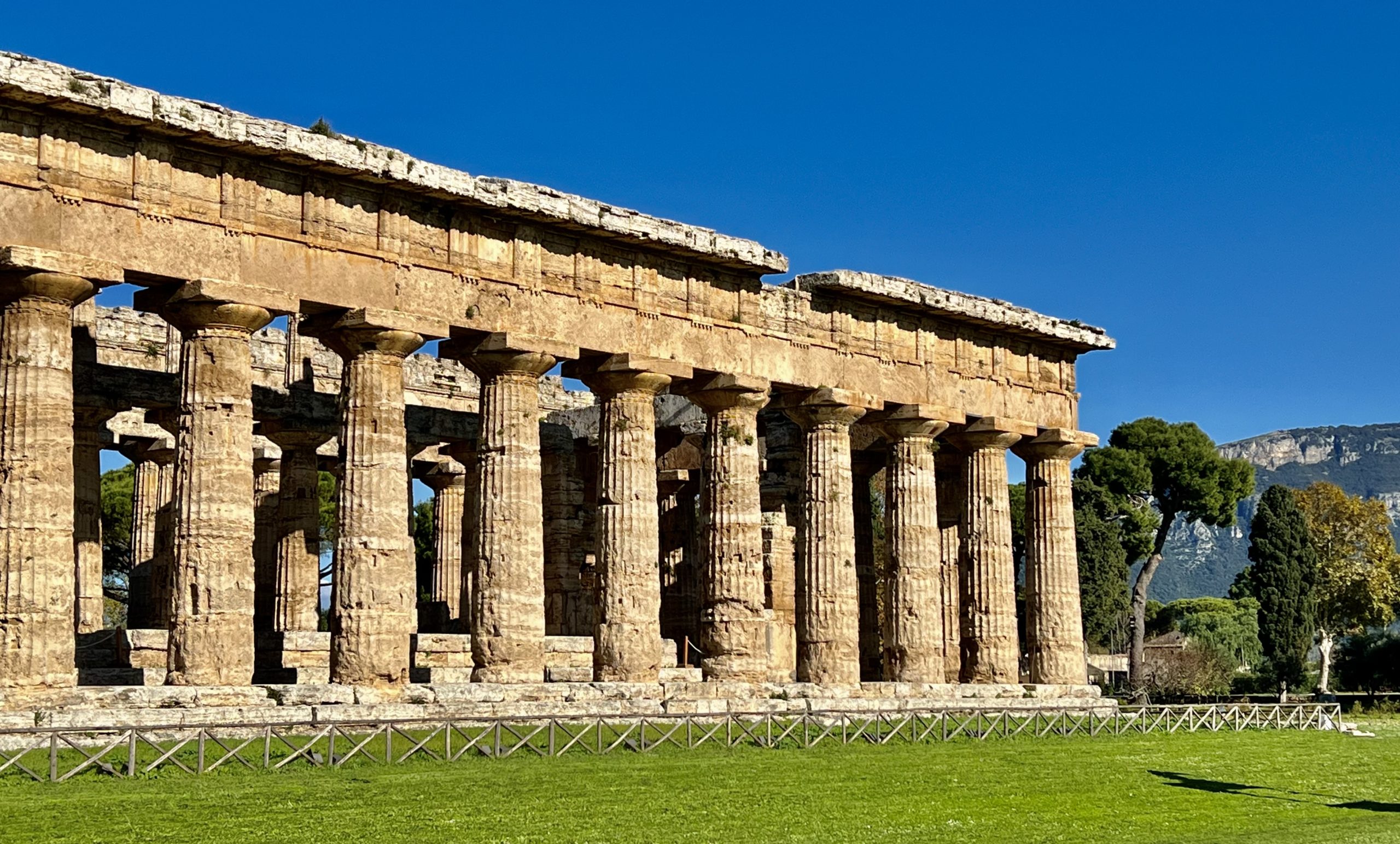
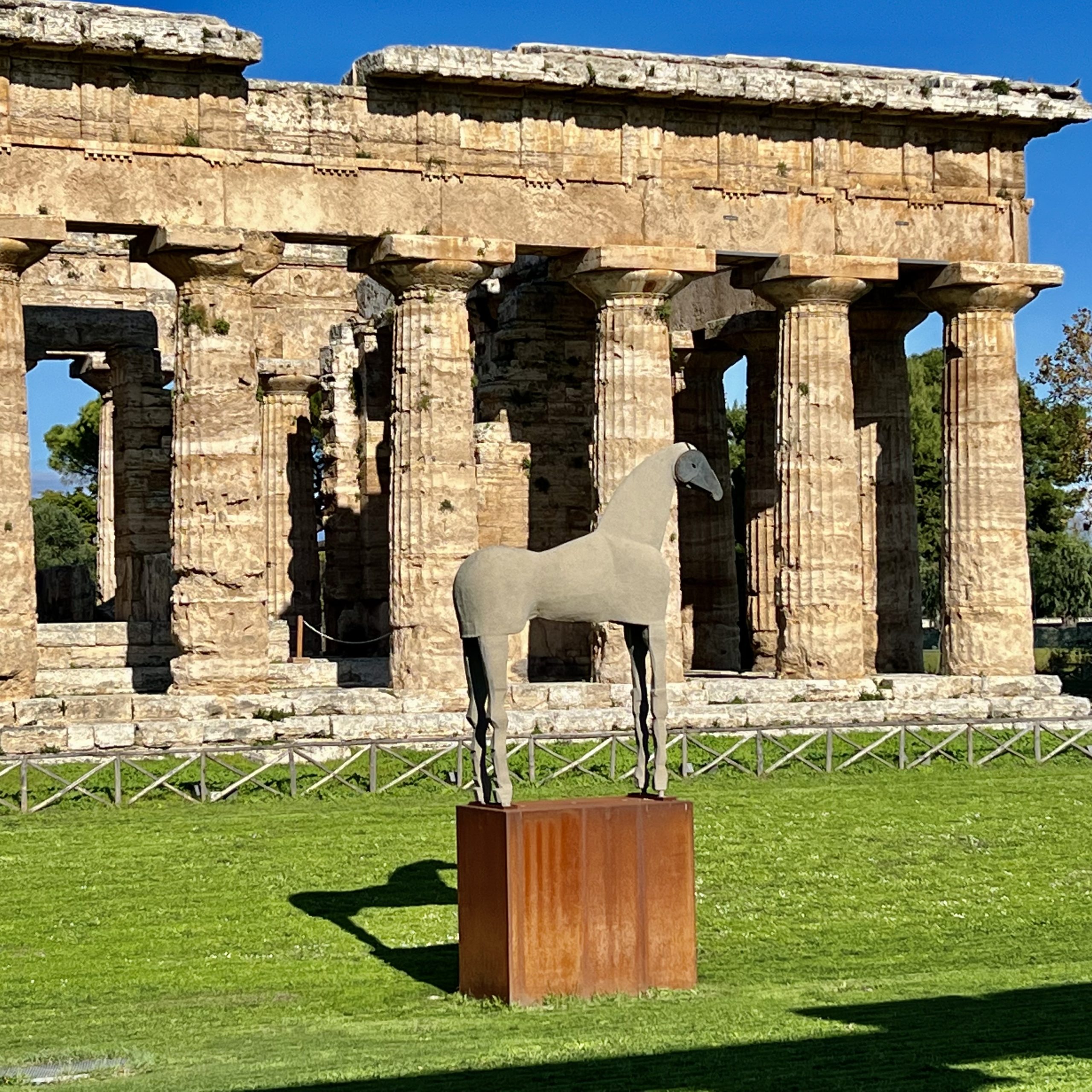

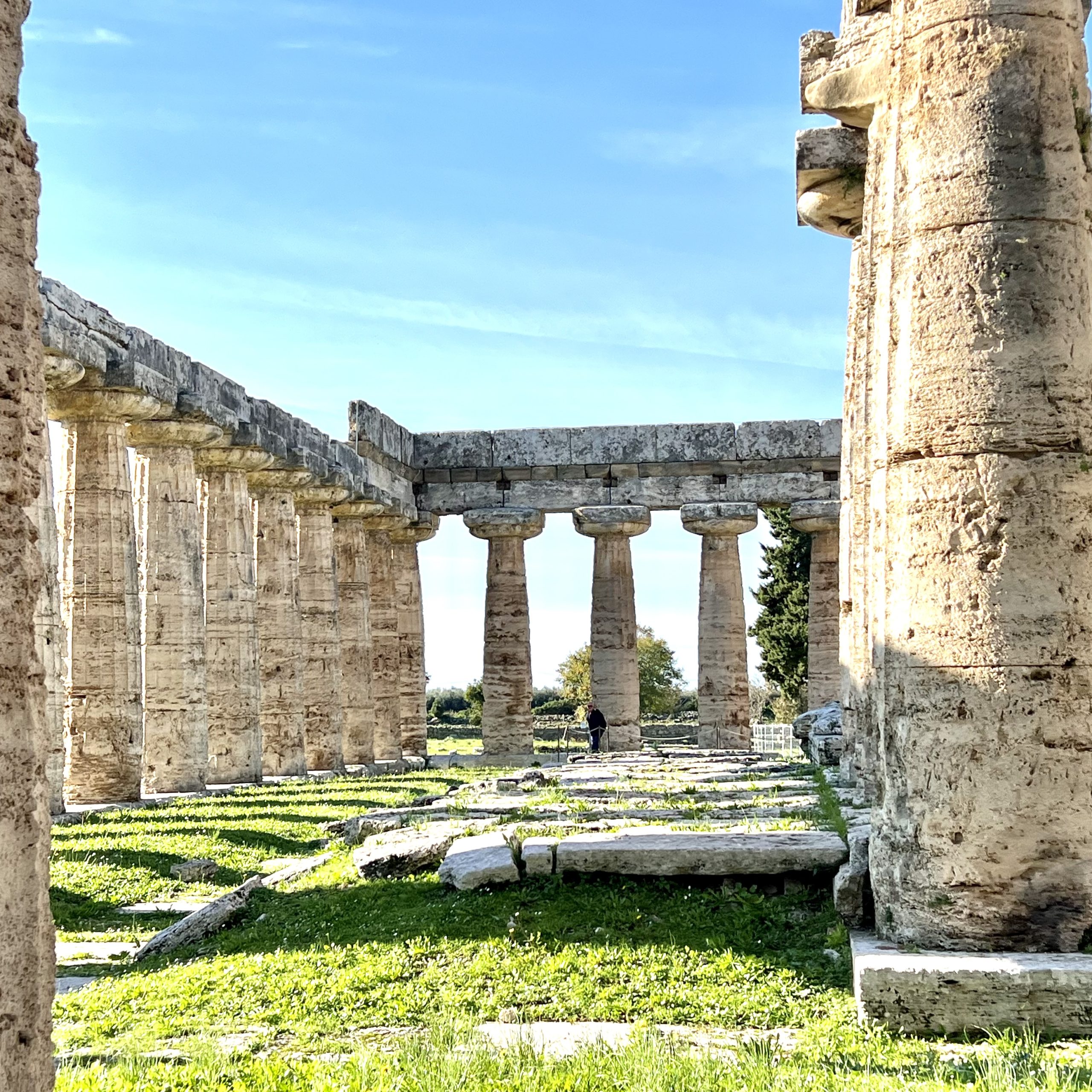
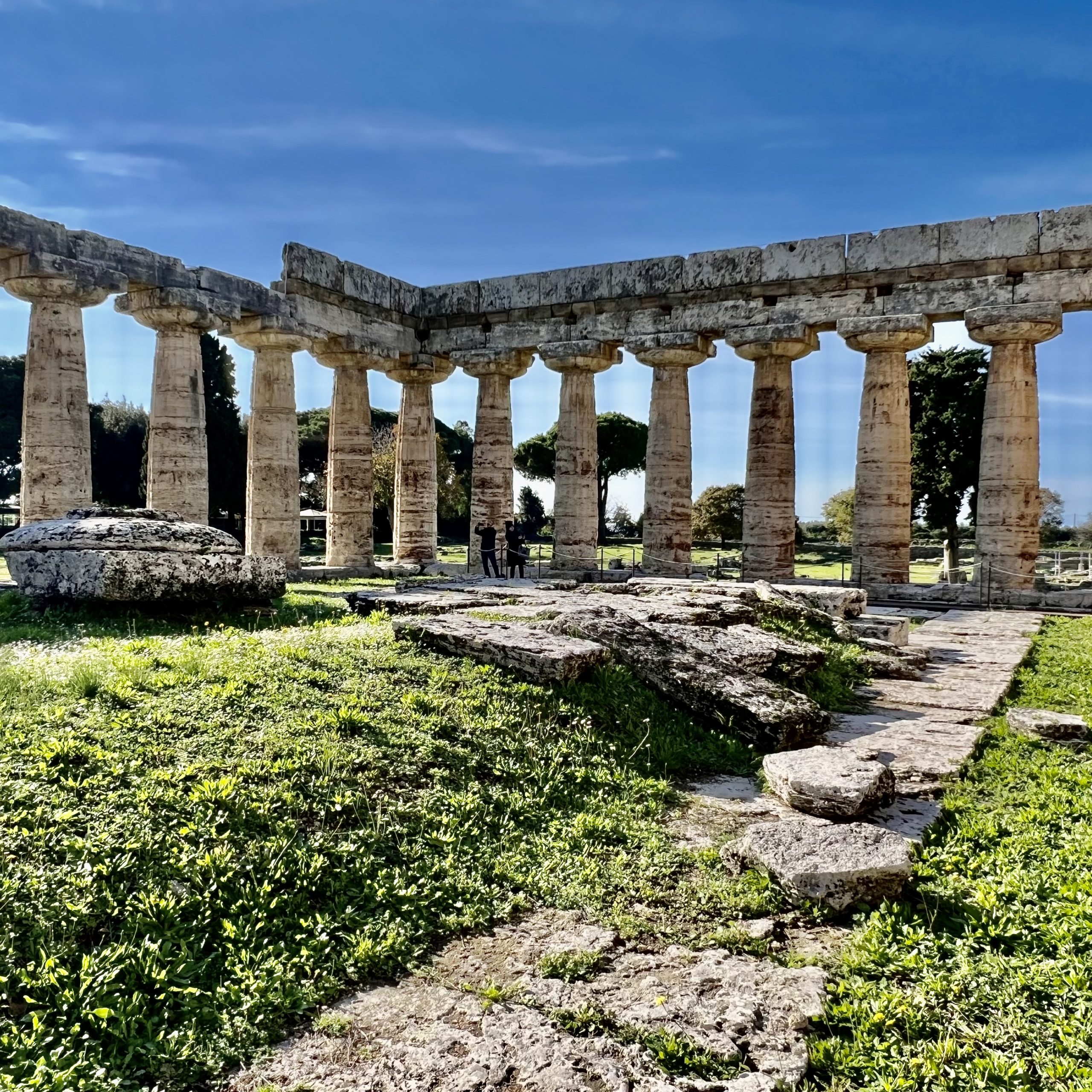
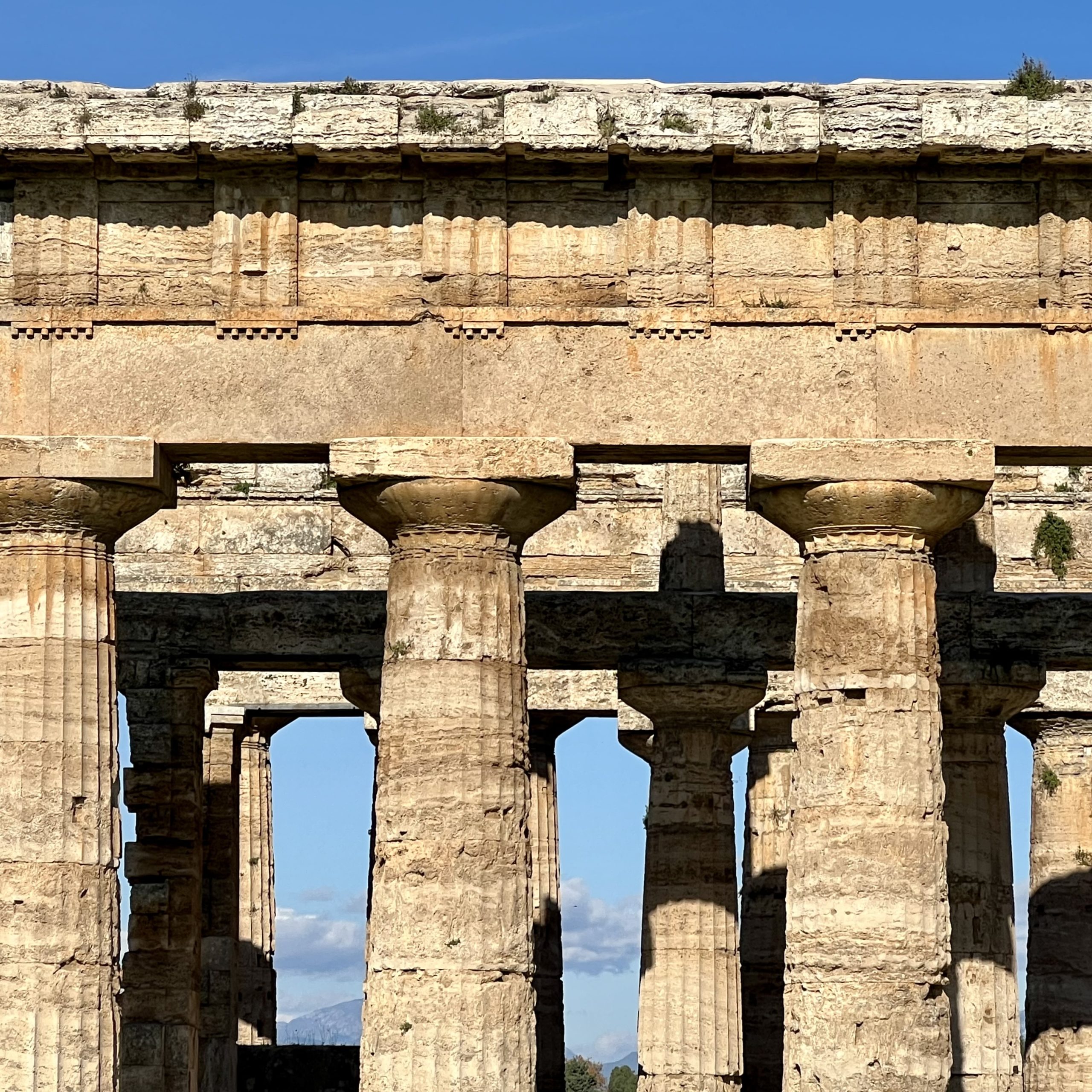
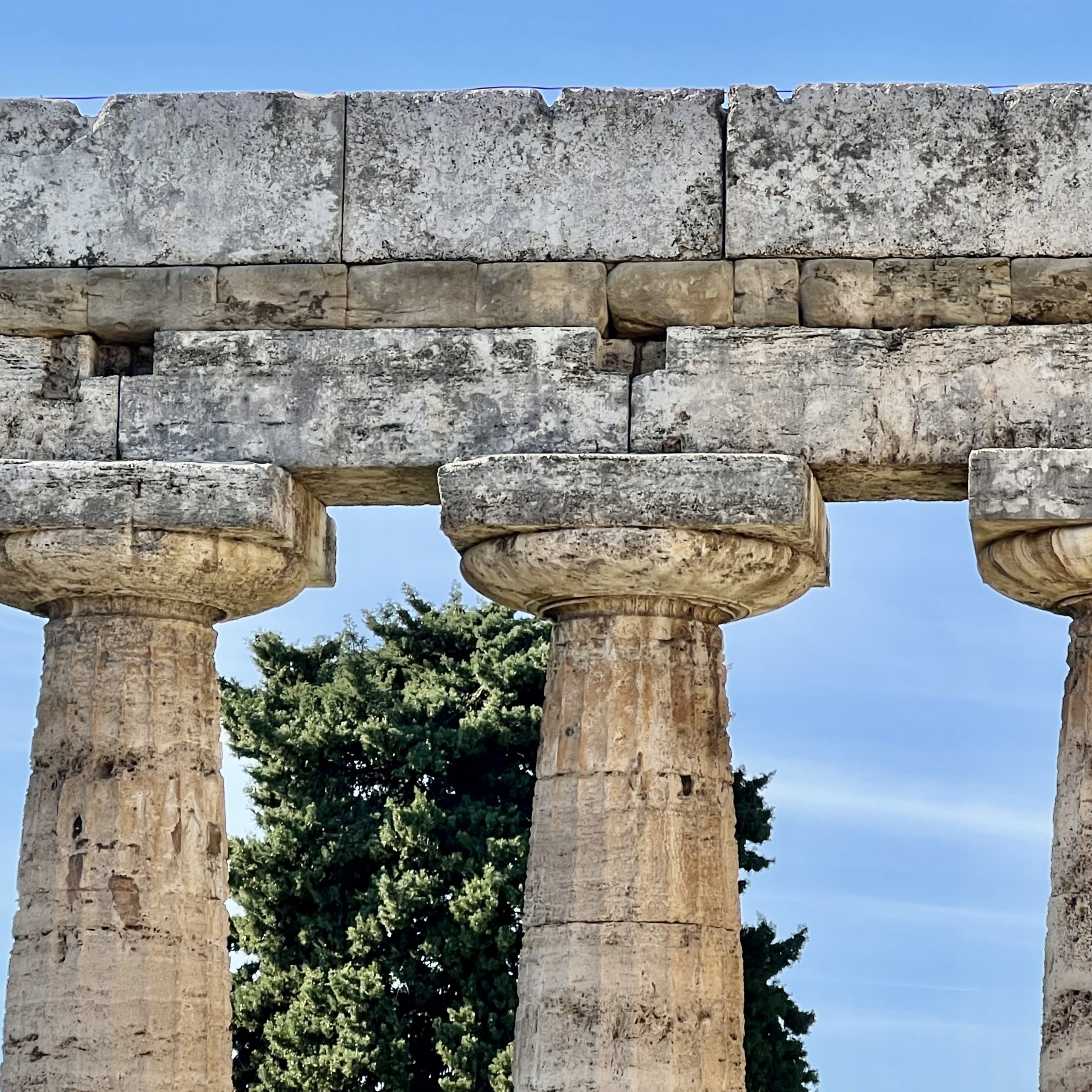
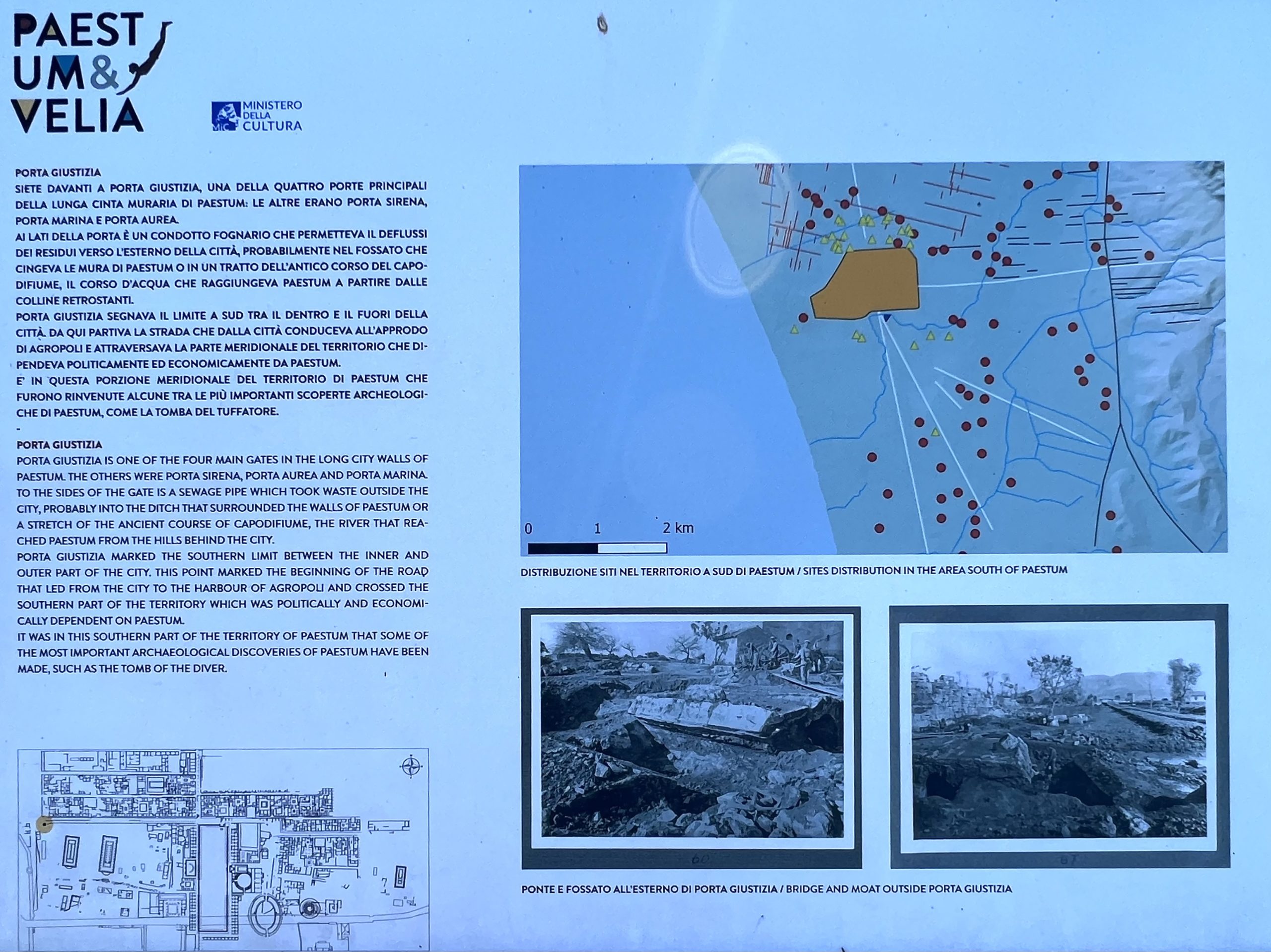
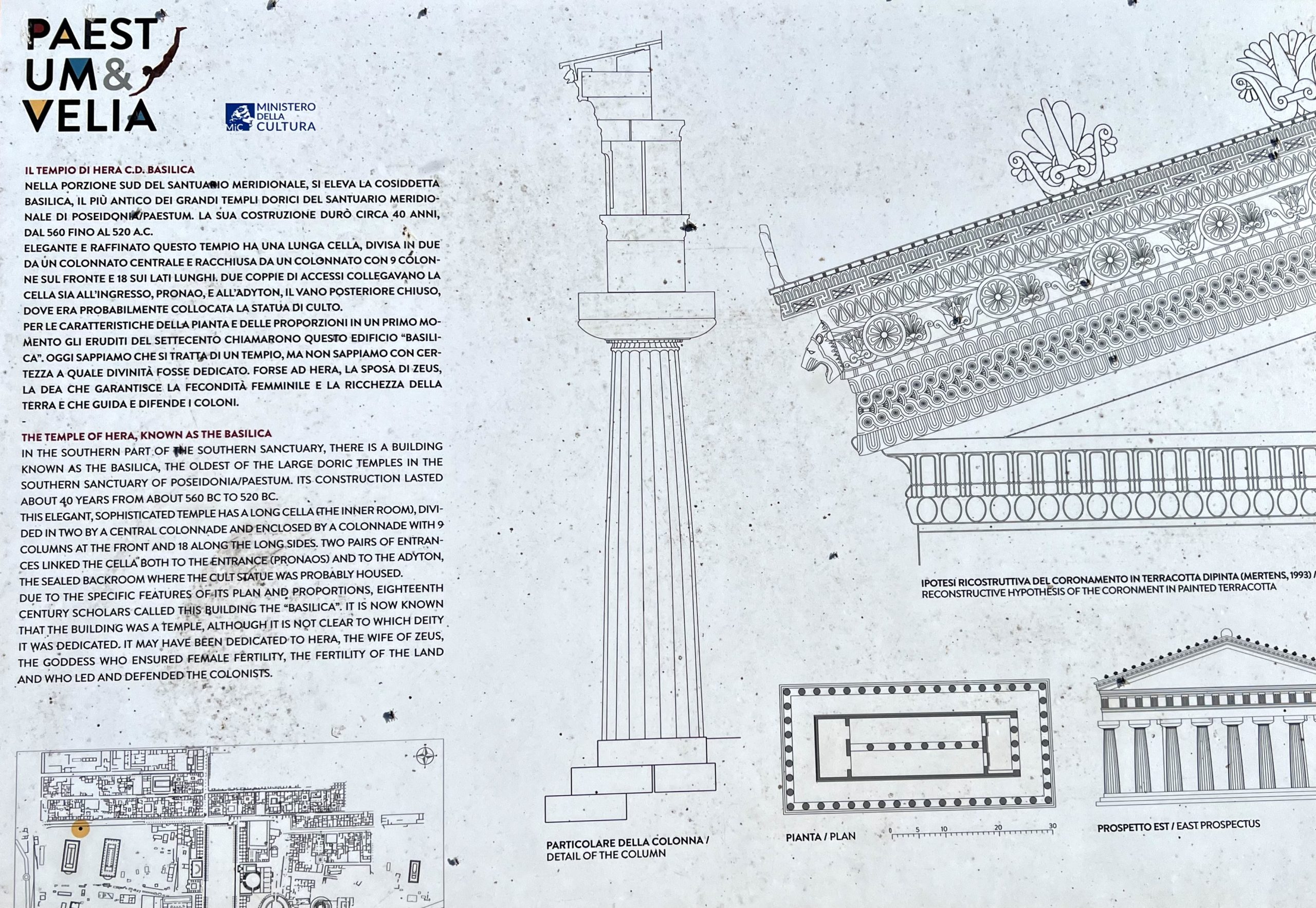
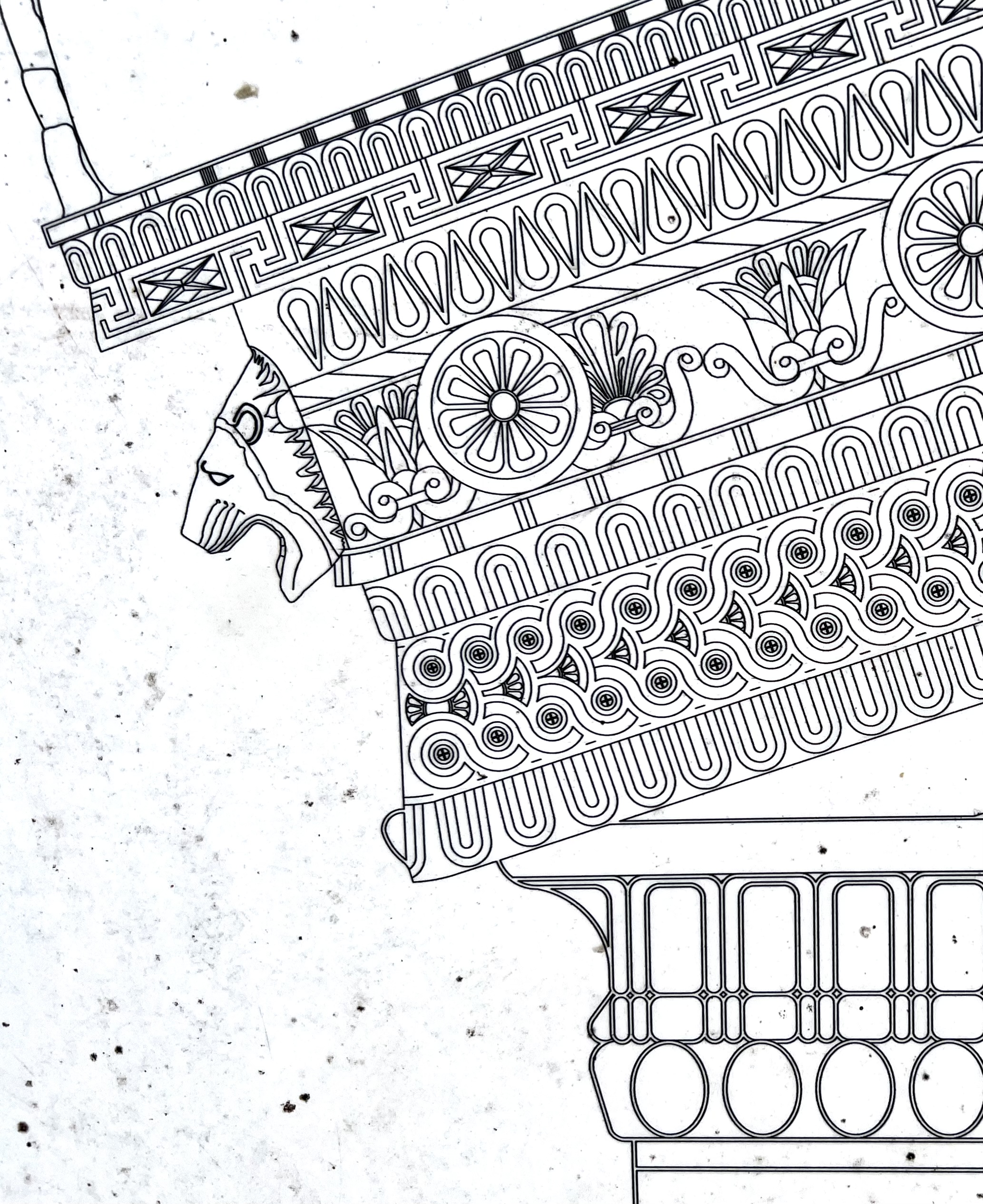
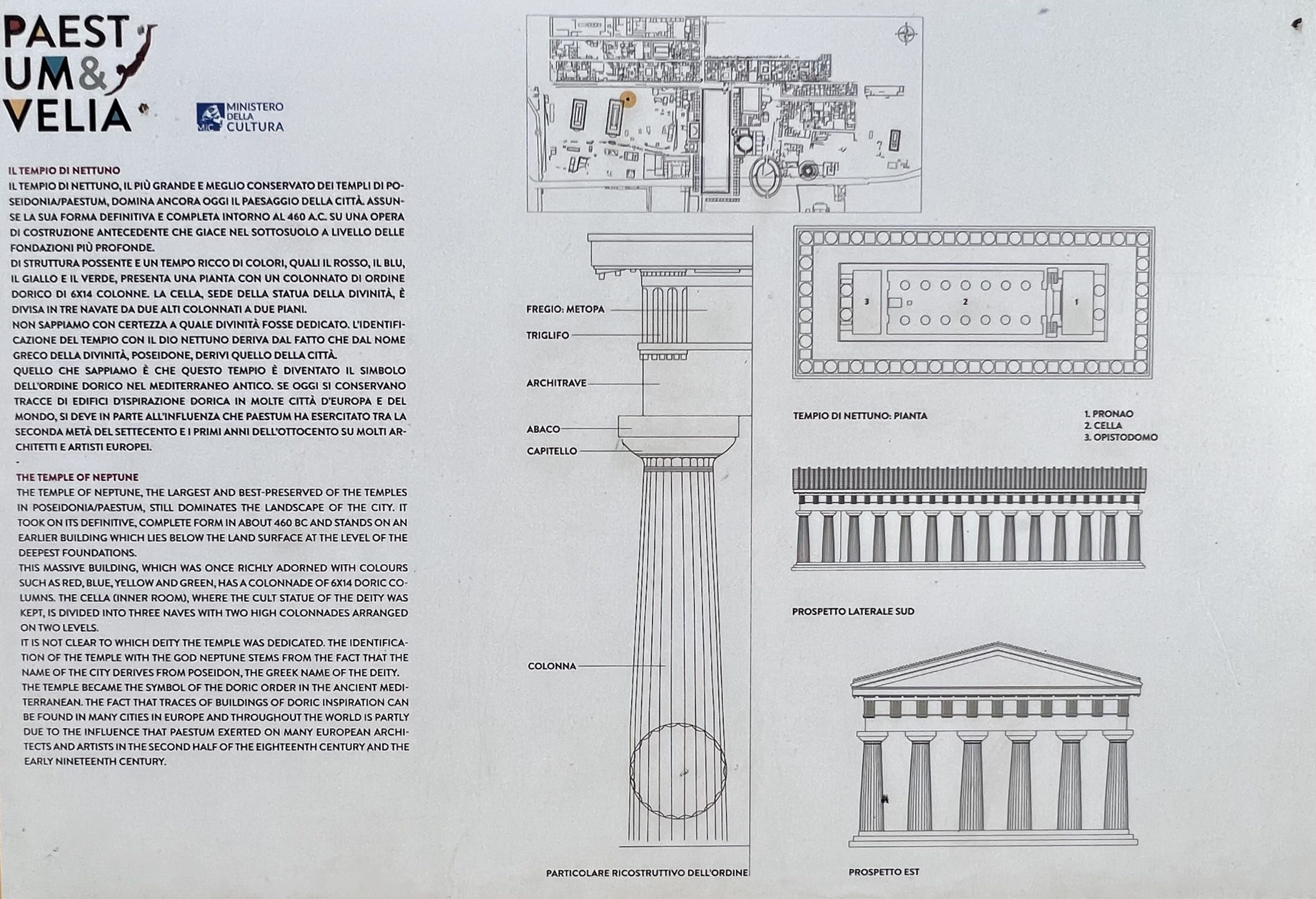
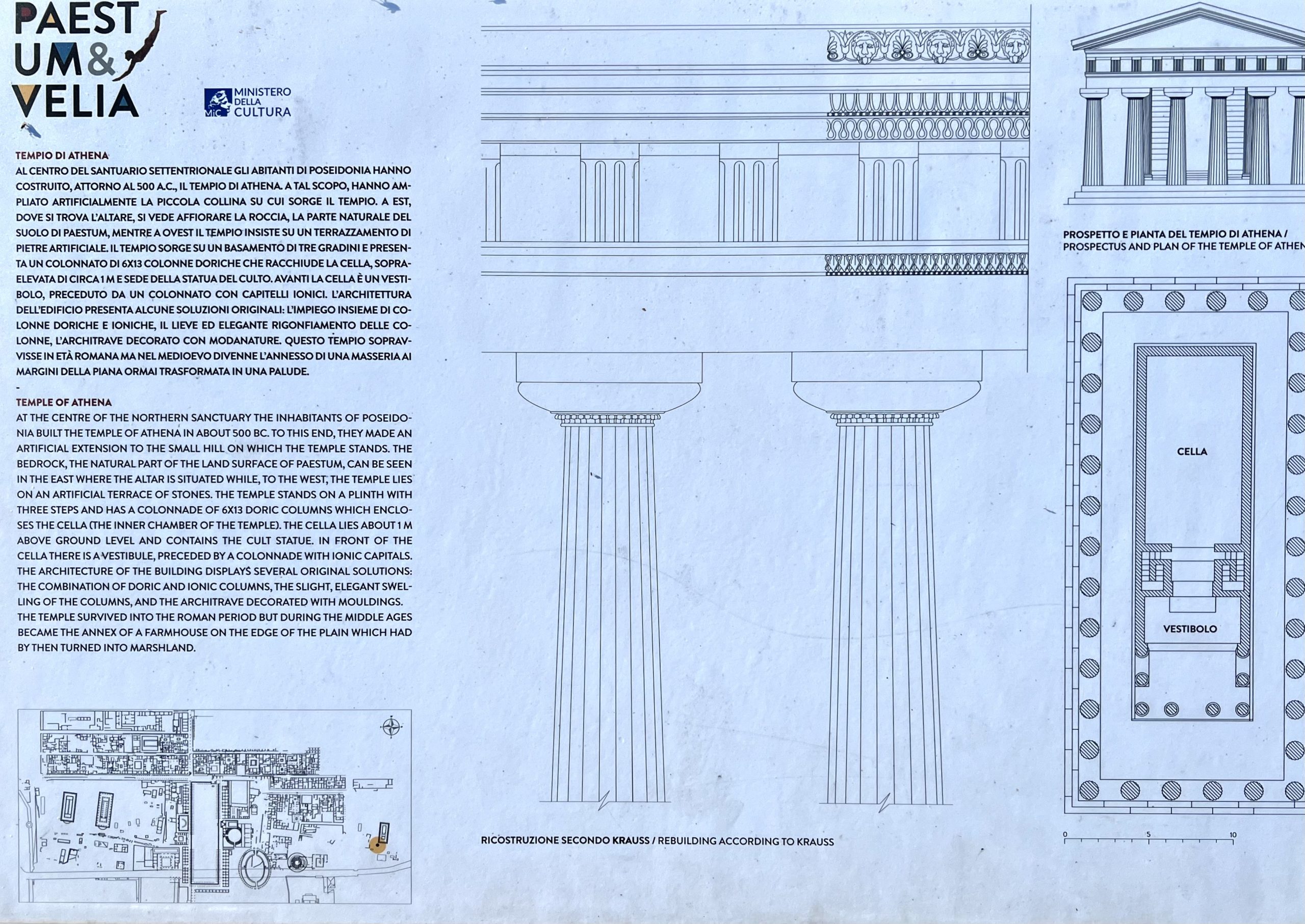
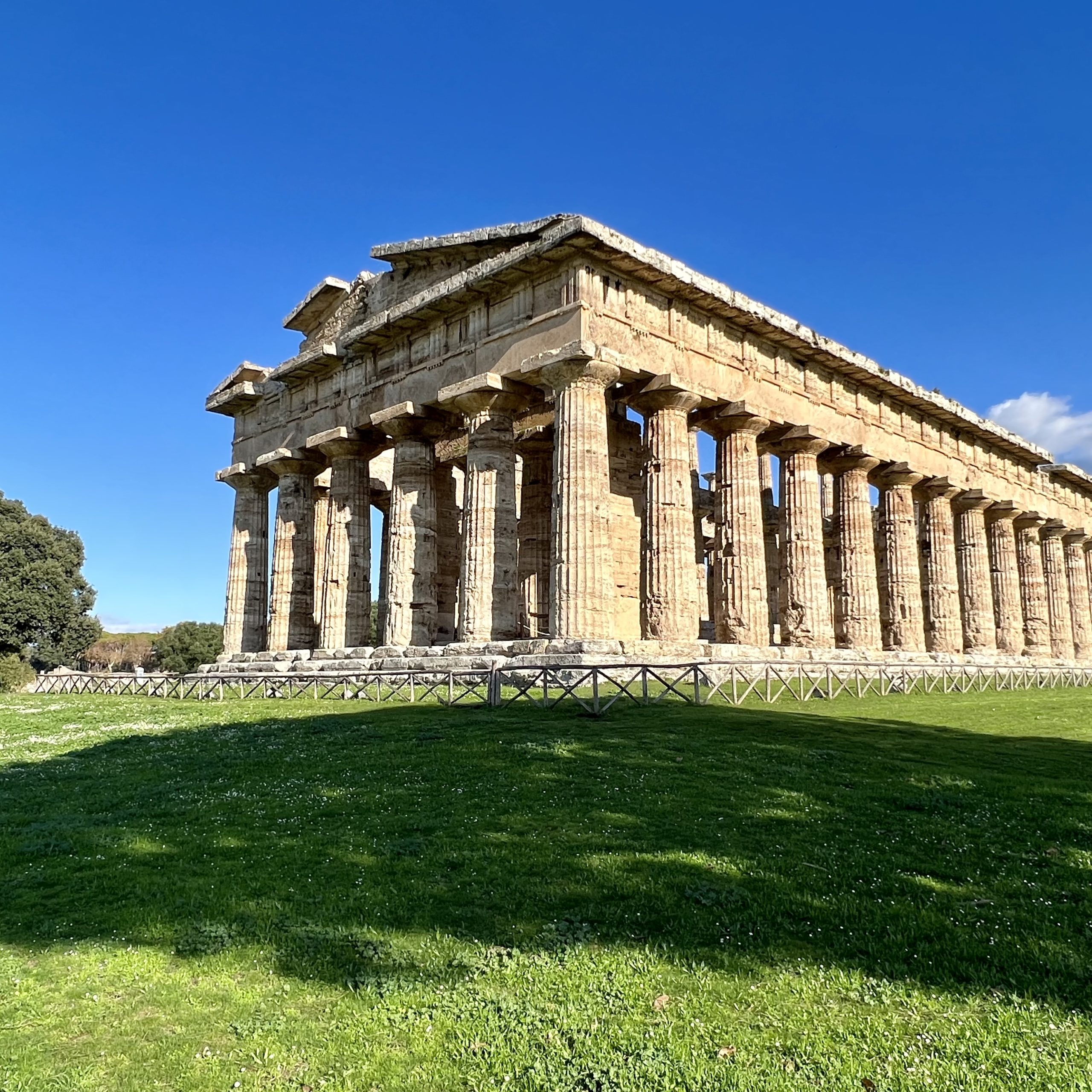
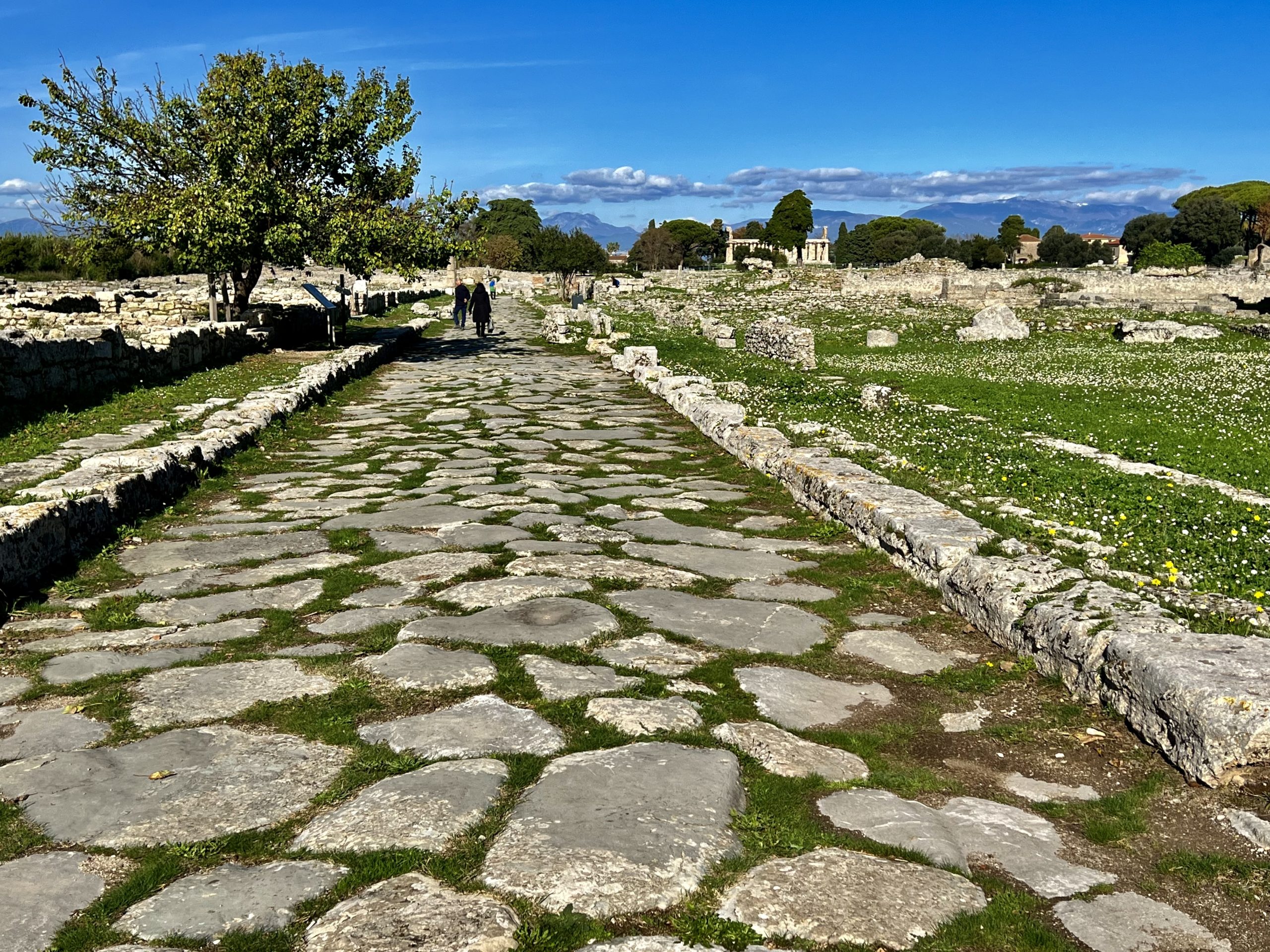
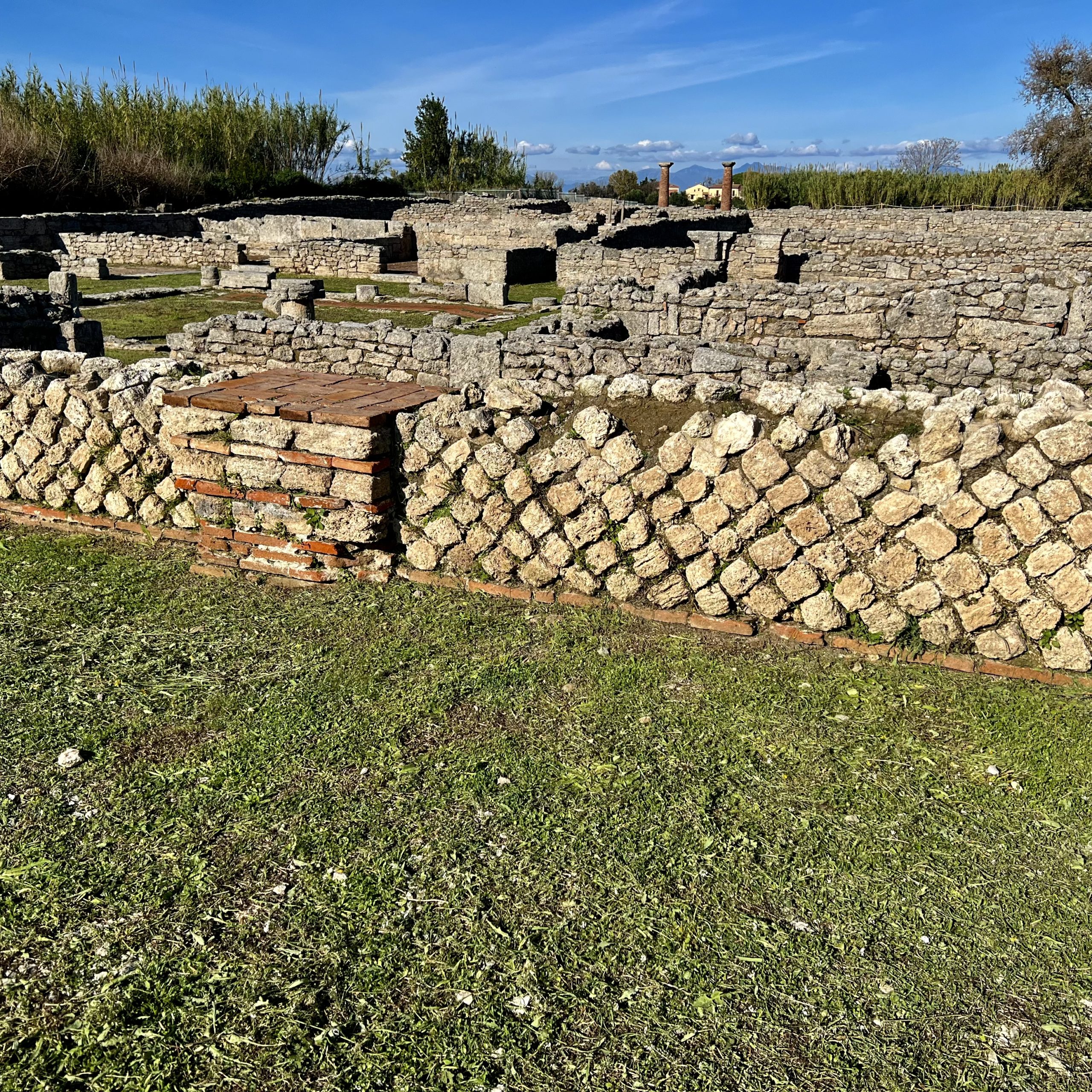
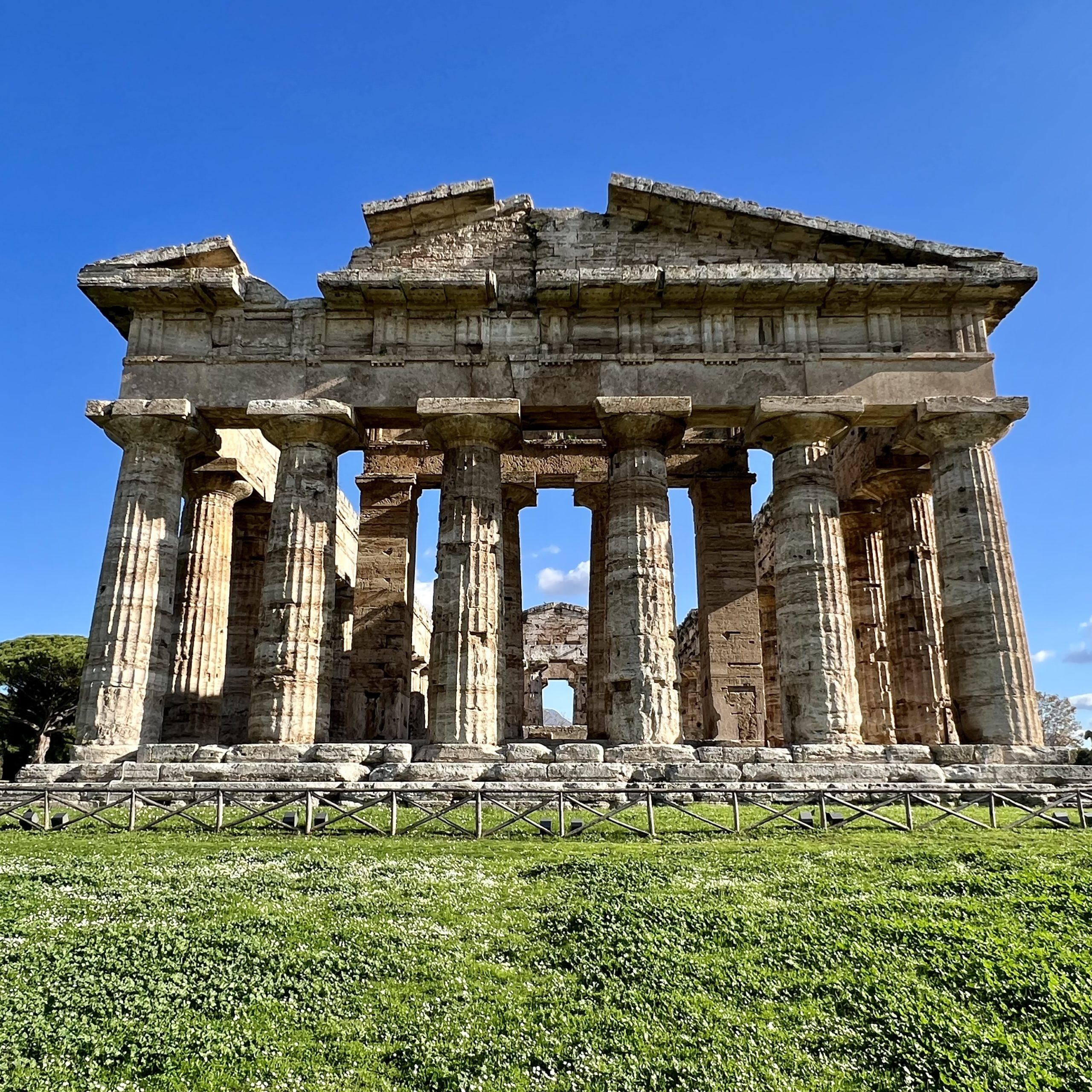
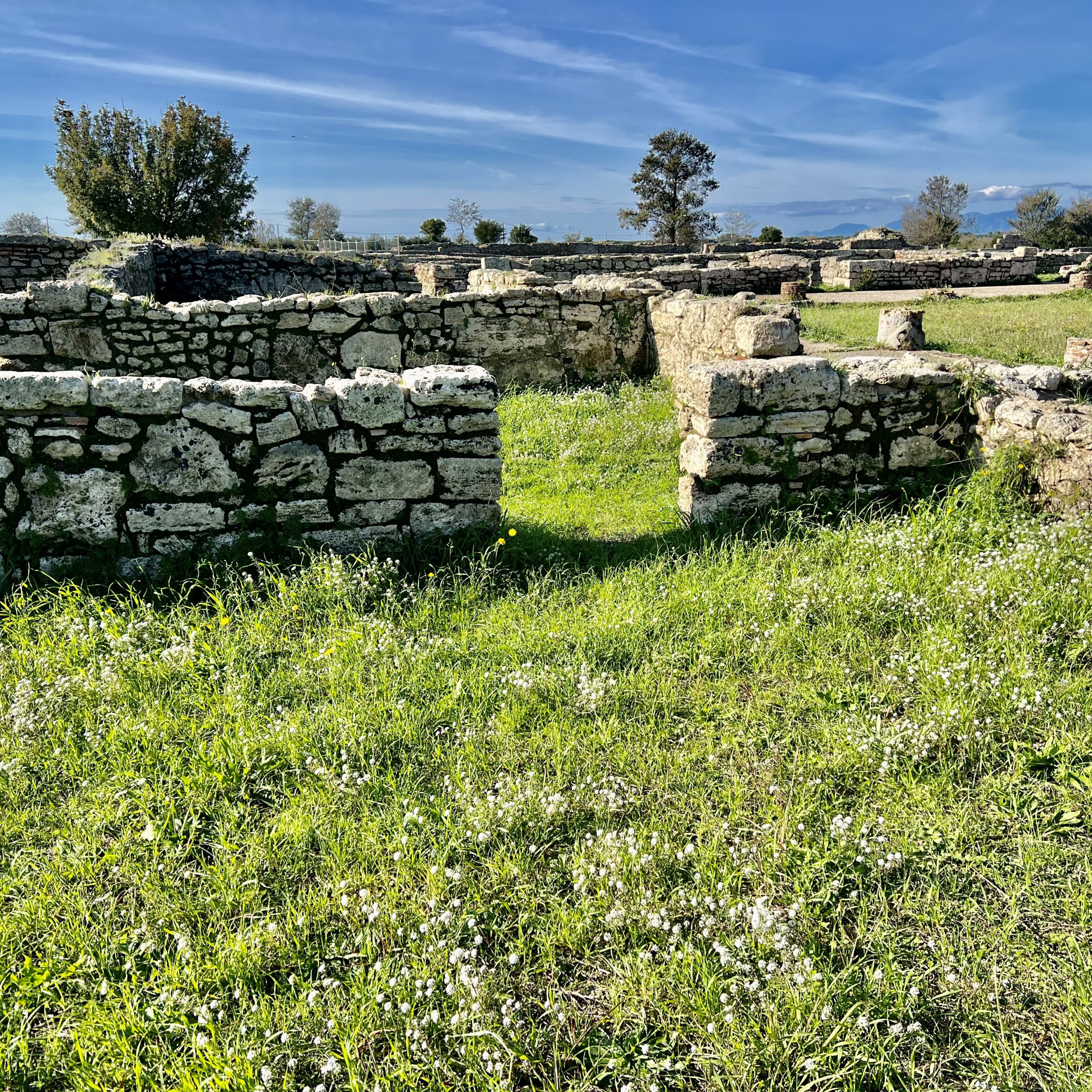
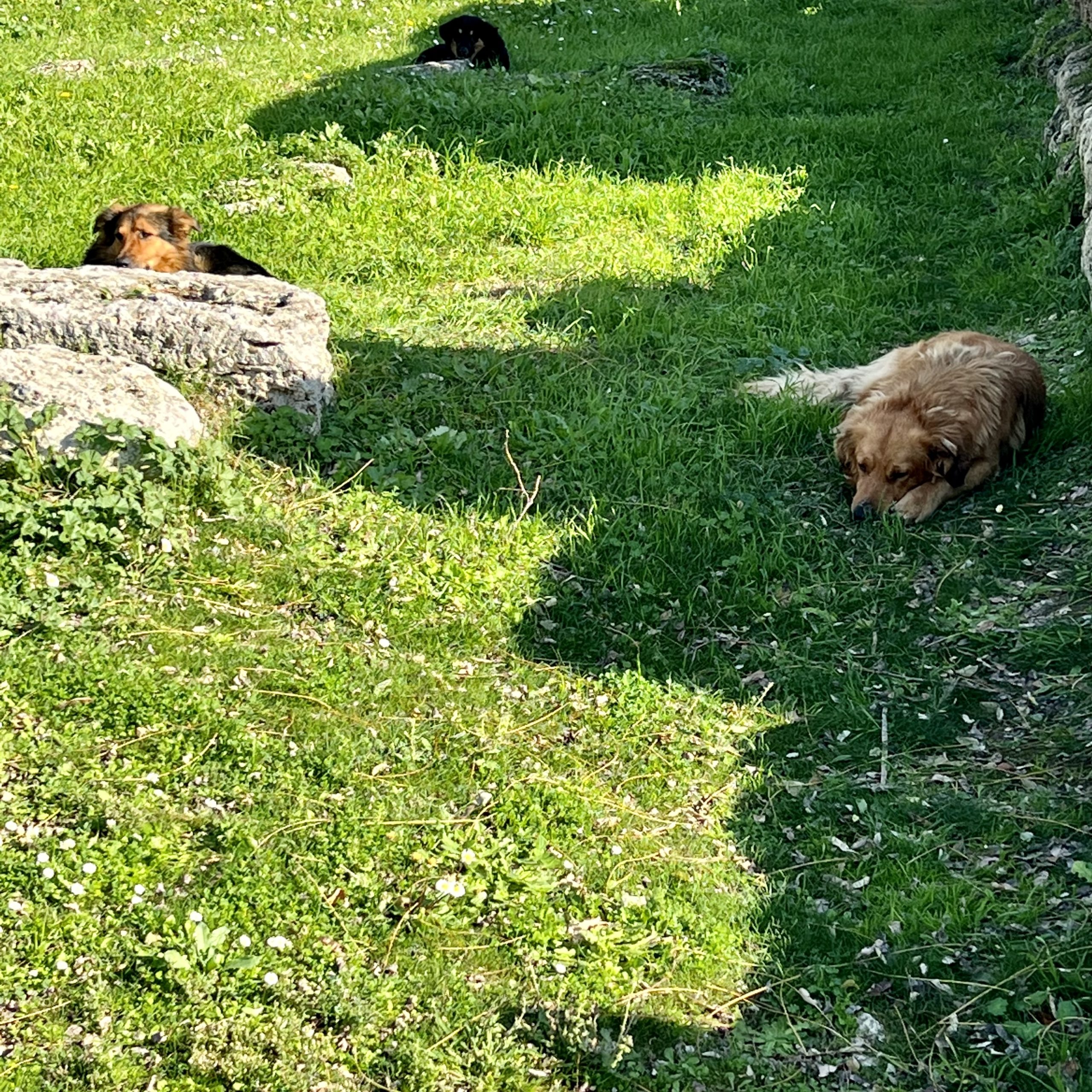
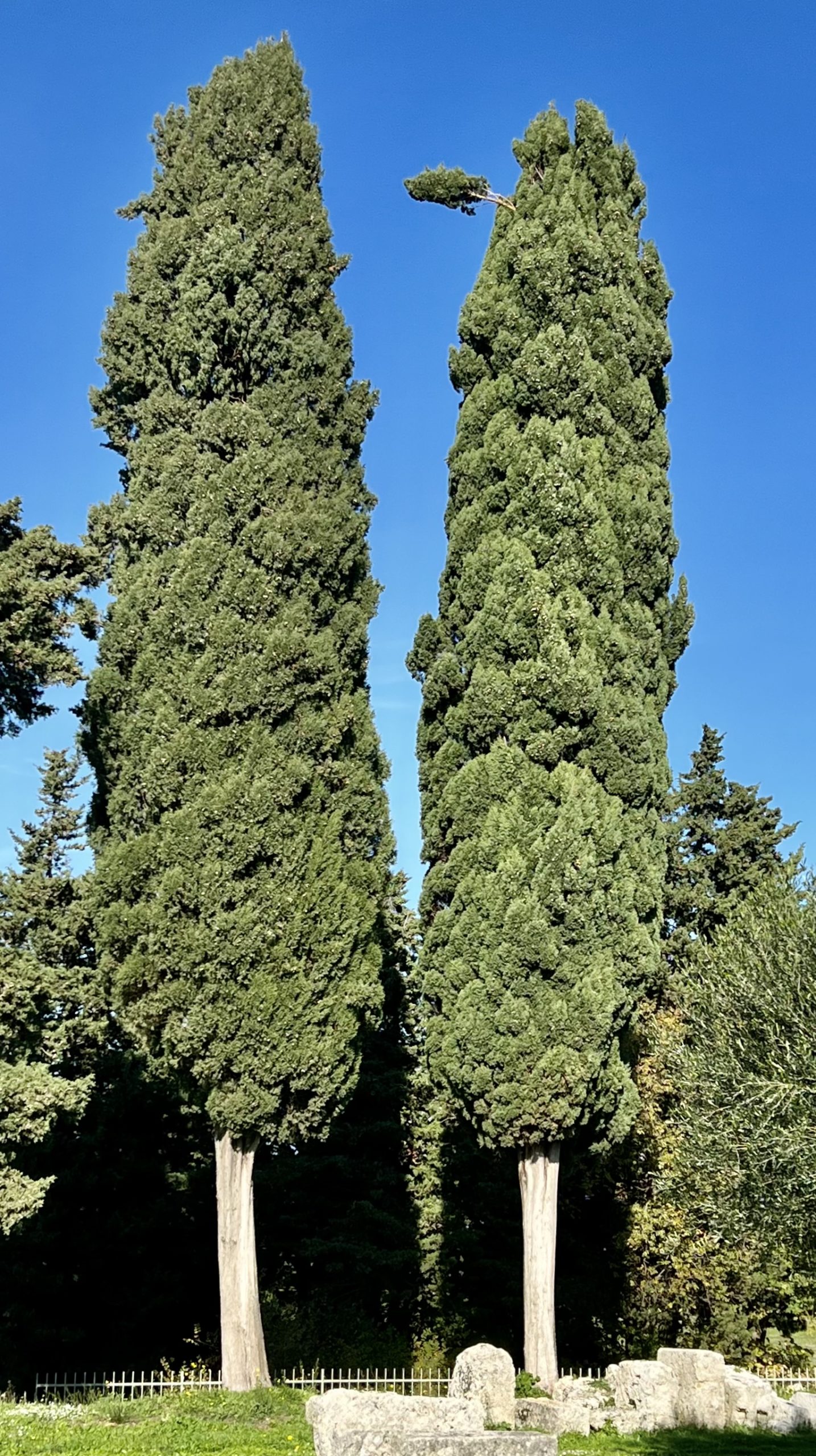
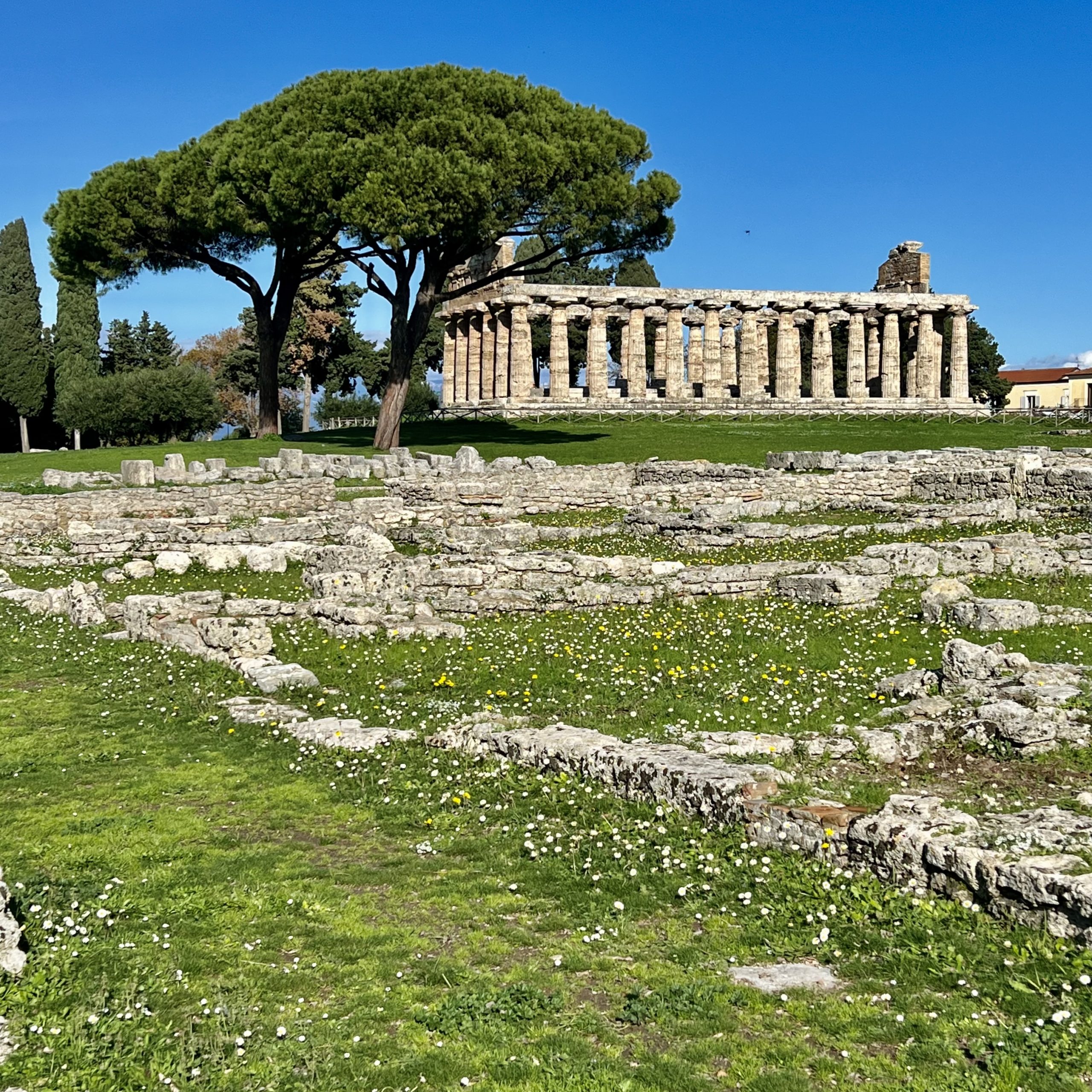
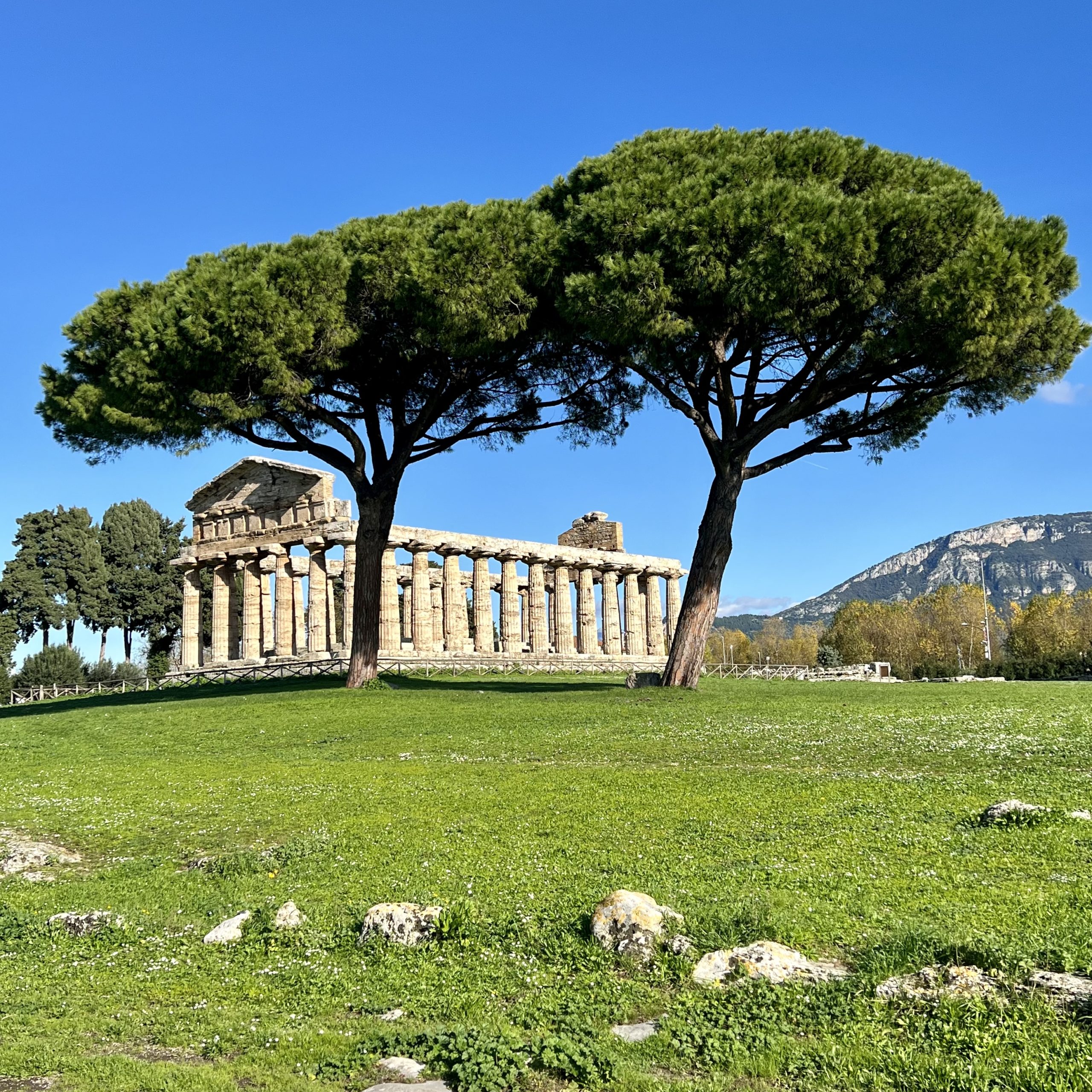
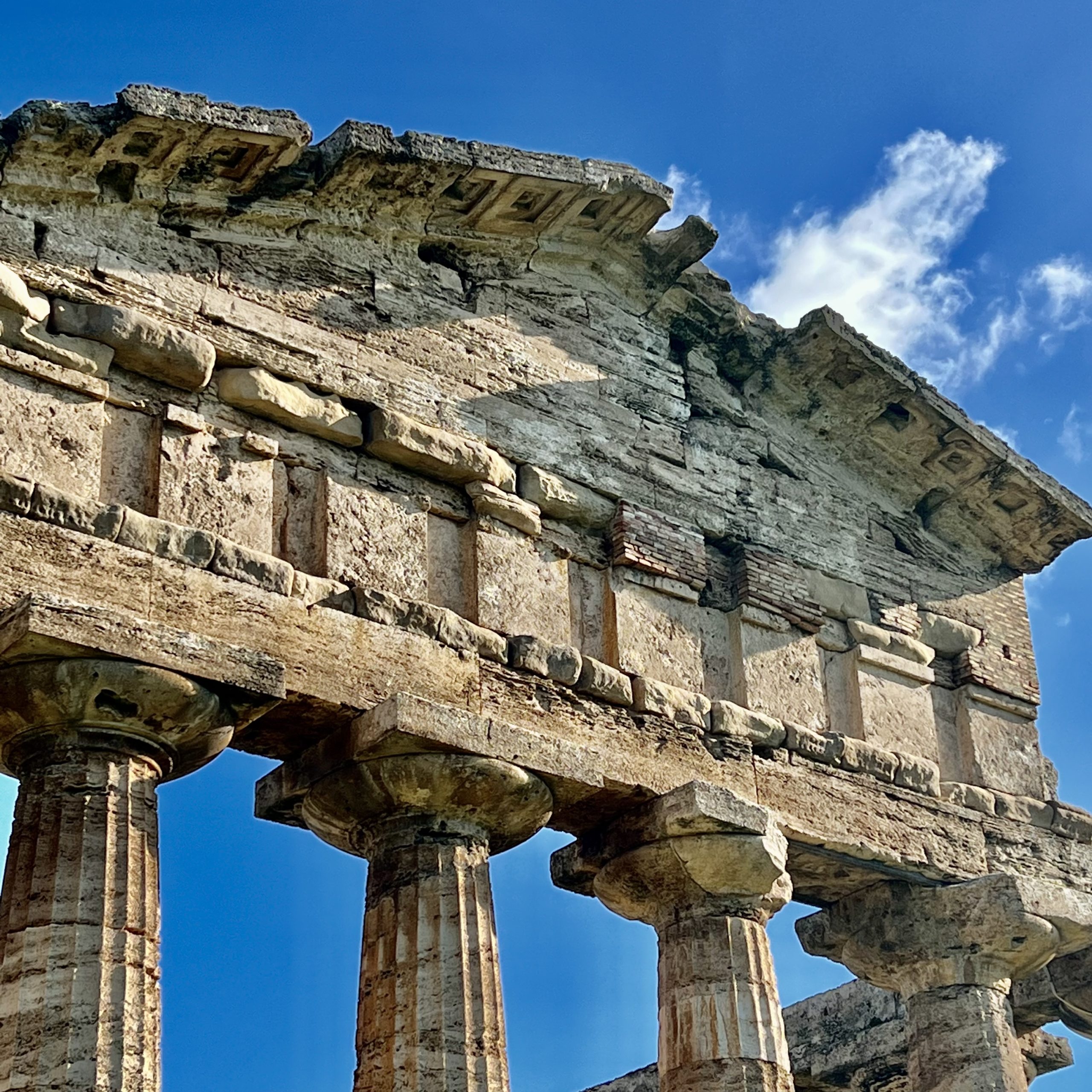
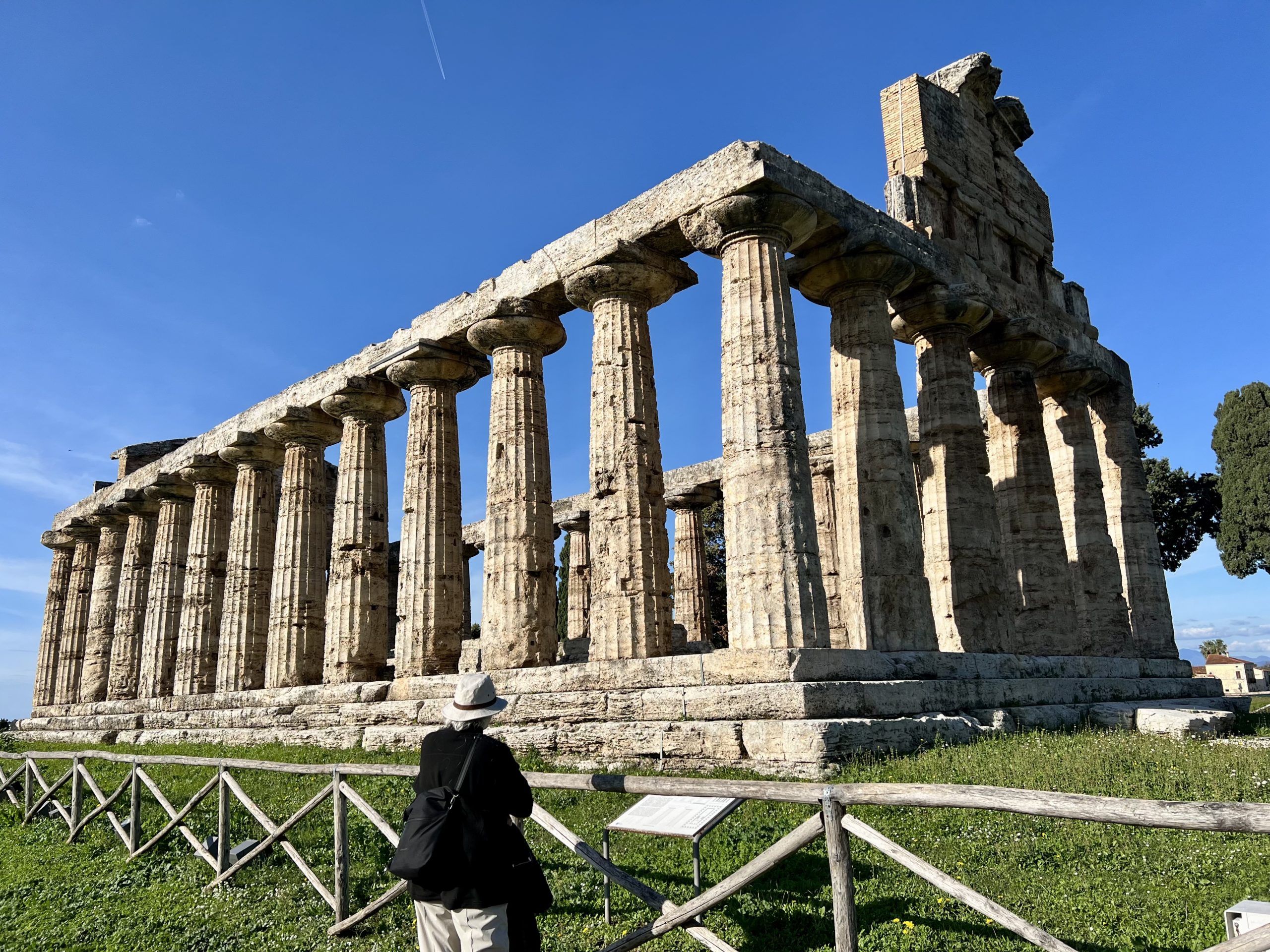
Lunch
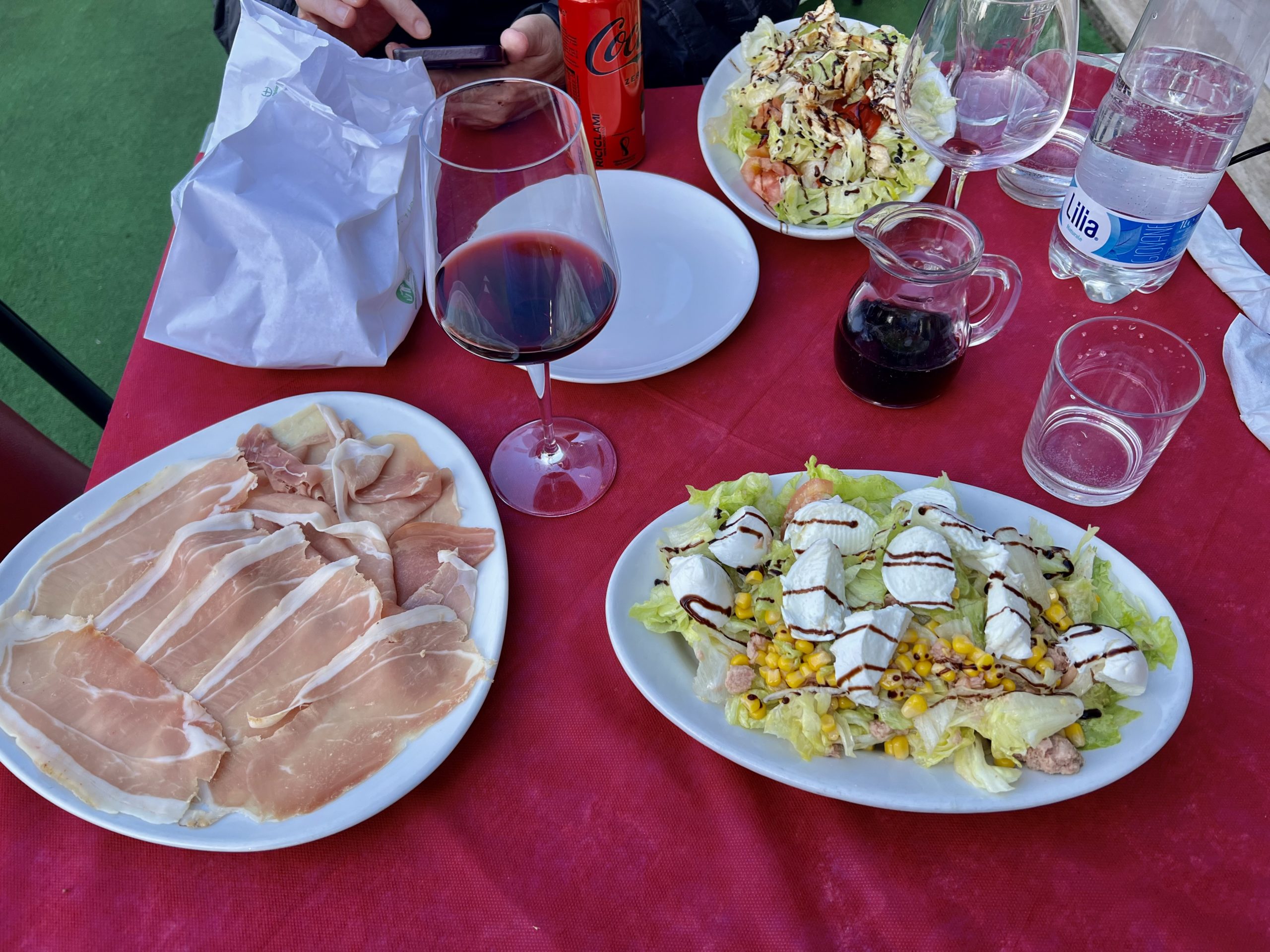
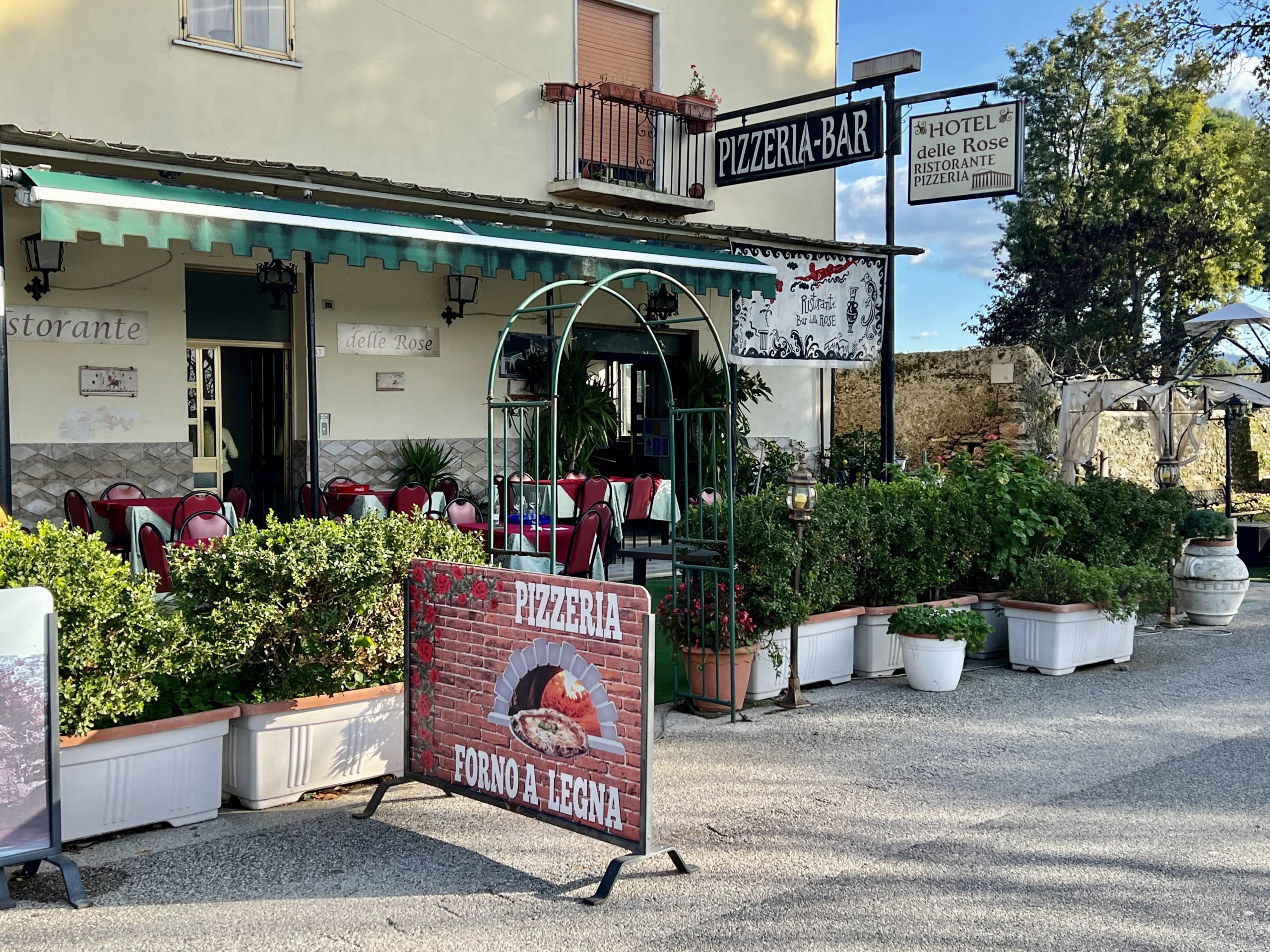
Museum
Most artifacts from tombs date from around 350 BCE. We think that the small exhibit we saw is in a temporary space because the larger fascist two-story museum was not open. The scenes on display include gladiators fighting each other. Supposedly predates and influenced Roman gladiators. Also many images of pomegranates.
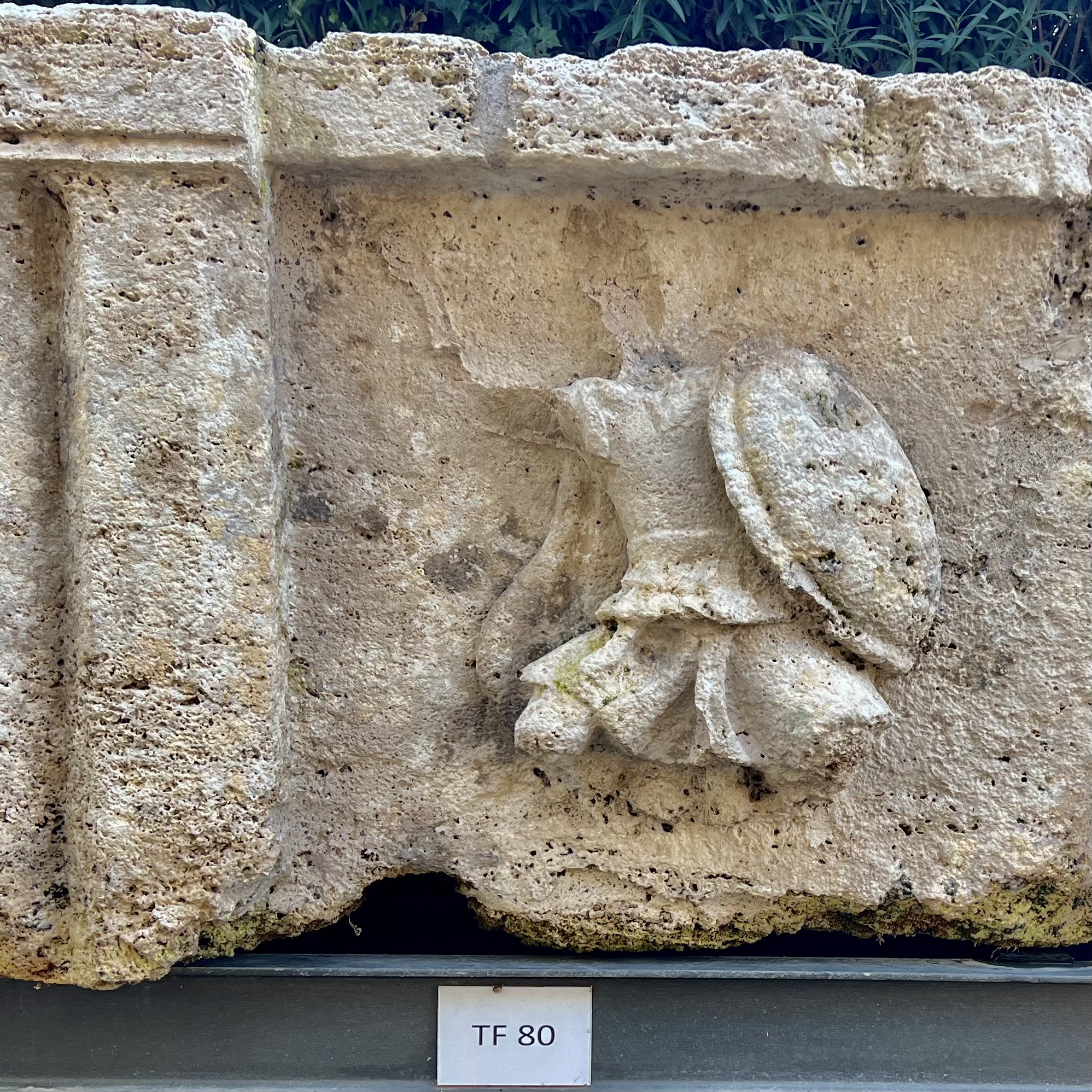
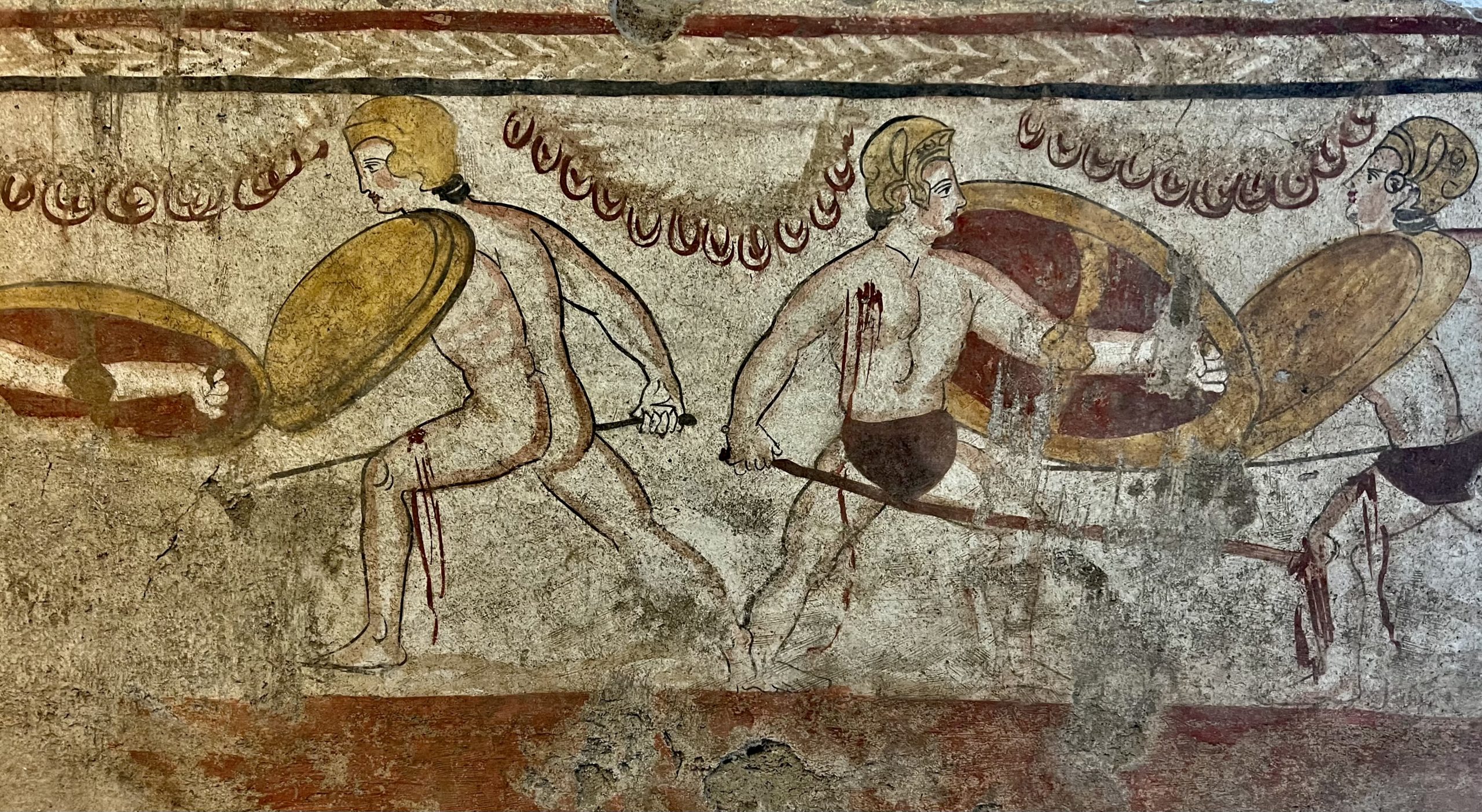
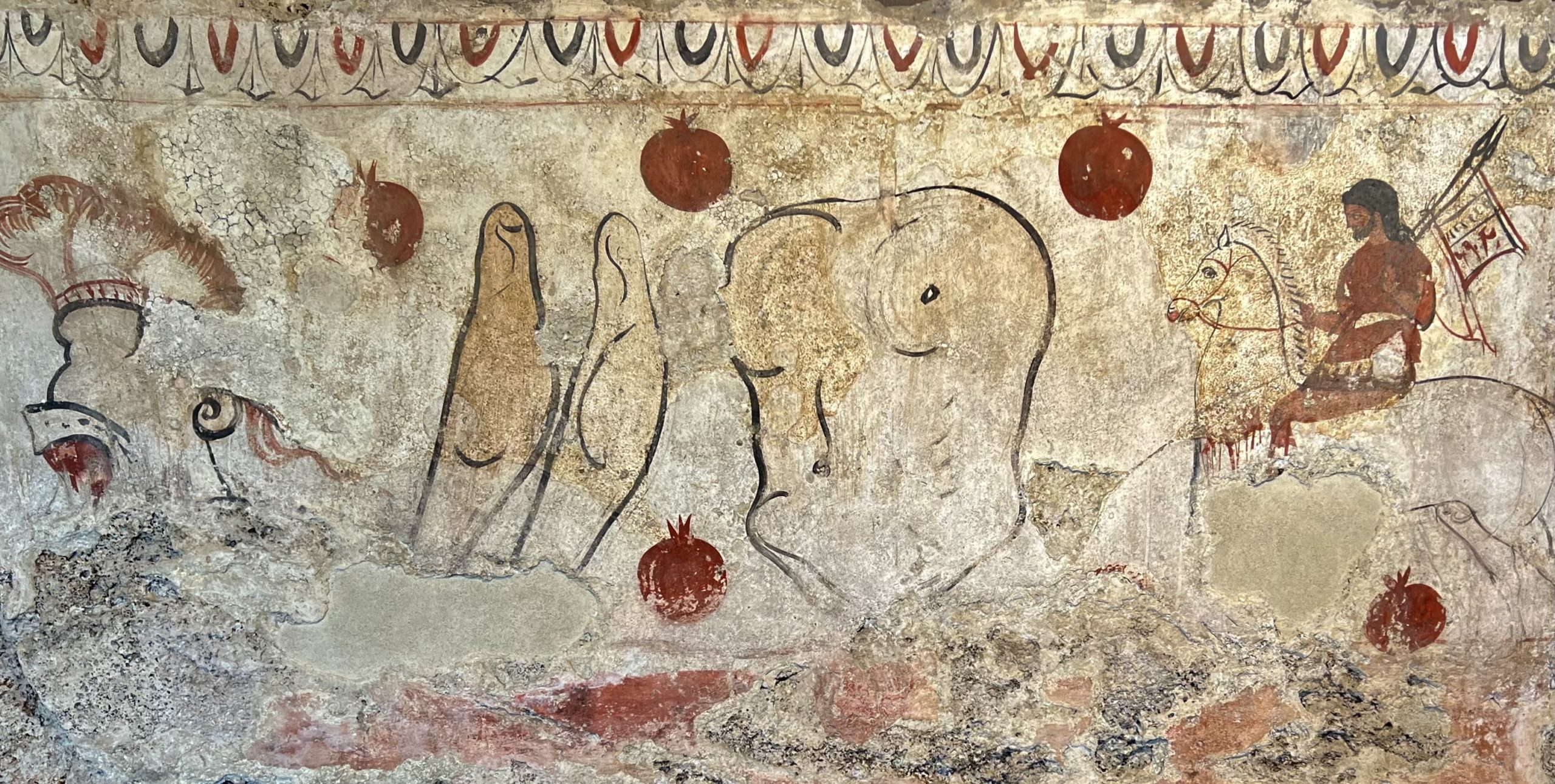
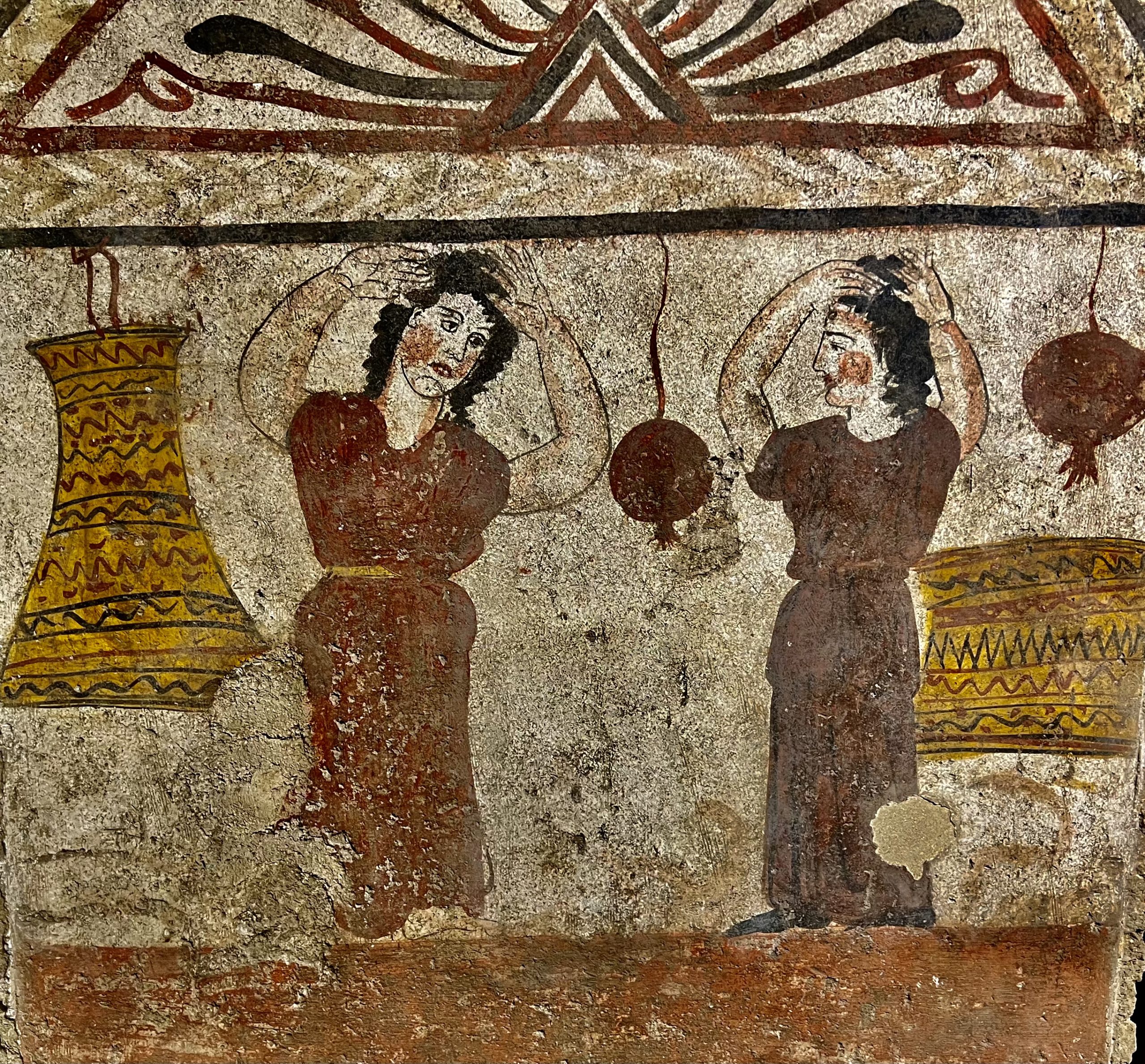

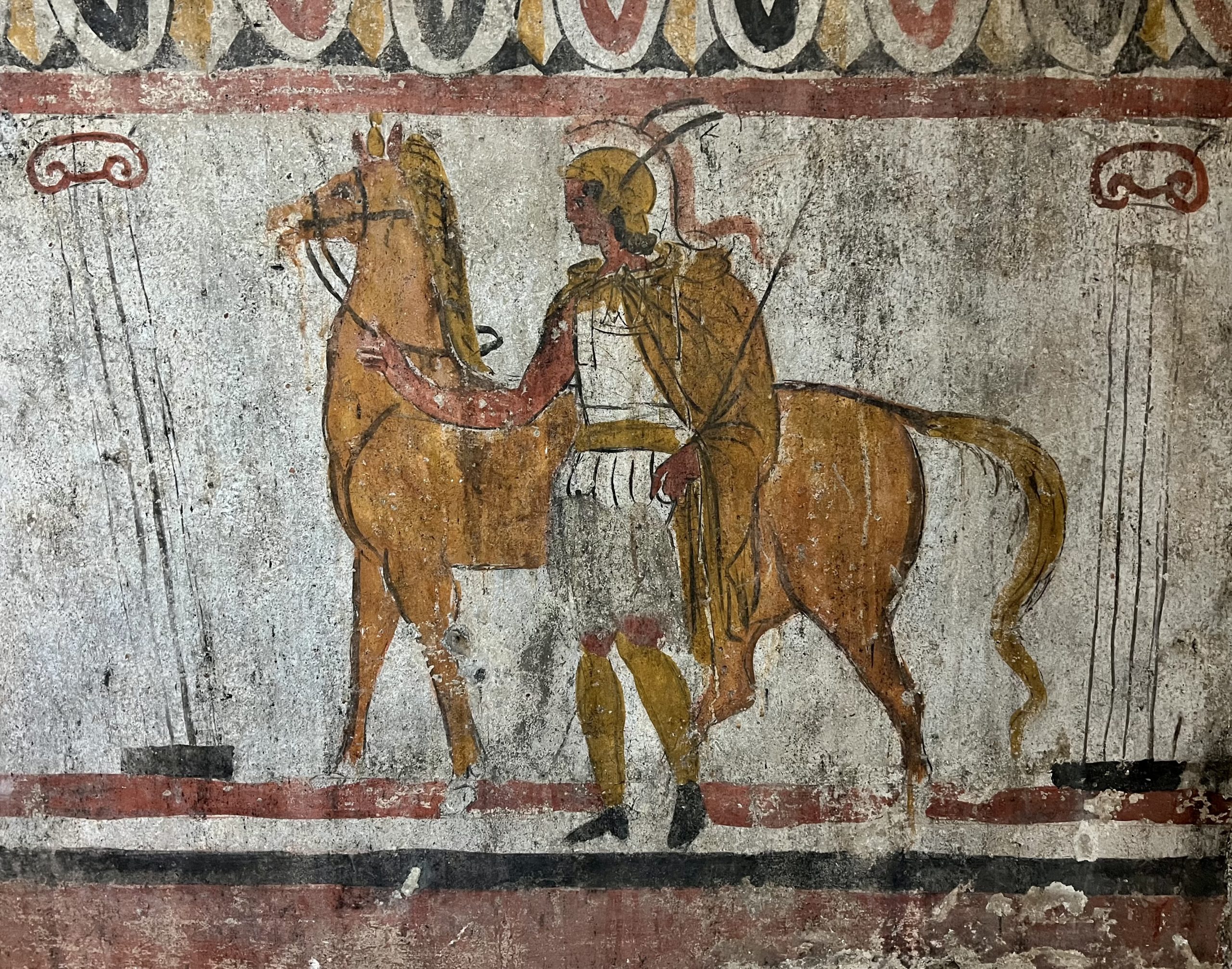
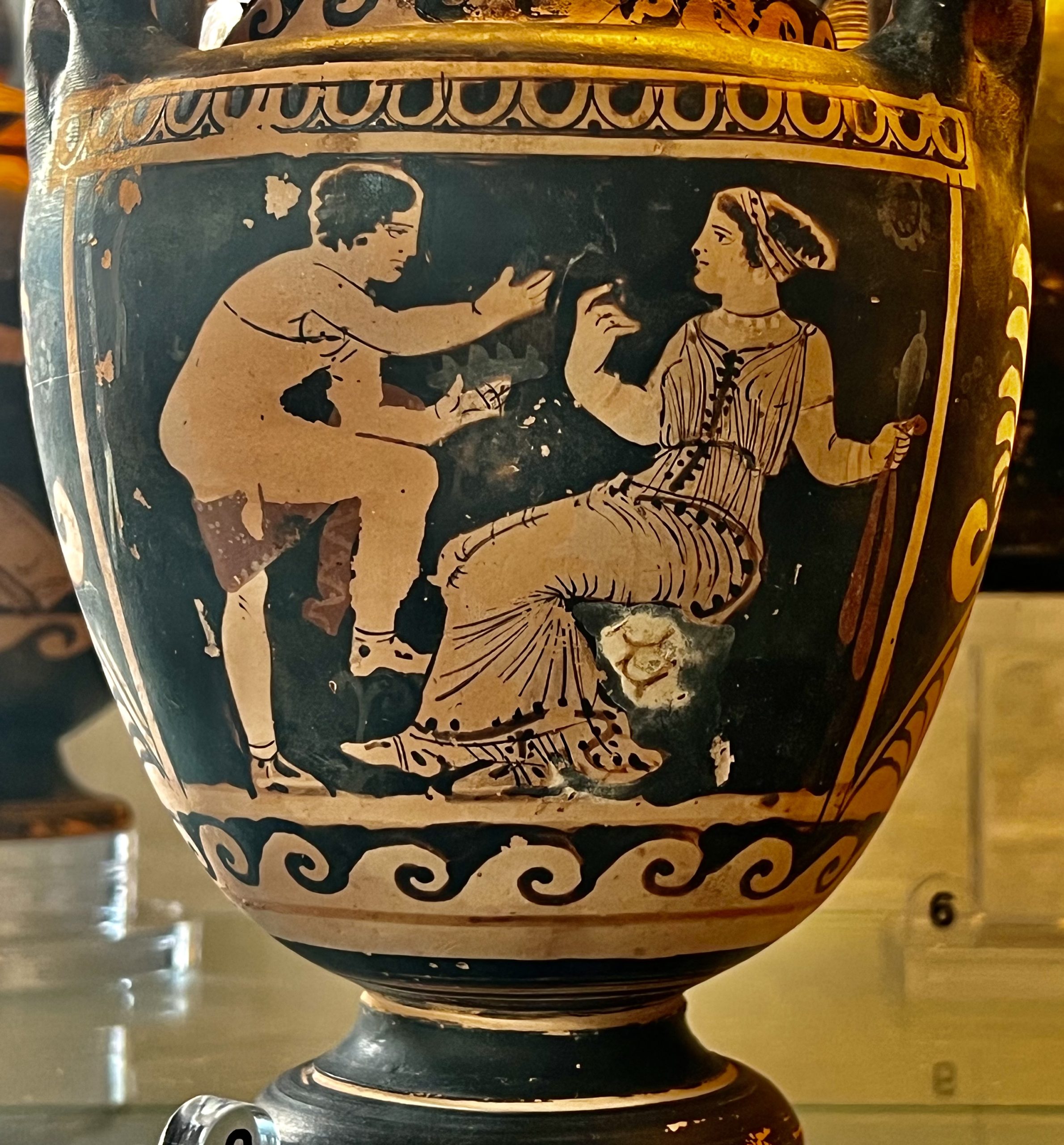
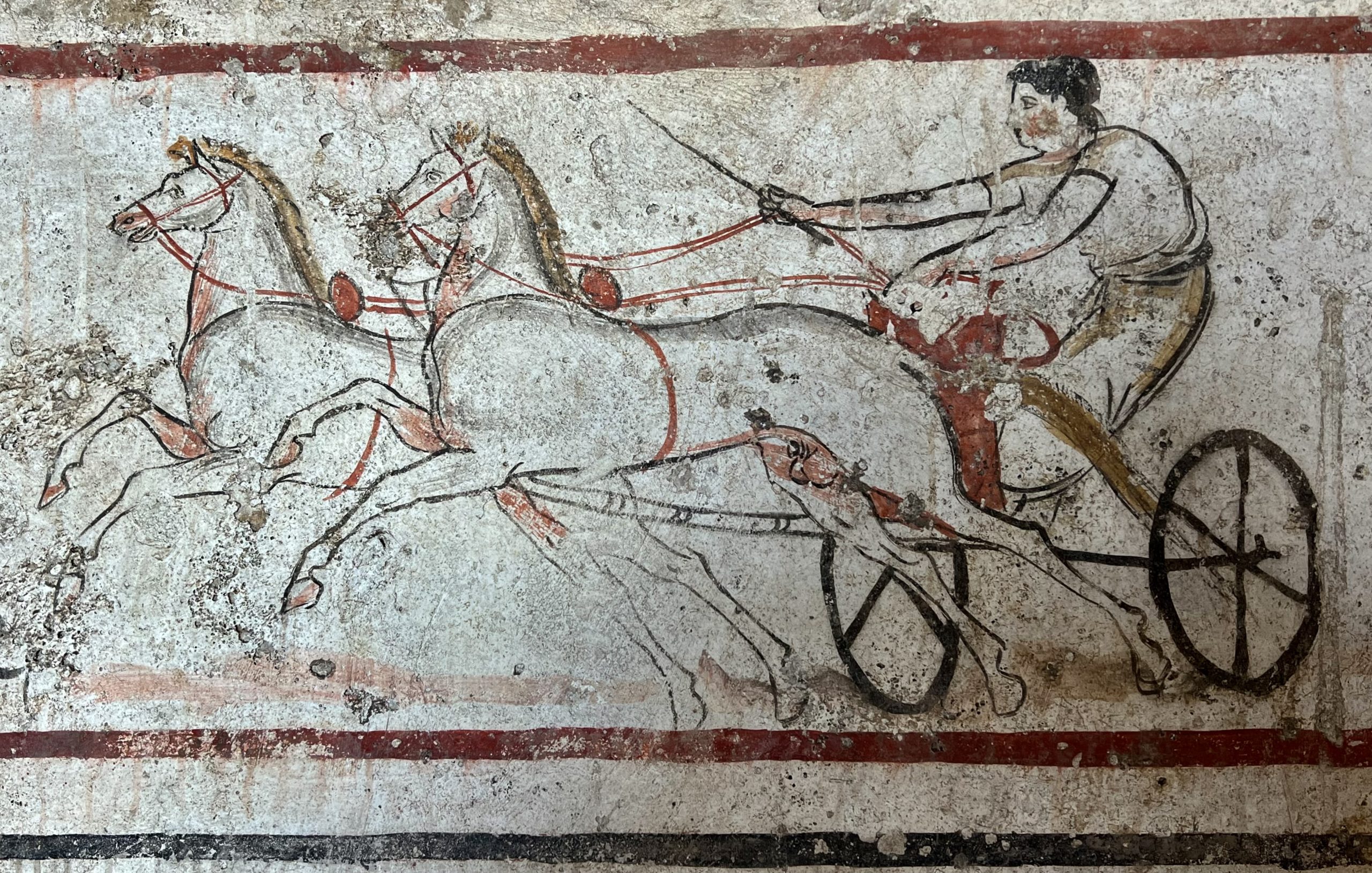
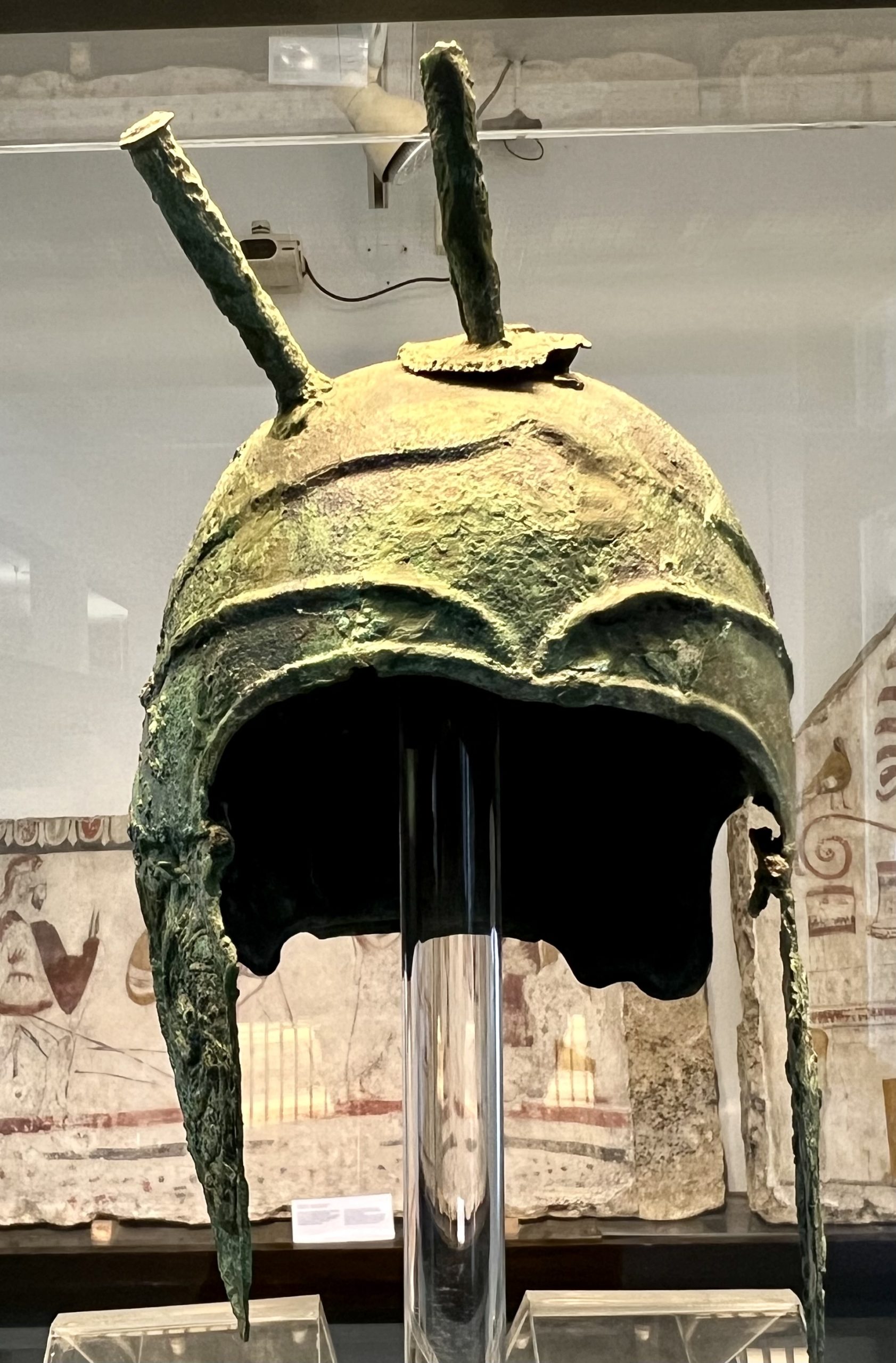
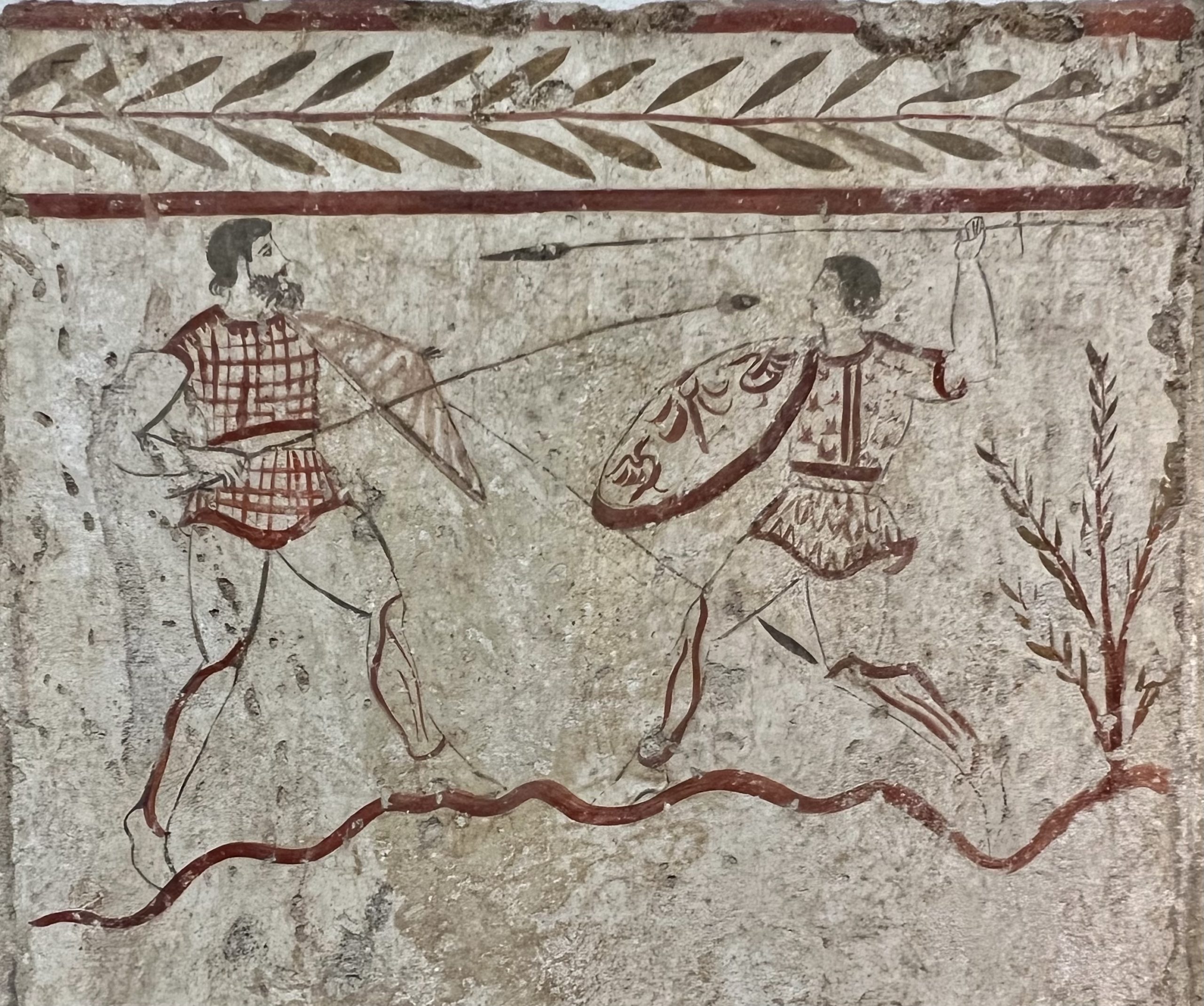
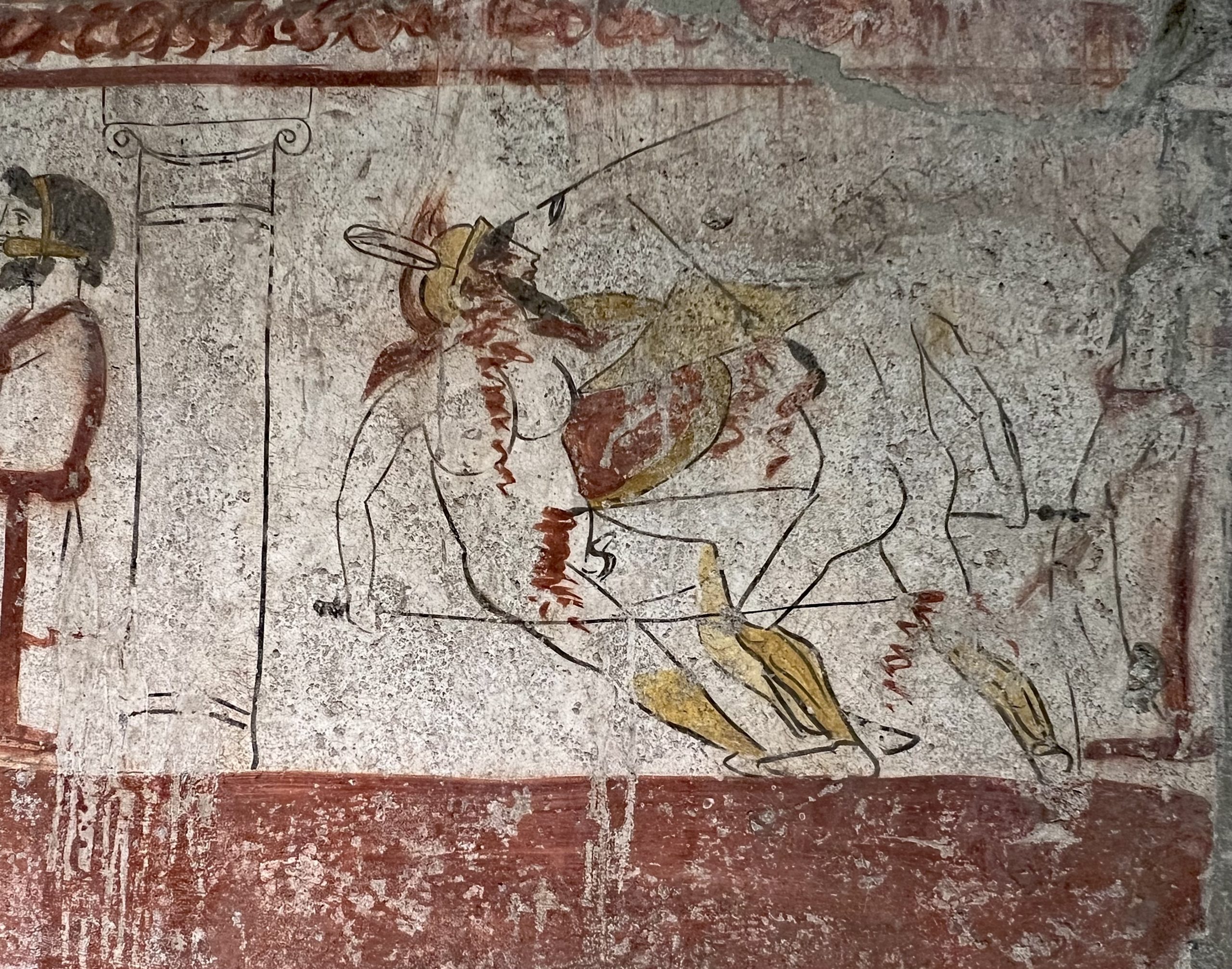
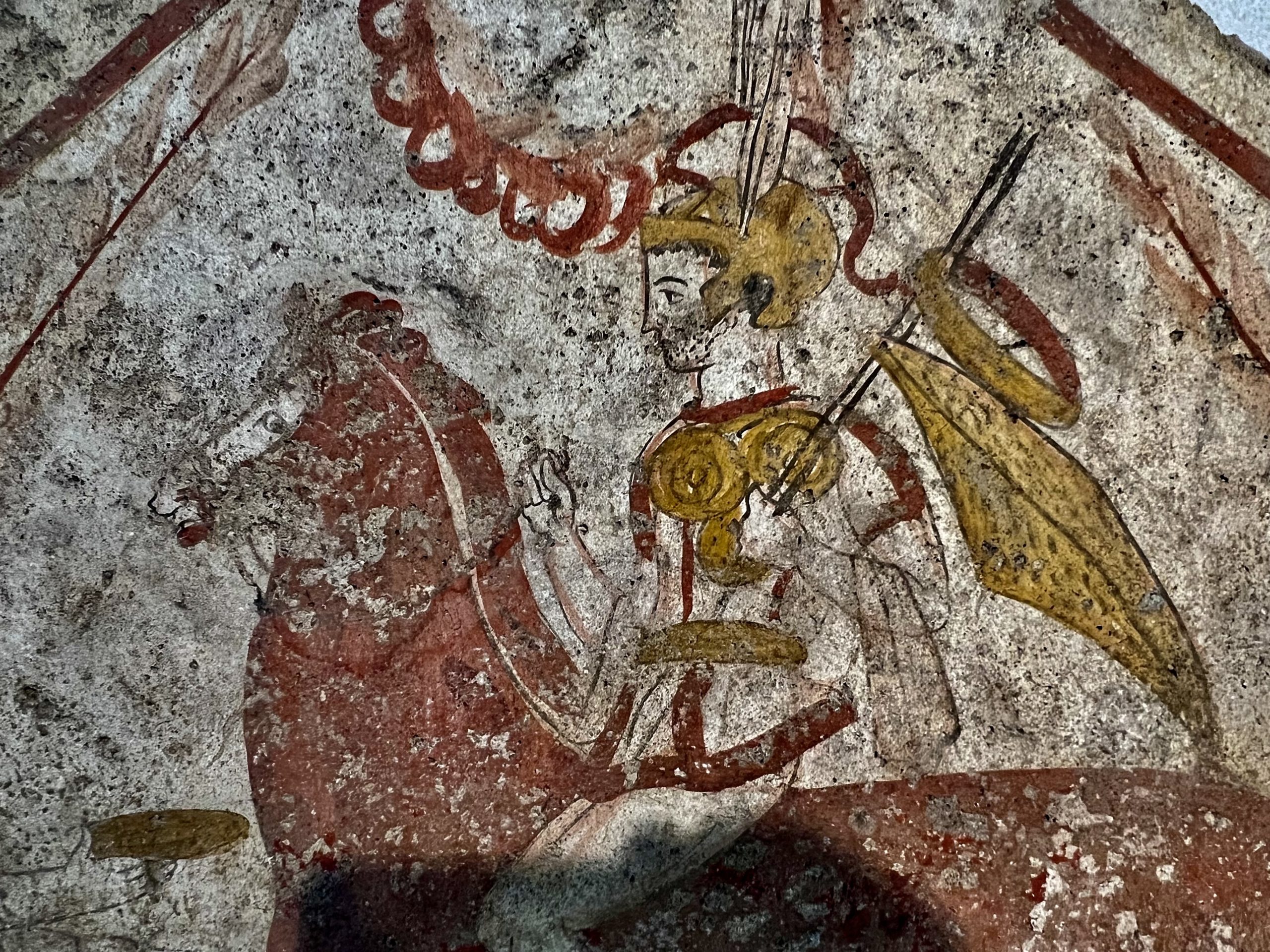
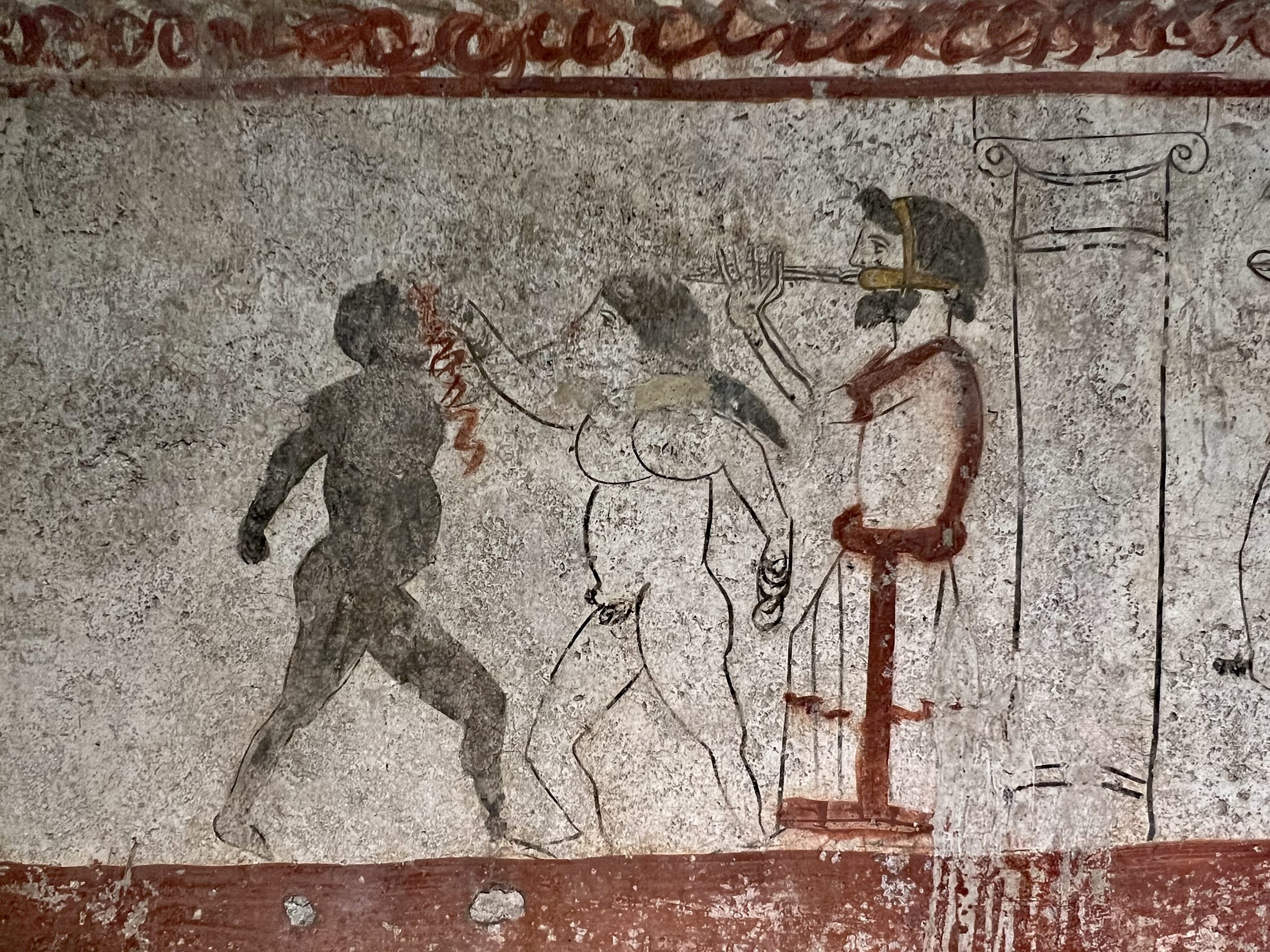
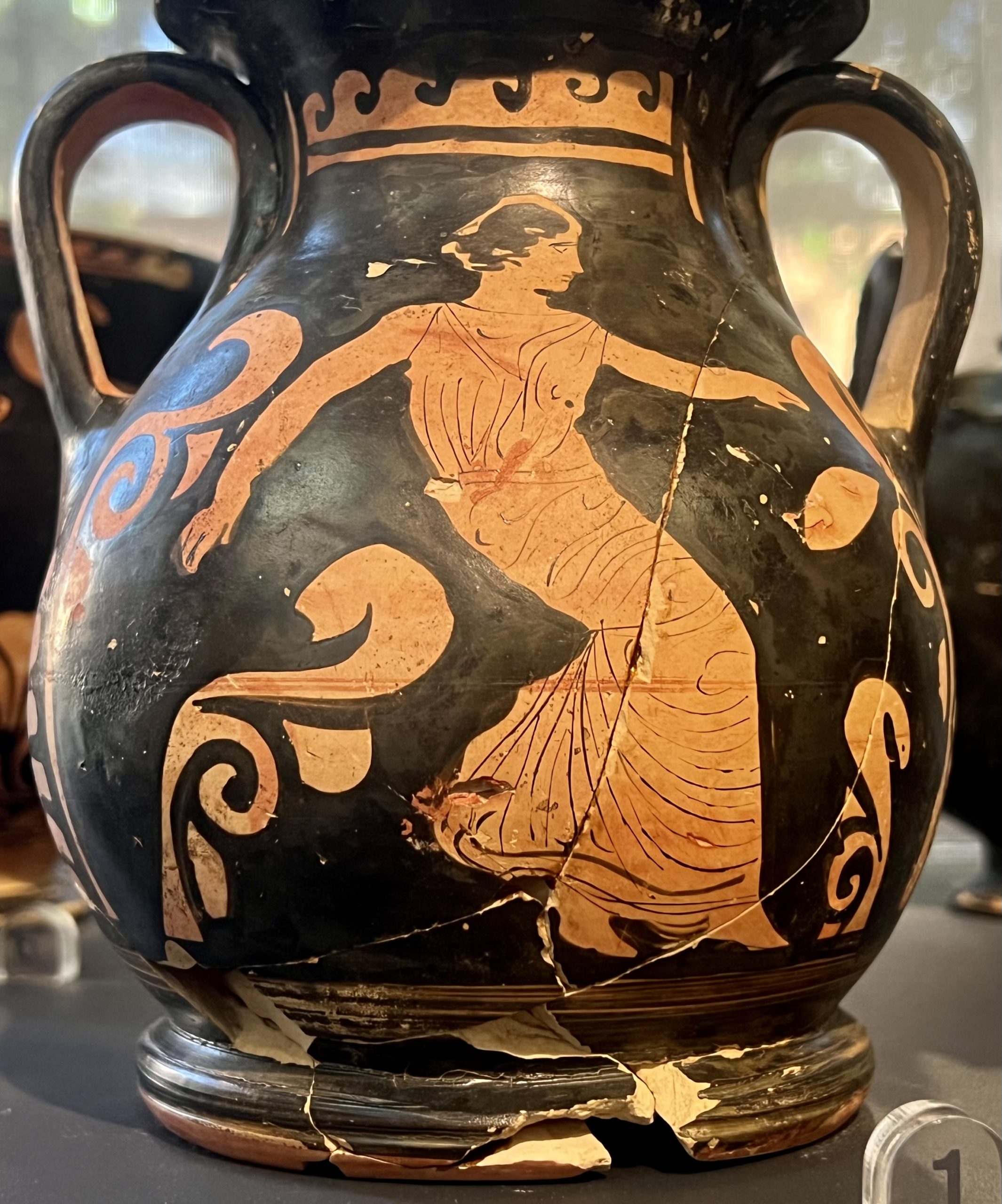
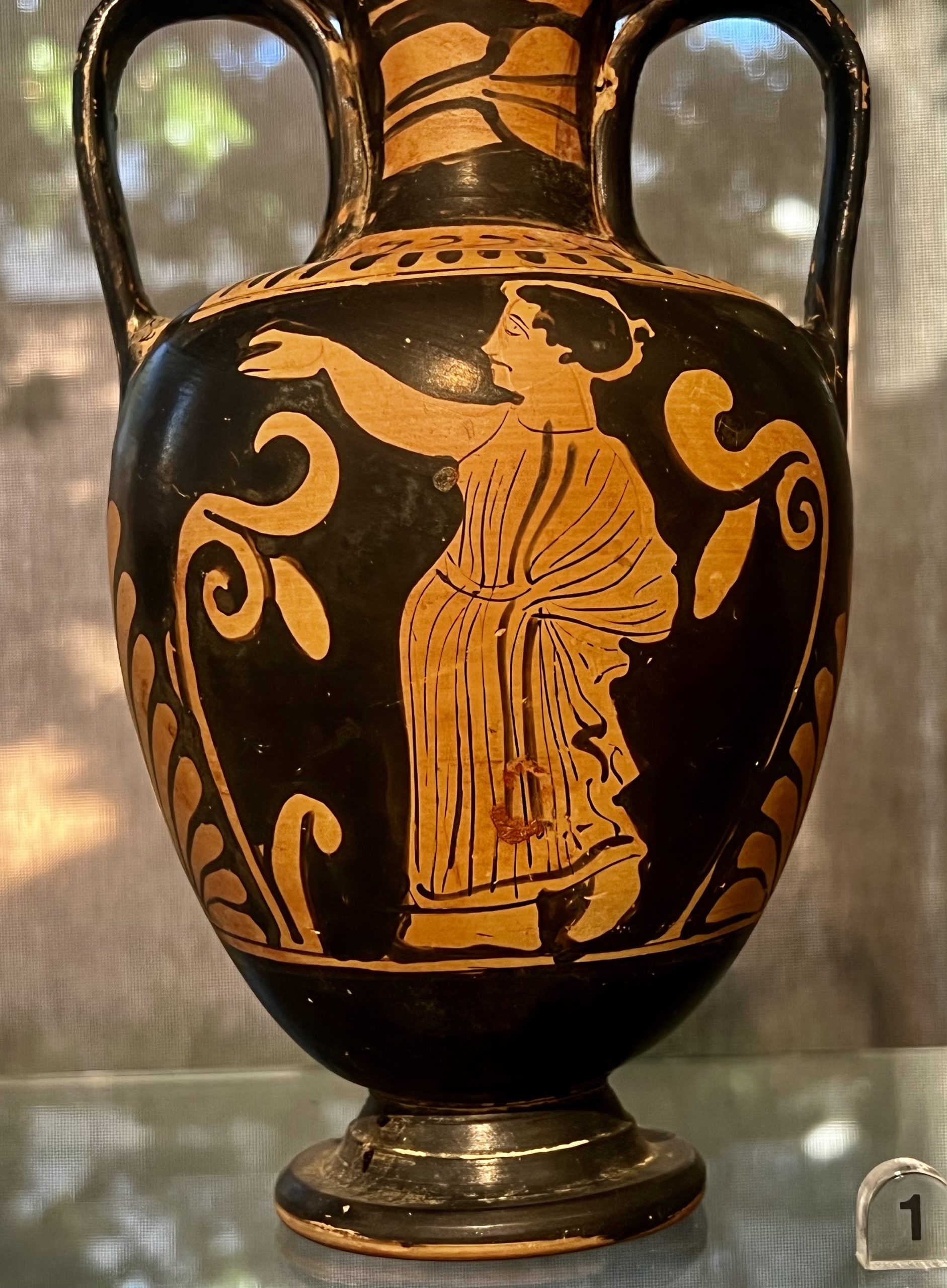
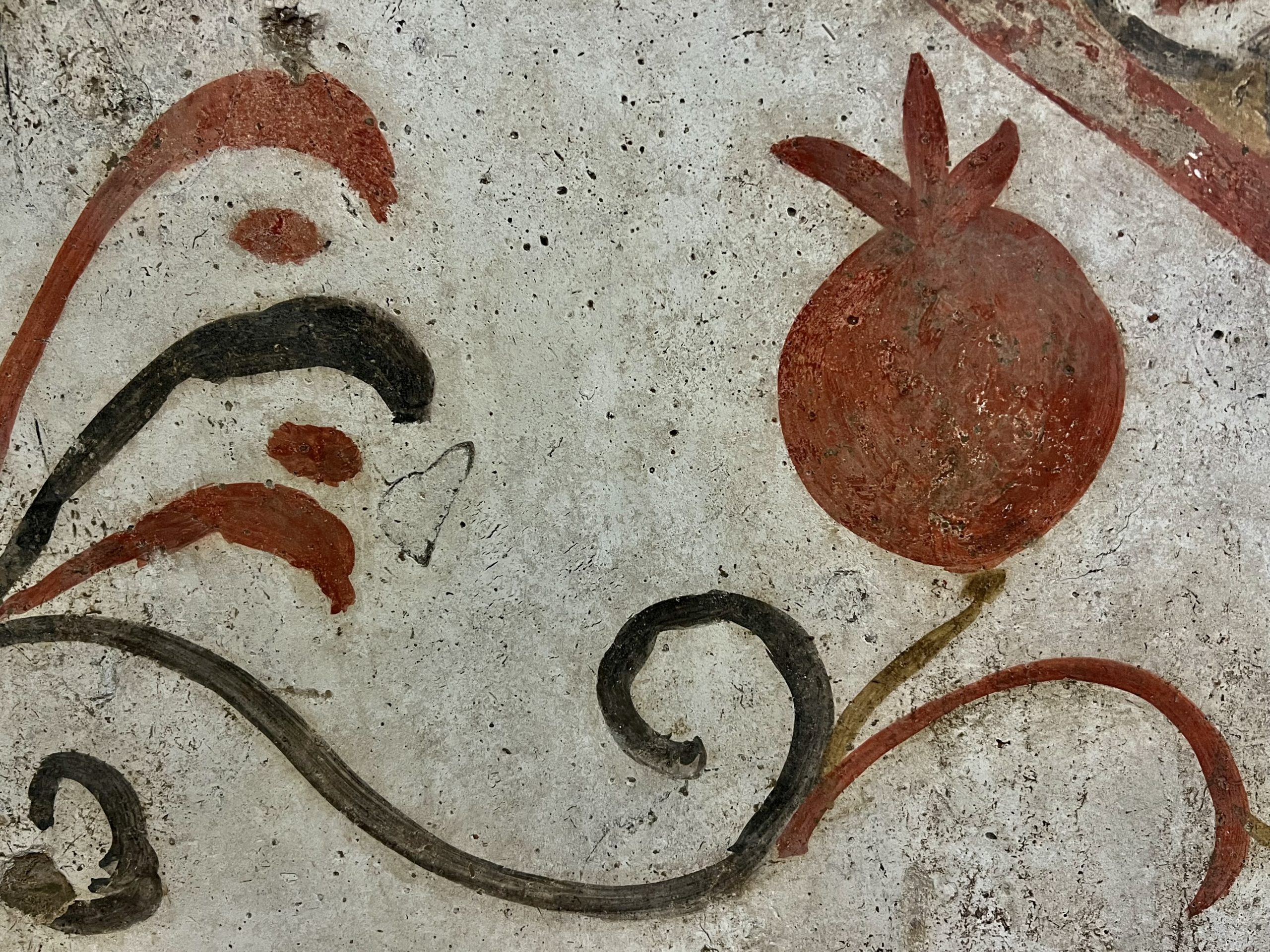
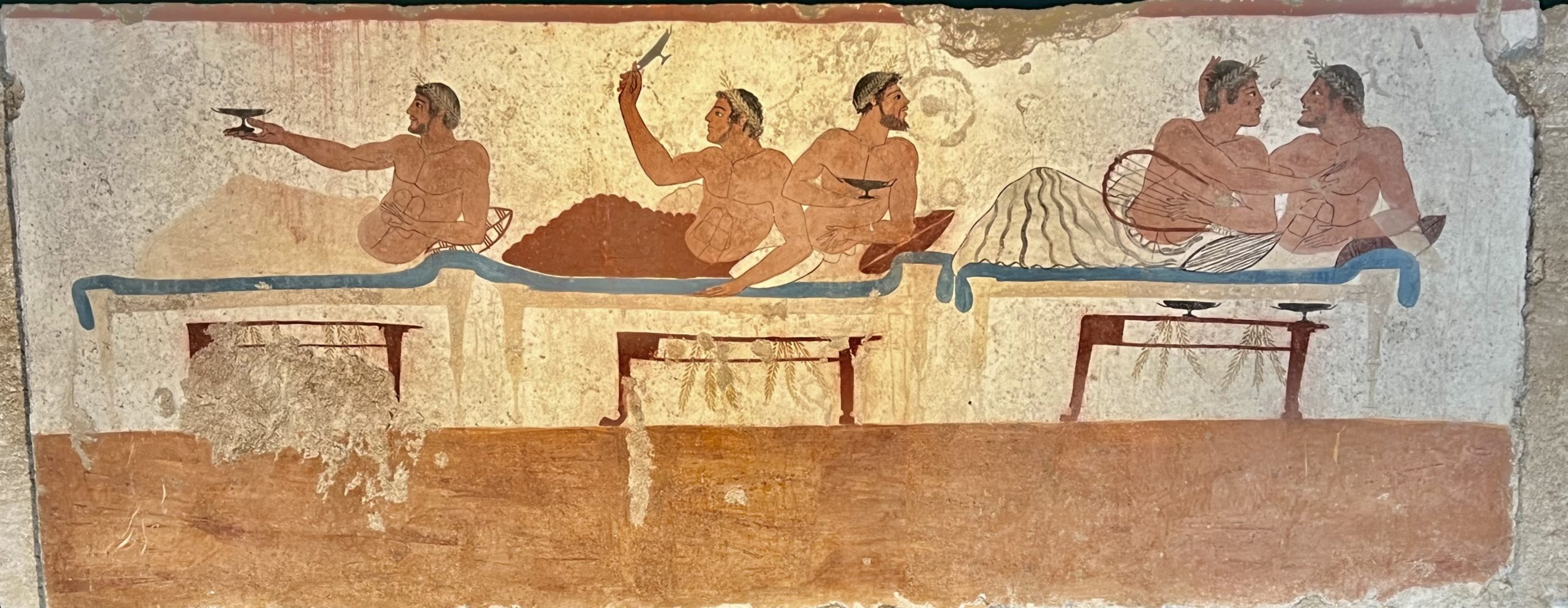
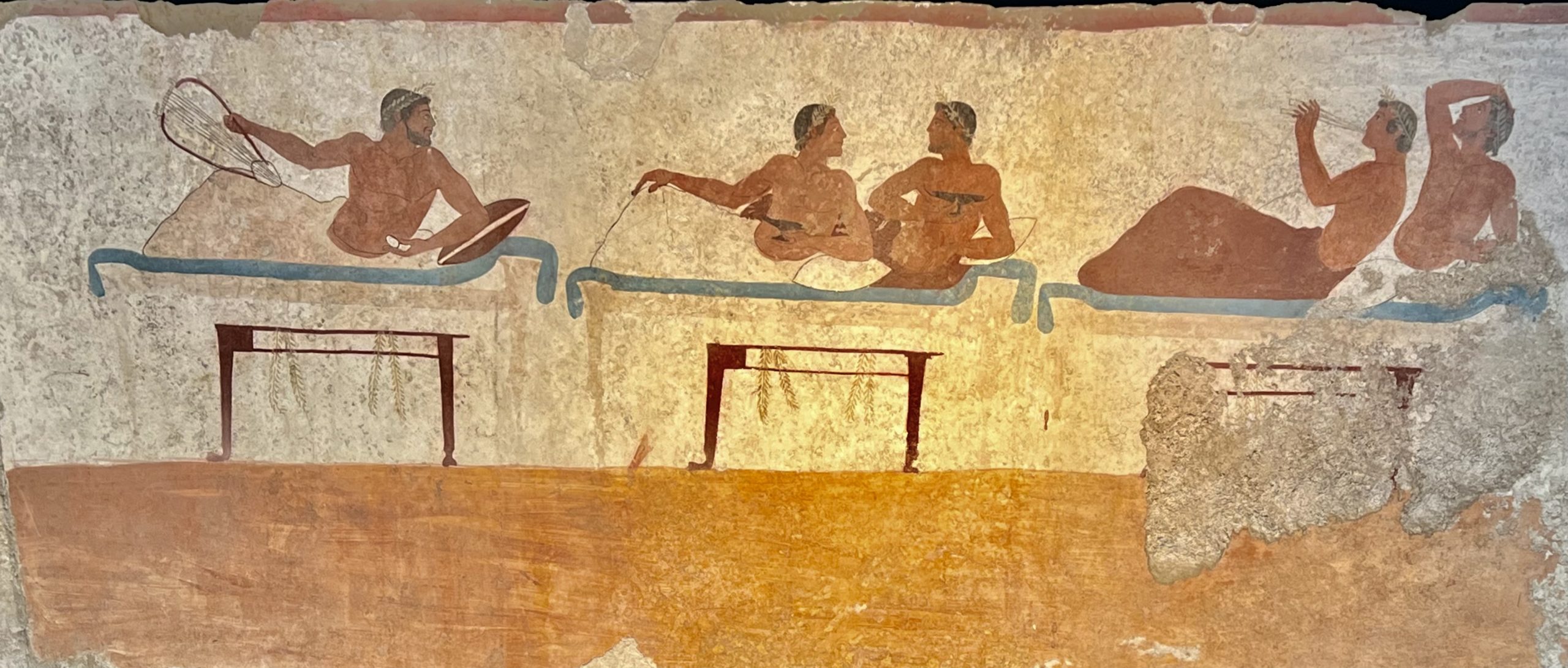
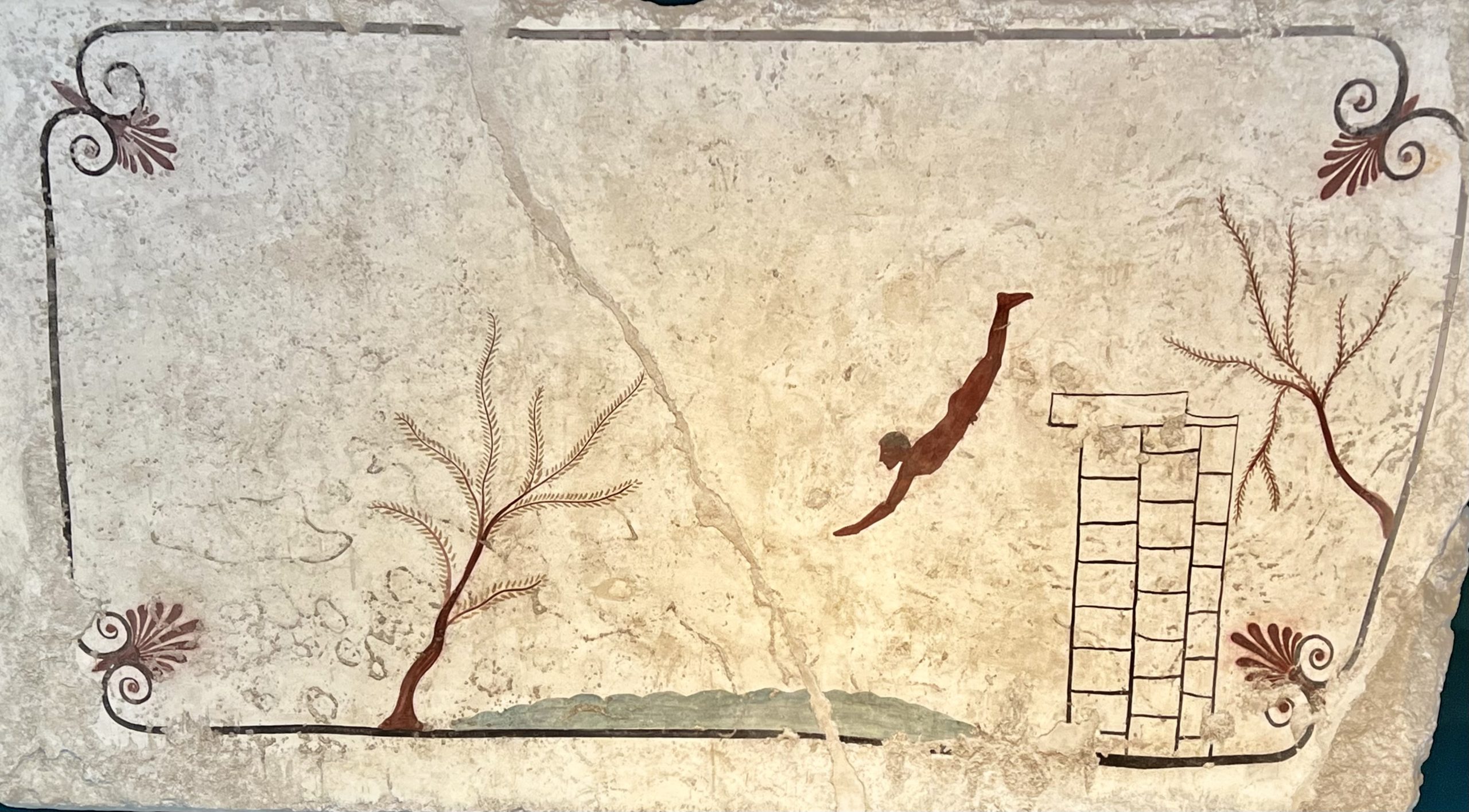
Strolling—Paestum
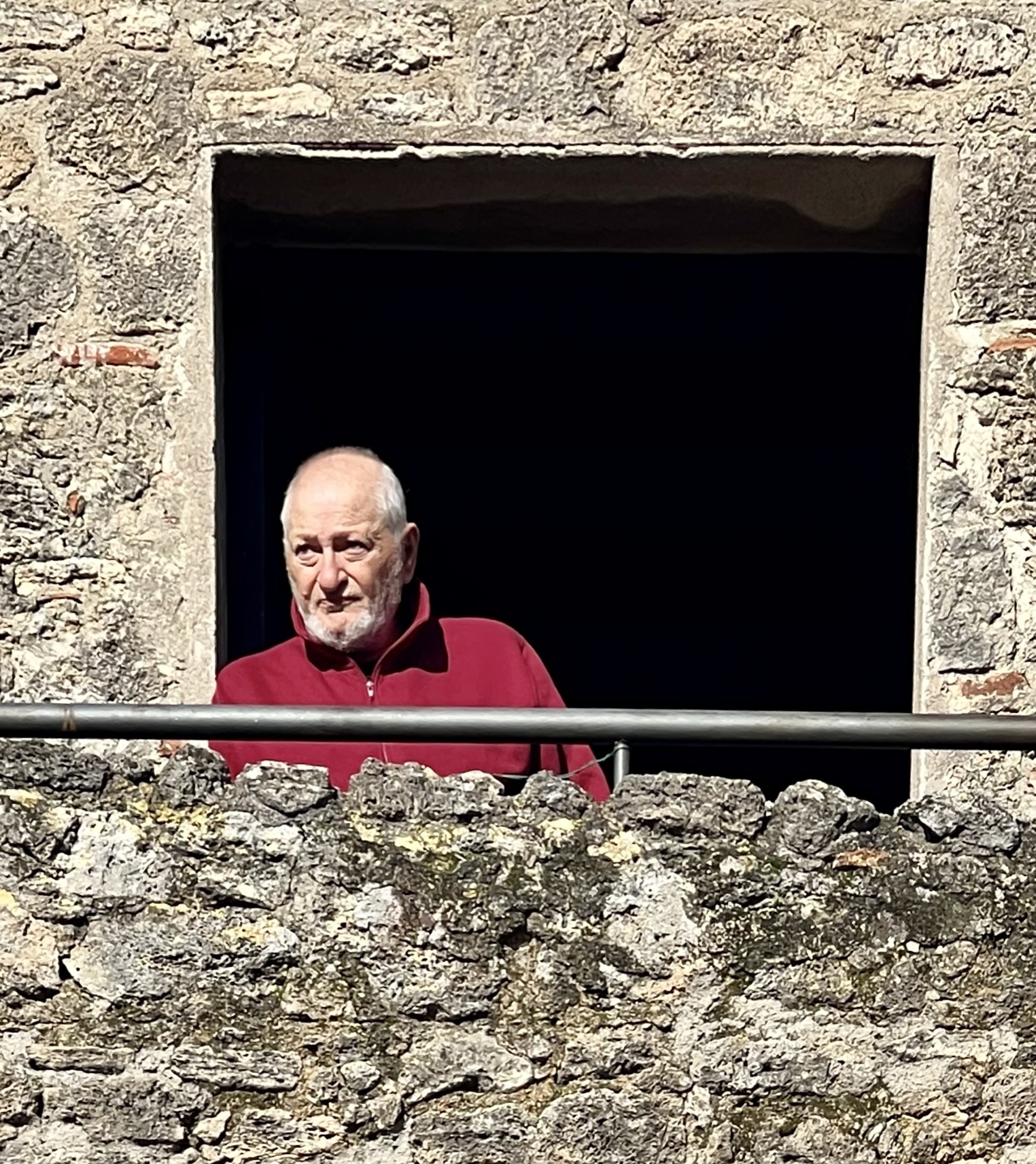
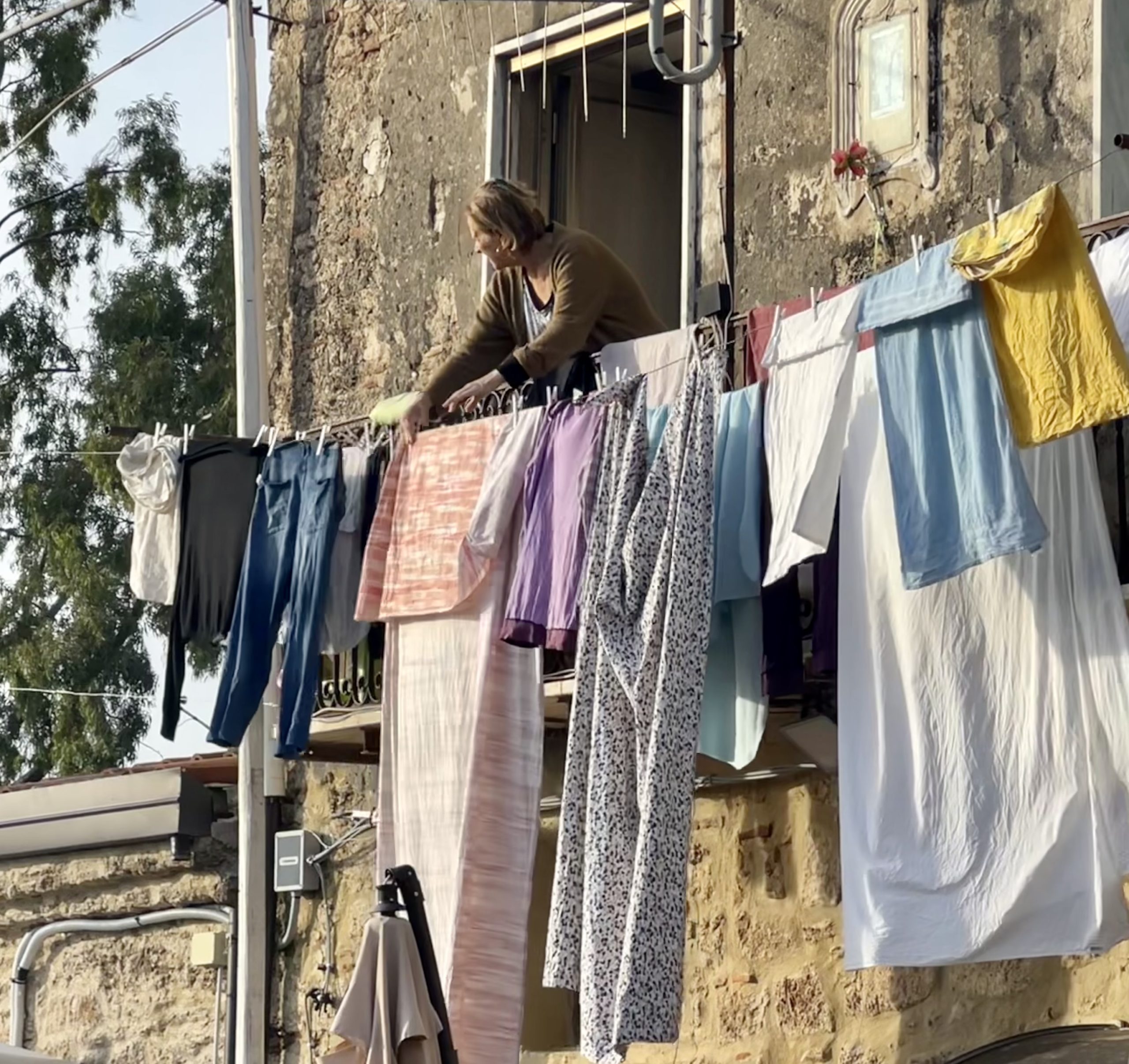
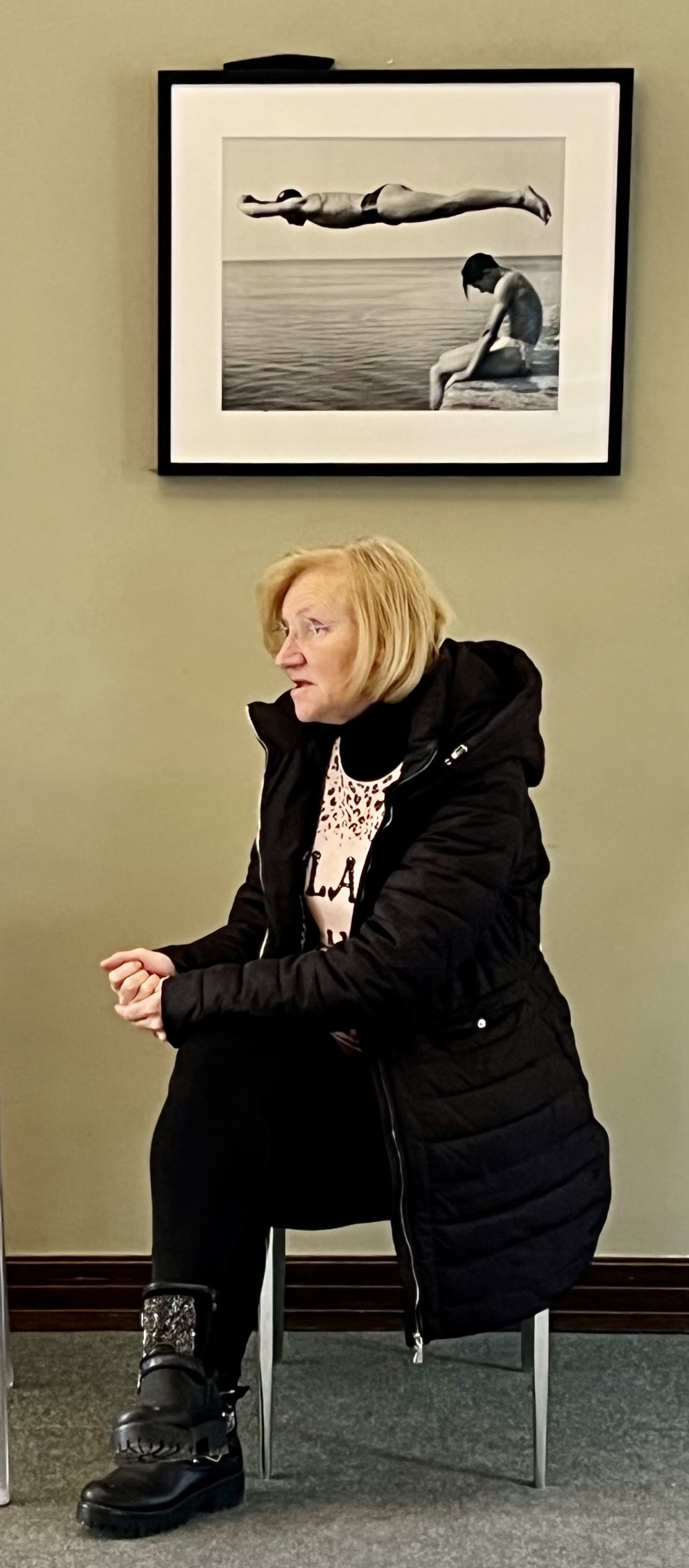
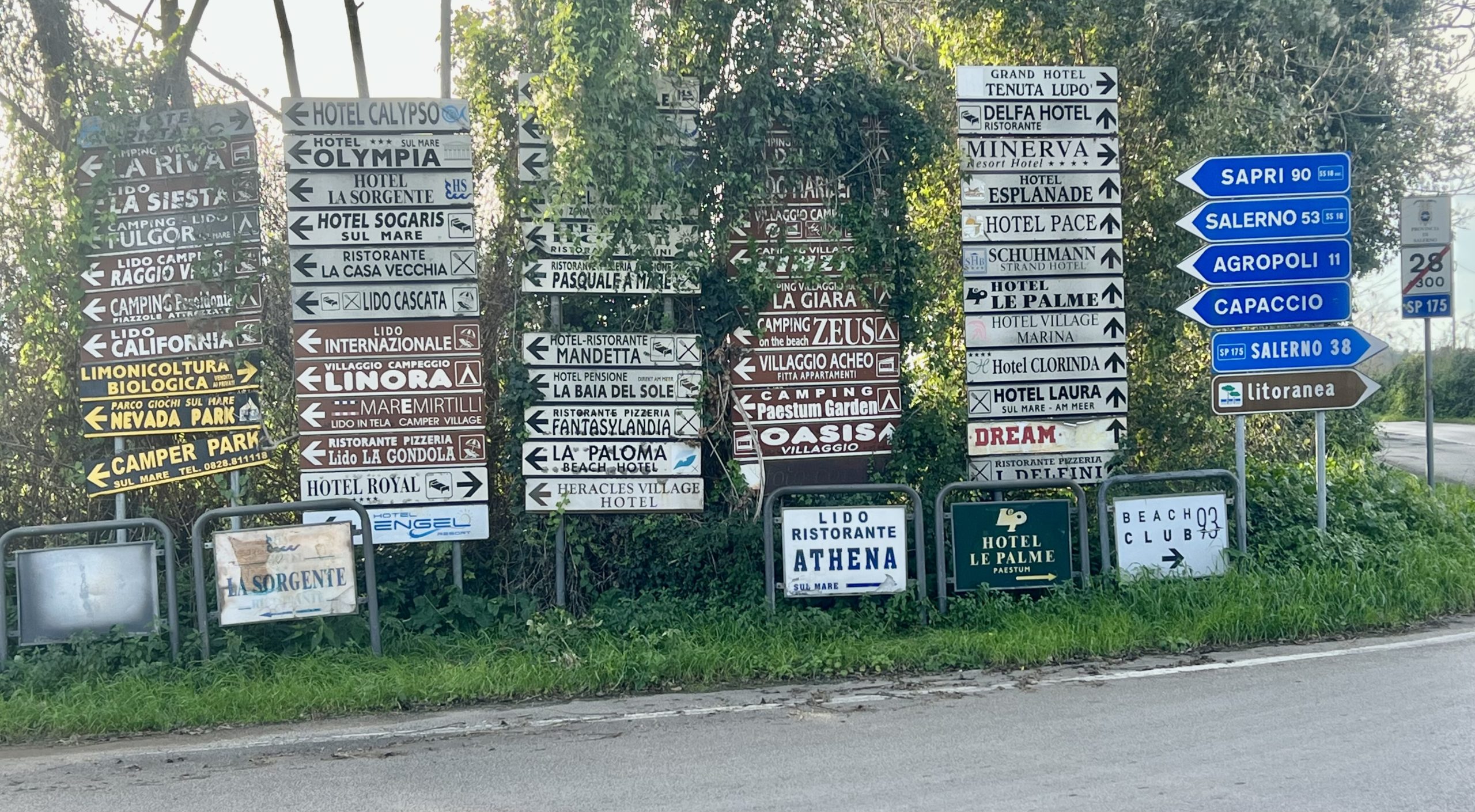
Le Cene a Paestum
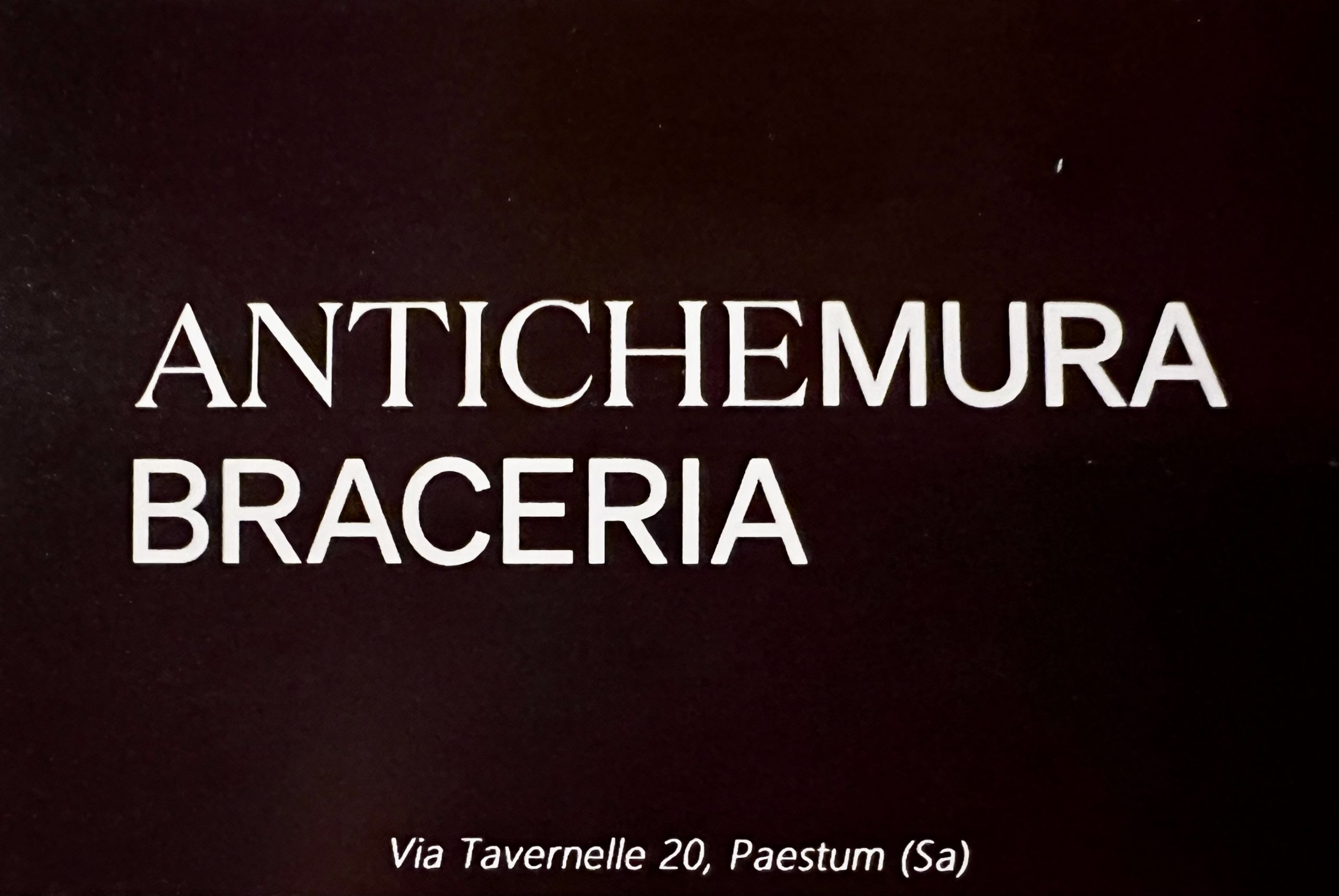
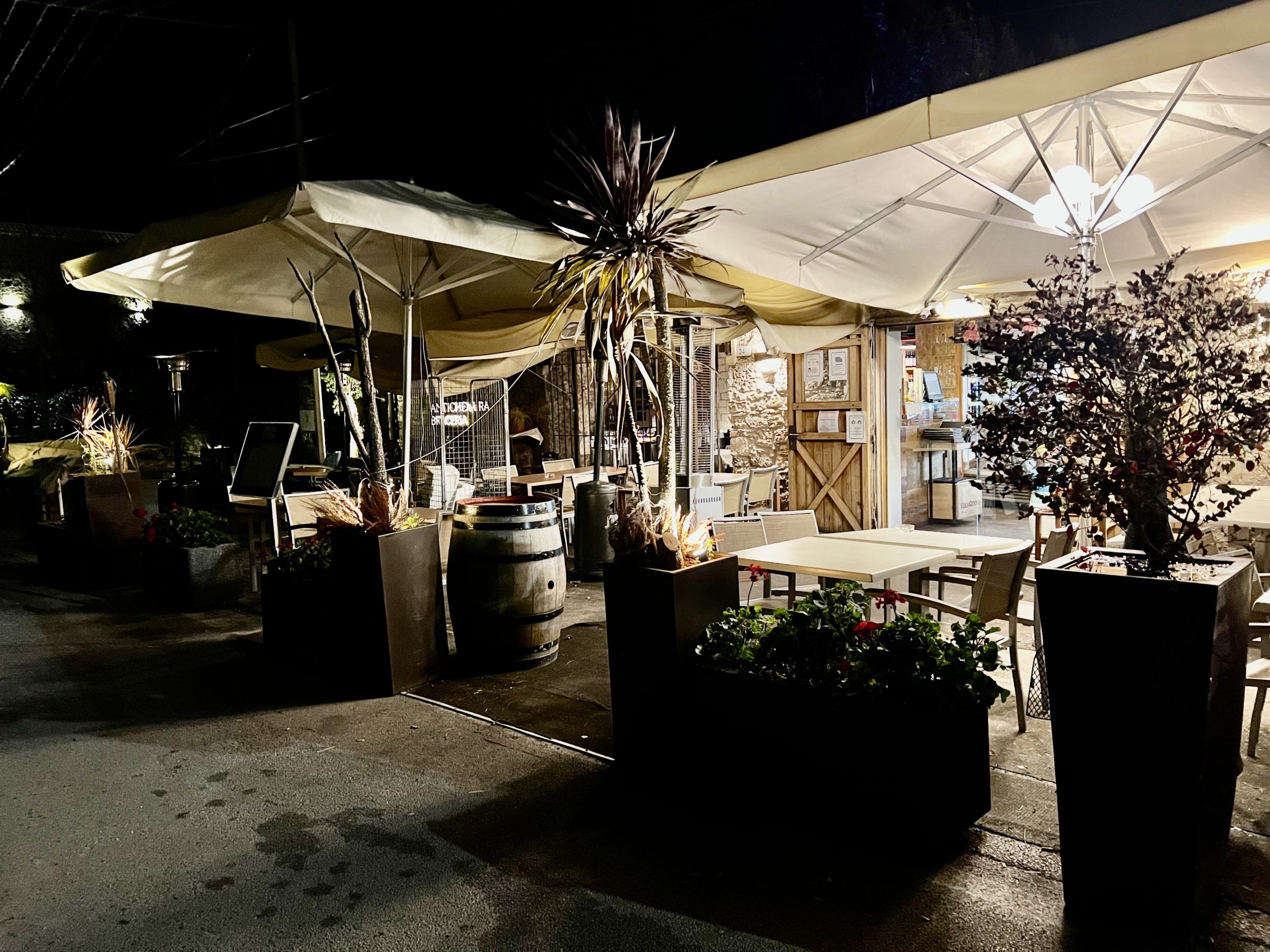
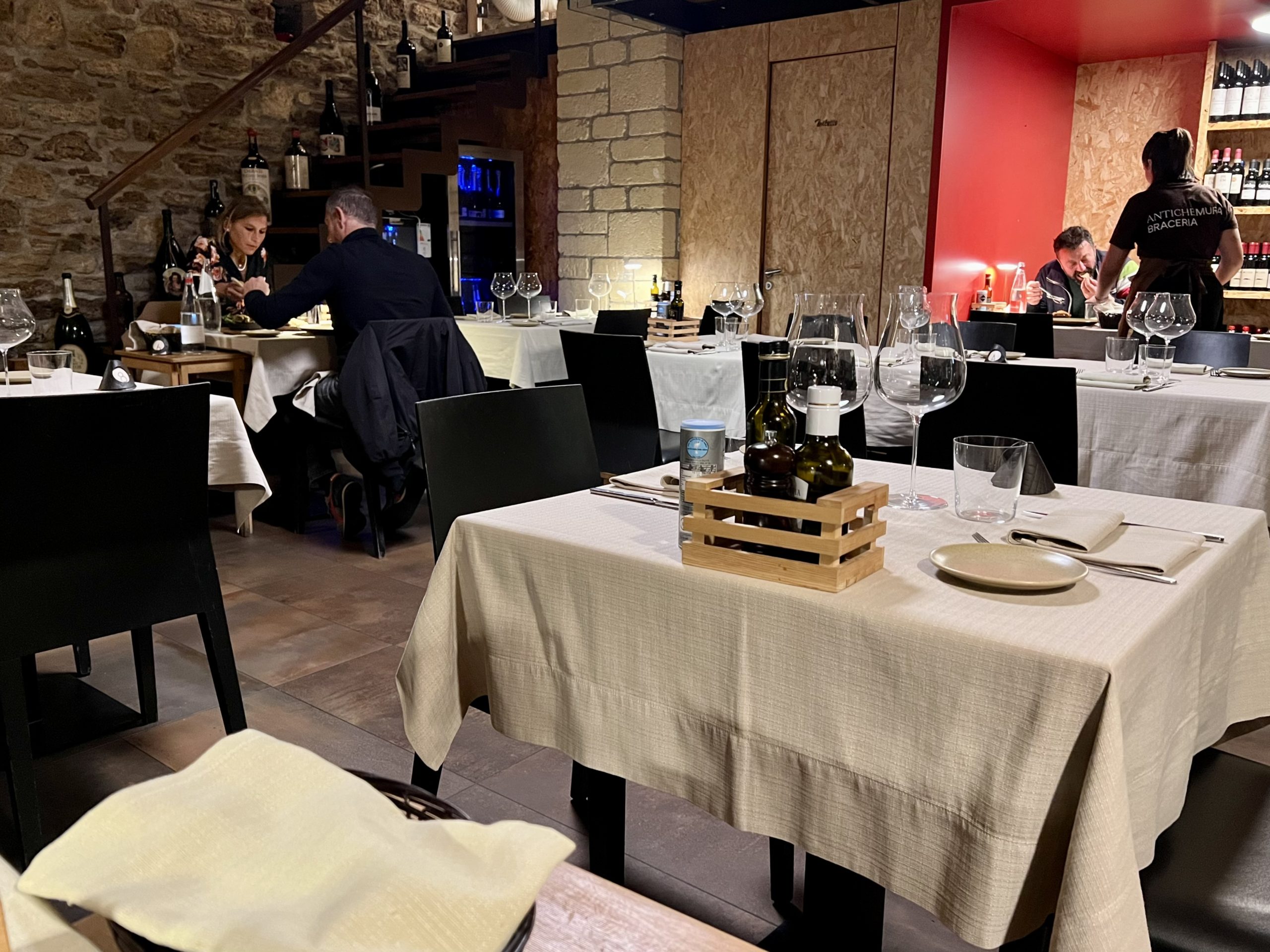
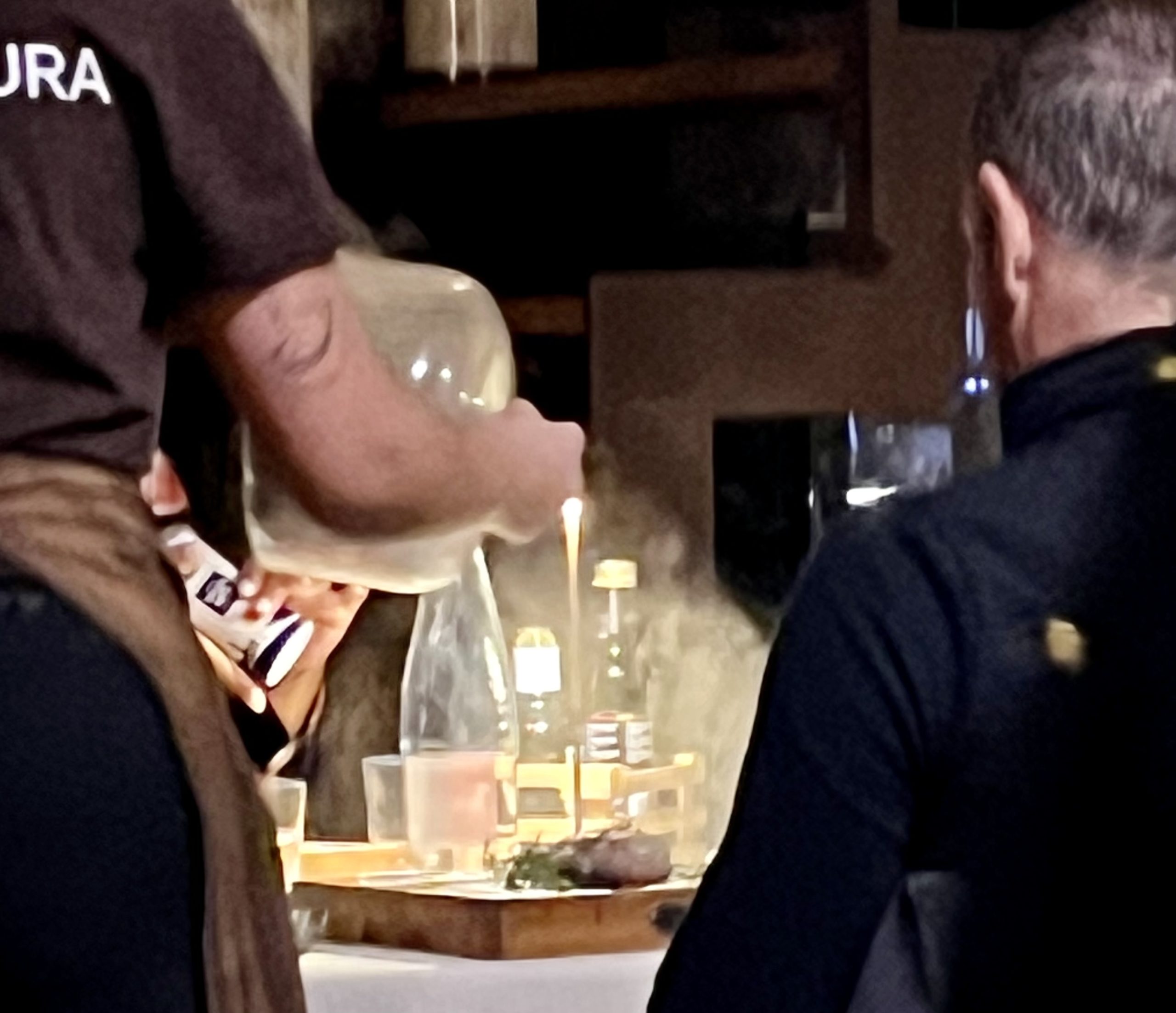

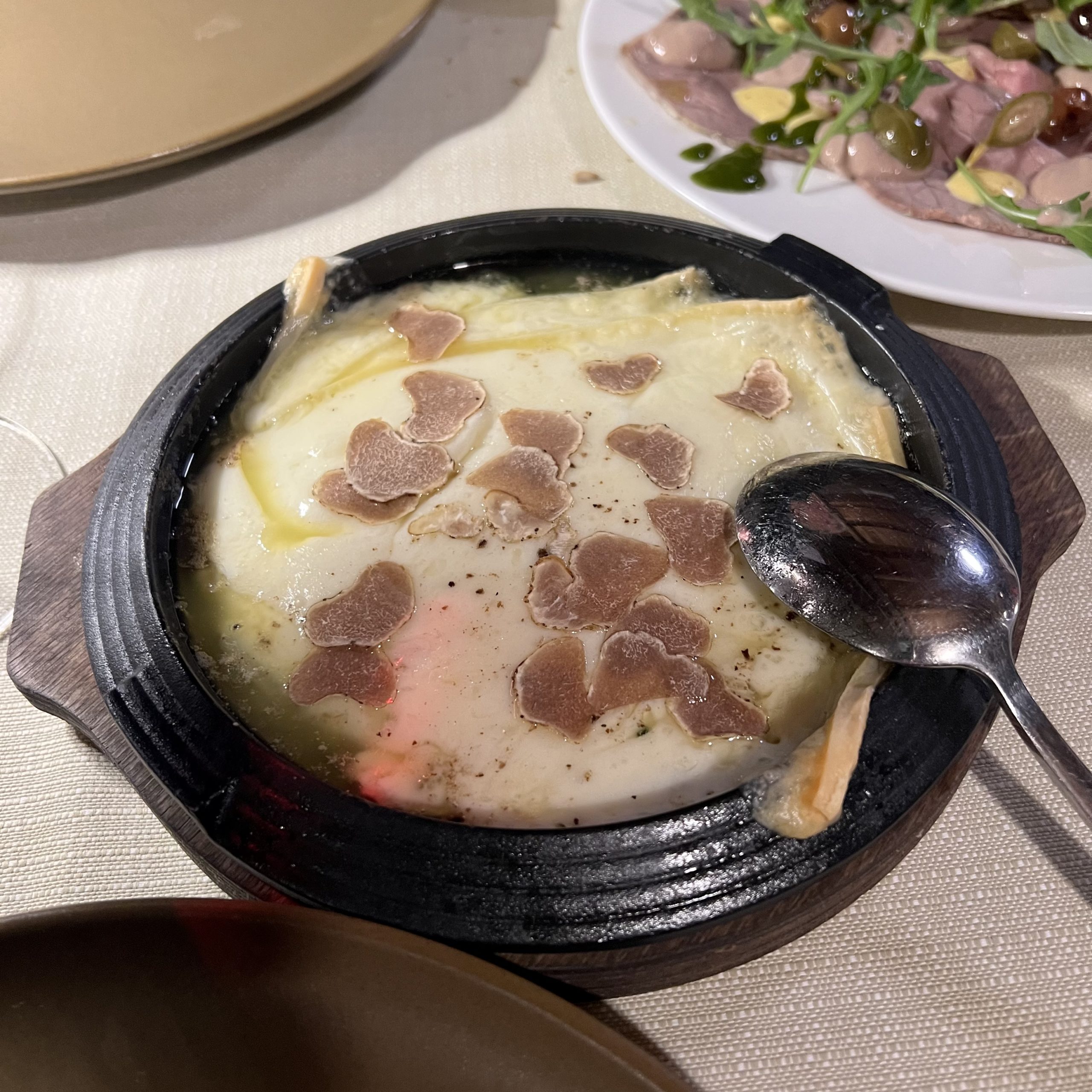
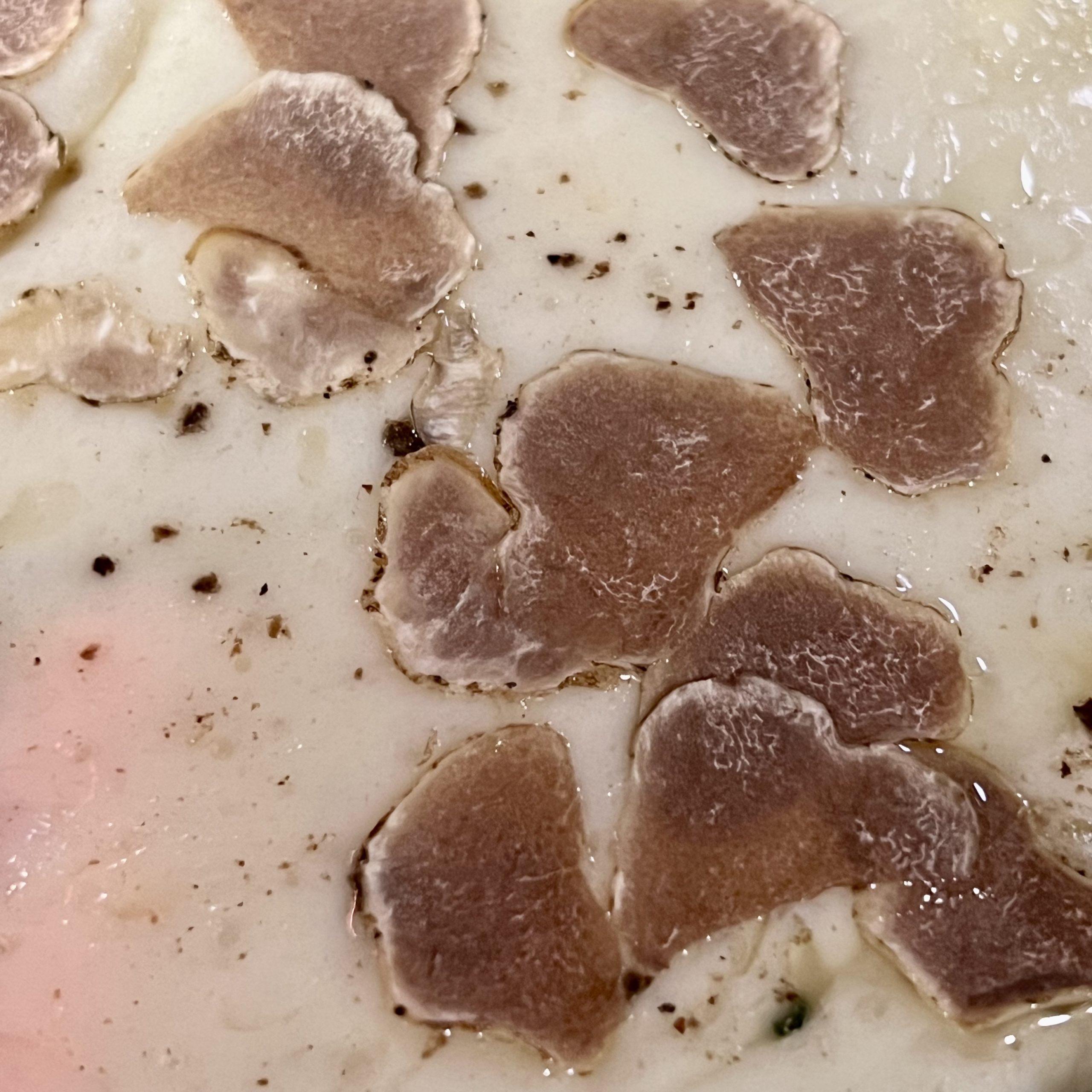

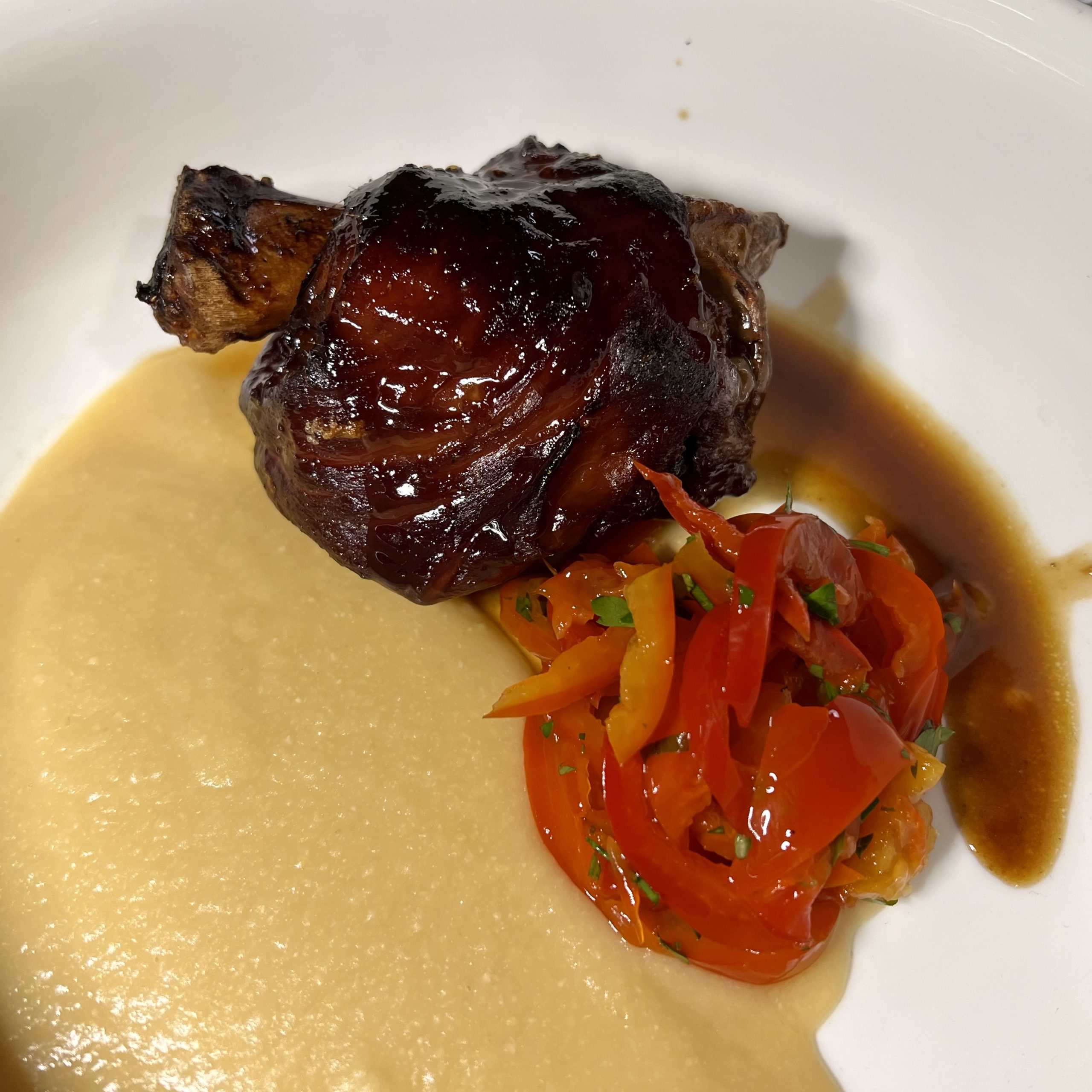
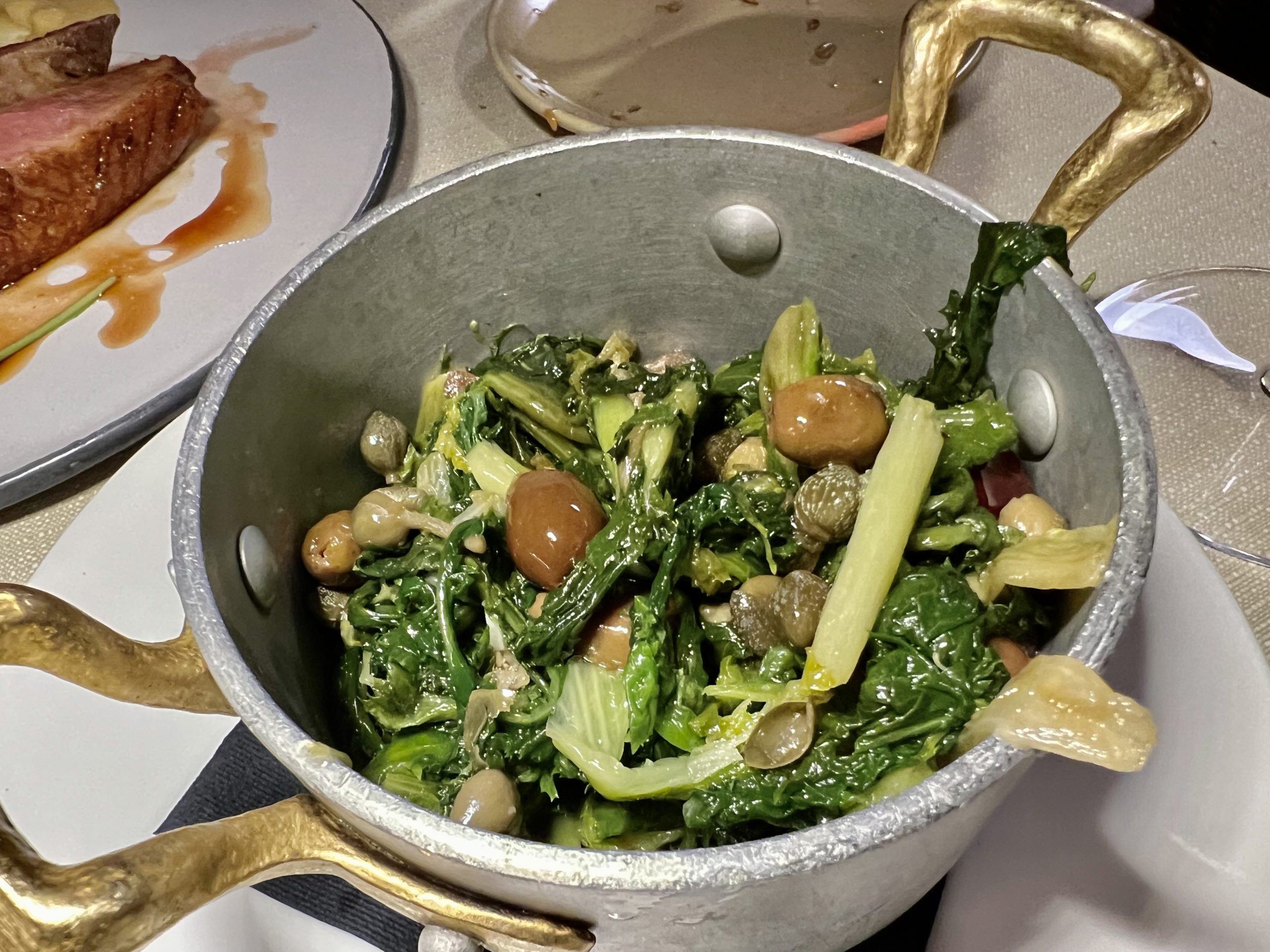
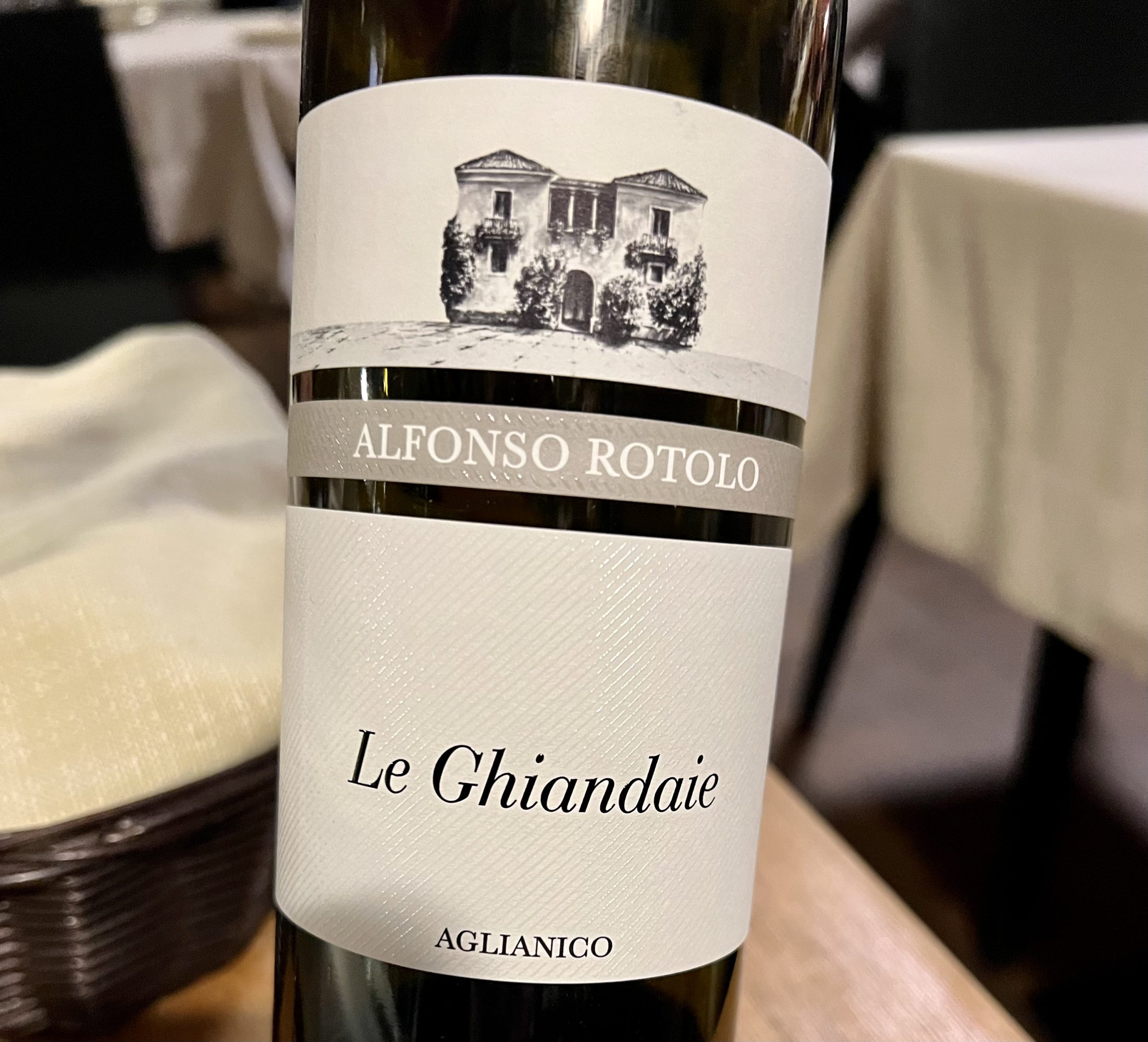
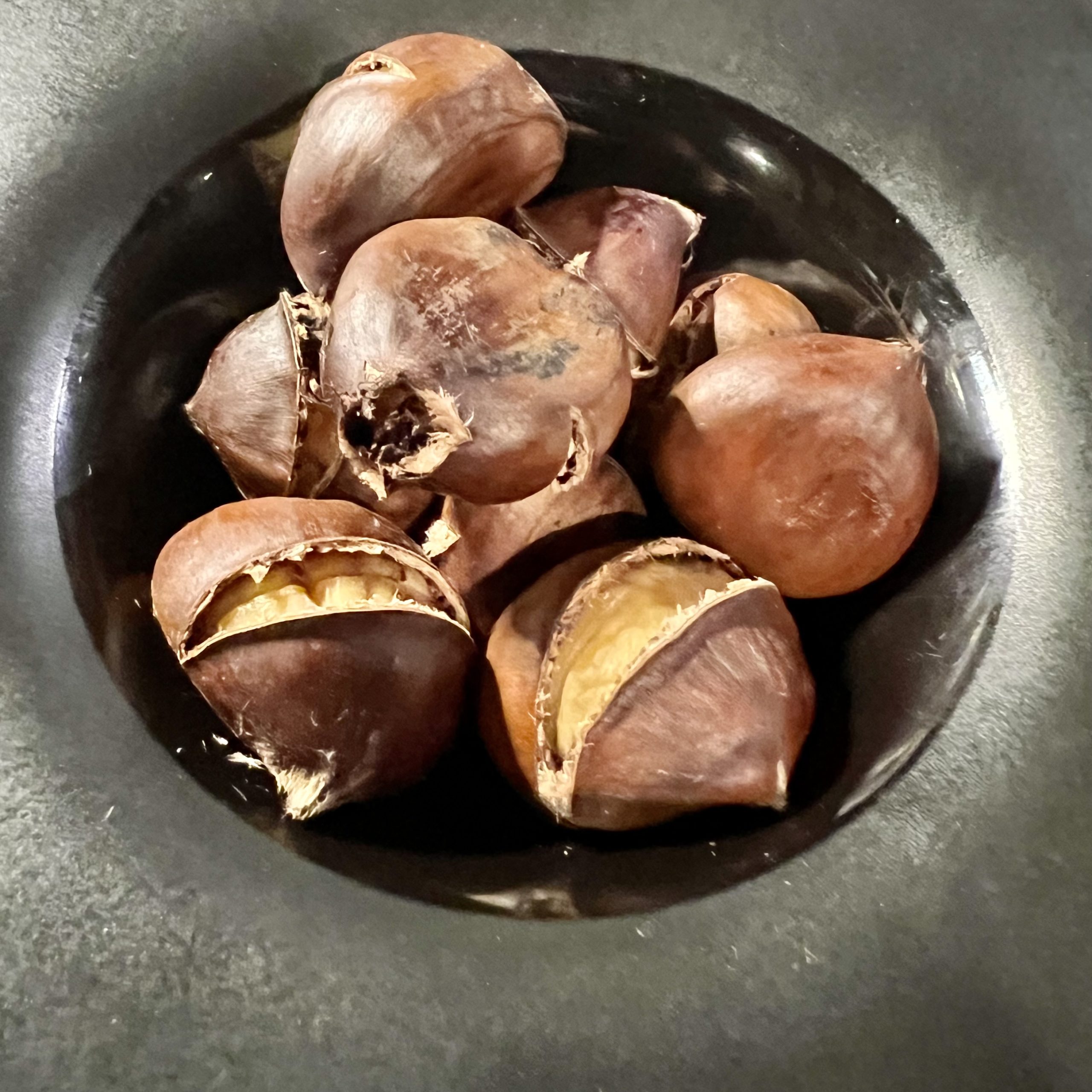
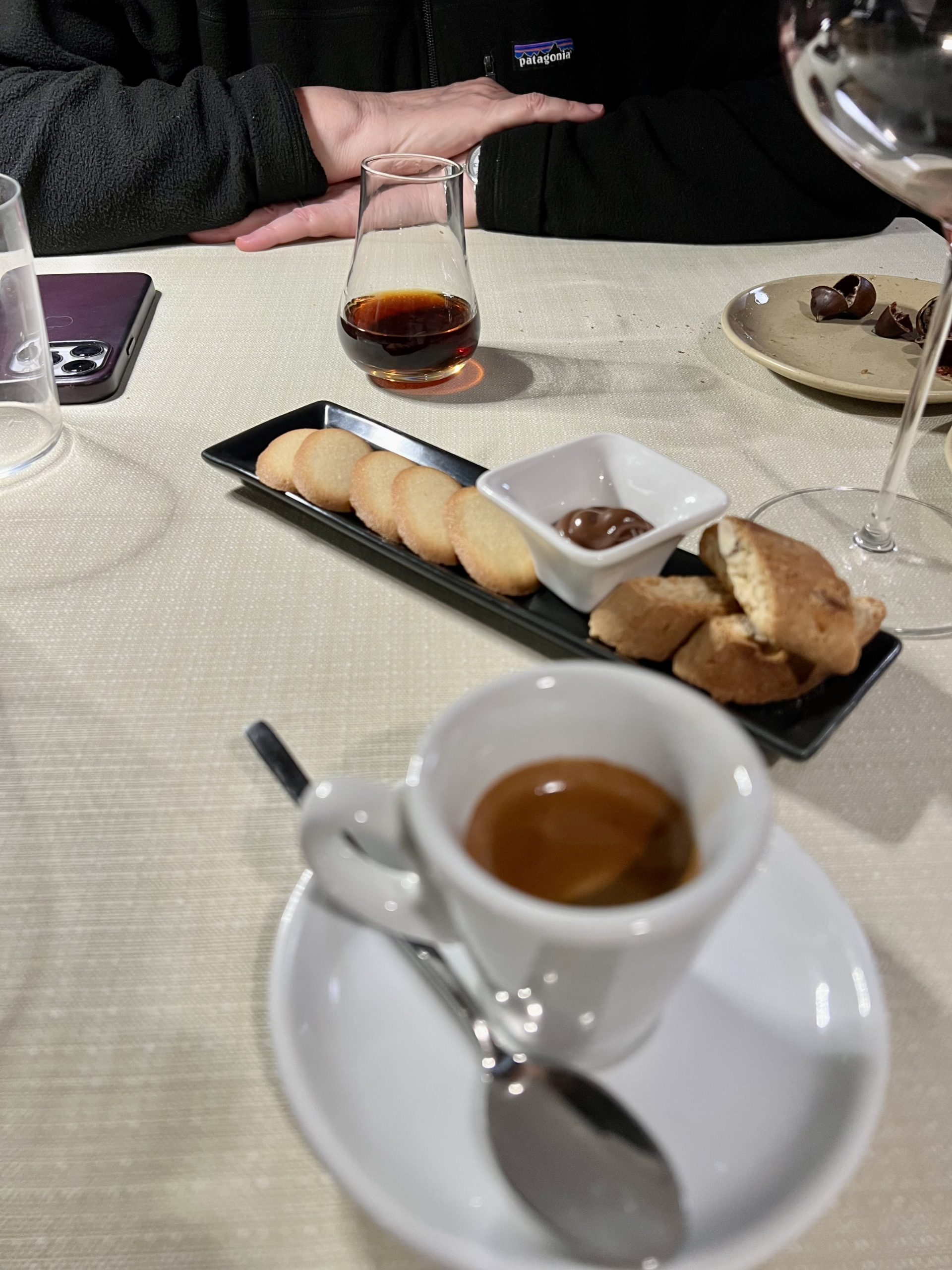
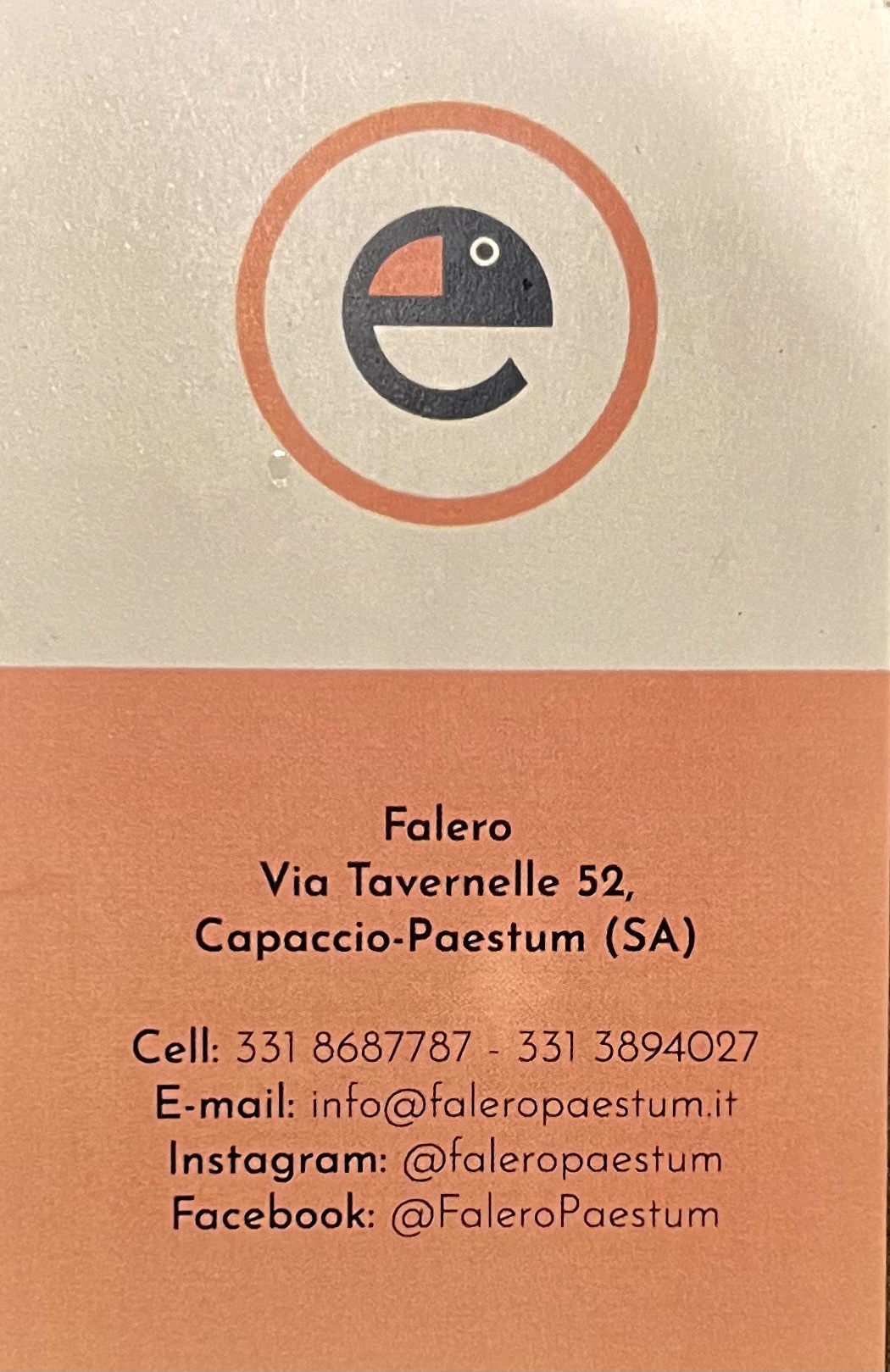
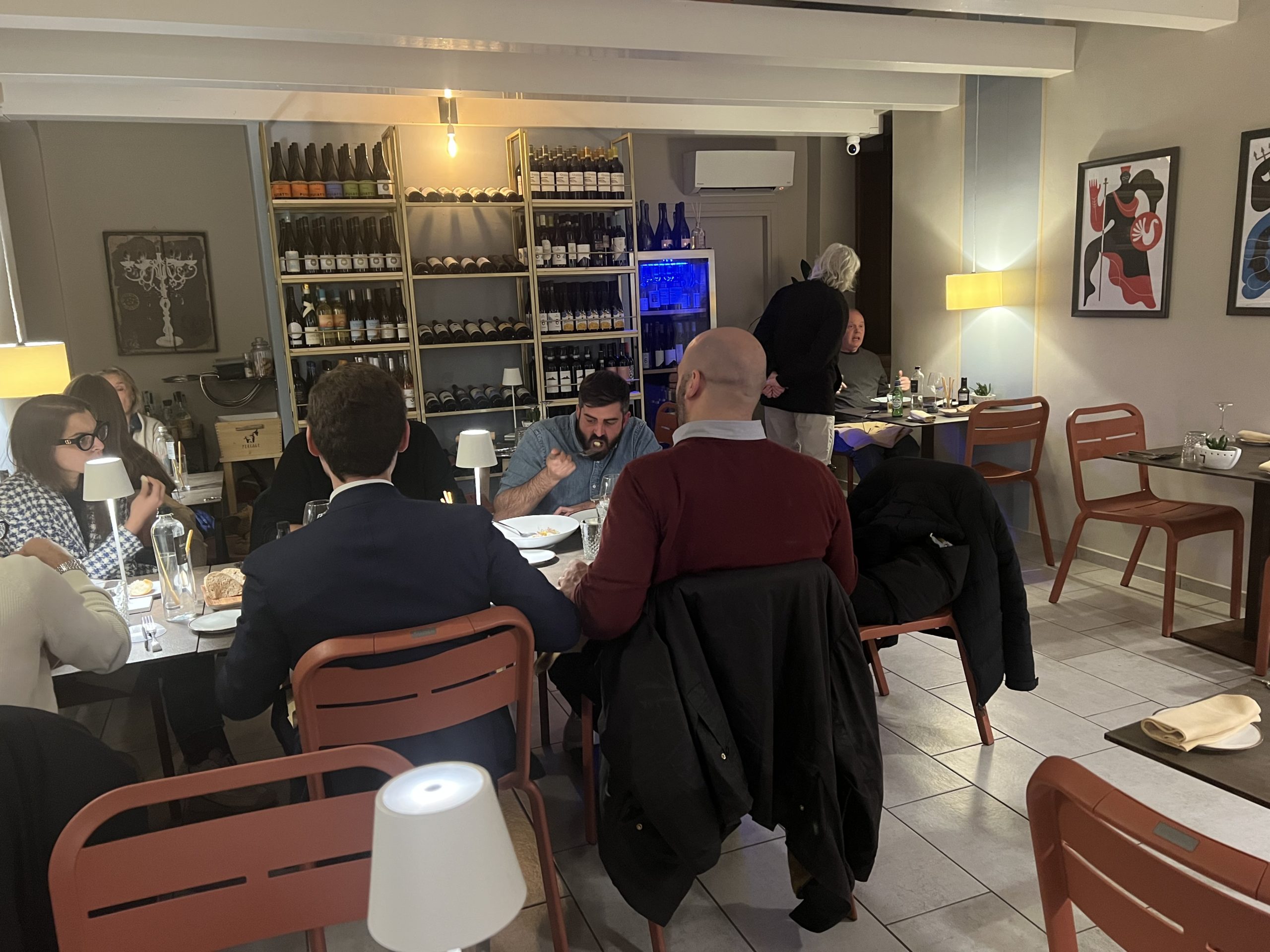

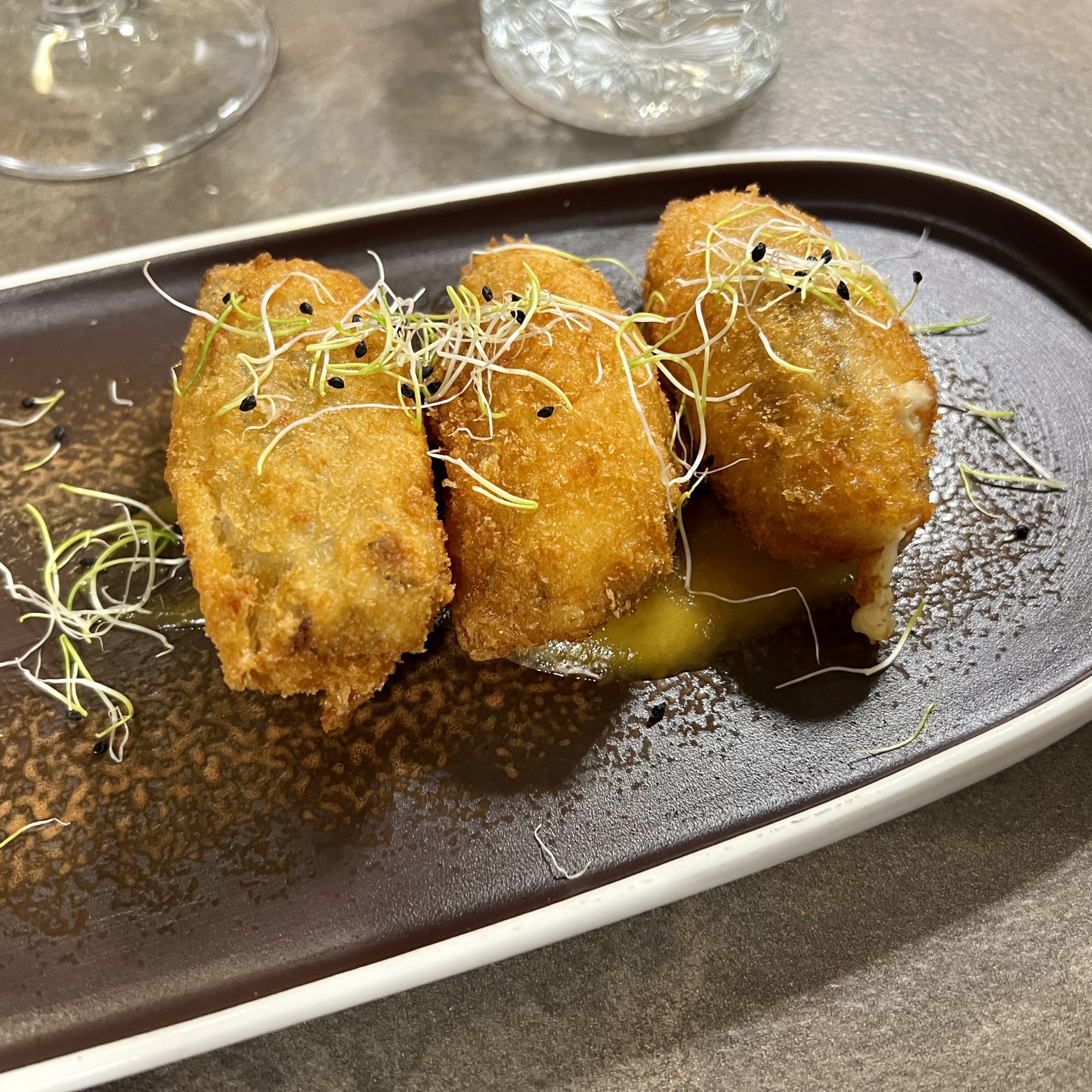
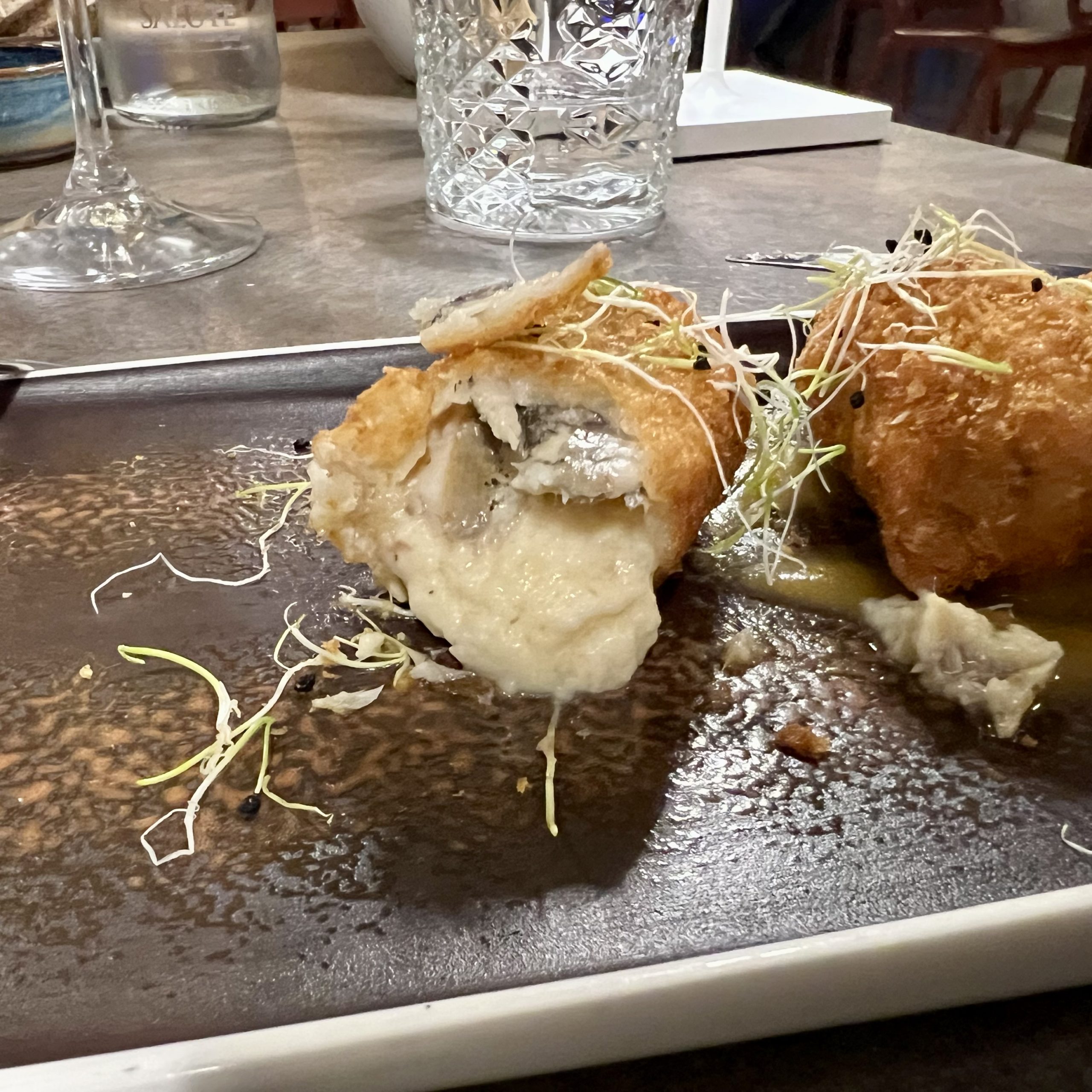
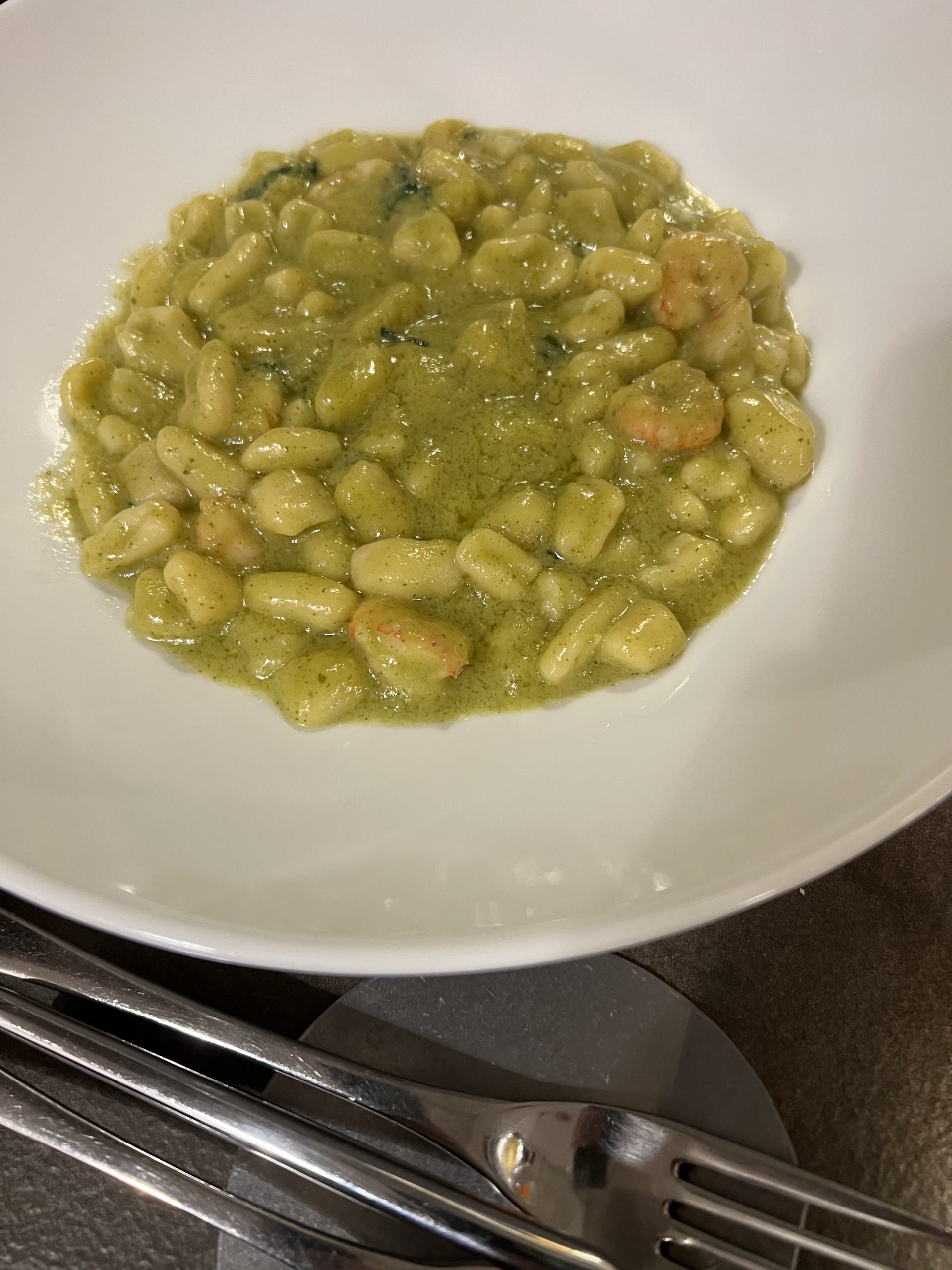
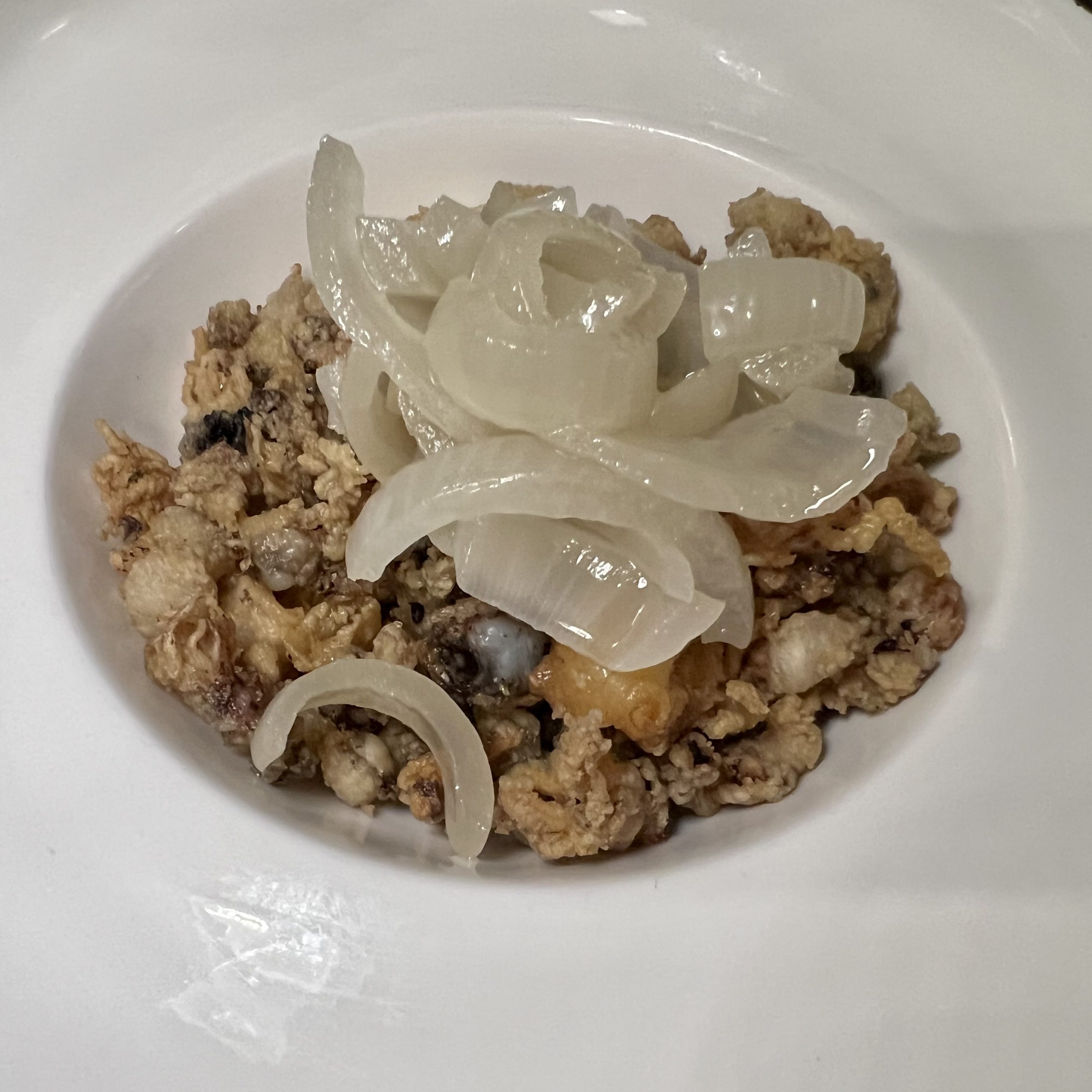
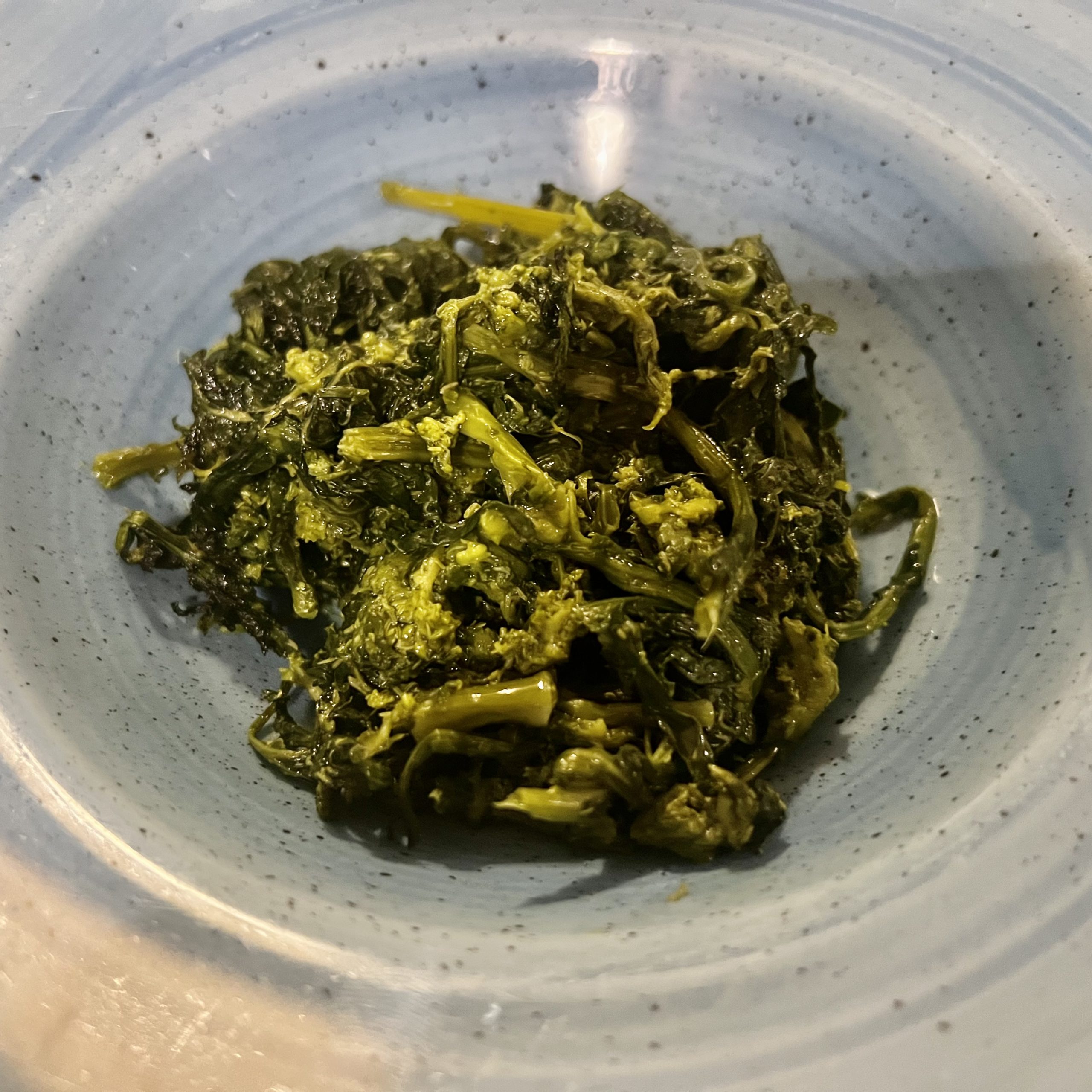
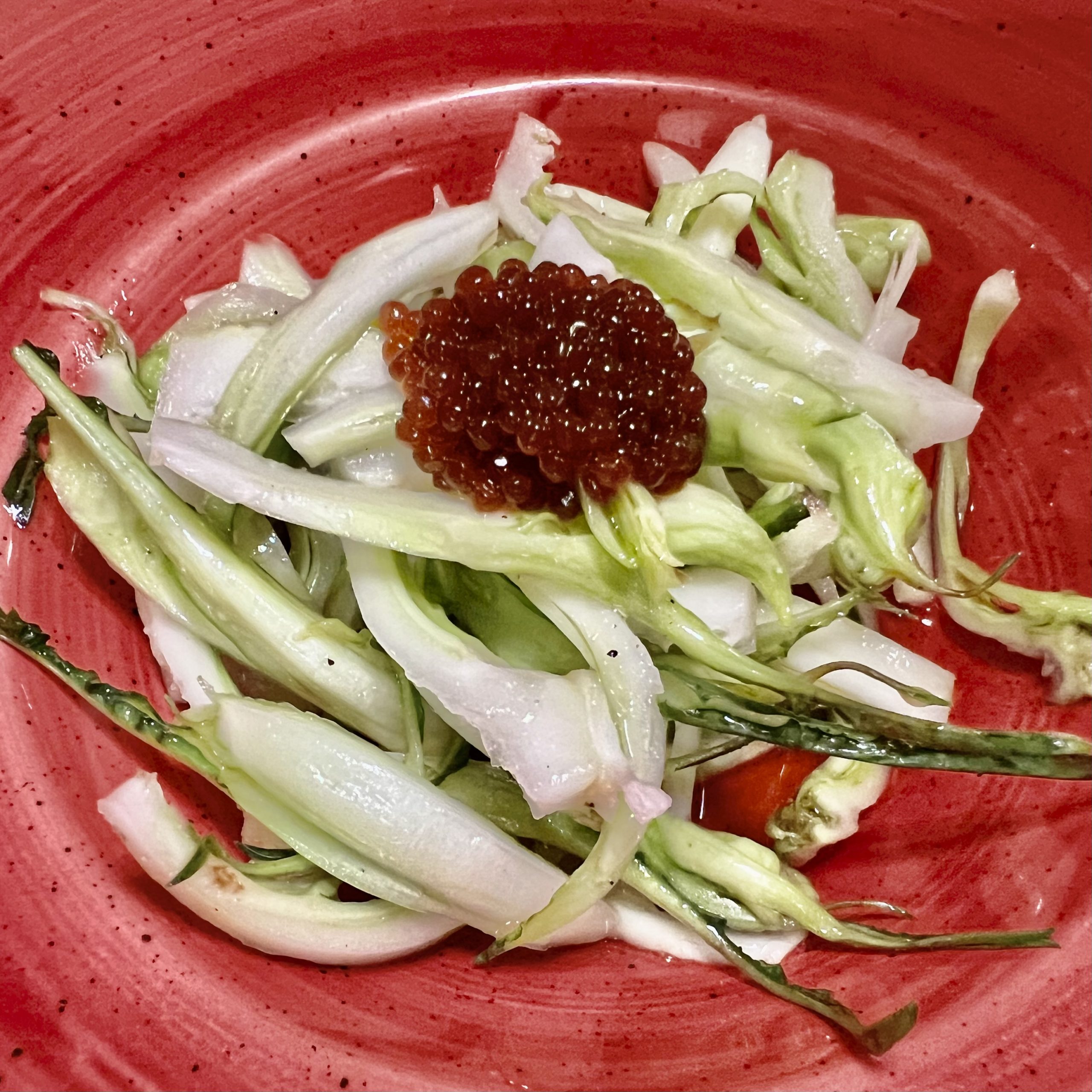
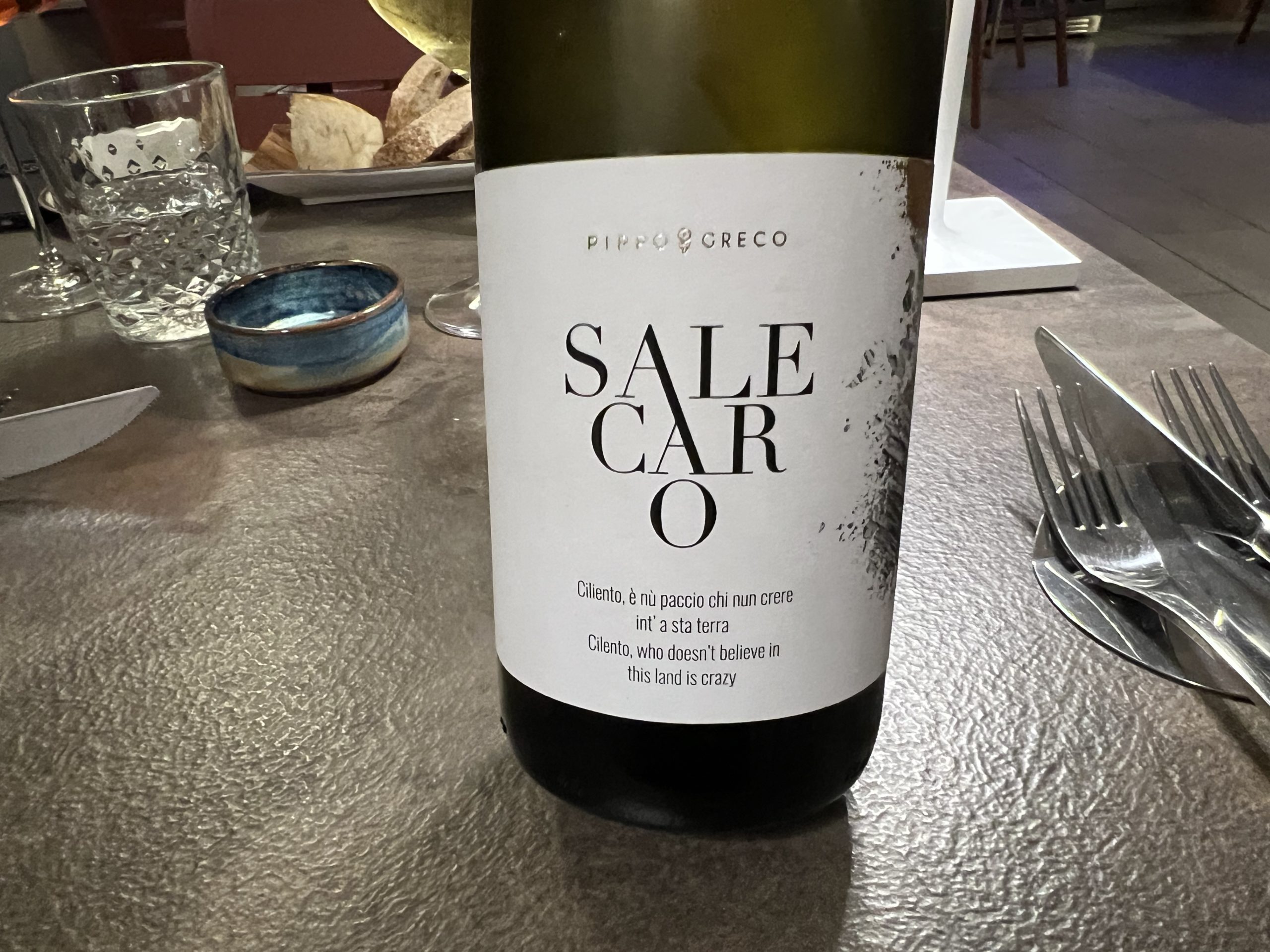
On the Road to Rome
The drive out of Paestum took about thirty minutes before we reached the autostrada. The landscape is flat until then, with mountains in the distance. The remaining drive took us through more mountains, some with snow and one with a storied volcanic past. We also saw a lot of nursery production throughout until we got to the outskirts of Rome. But even when we entered Rome, we saw sheep grazing.
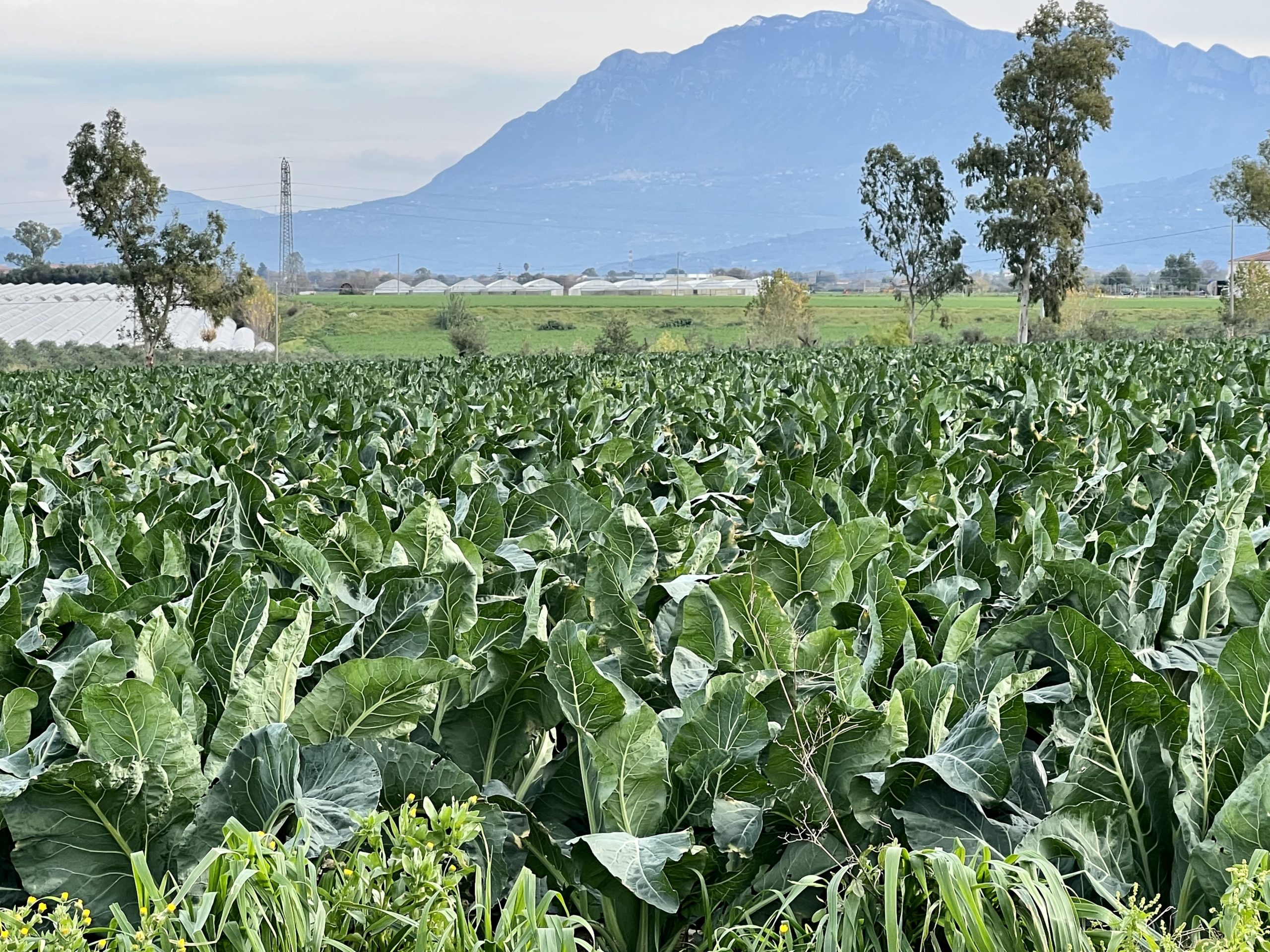
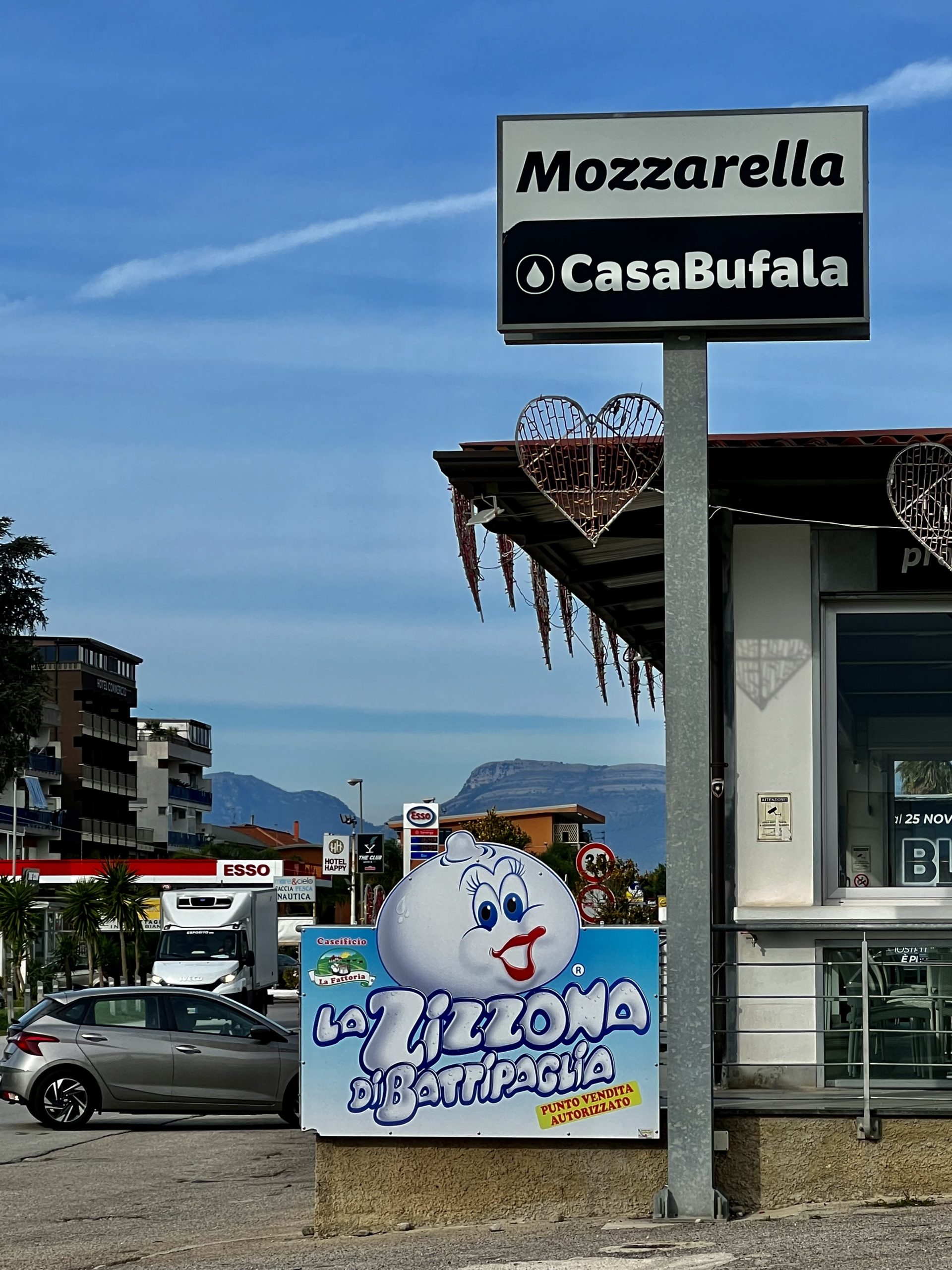
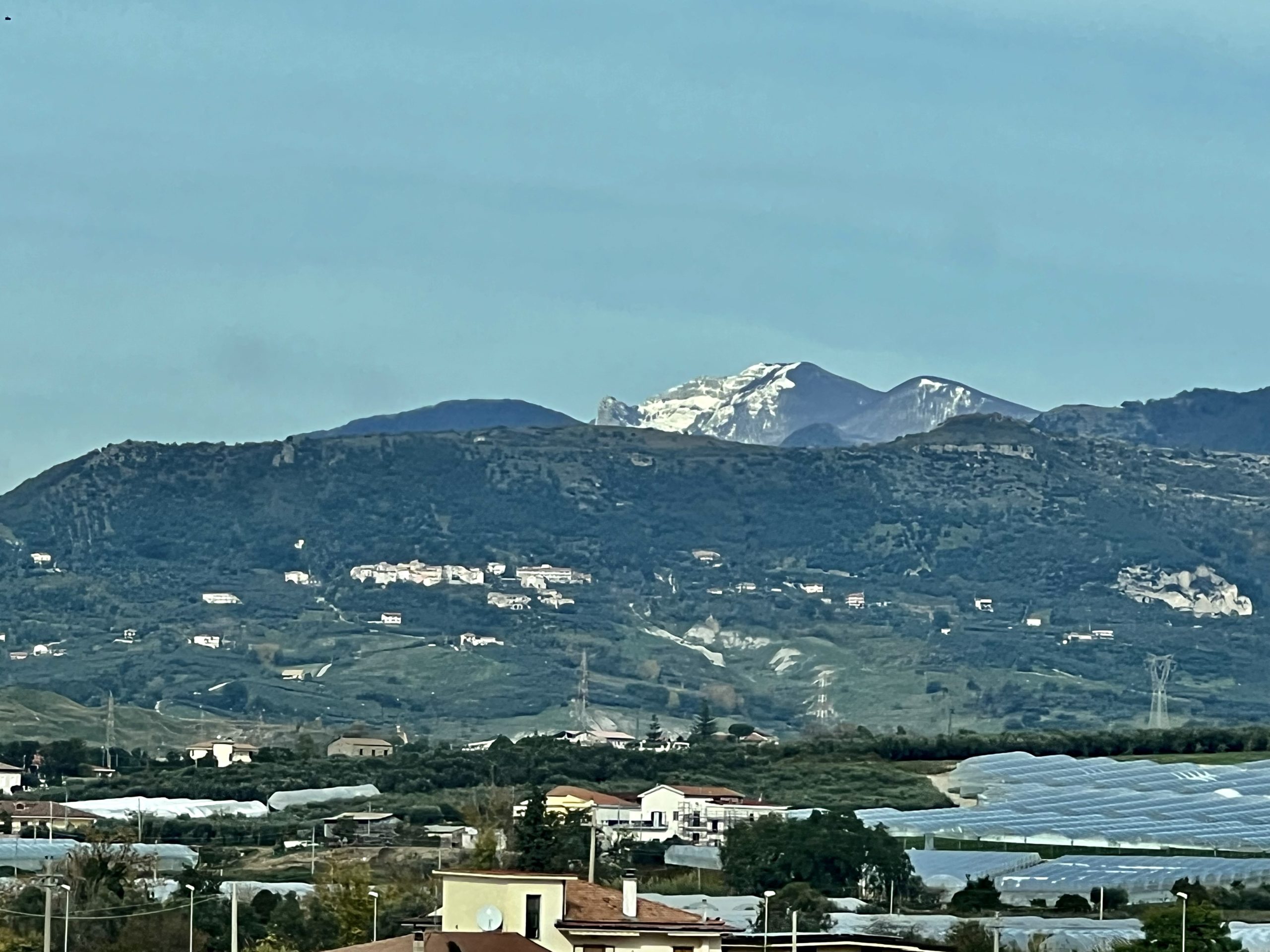
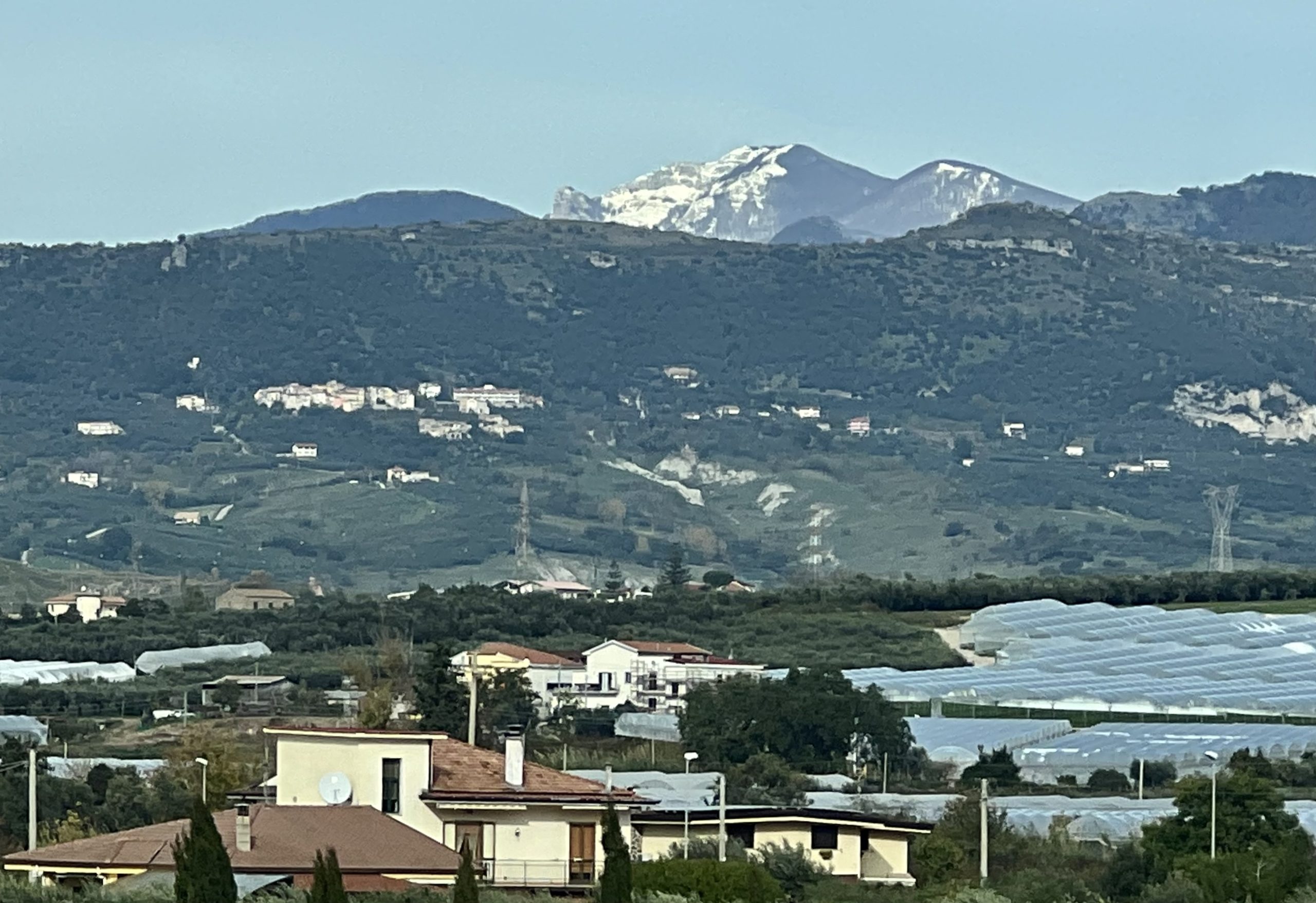
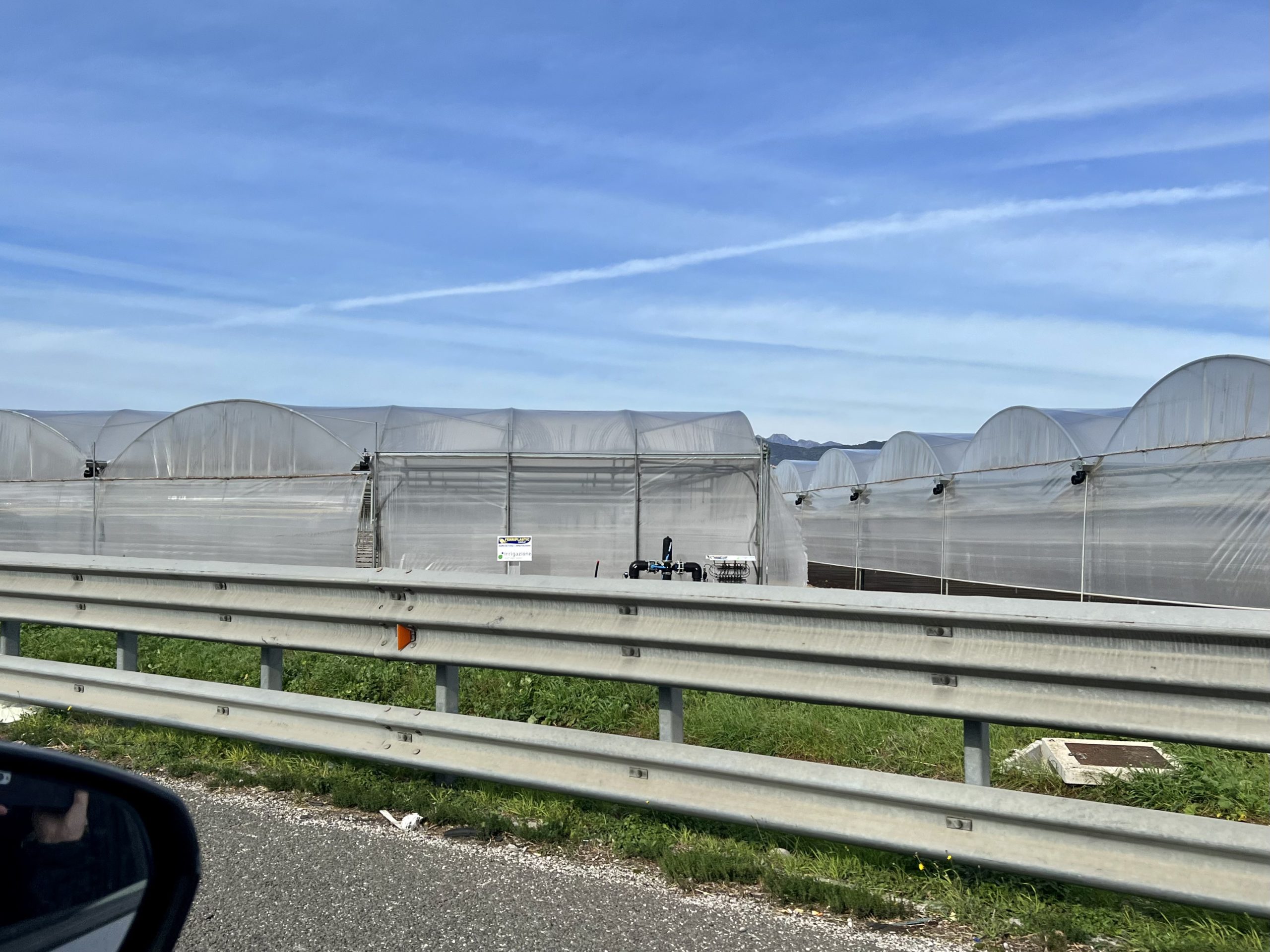
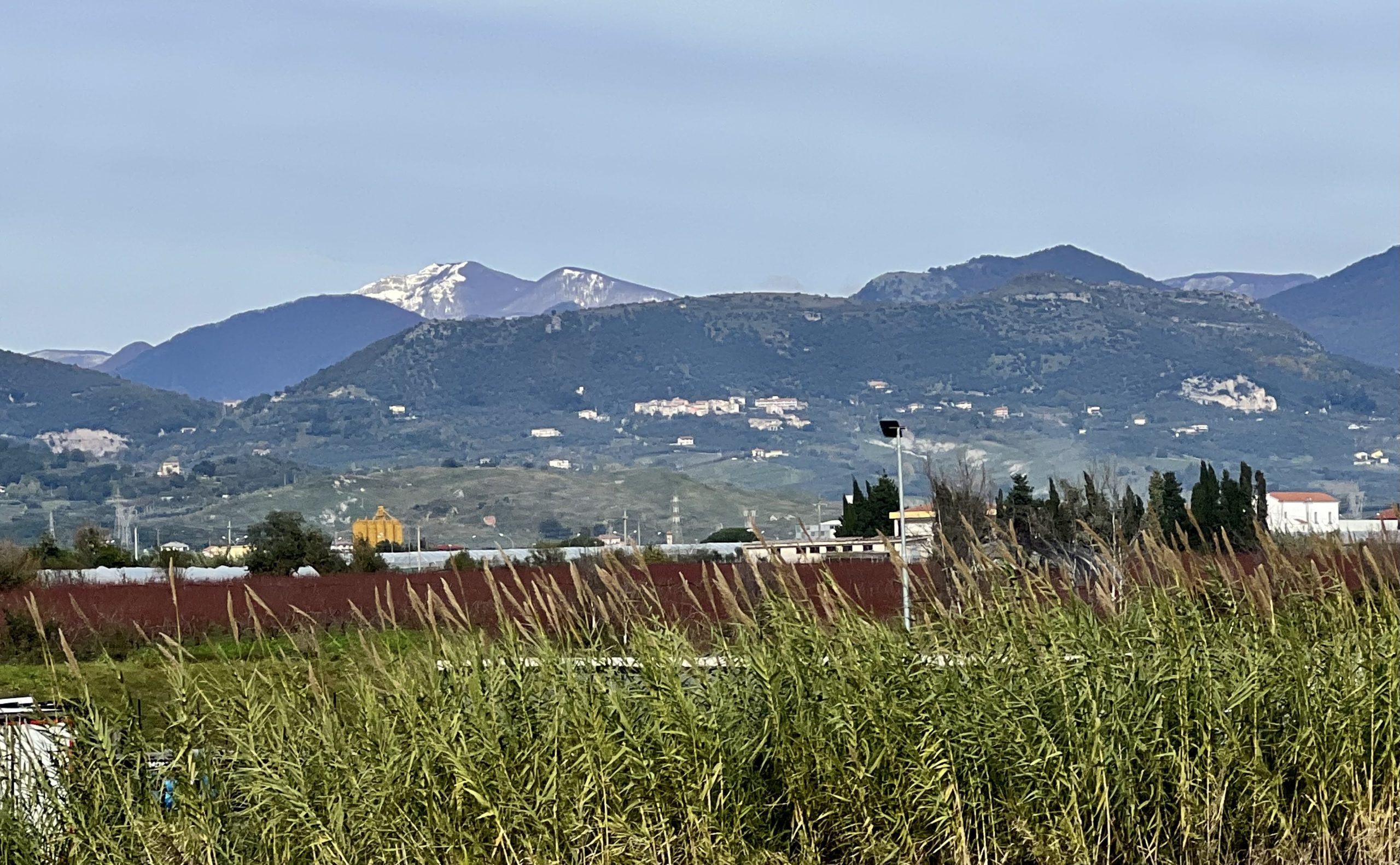
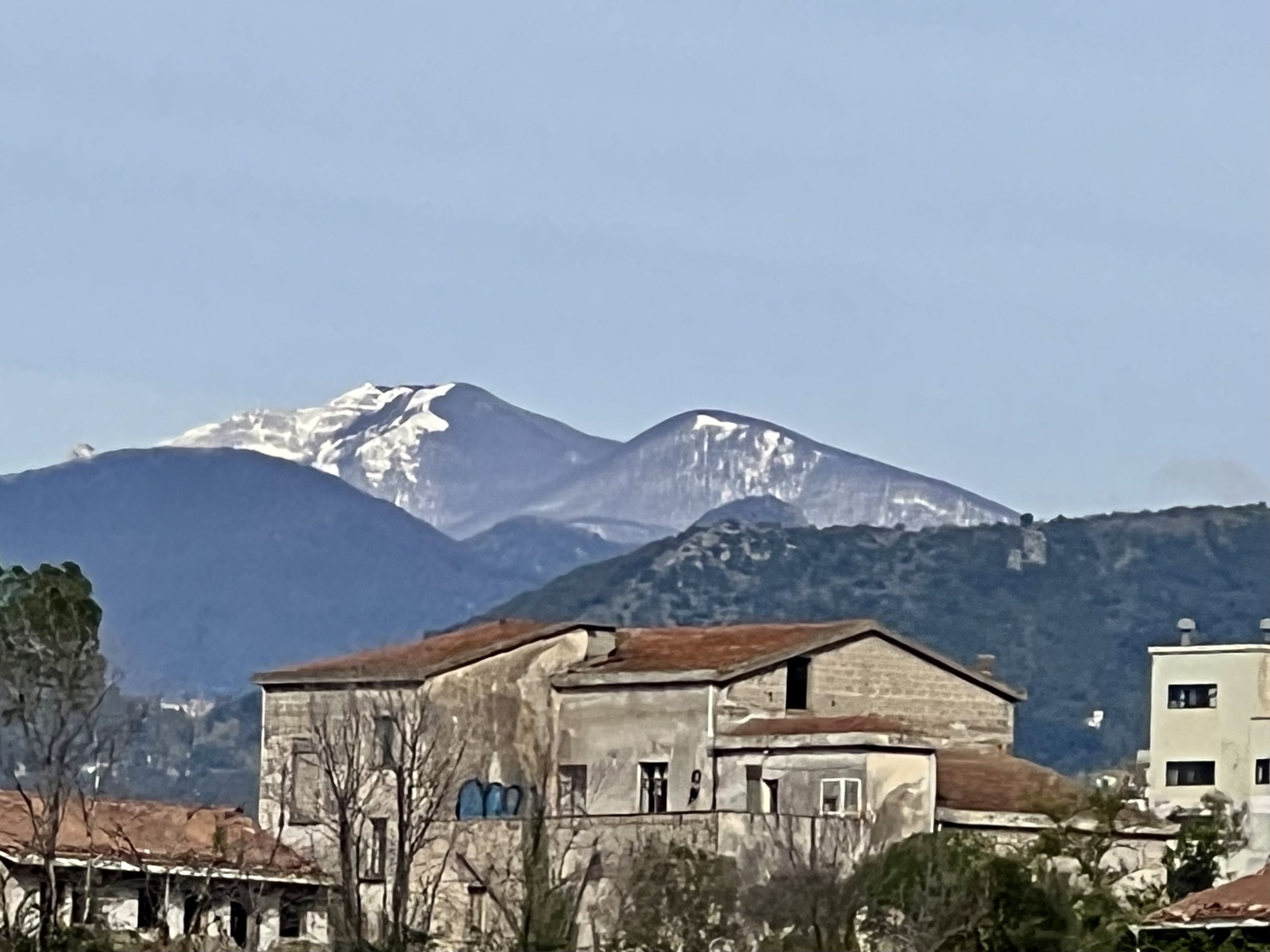

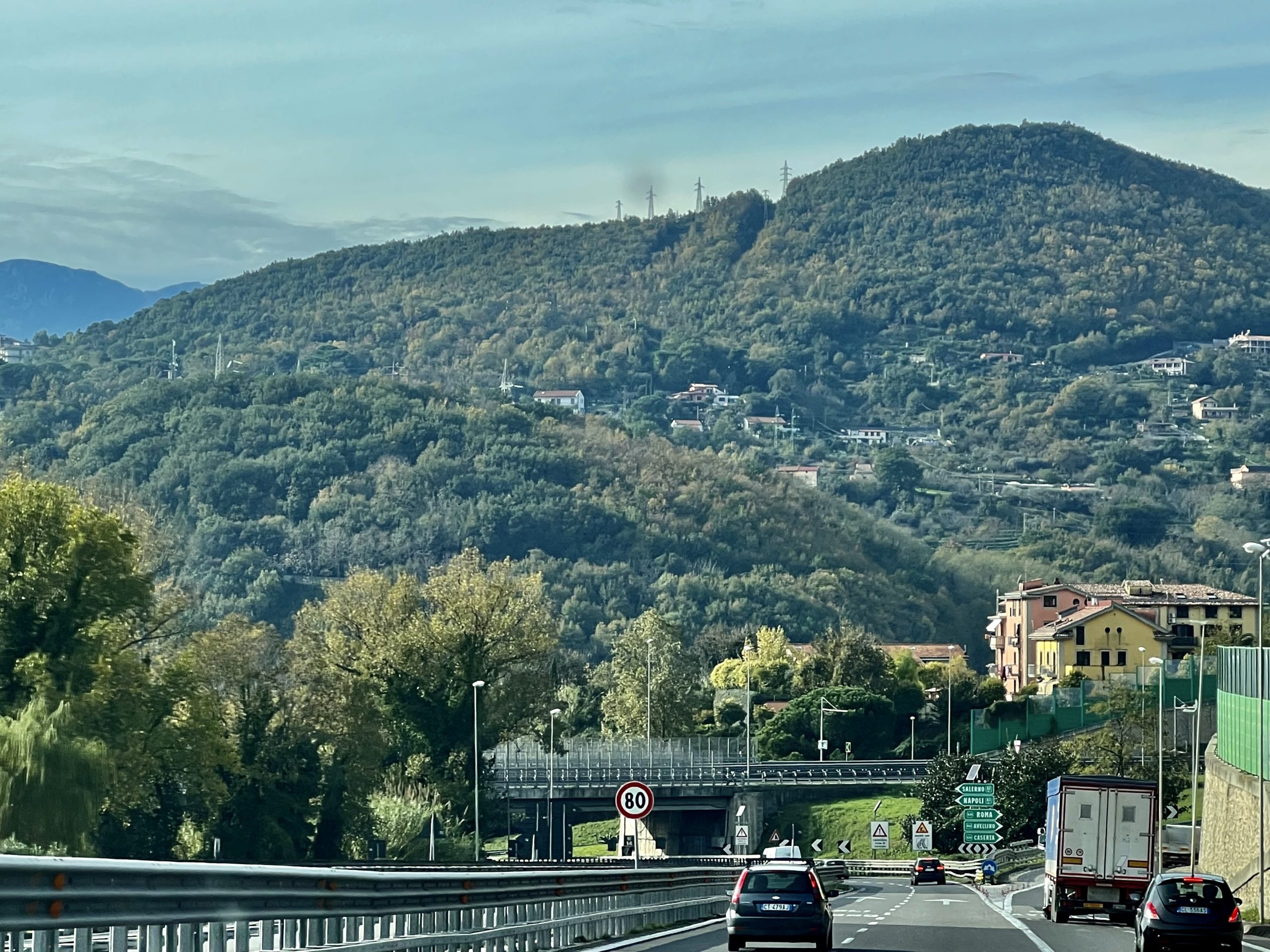
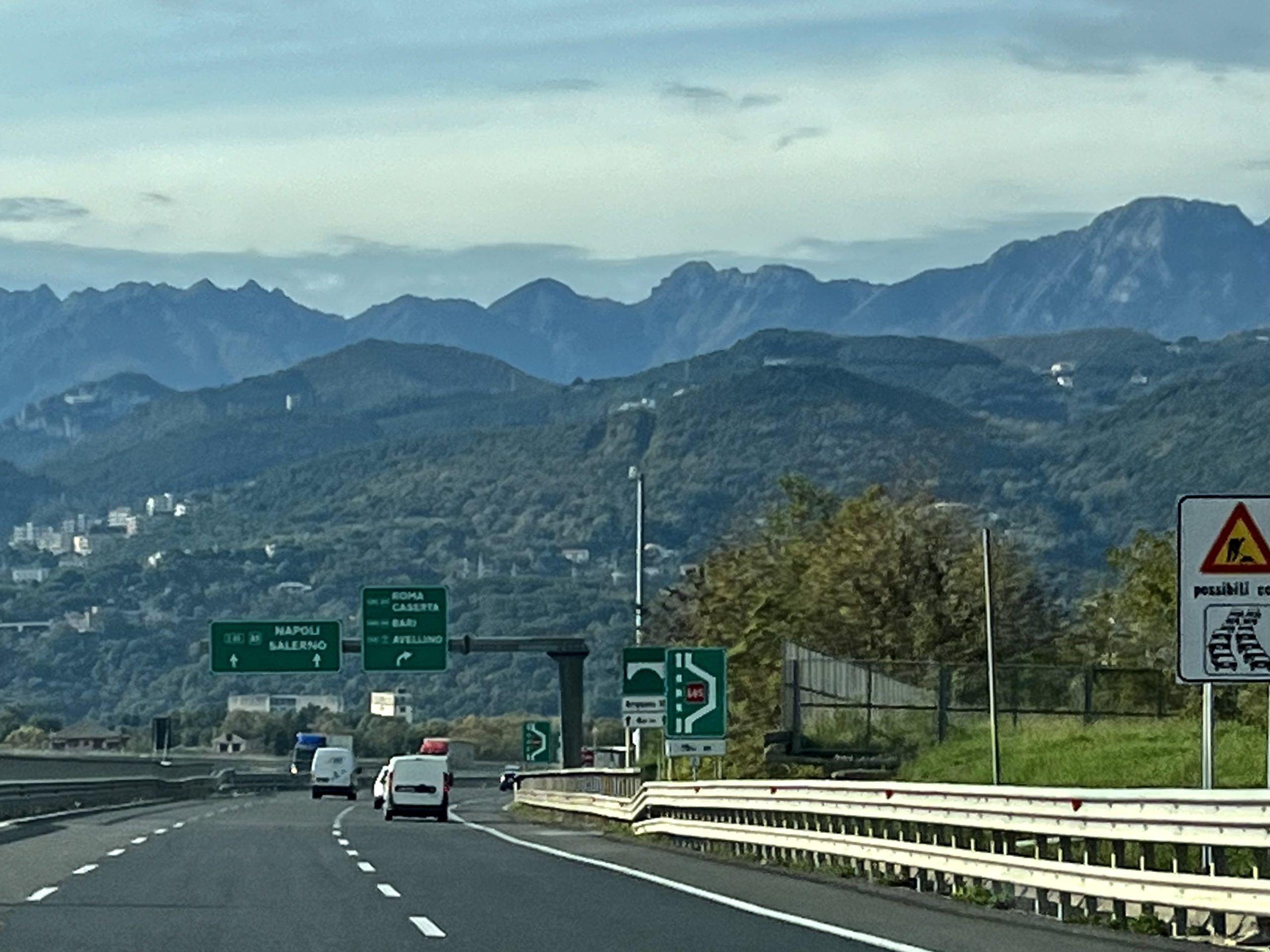
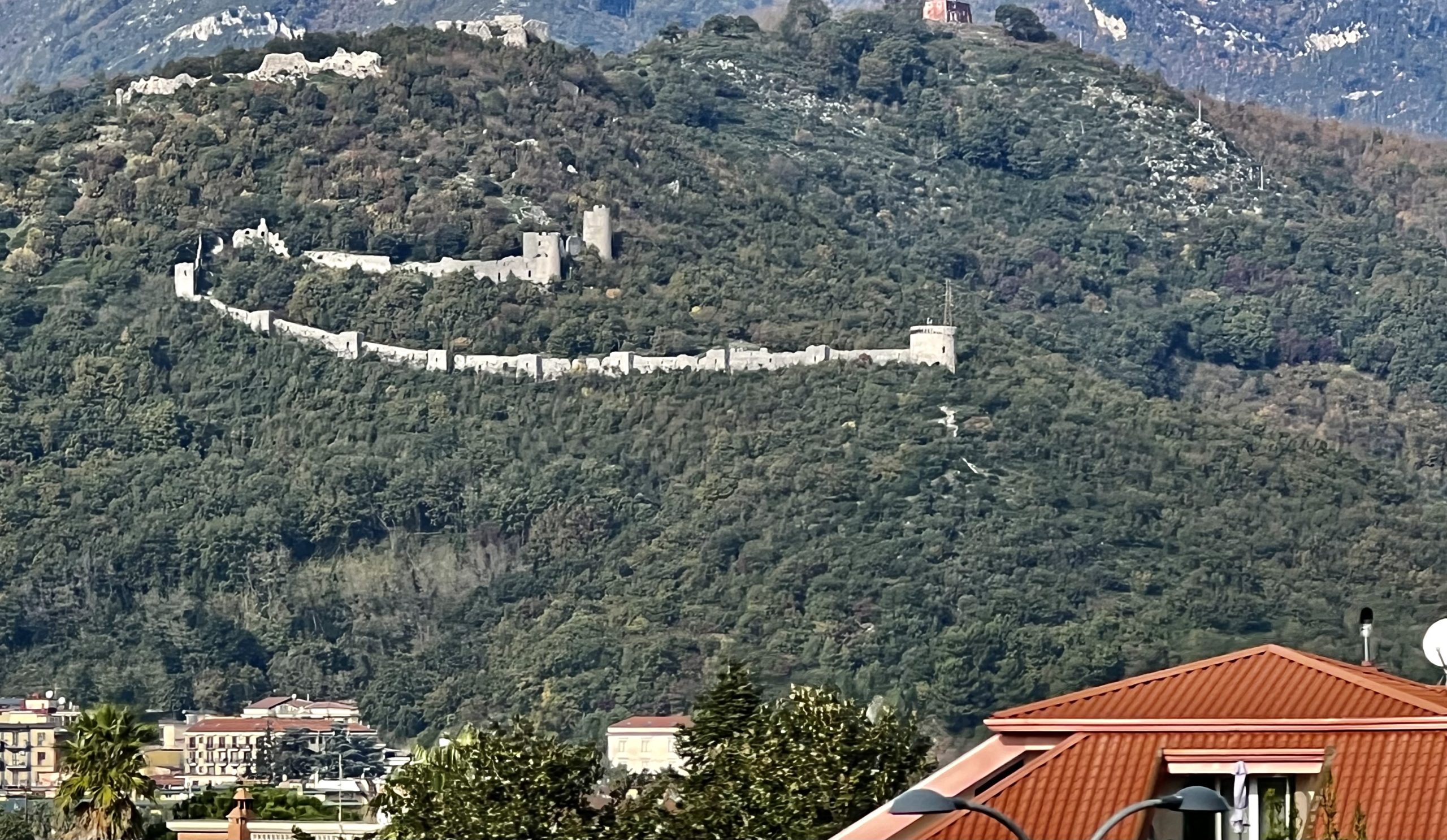
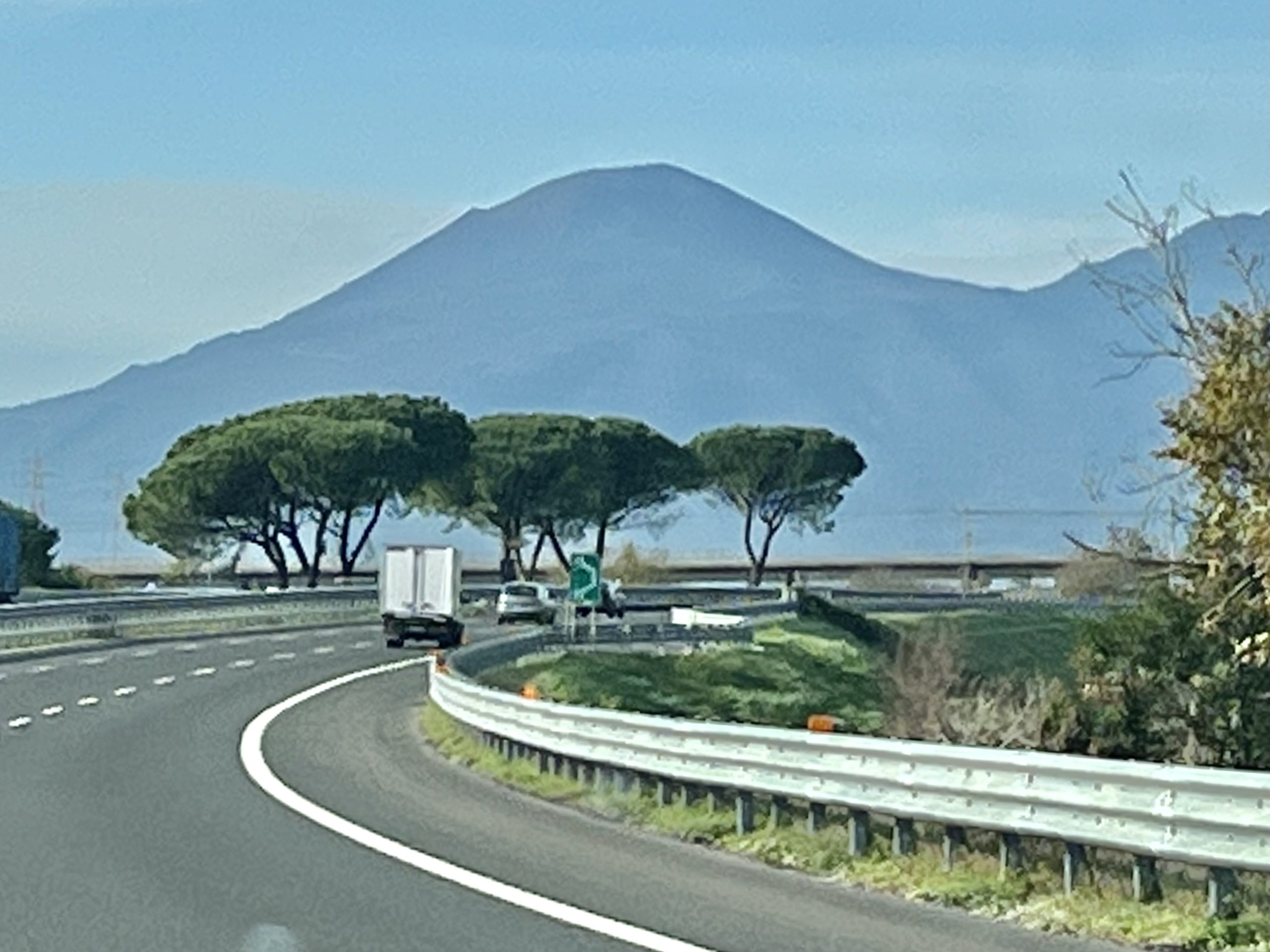
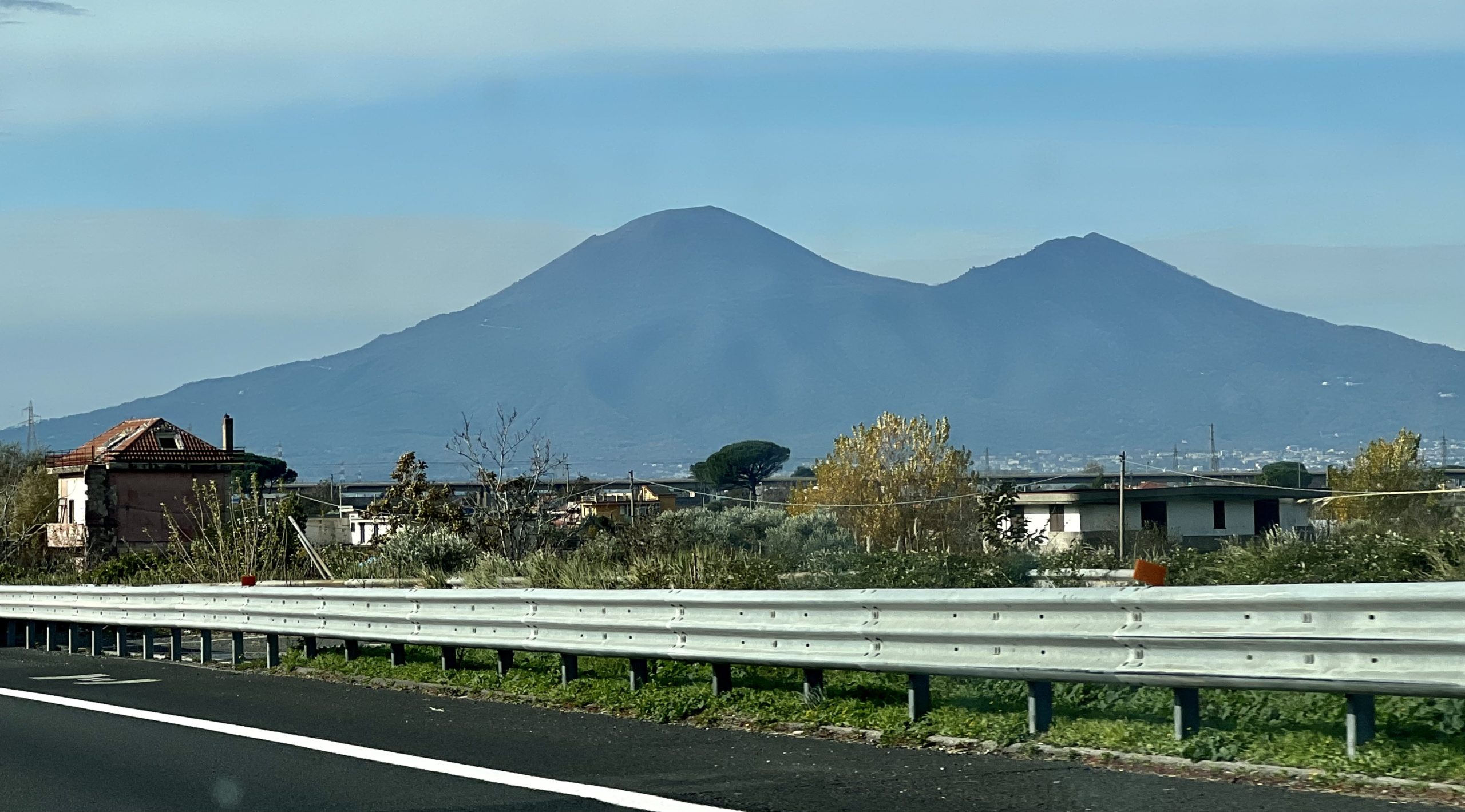
Last Lunch on the Autostrada
Our last lunch on the autostrada. These stops have not disappointed for a quick quality meal.
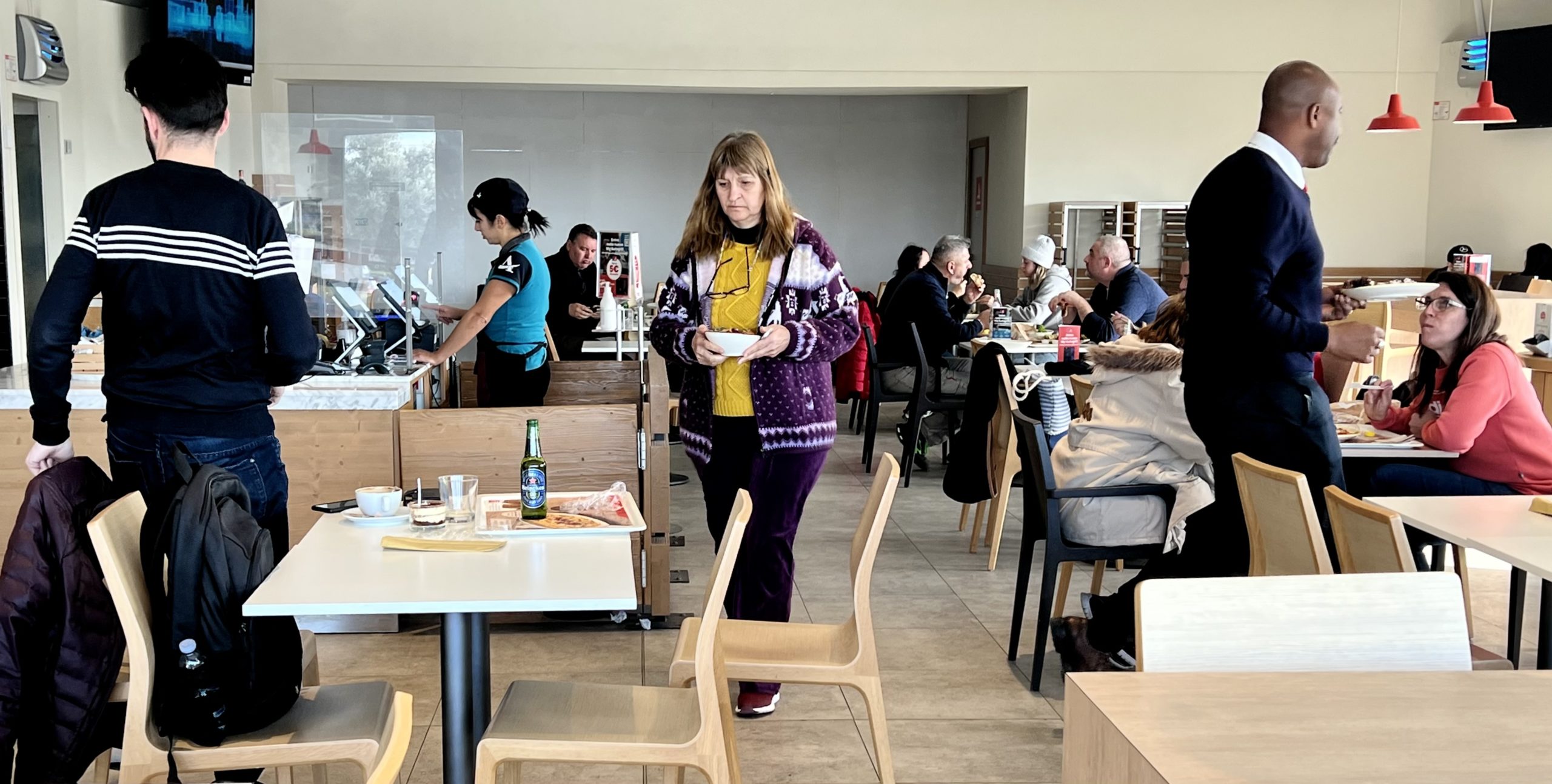
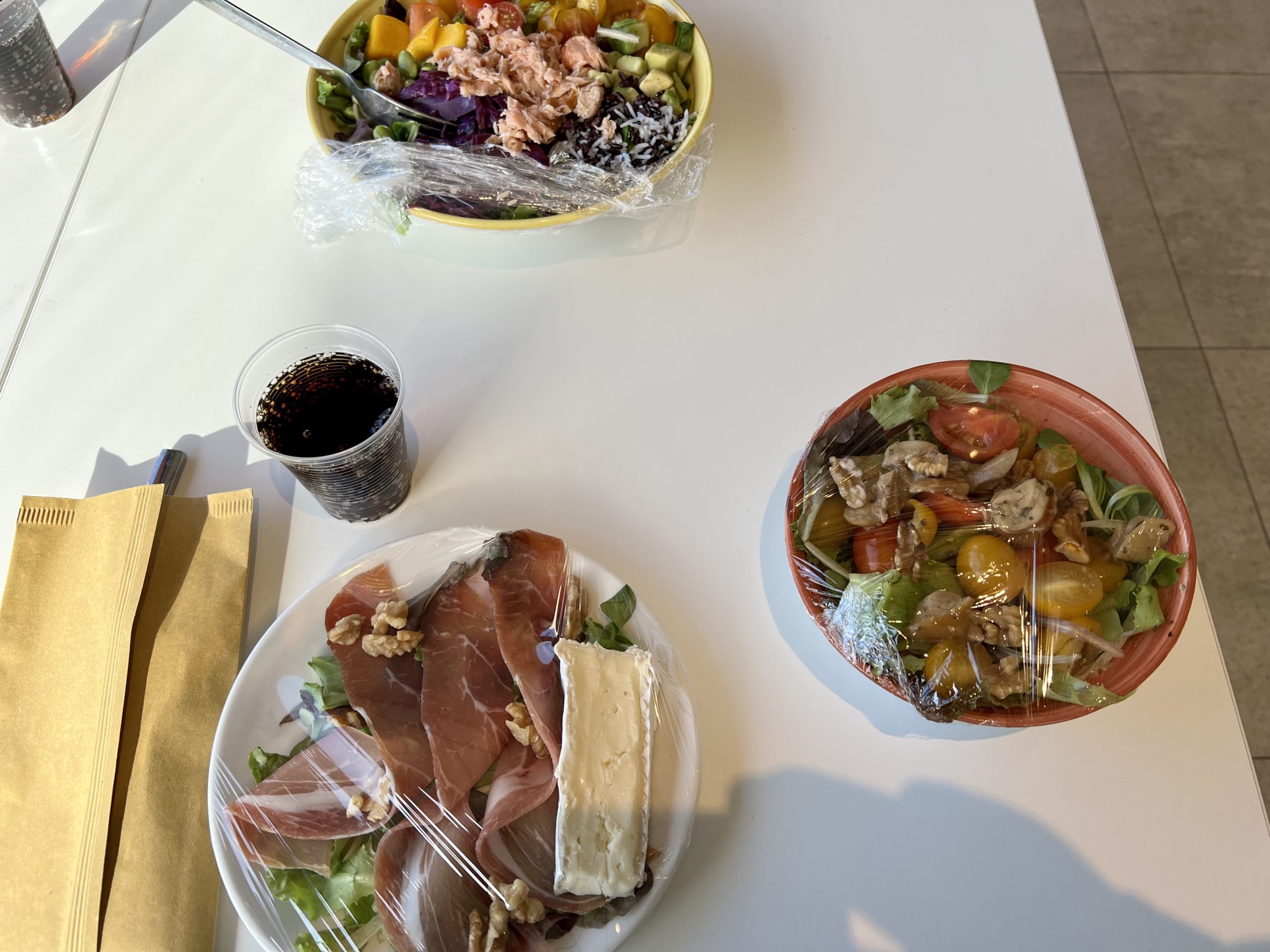

Fascinating!